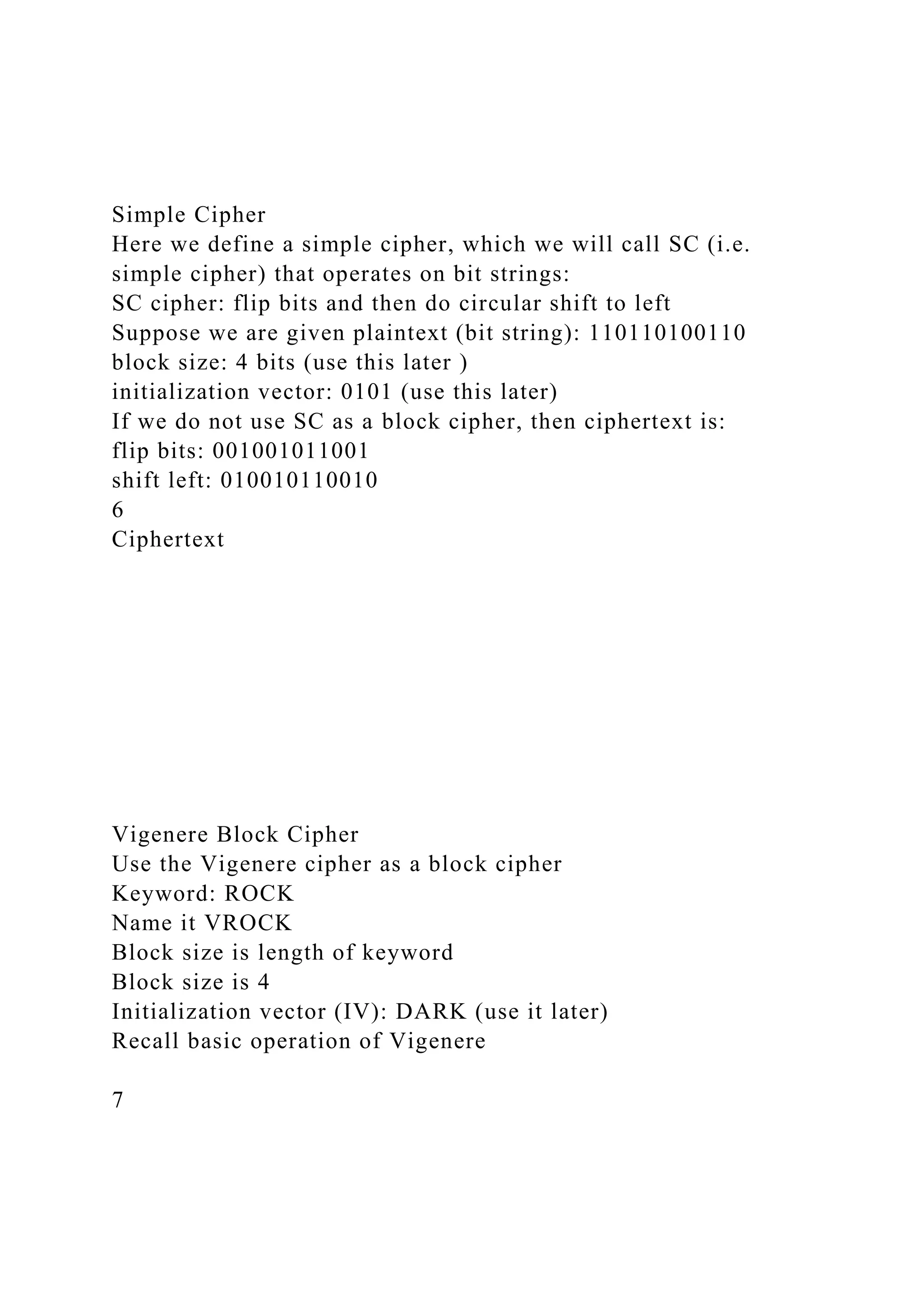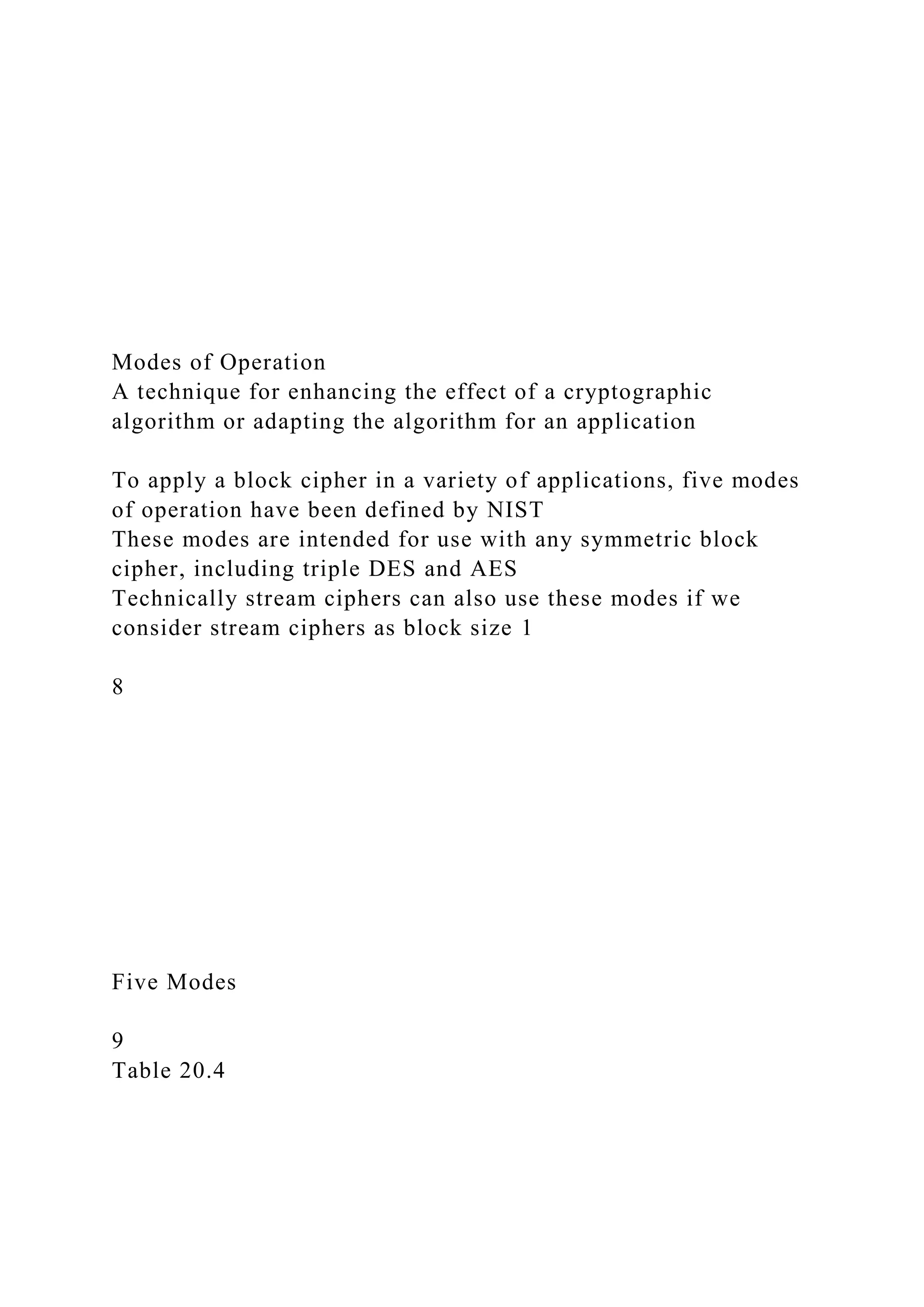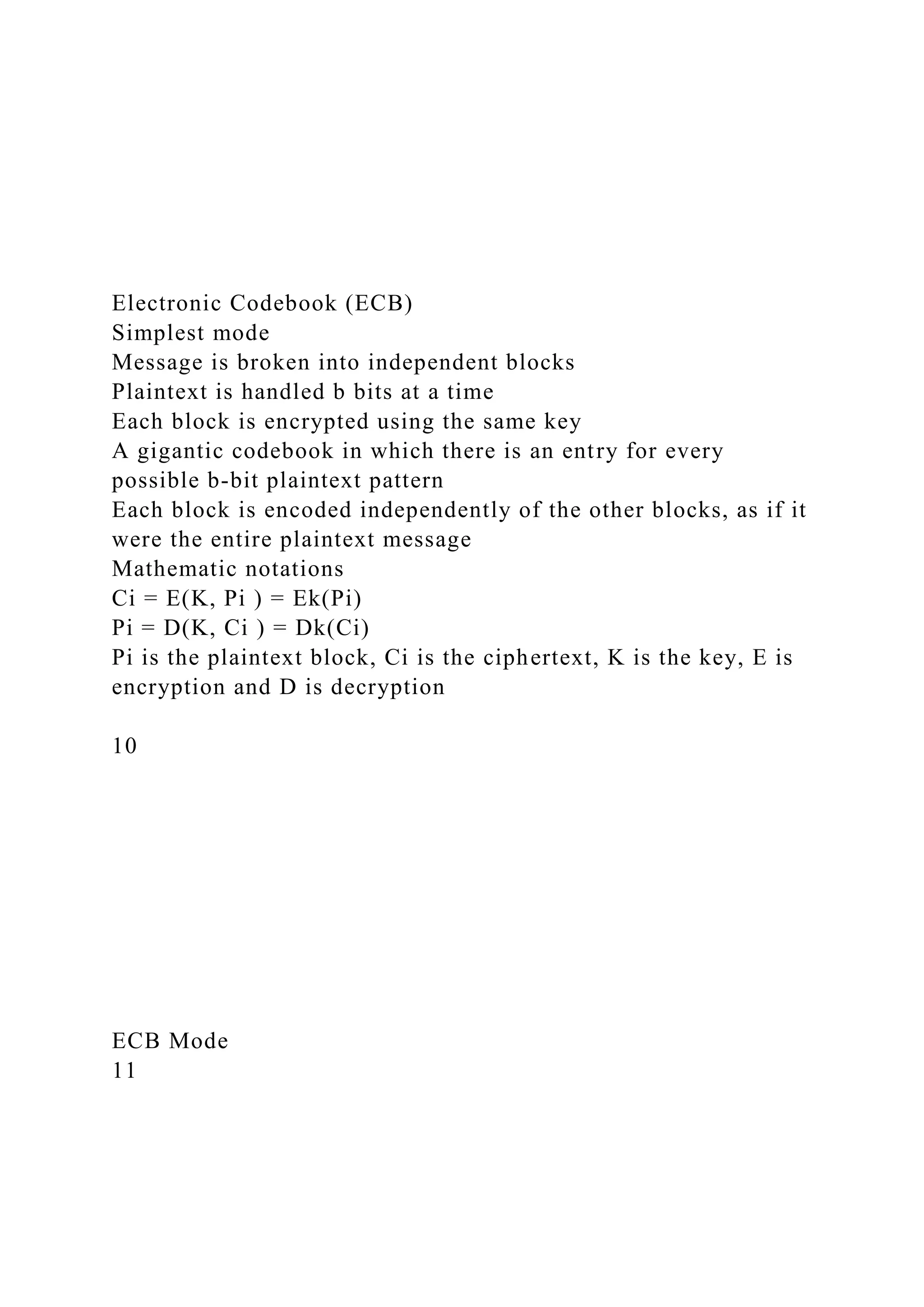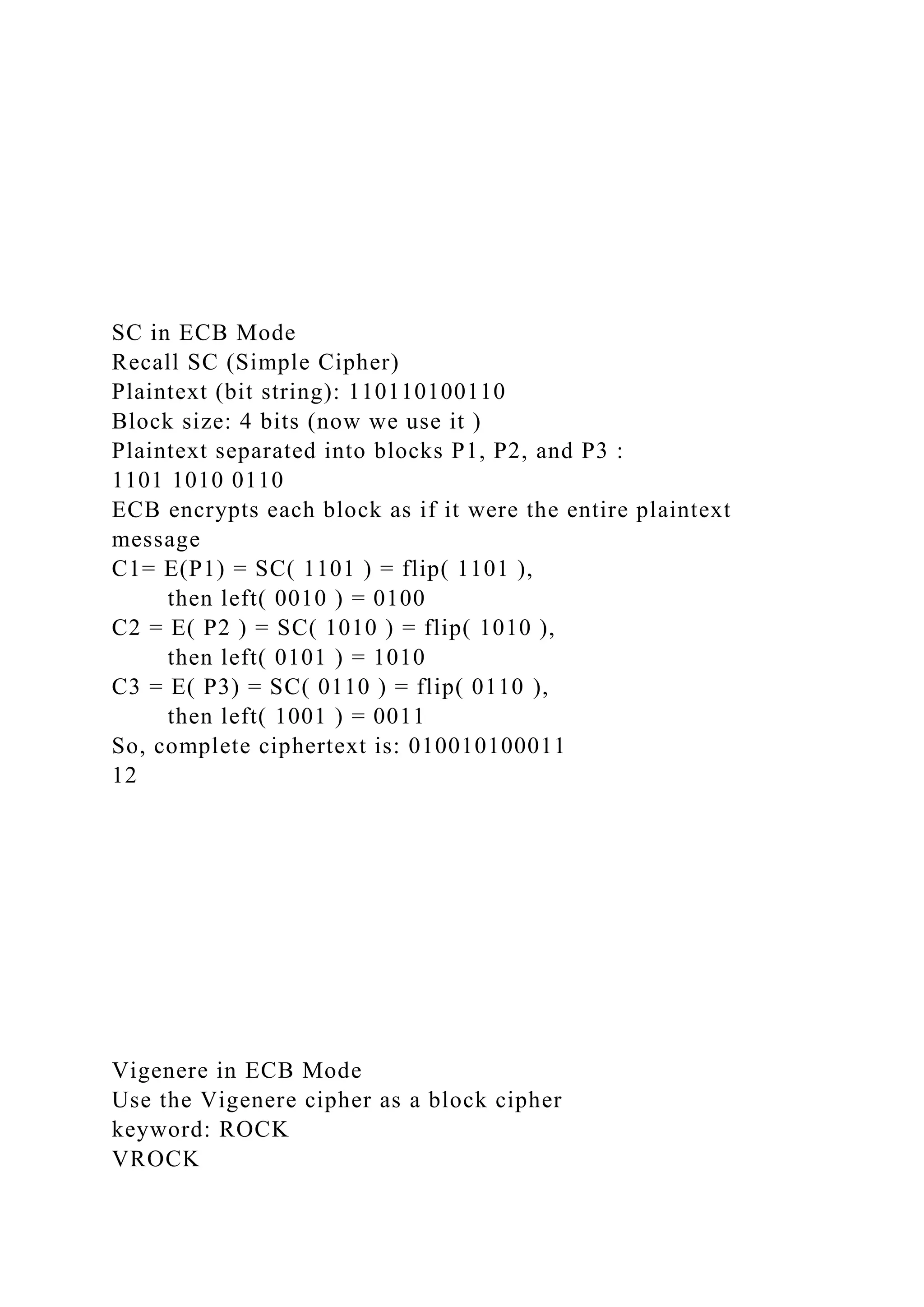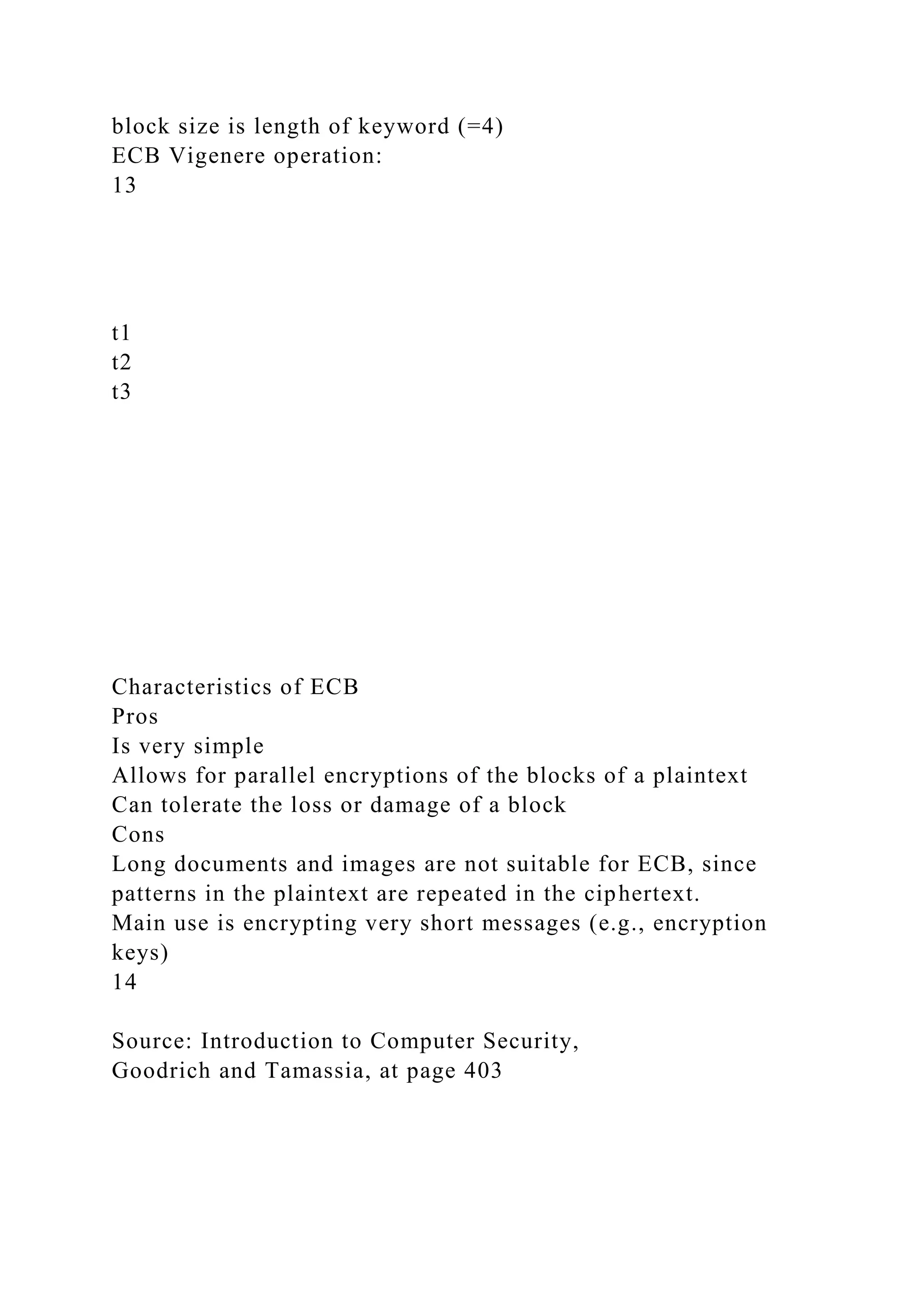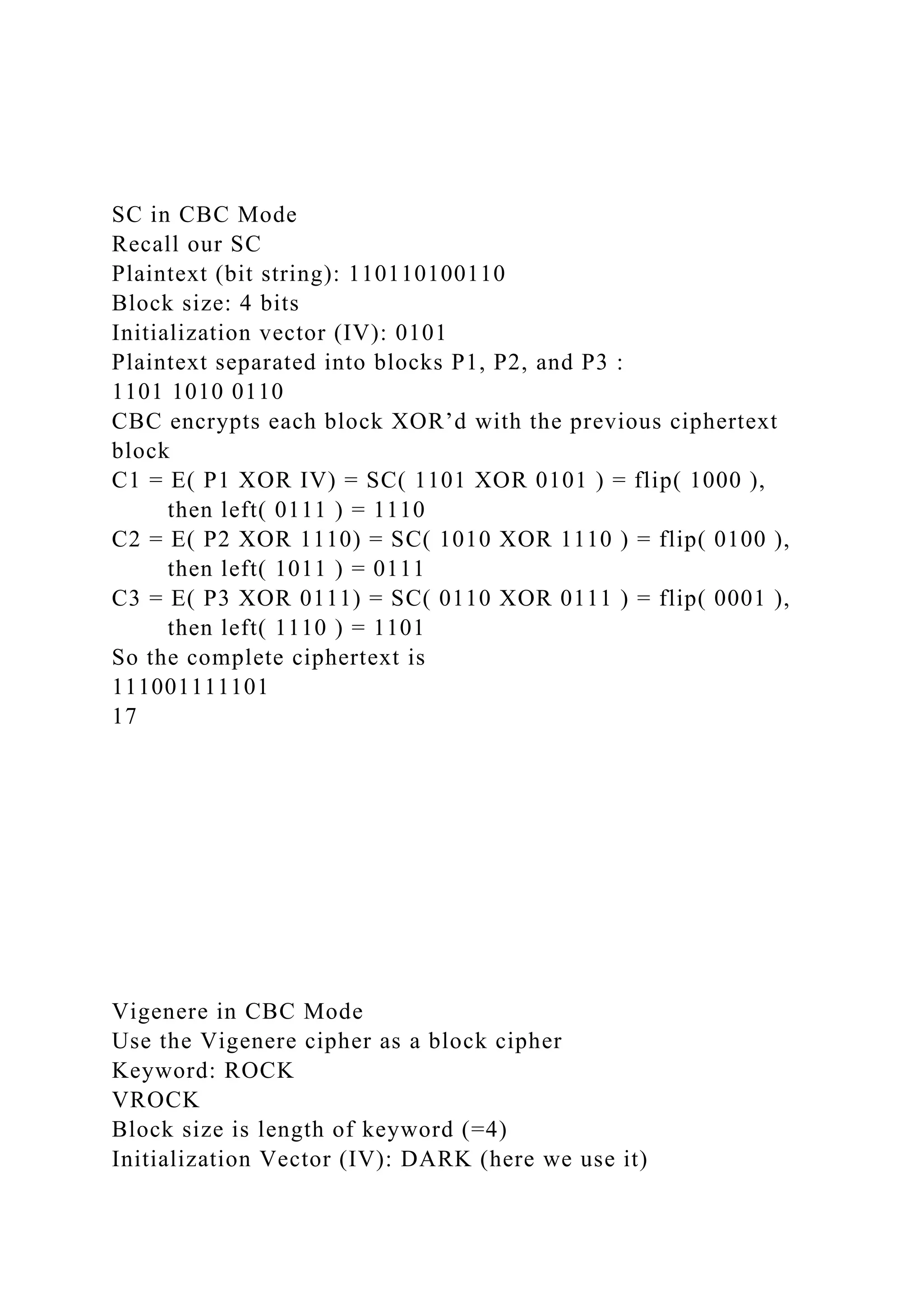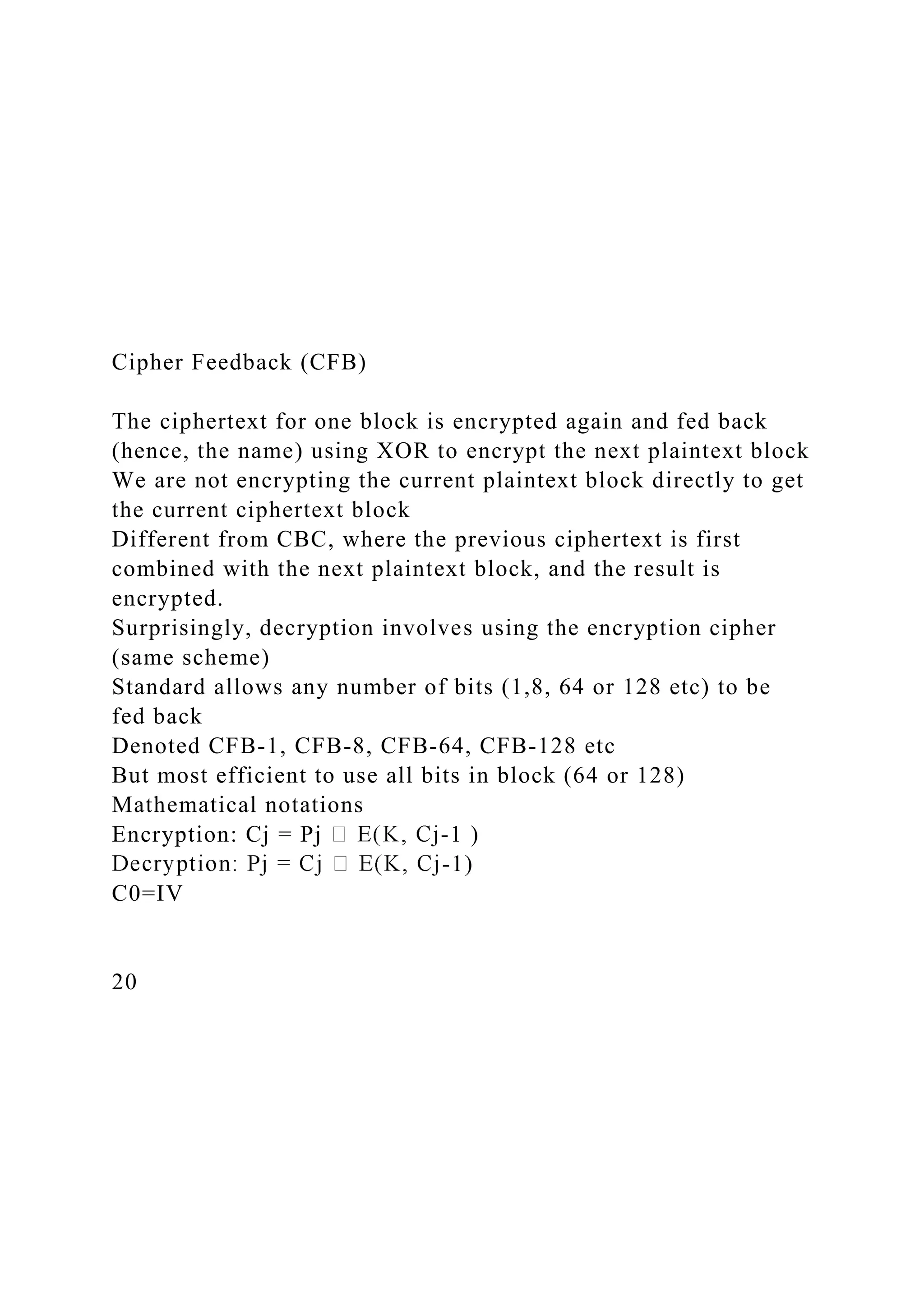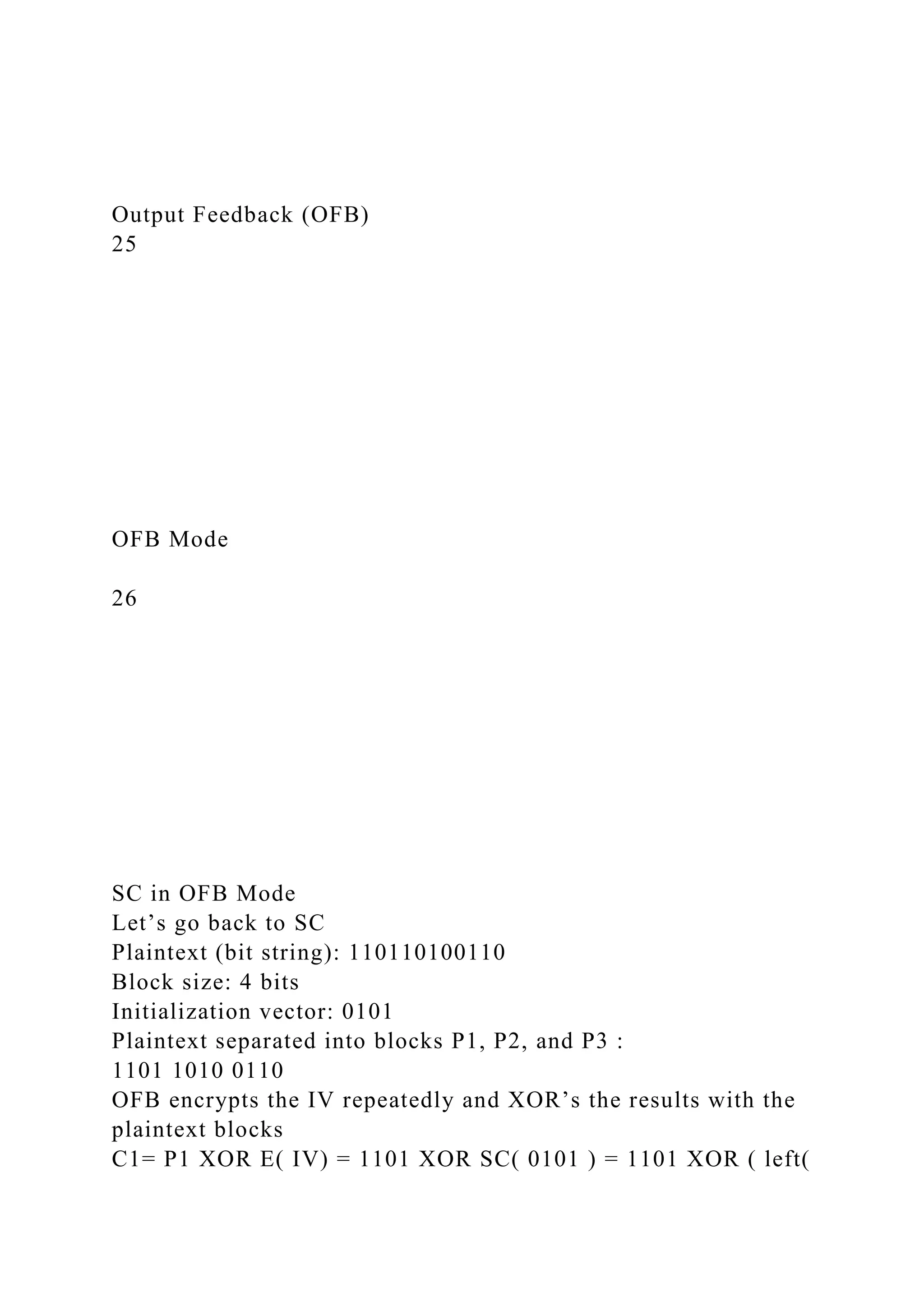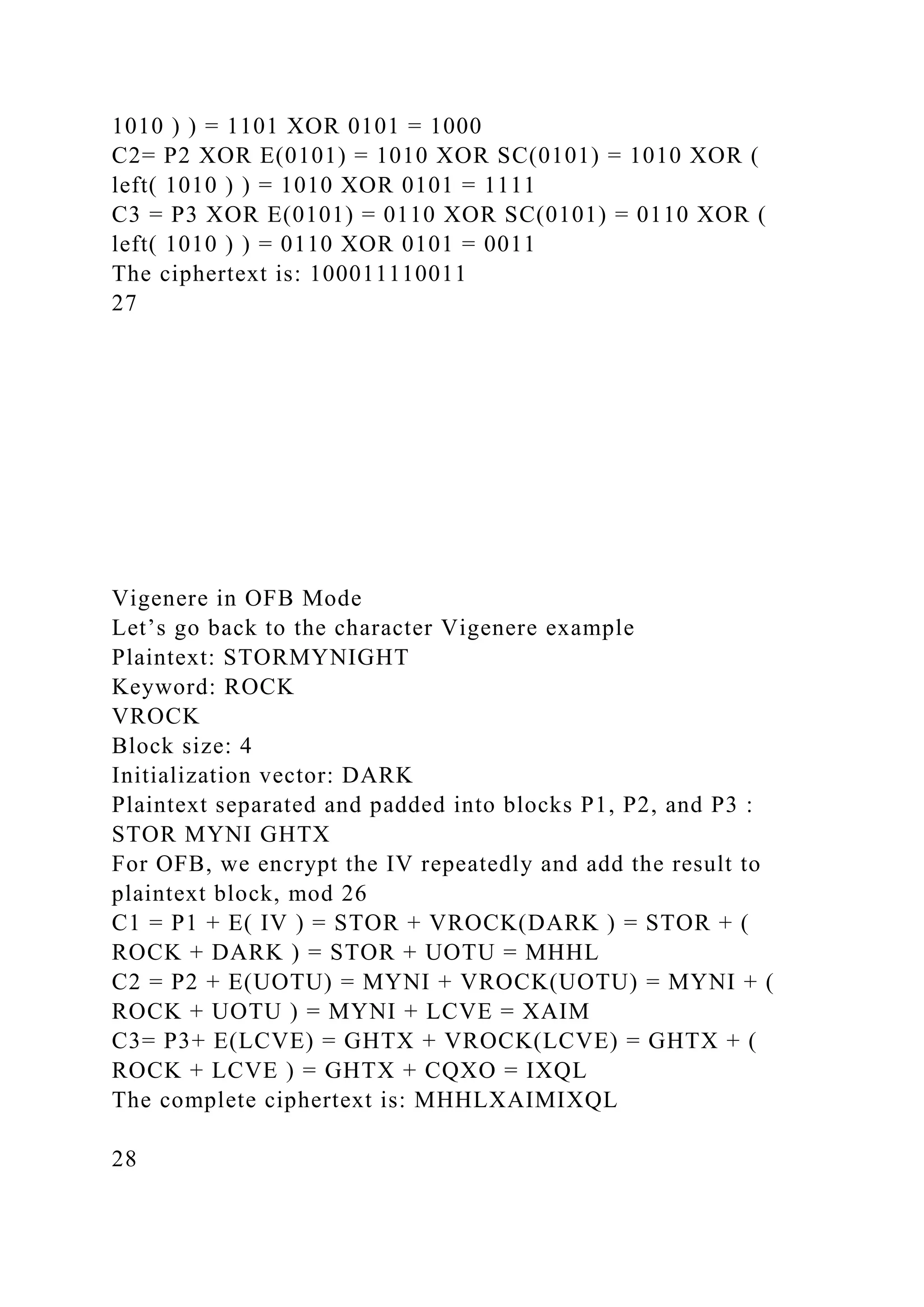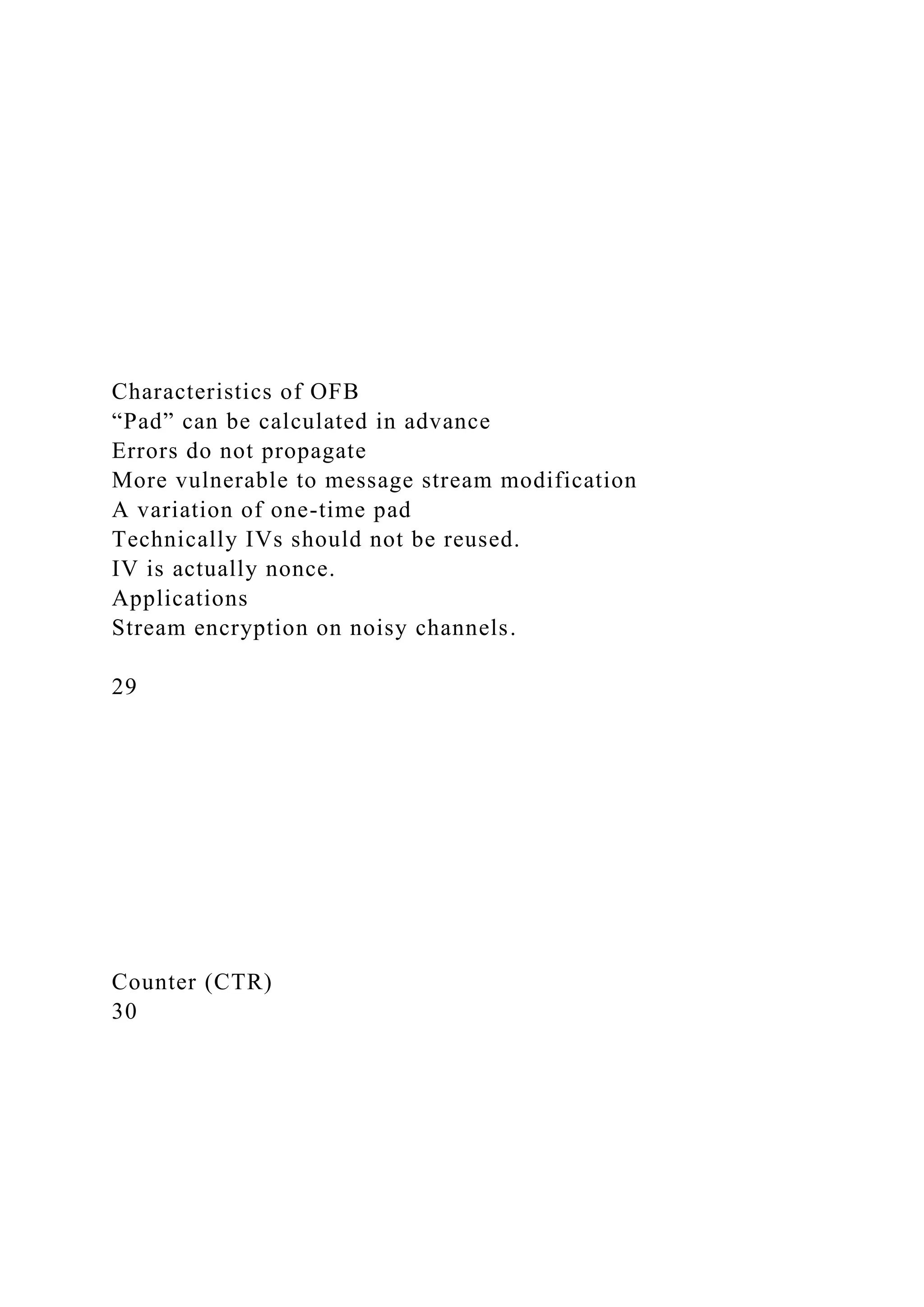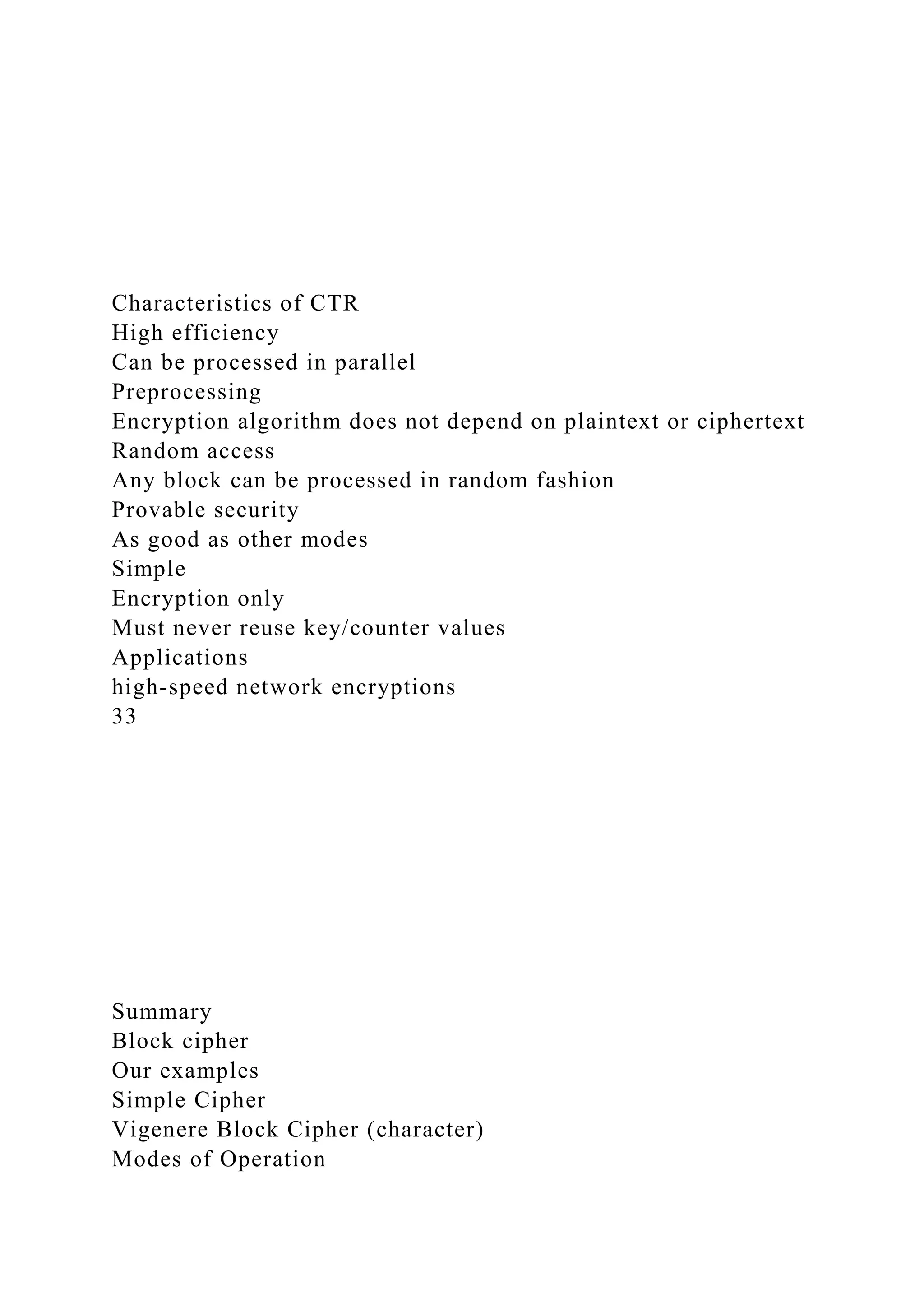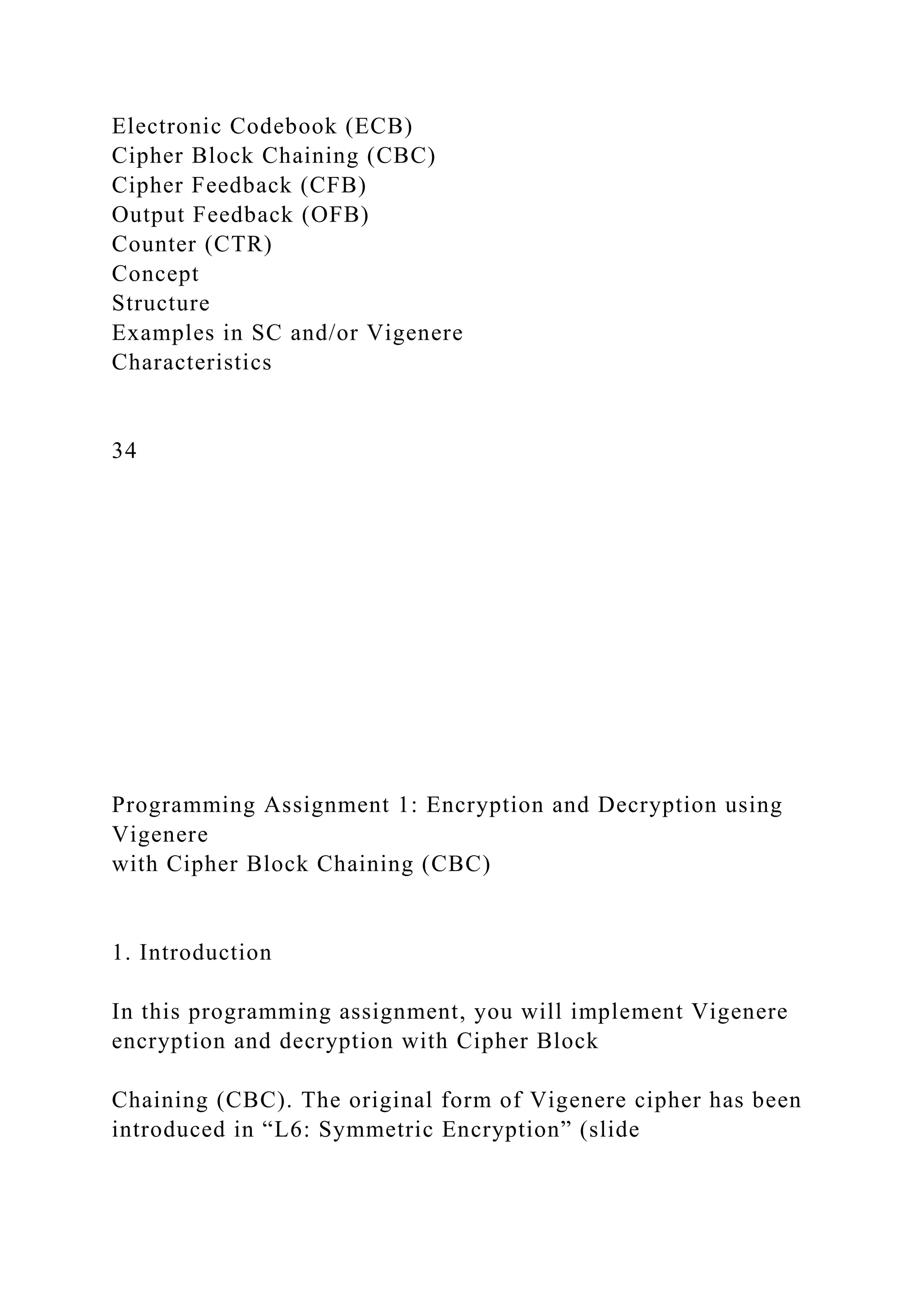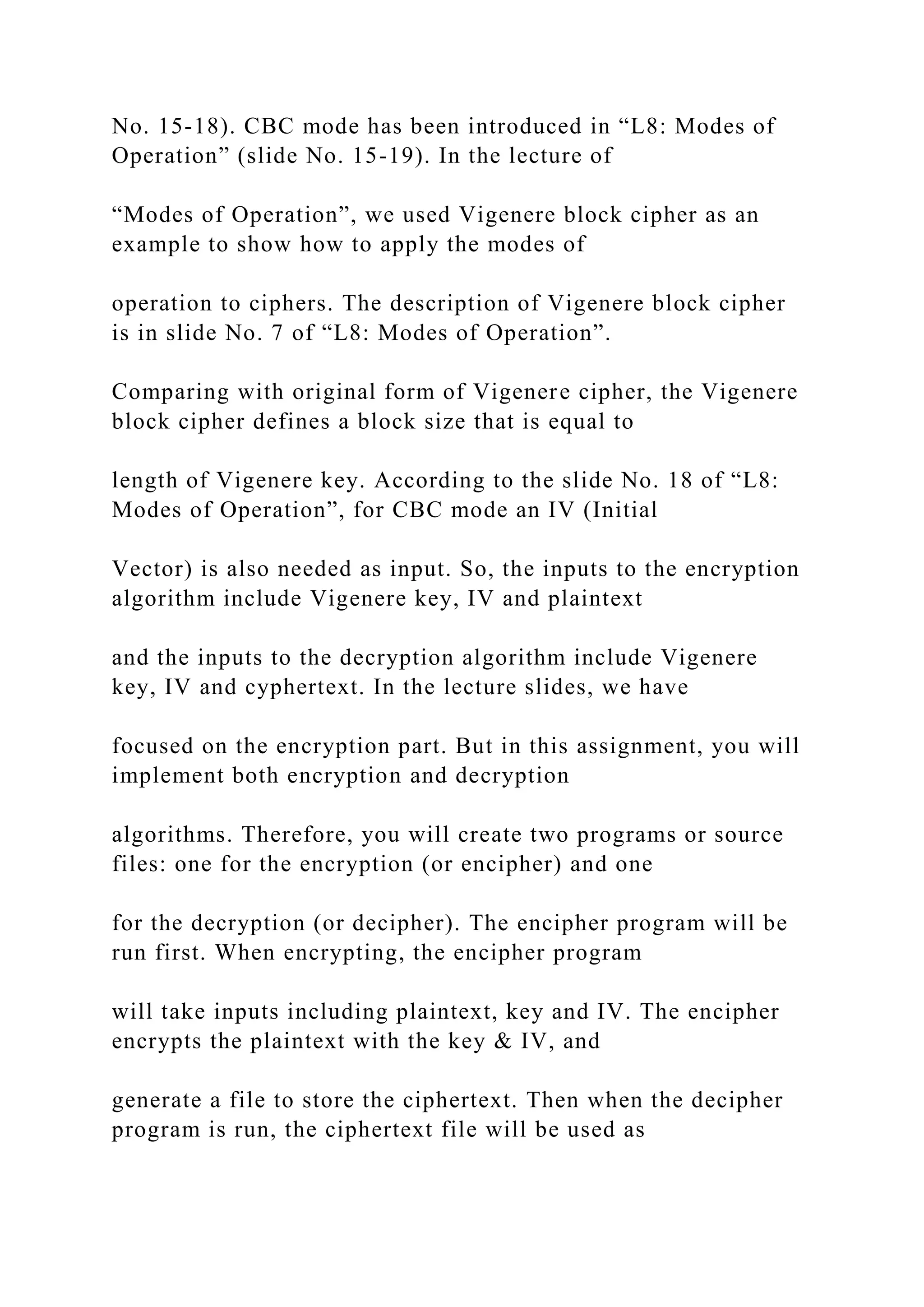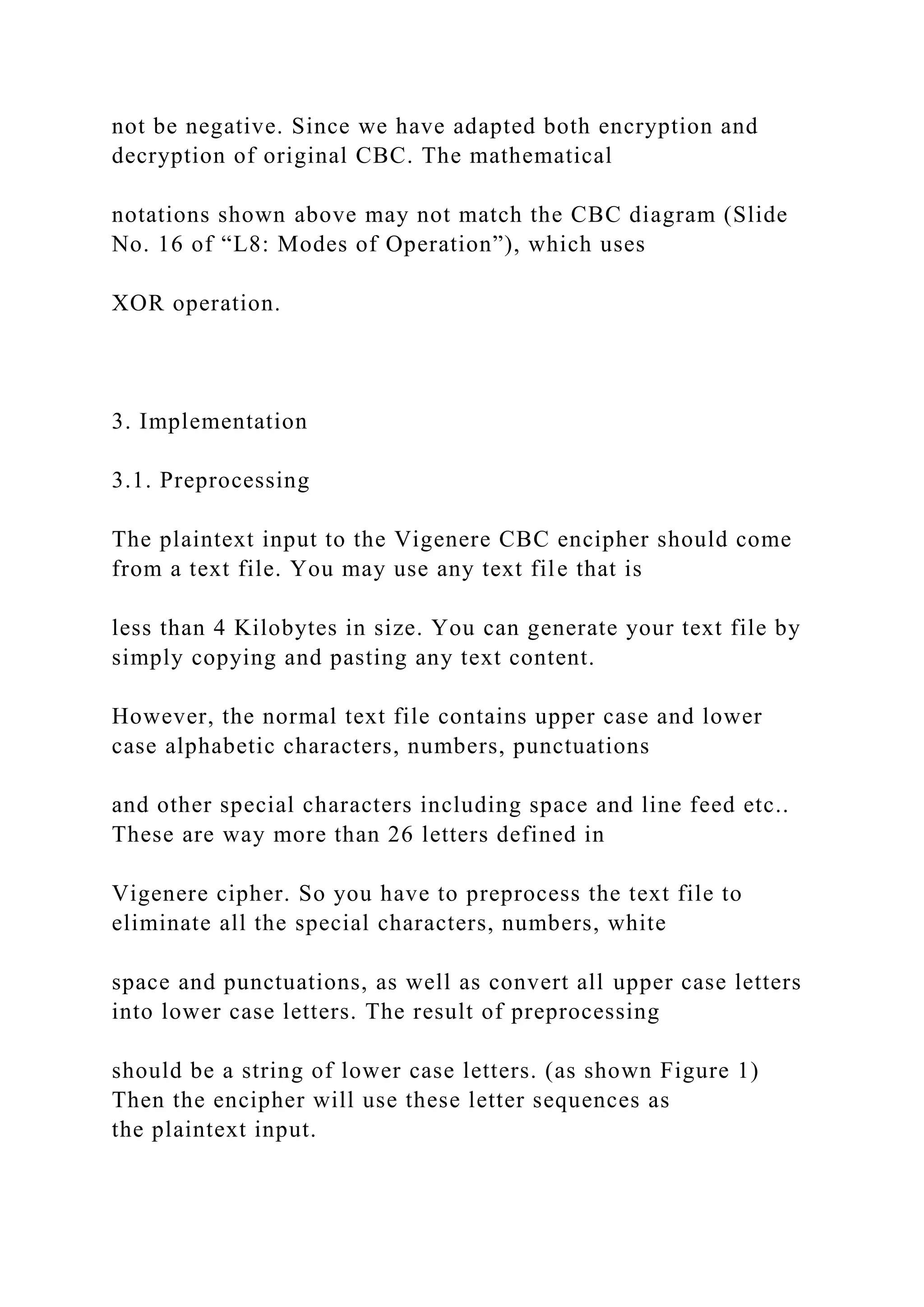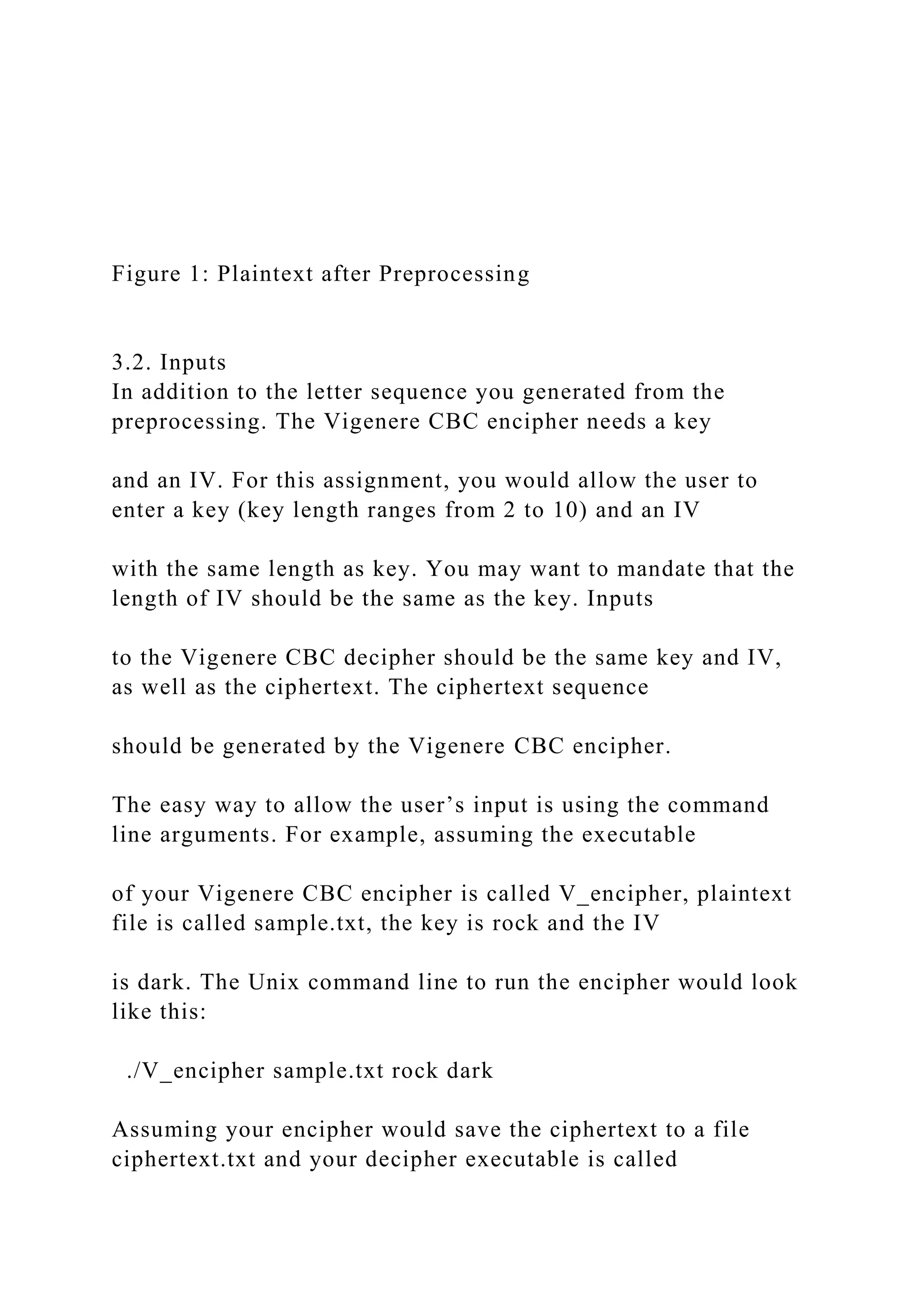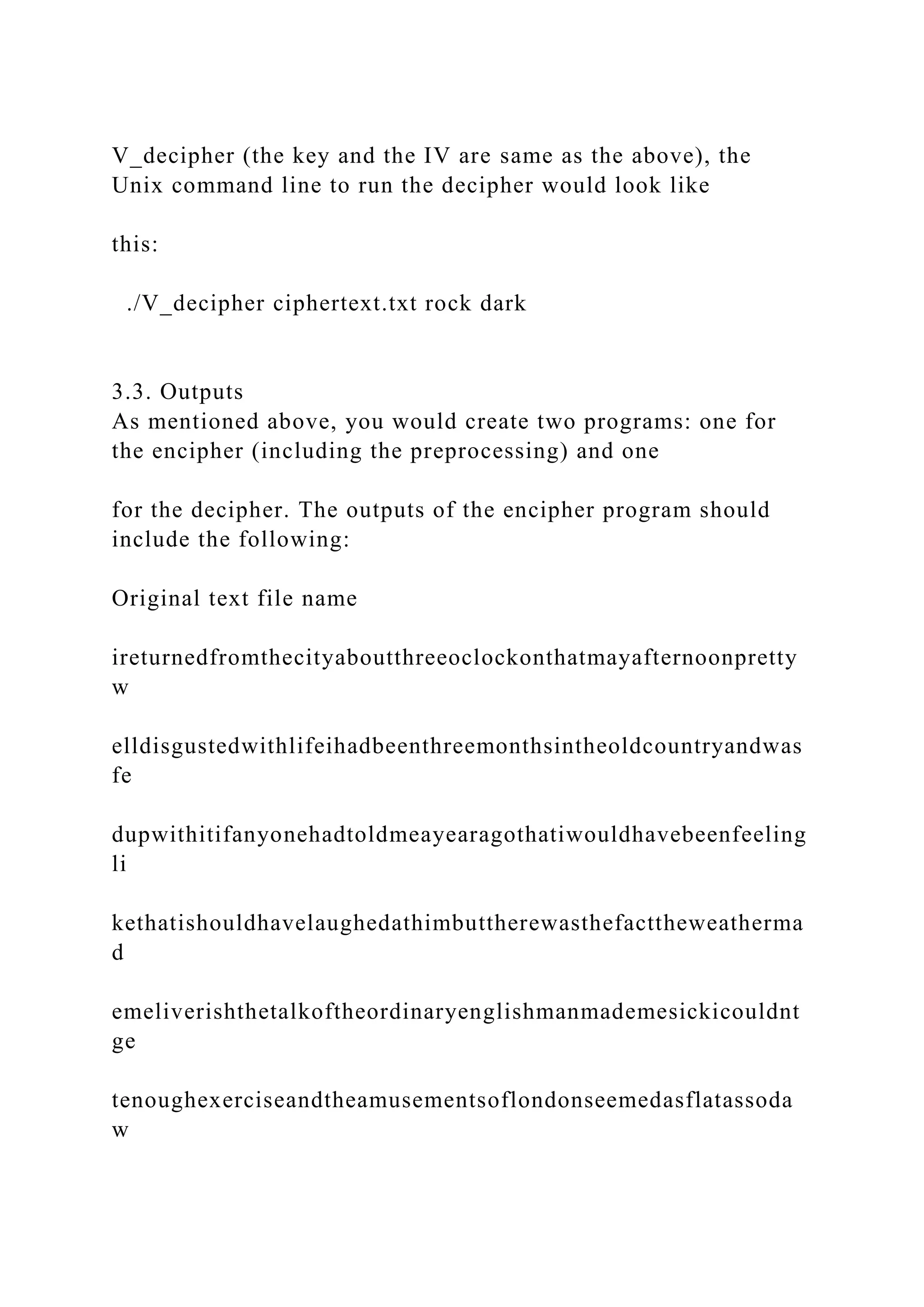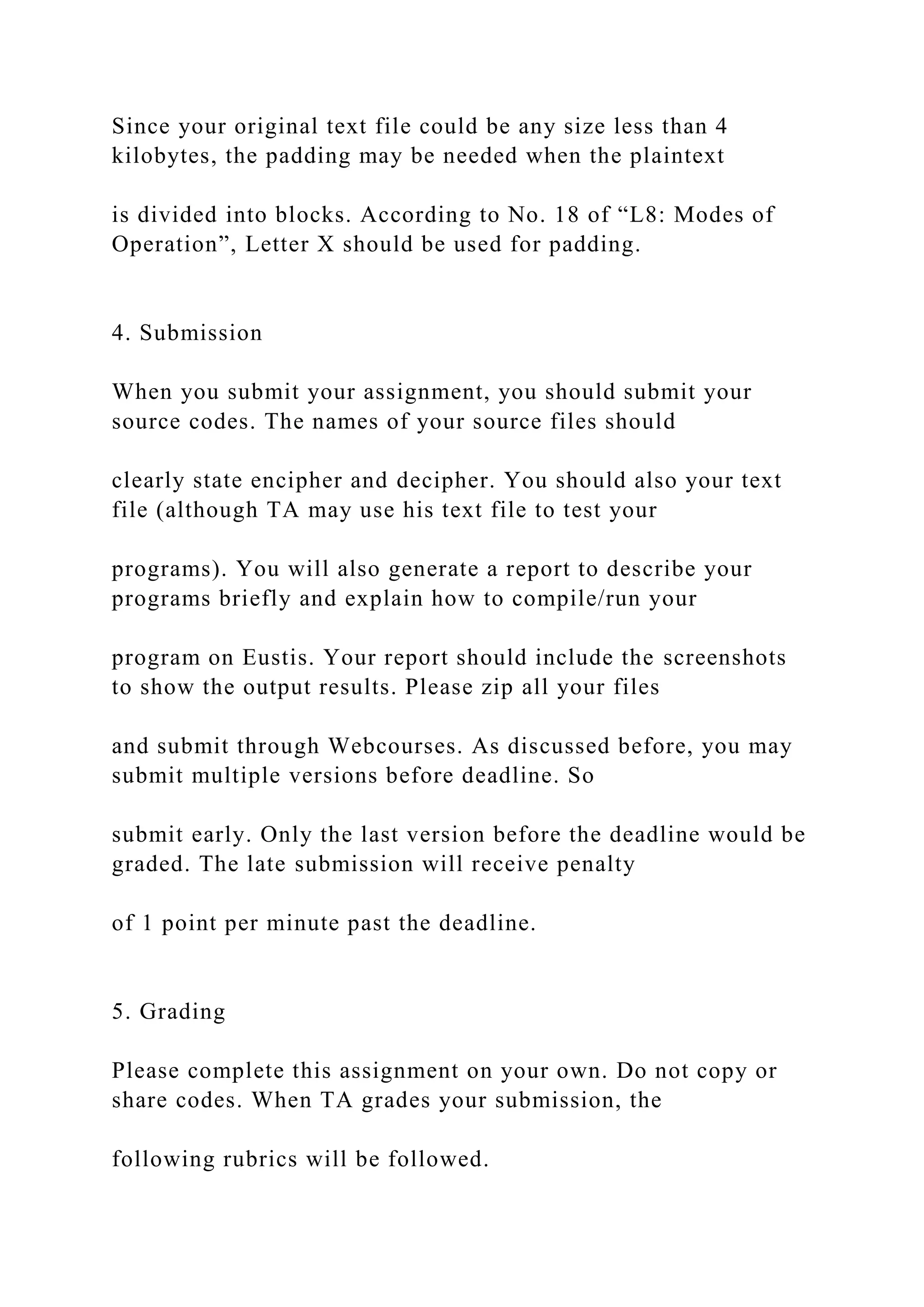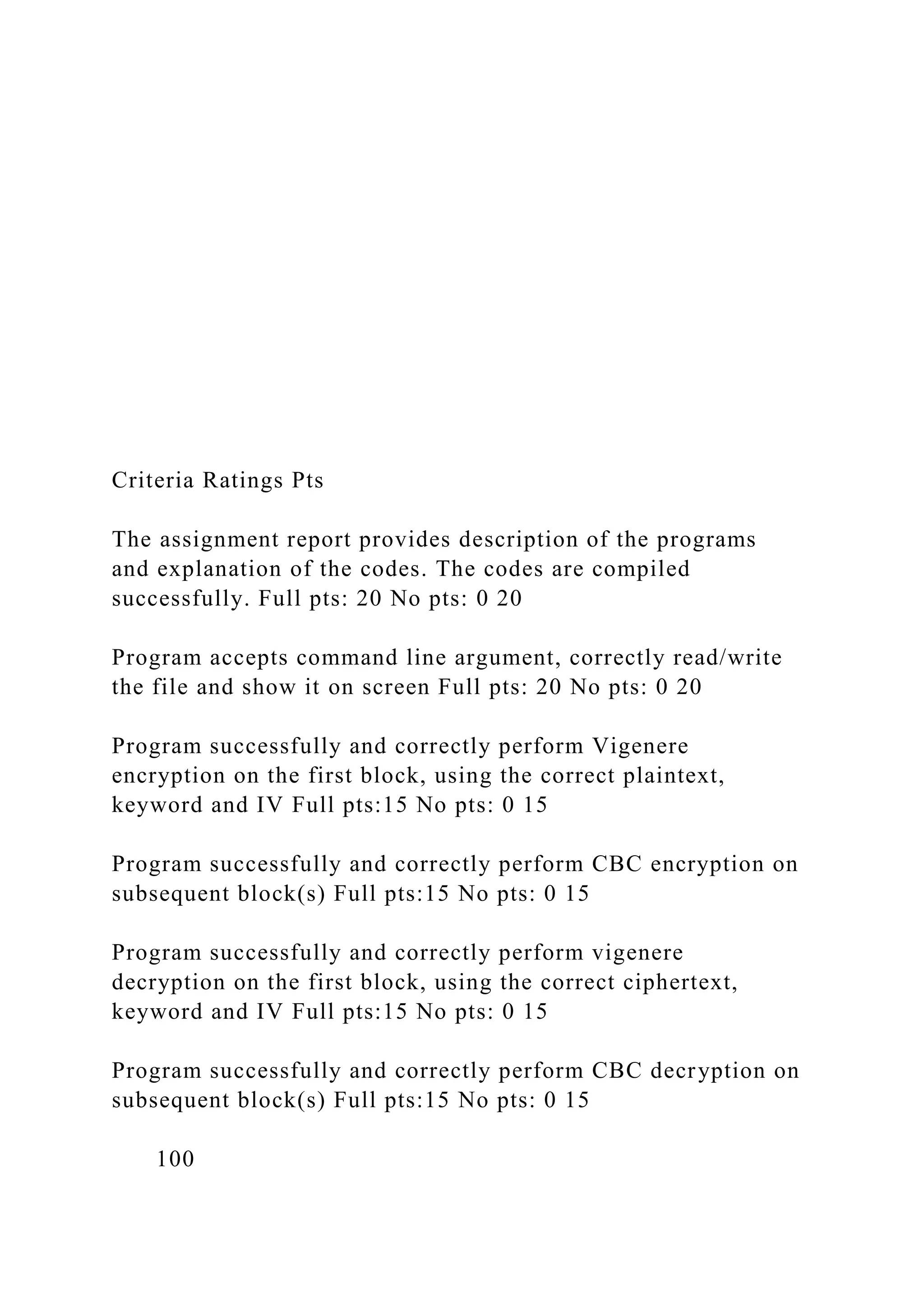This document outlines fundamental concepts of computer security, focusing on the CIA triad: confidentiality, integrity, and availability. It discusses the challenges of implementing security measures, the categories of vulnerabilities and threats, as well as various countermeasures and strategies to protect computer systems. Additionally, it covers modular arithmetic, including definitions, properties, and examples relevant to computer security.
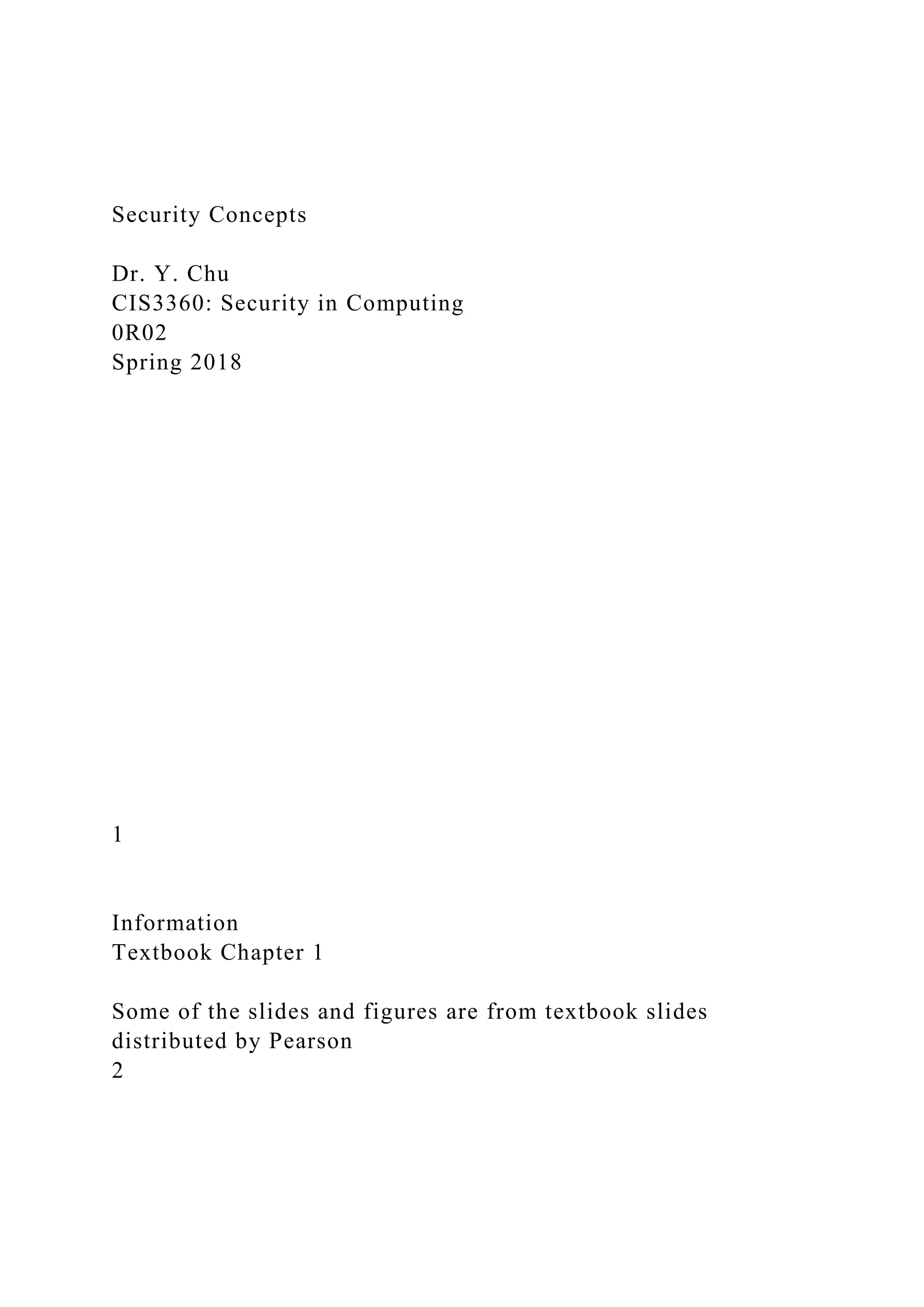
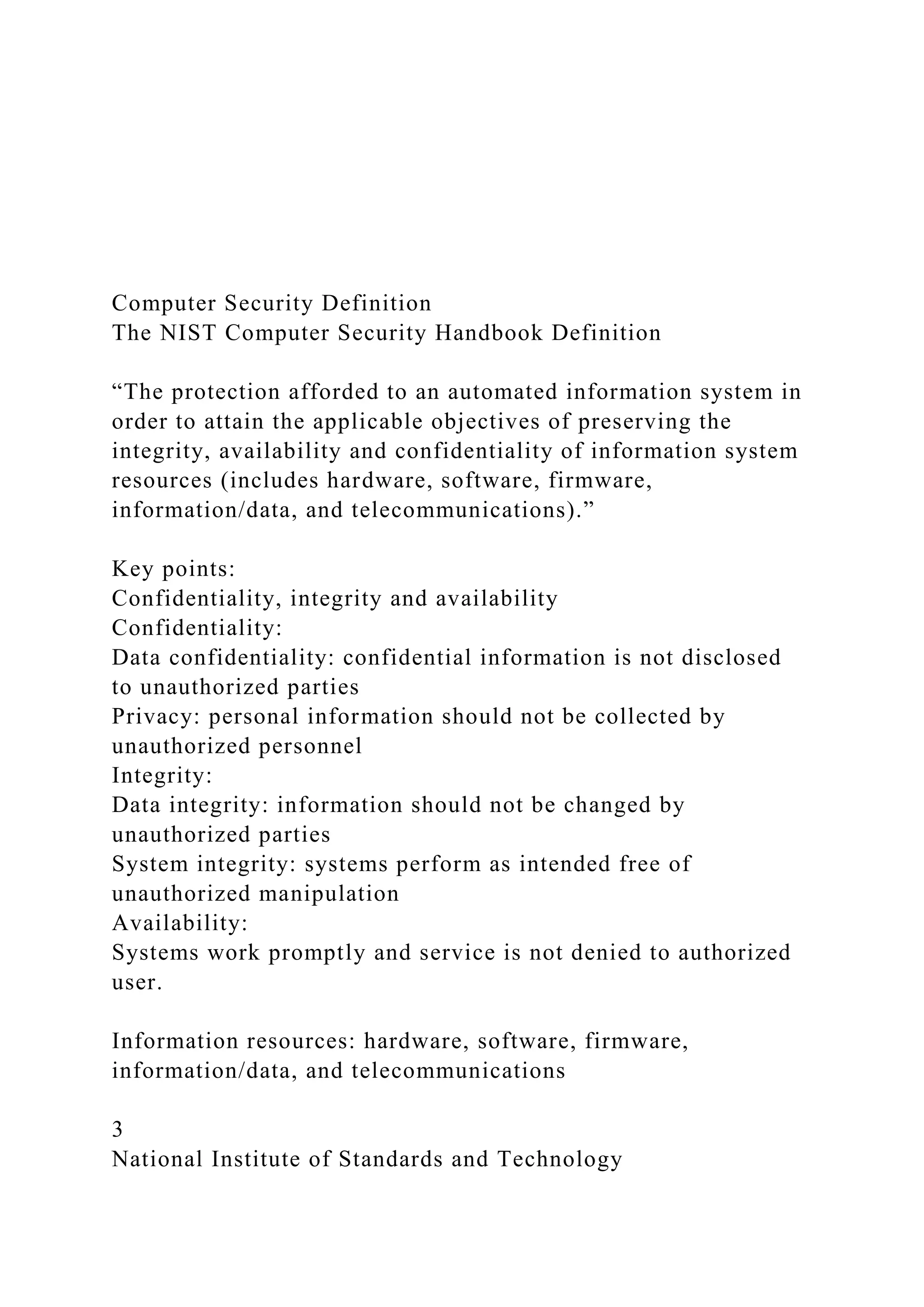
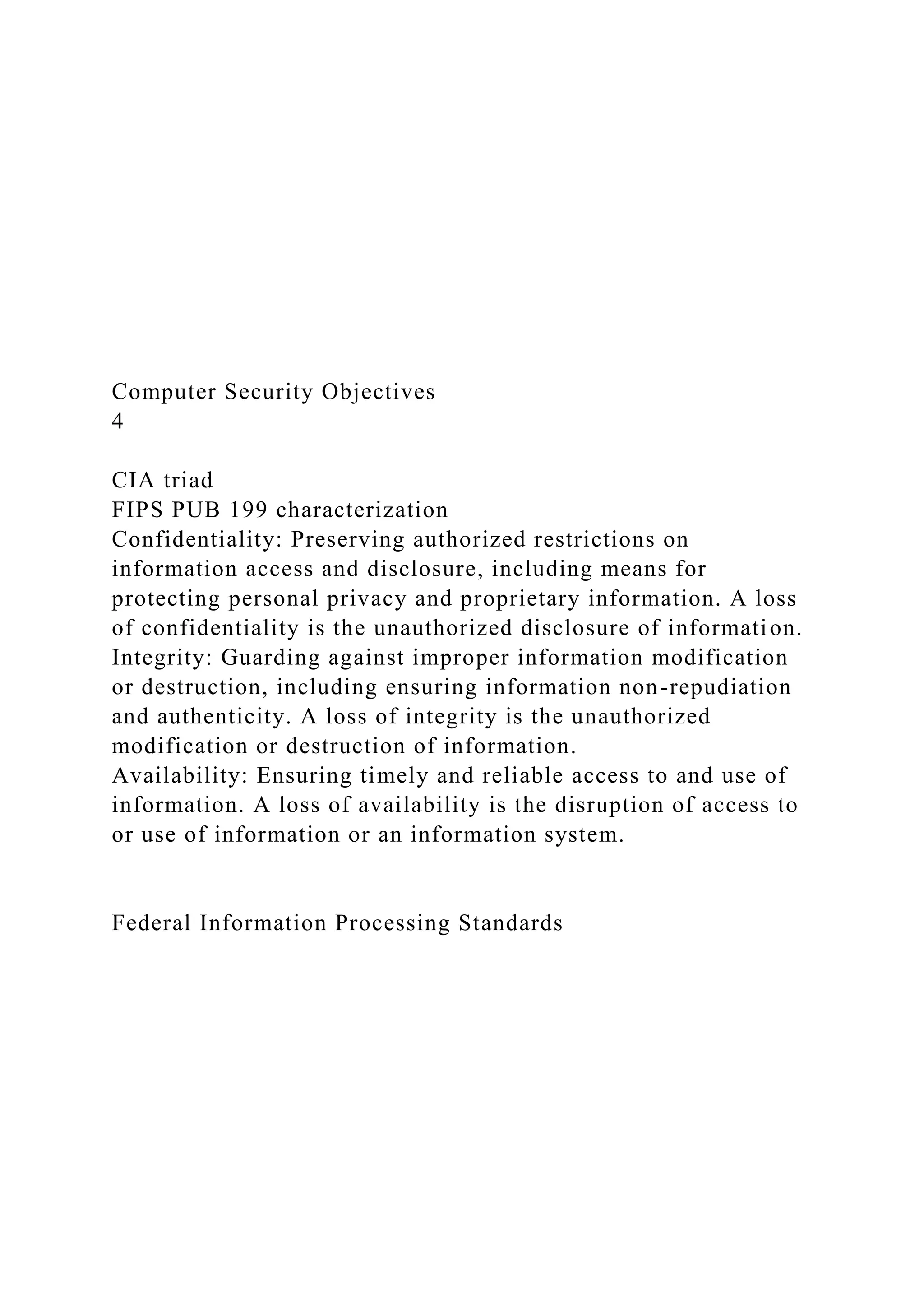
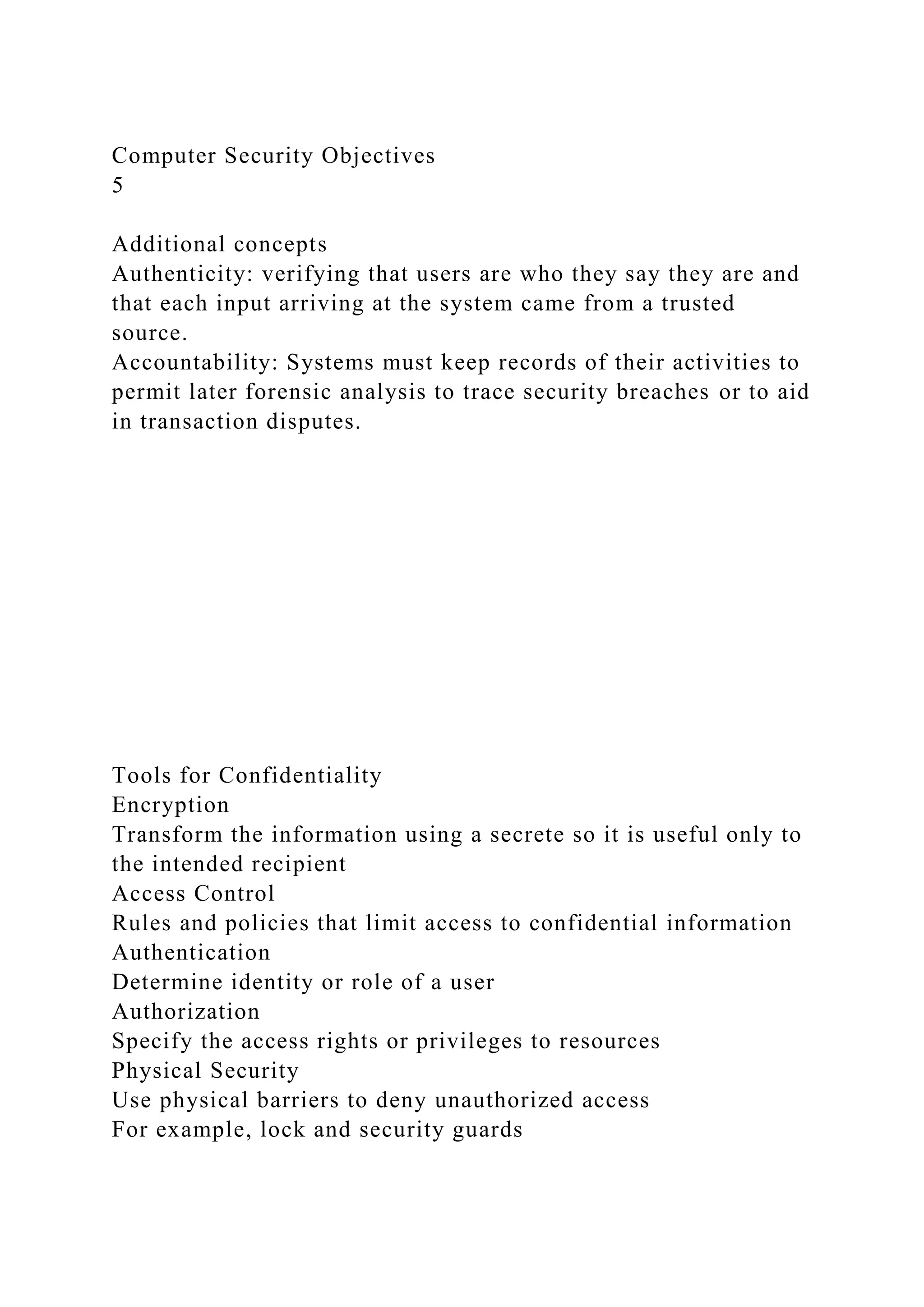
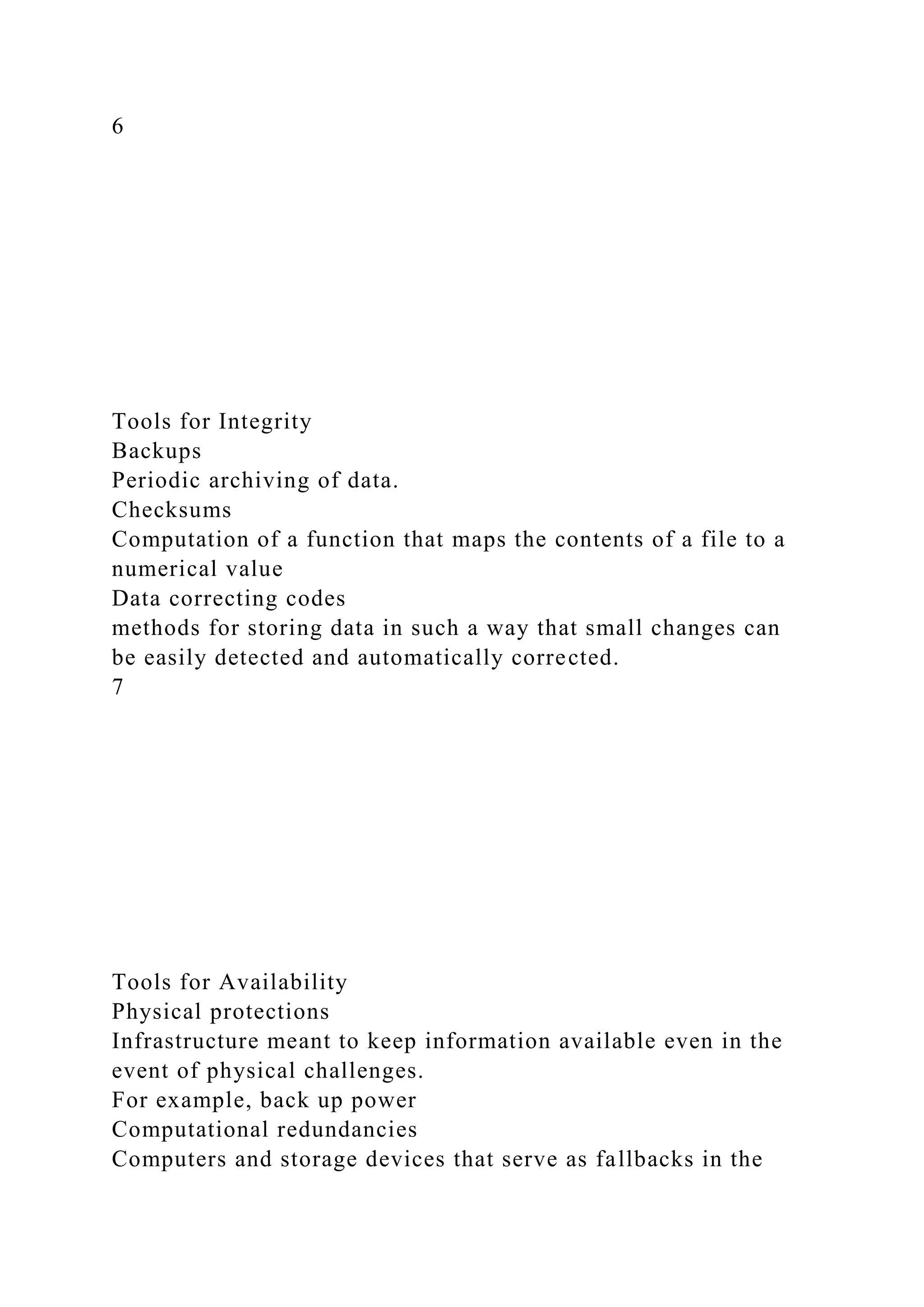

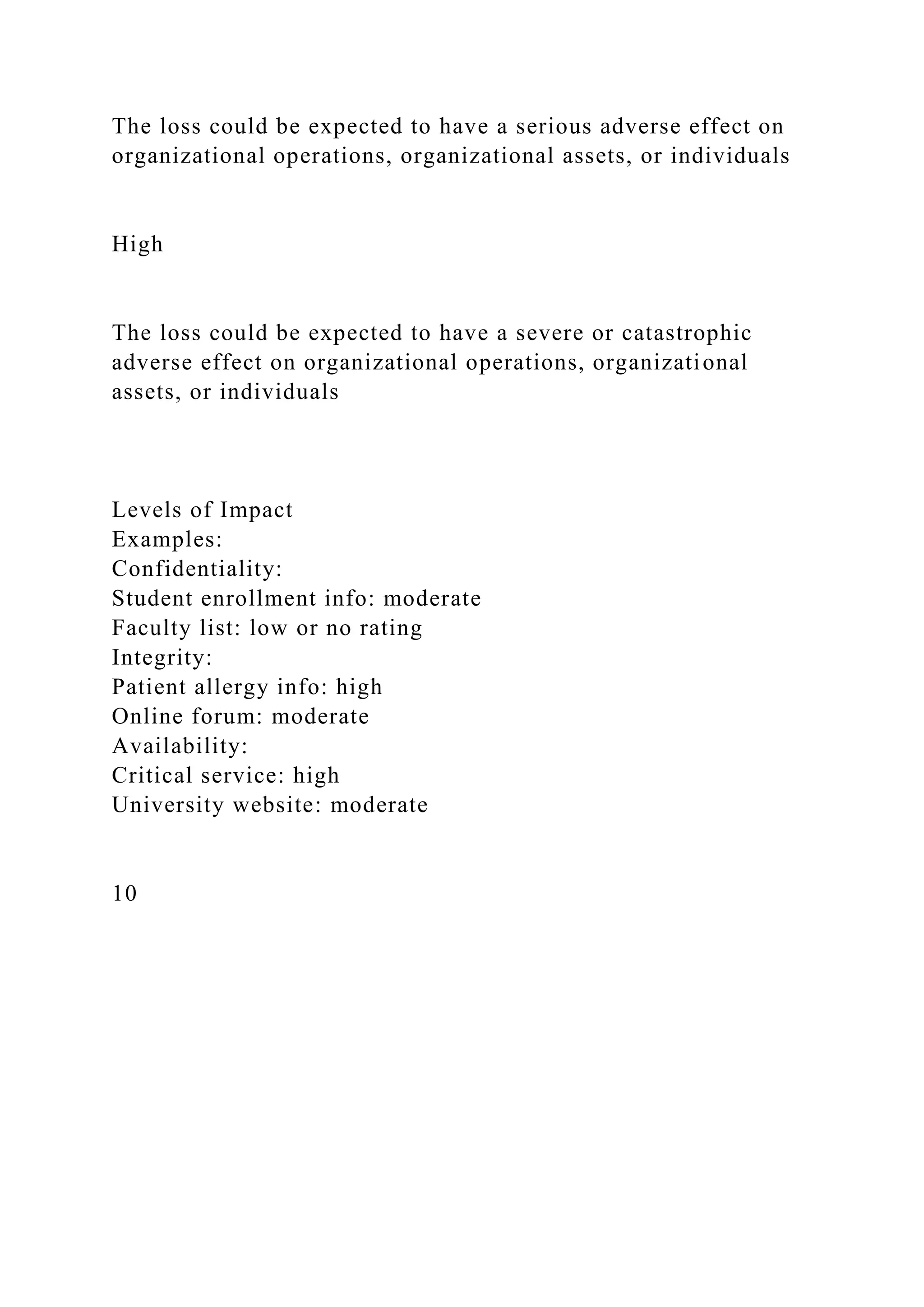
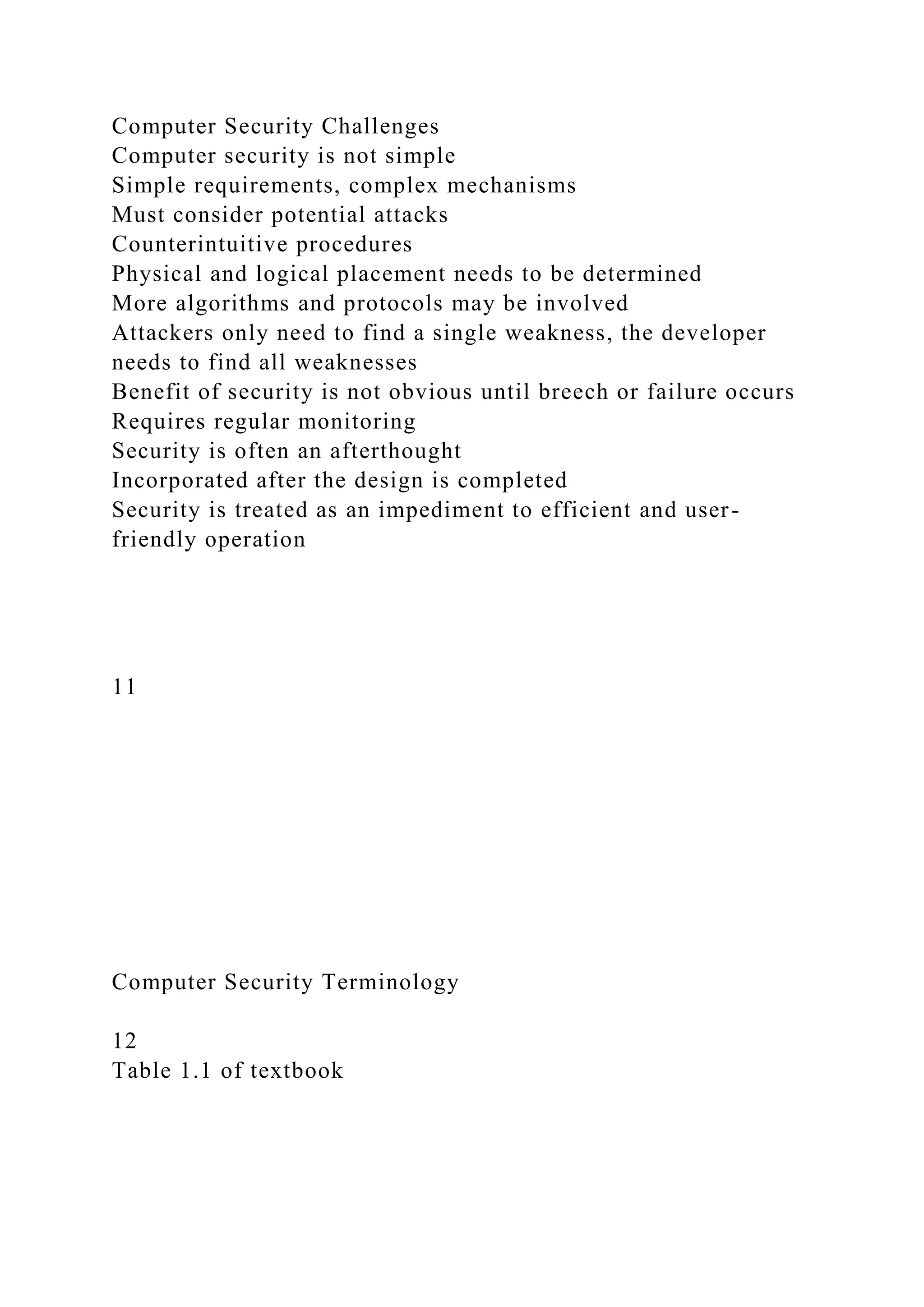

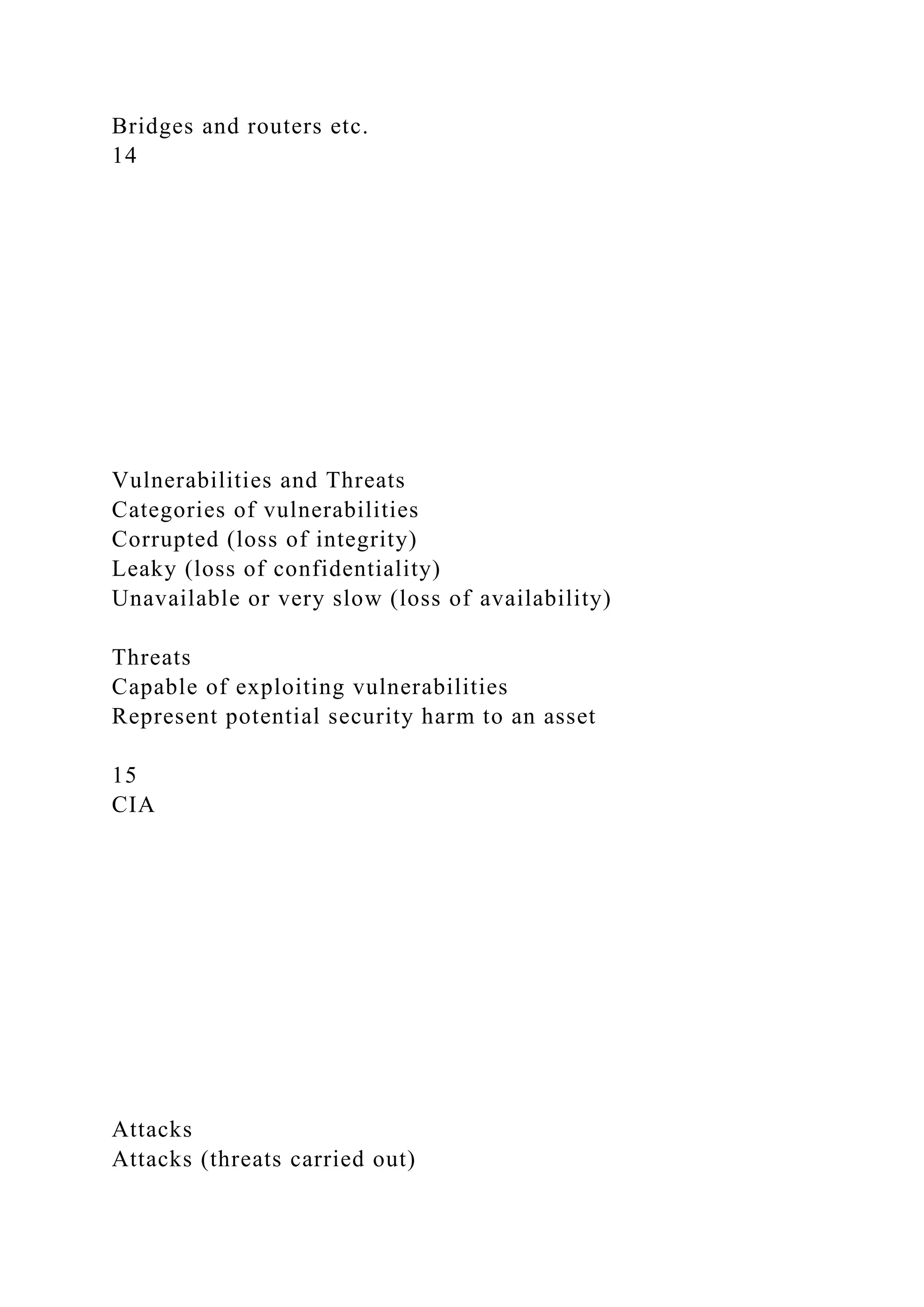
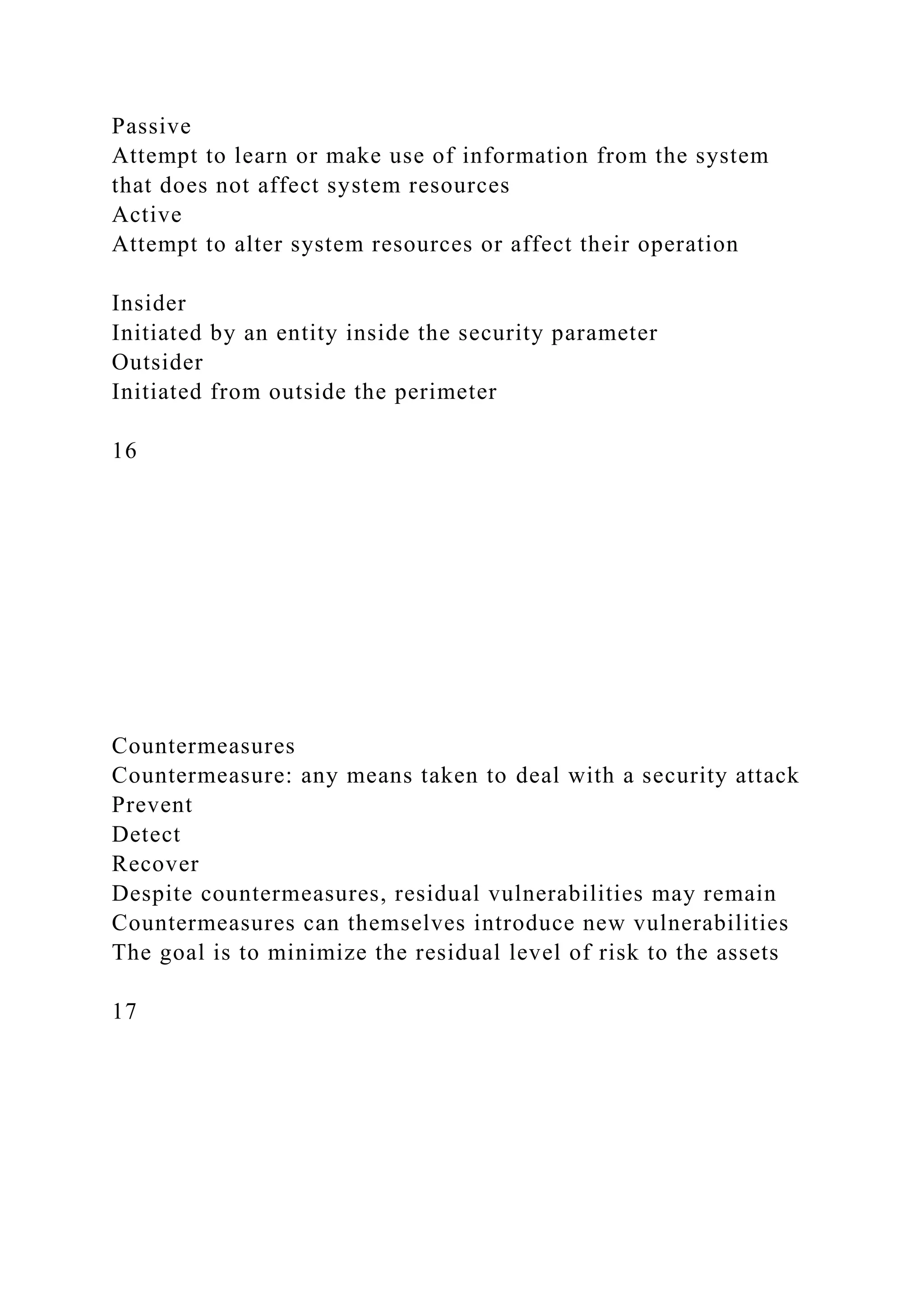
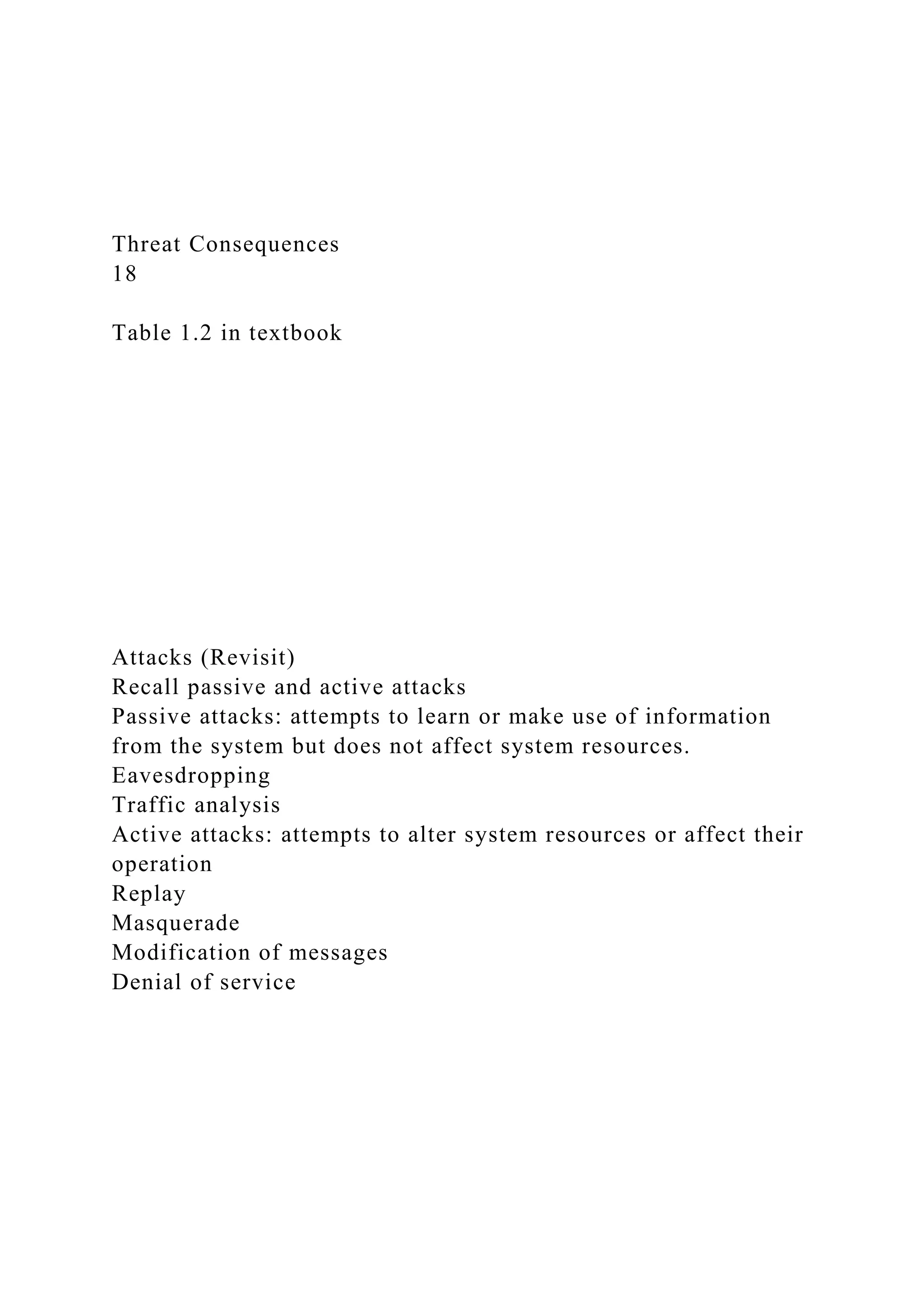
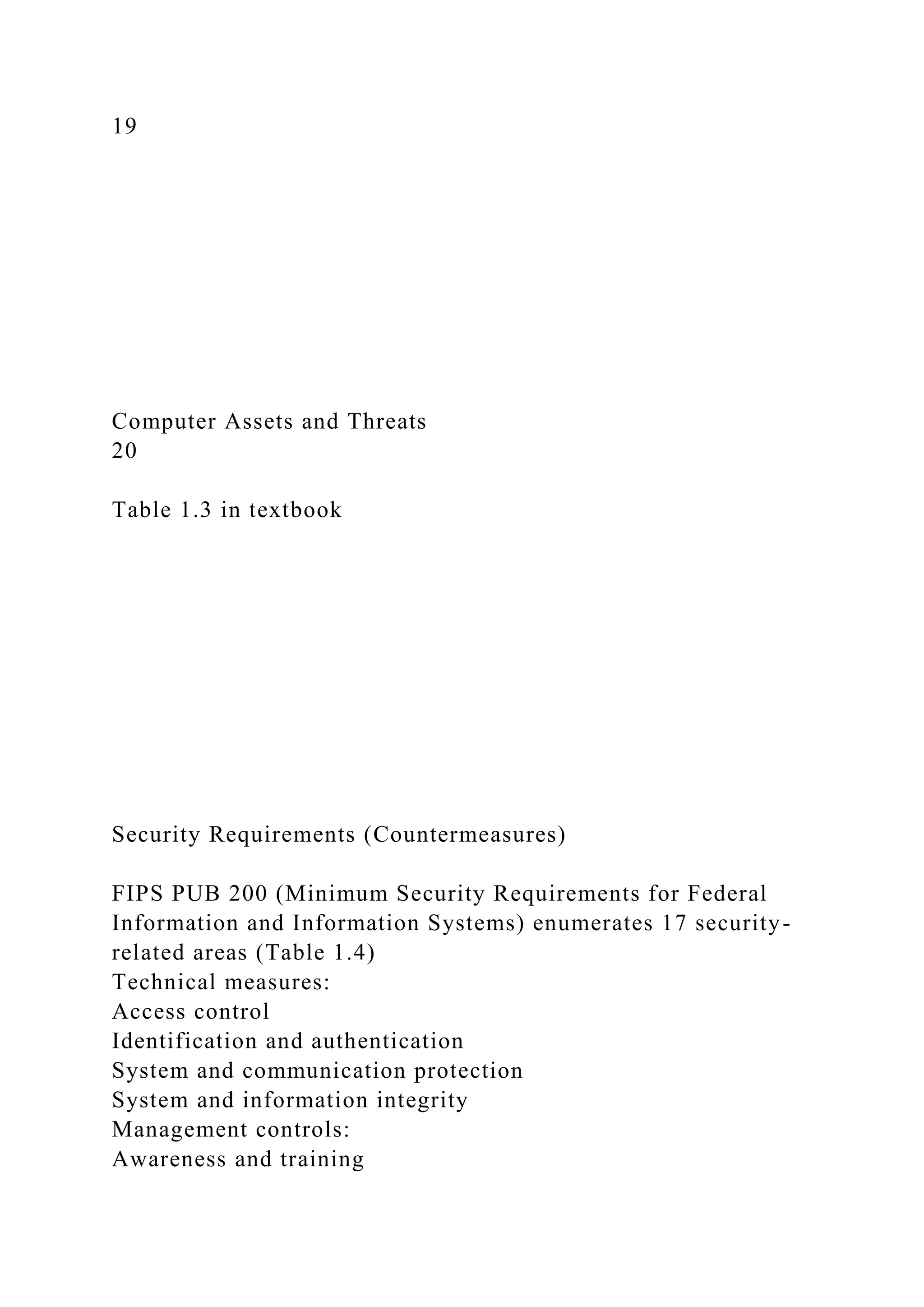
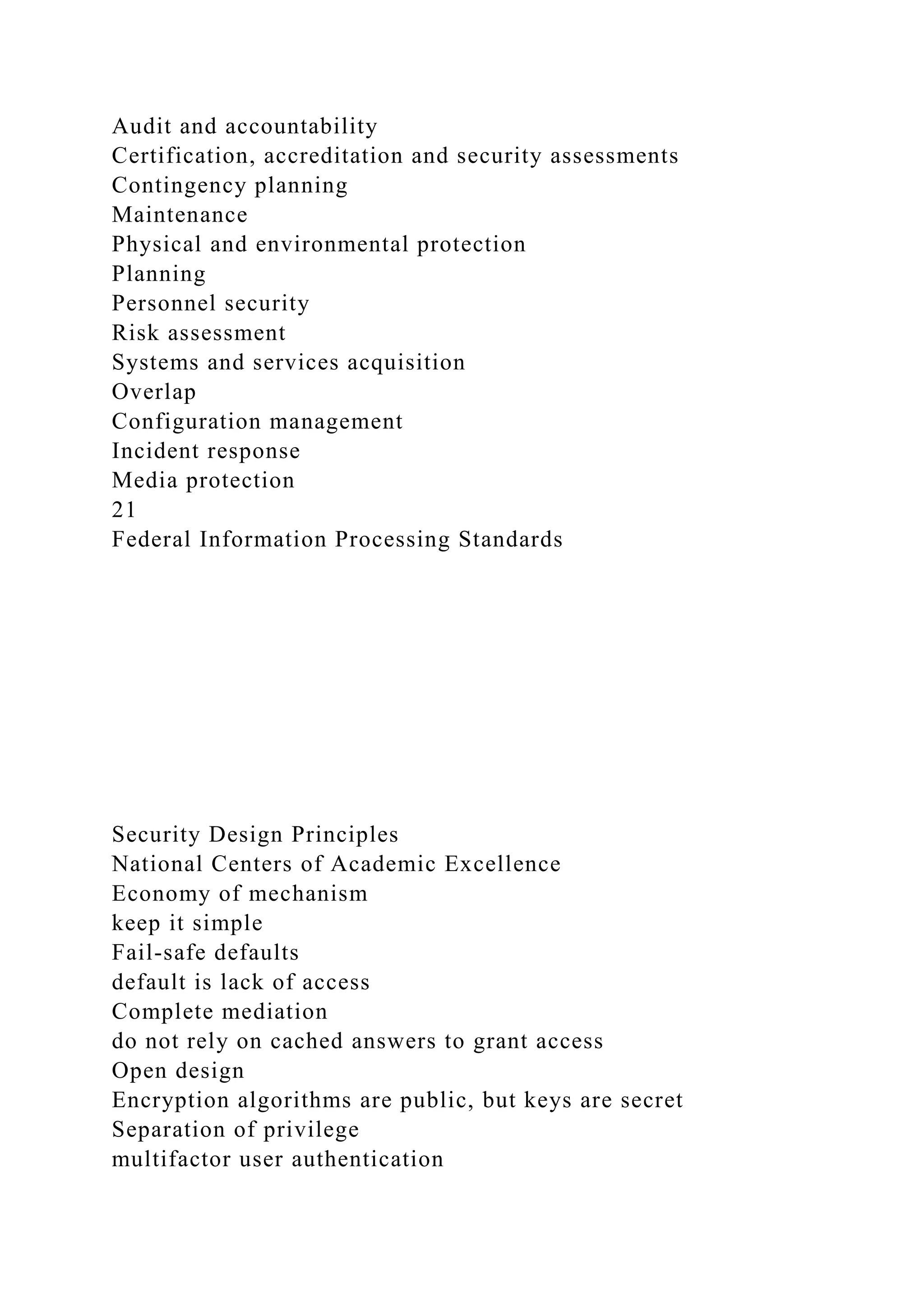
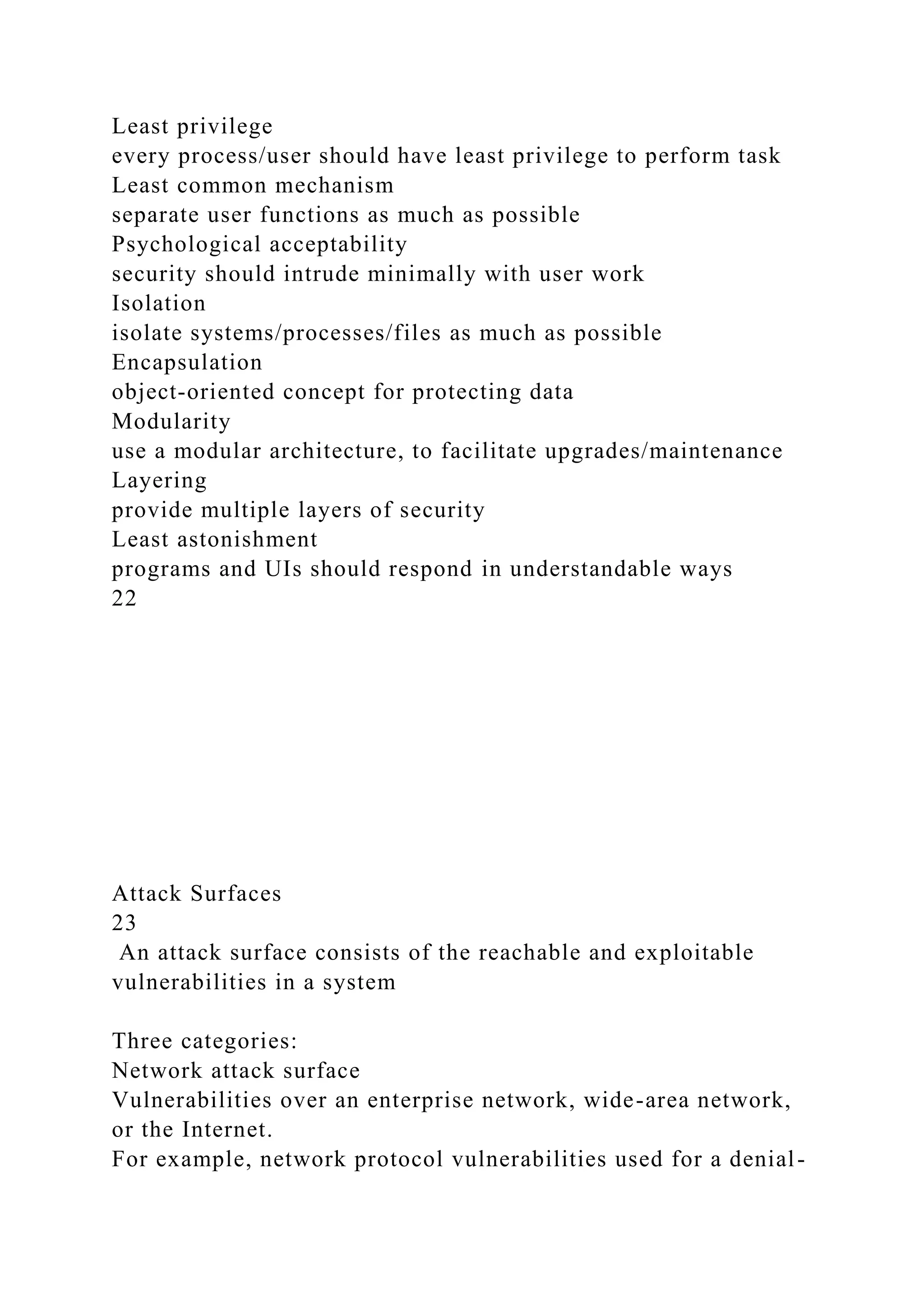
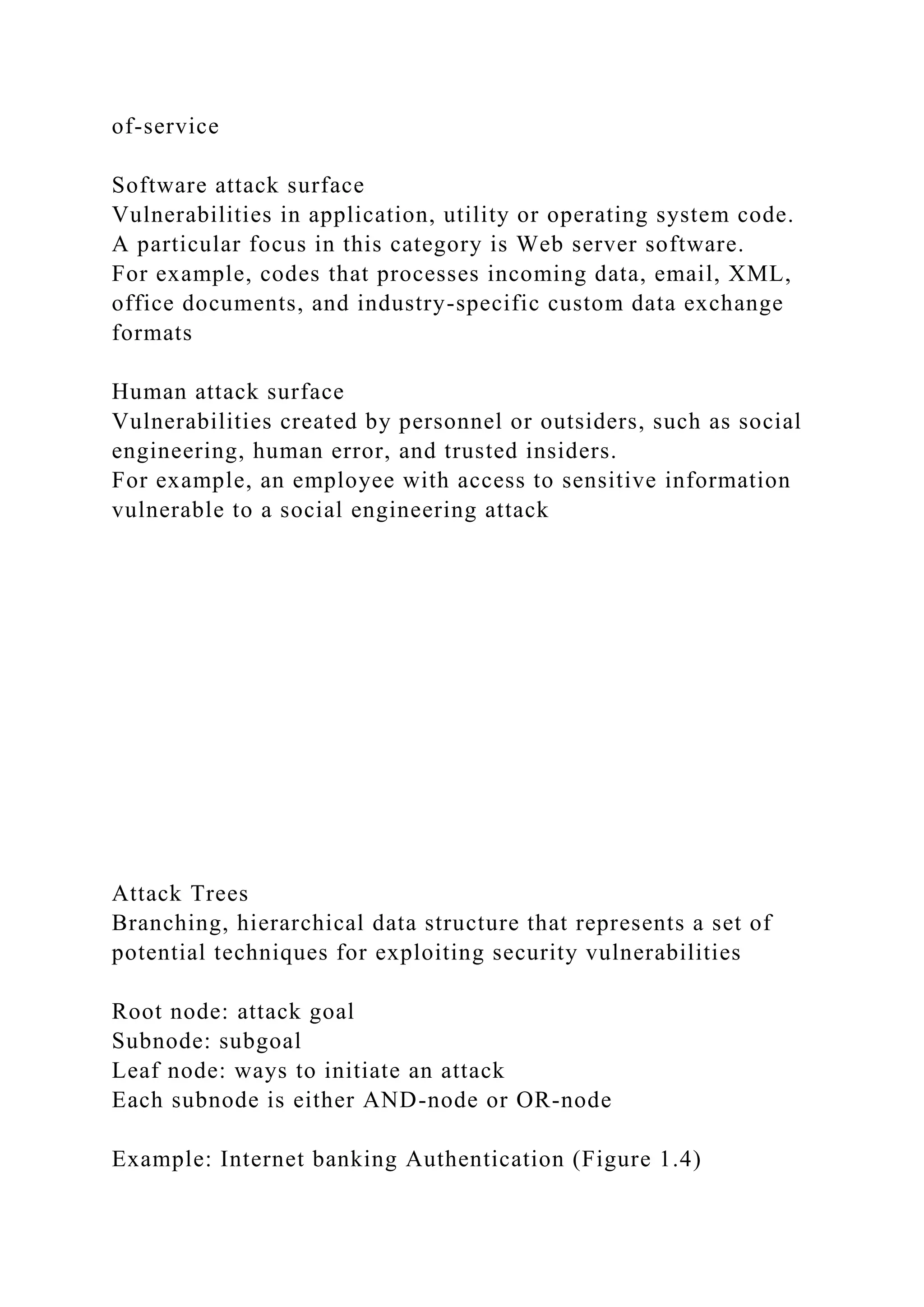

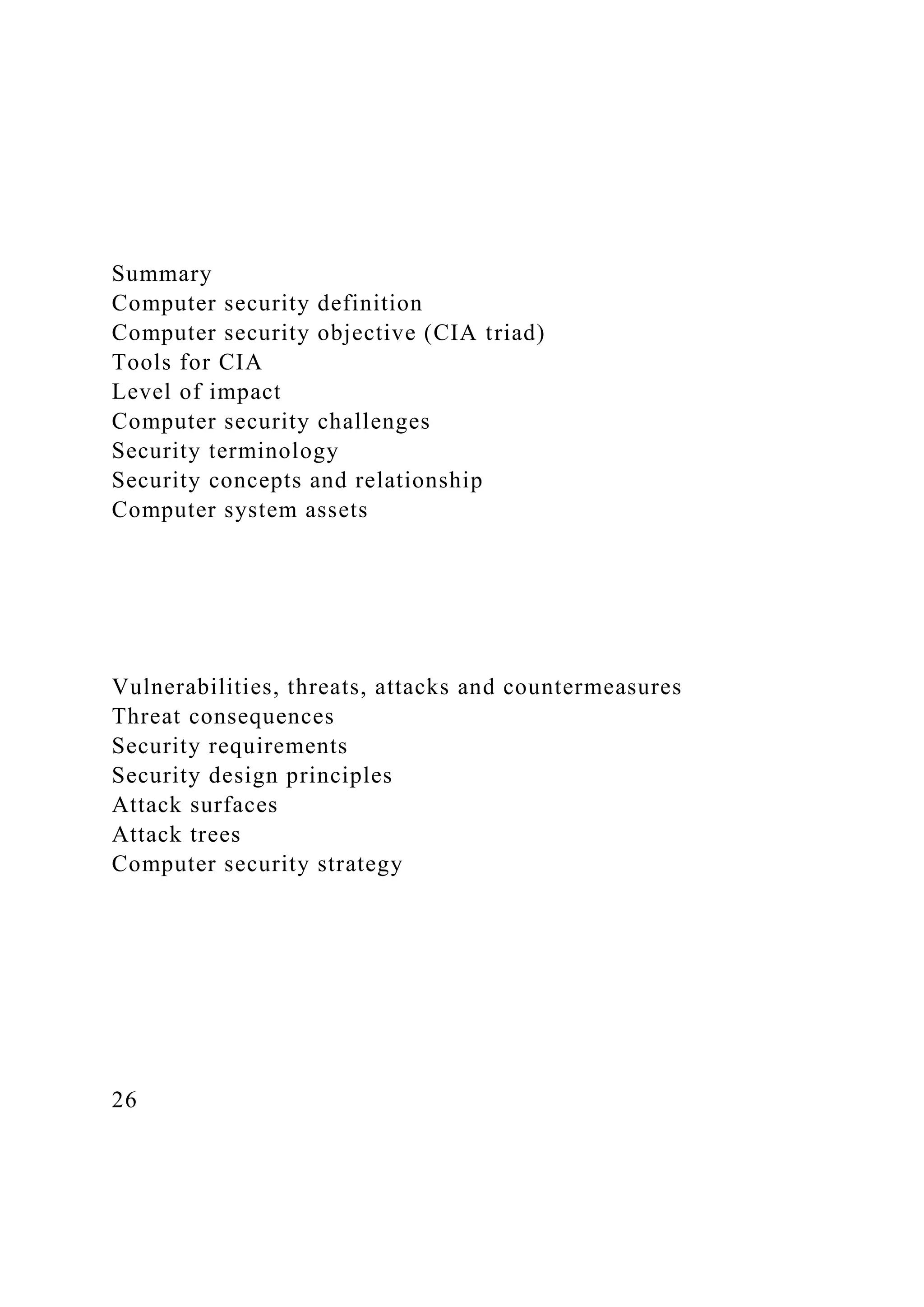
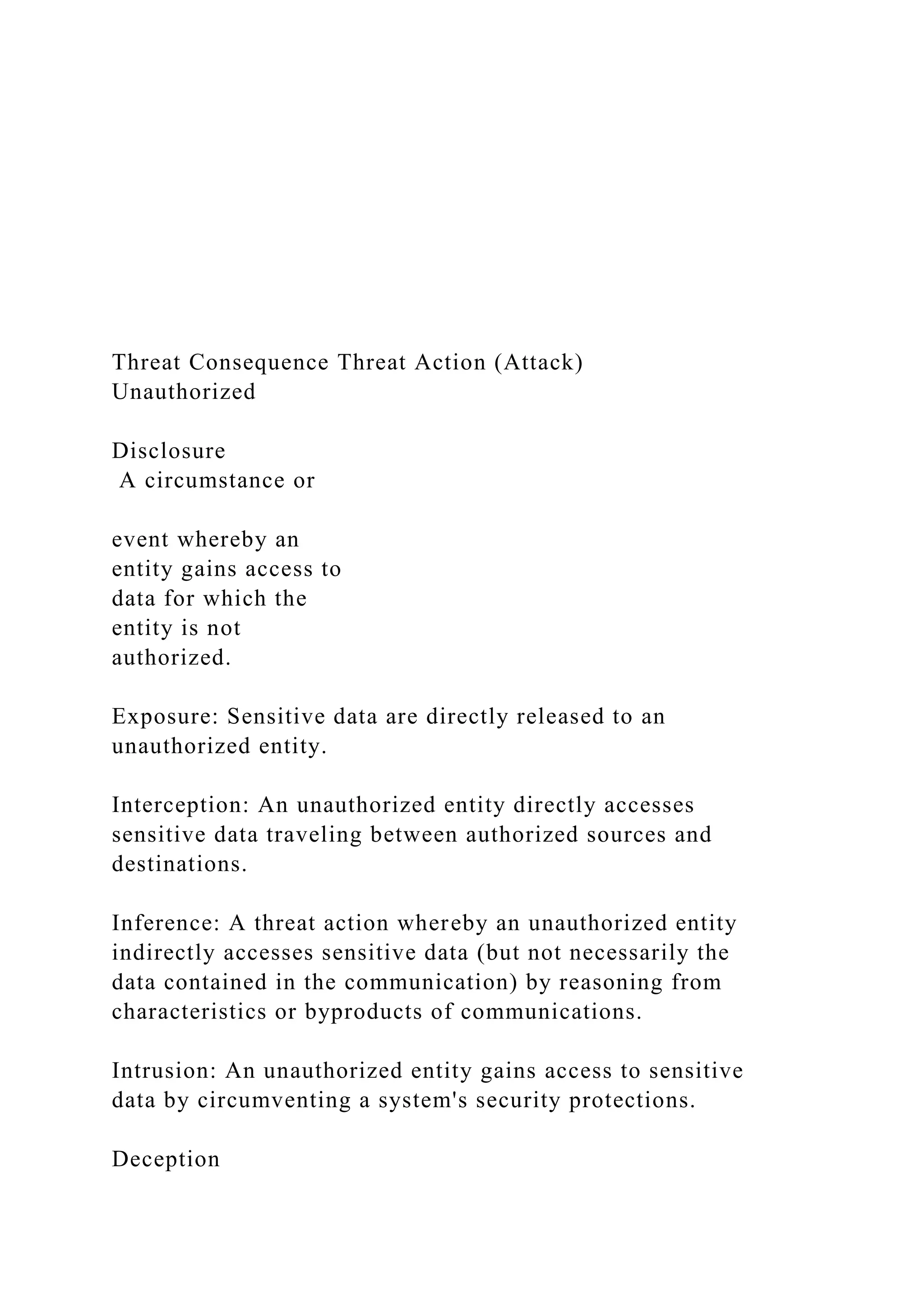
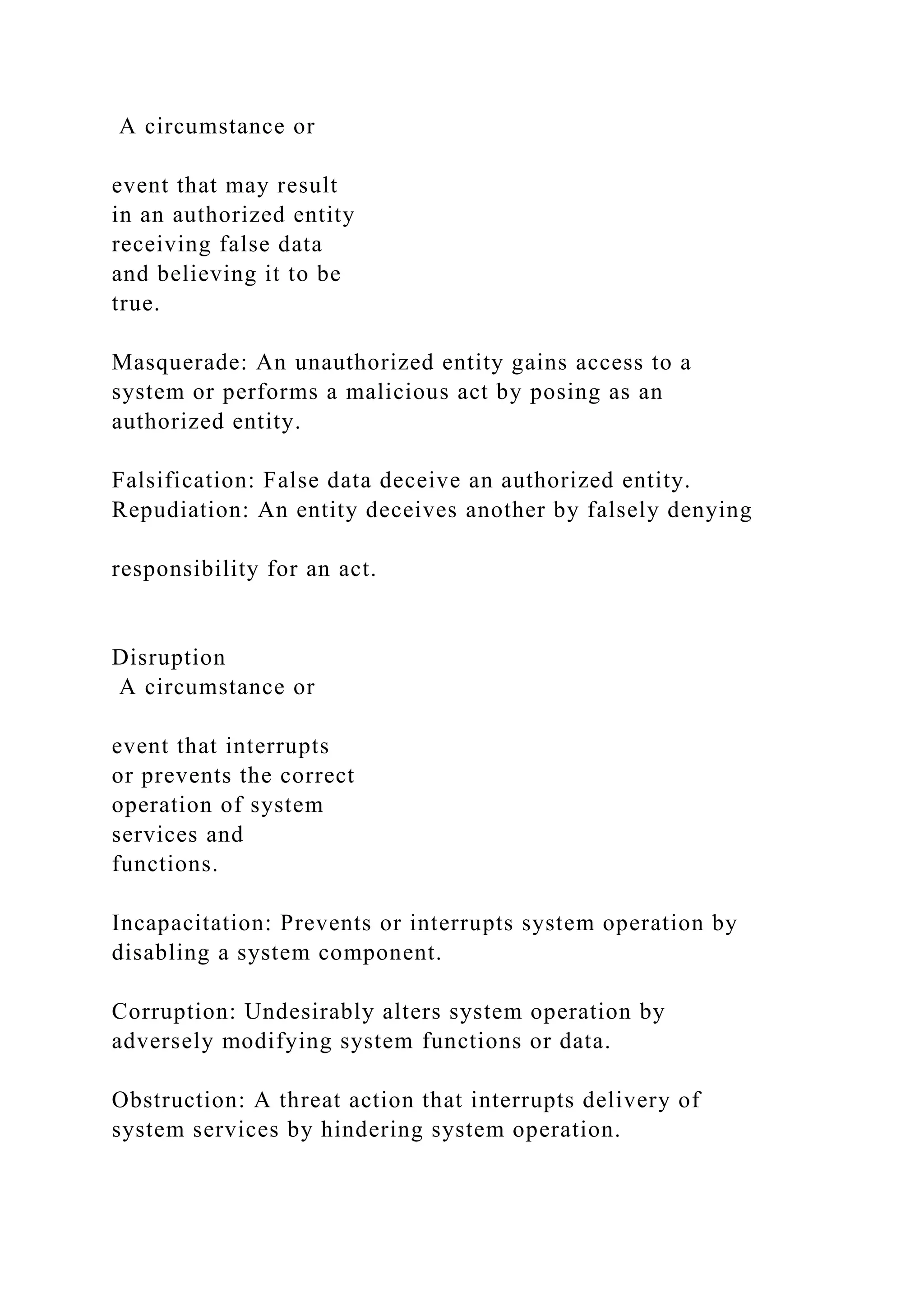
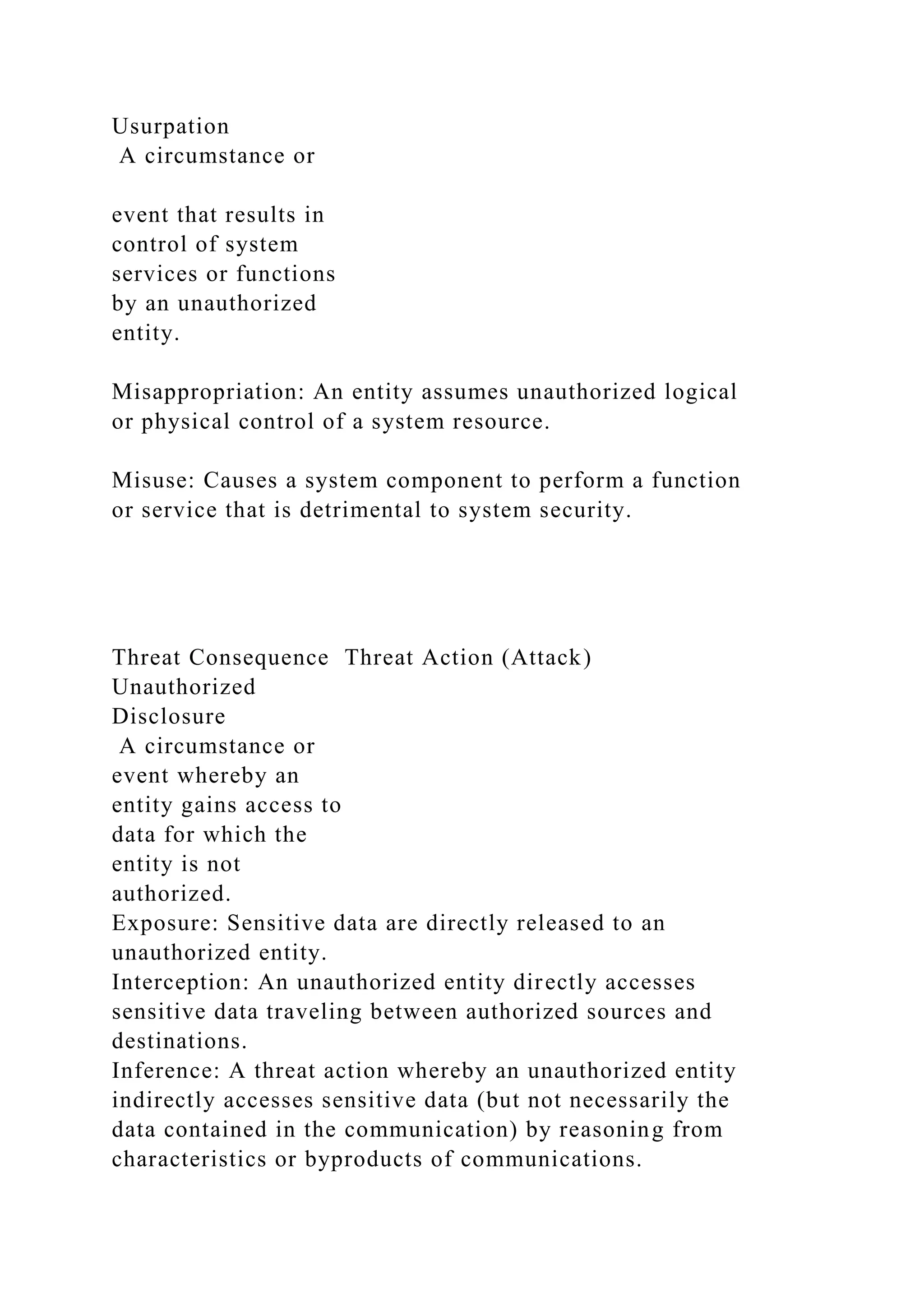
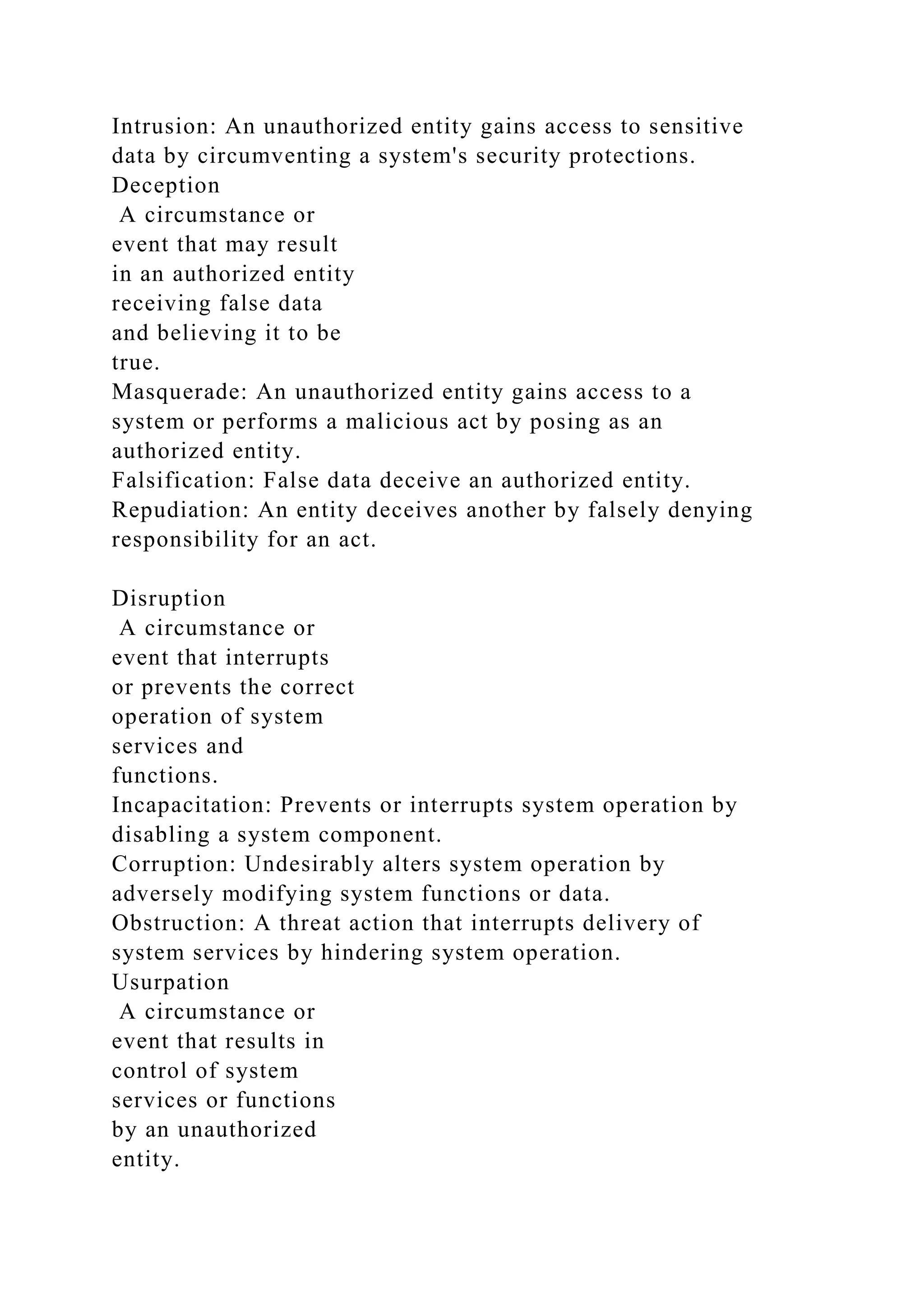
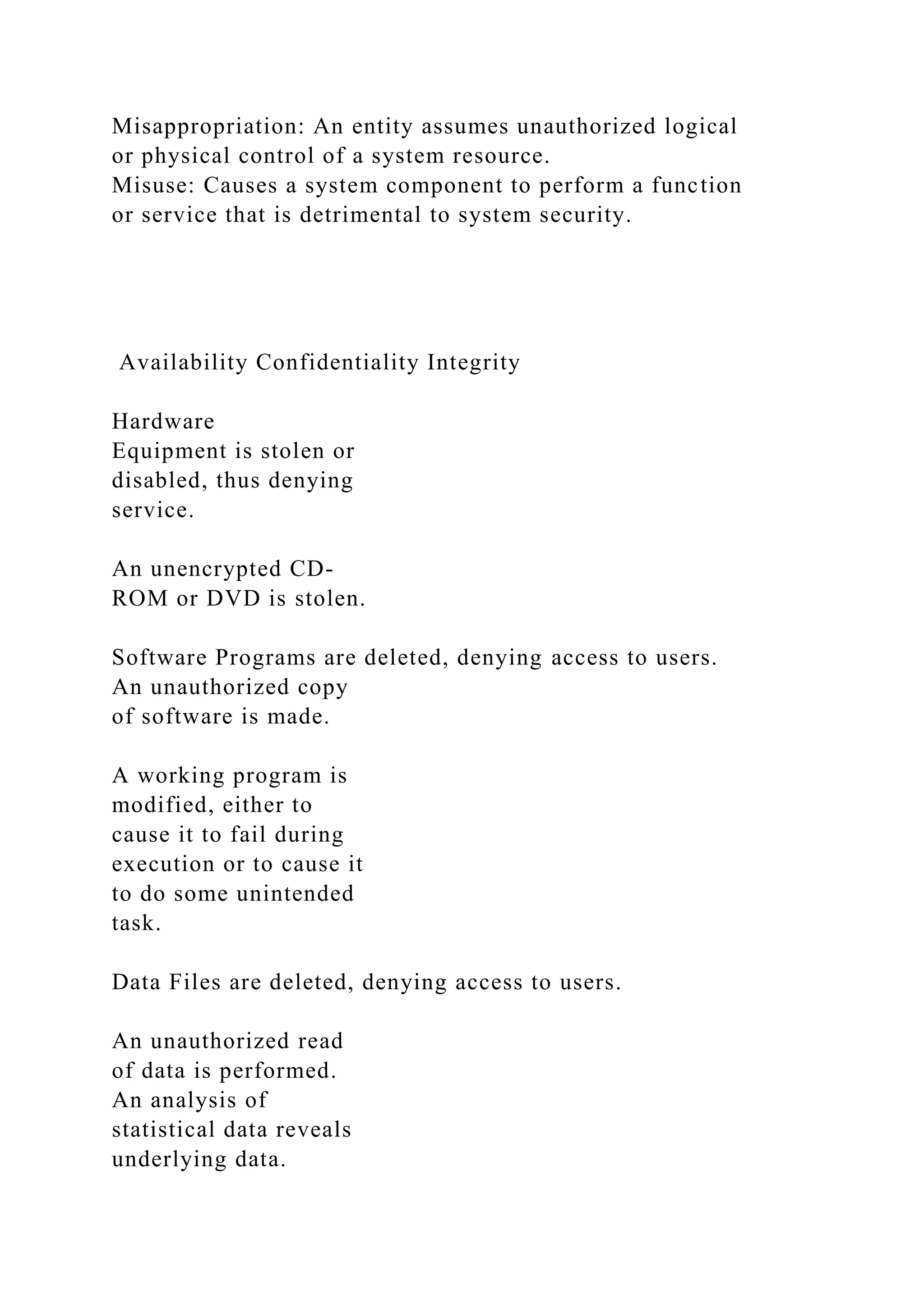
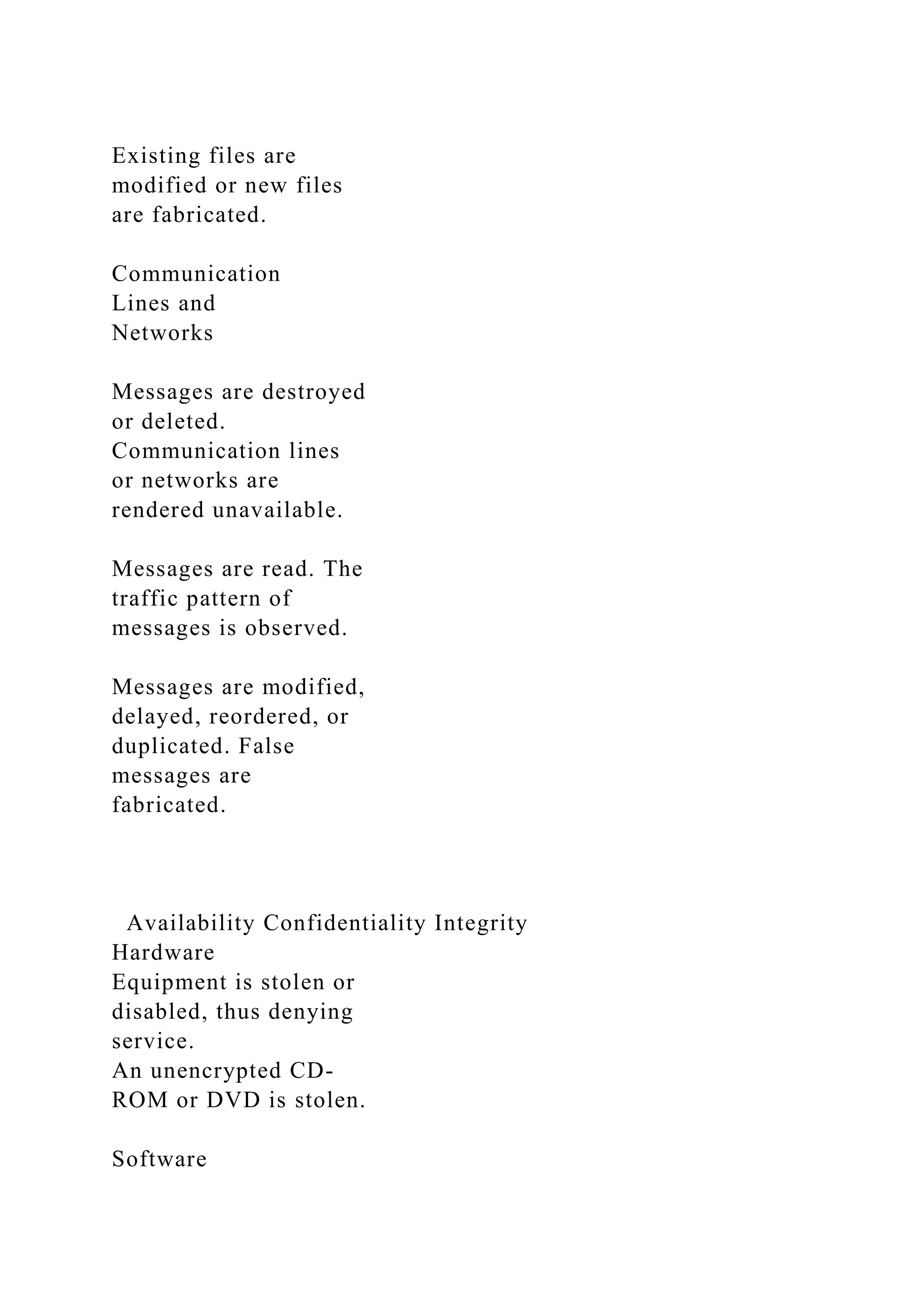
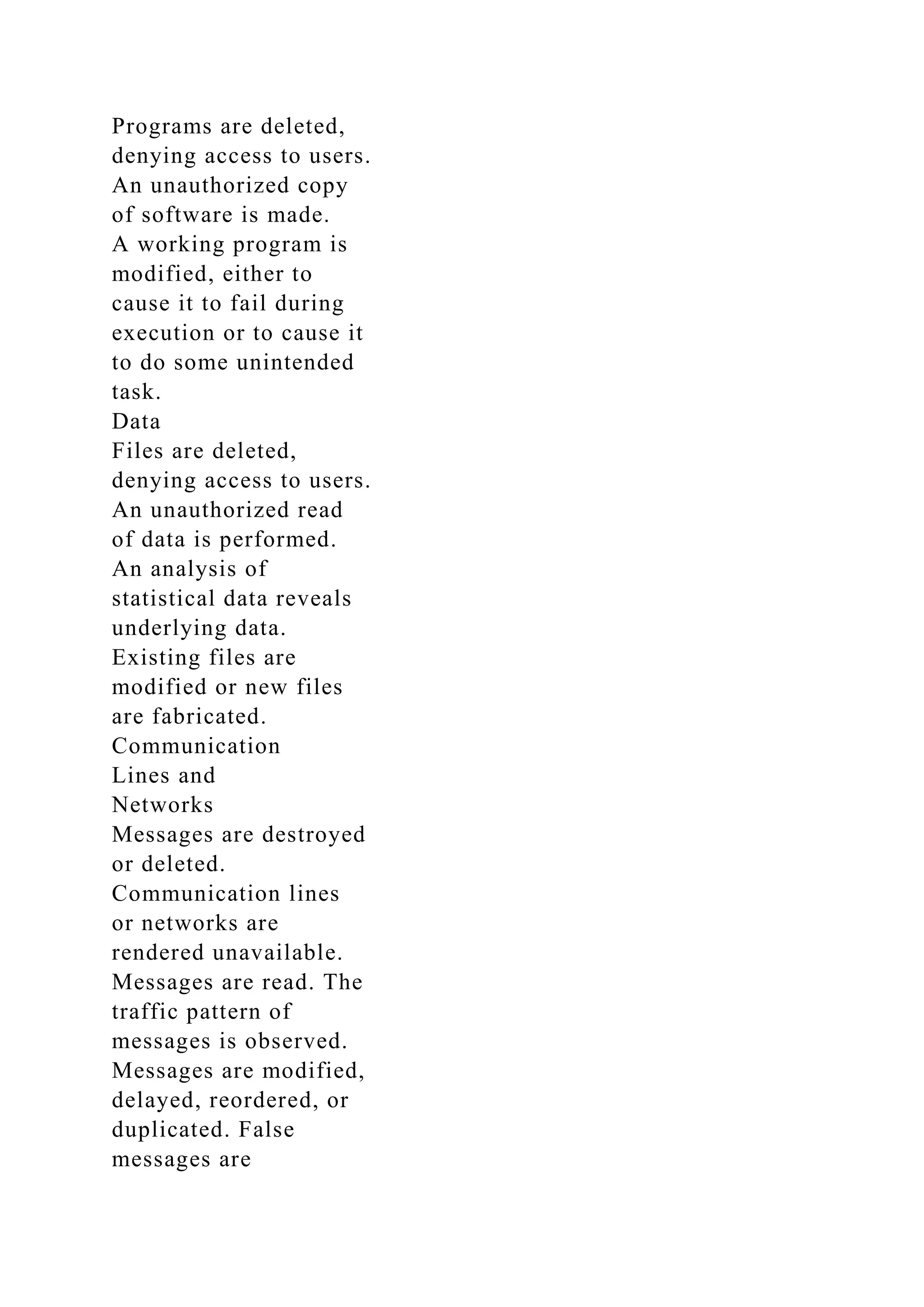
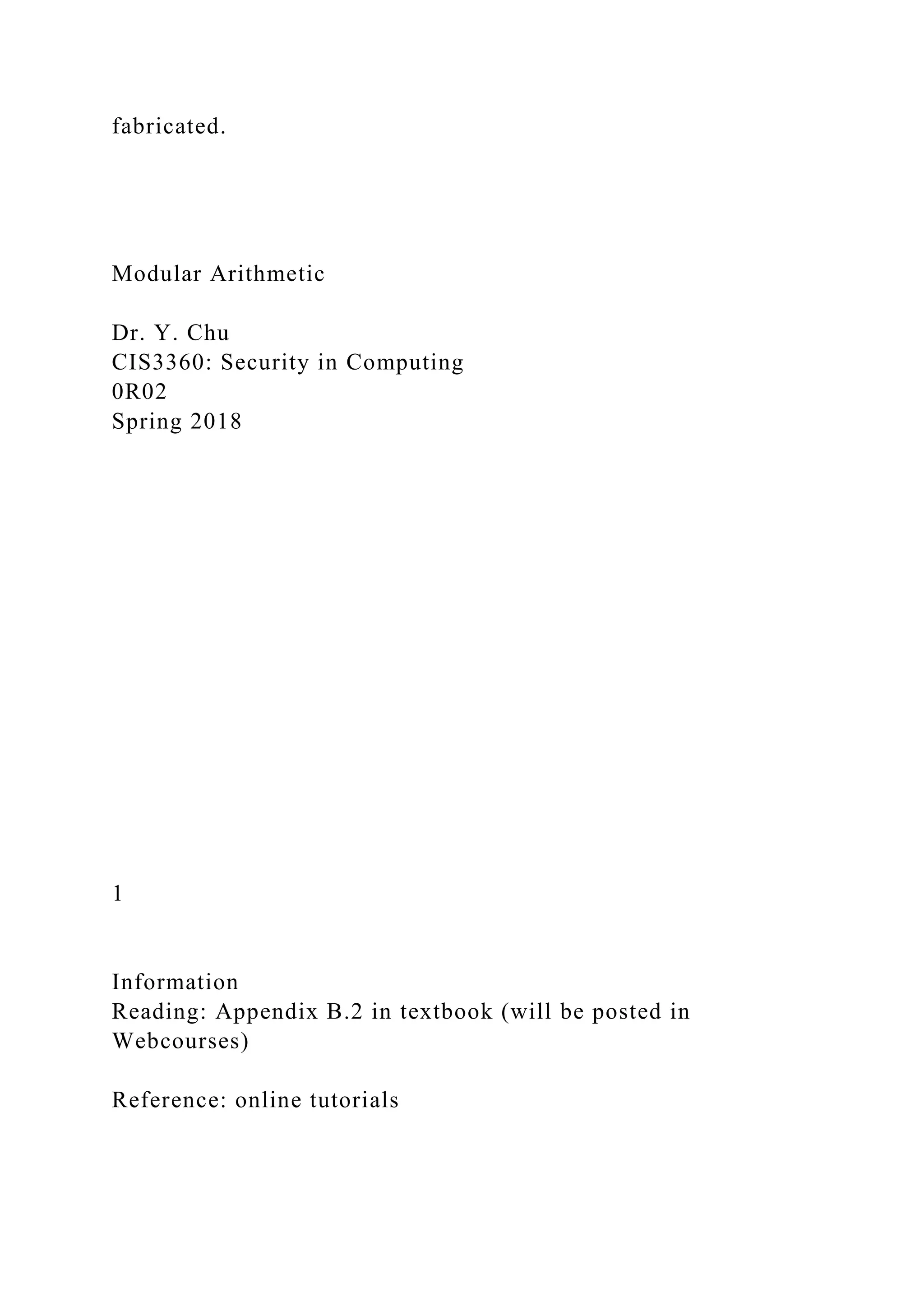

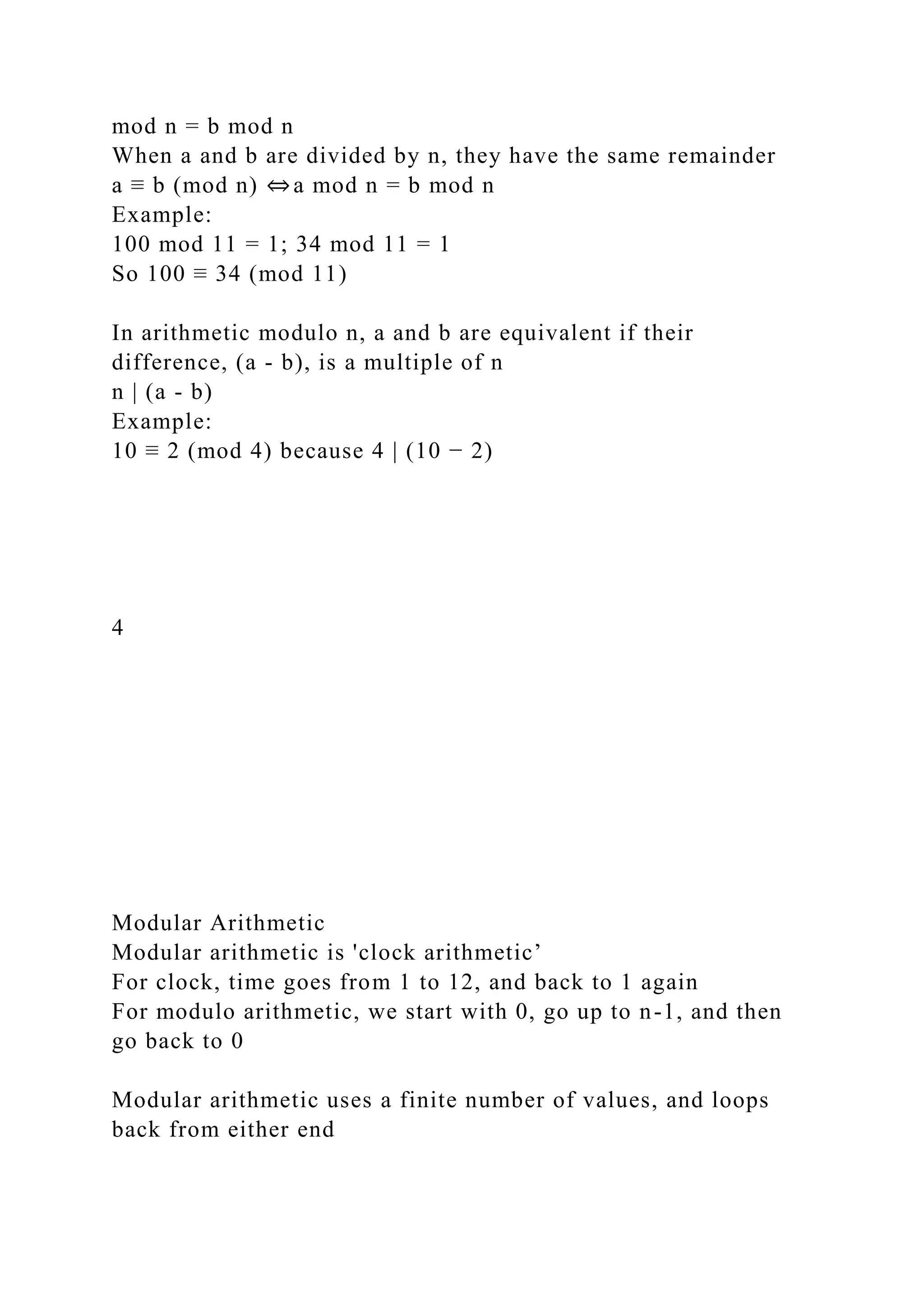

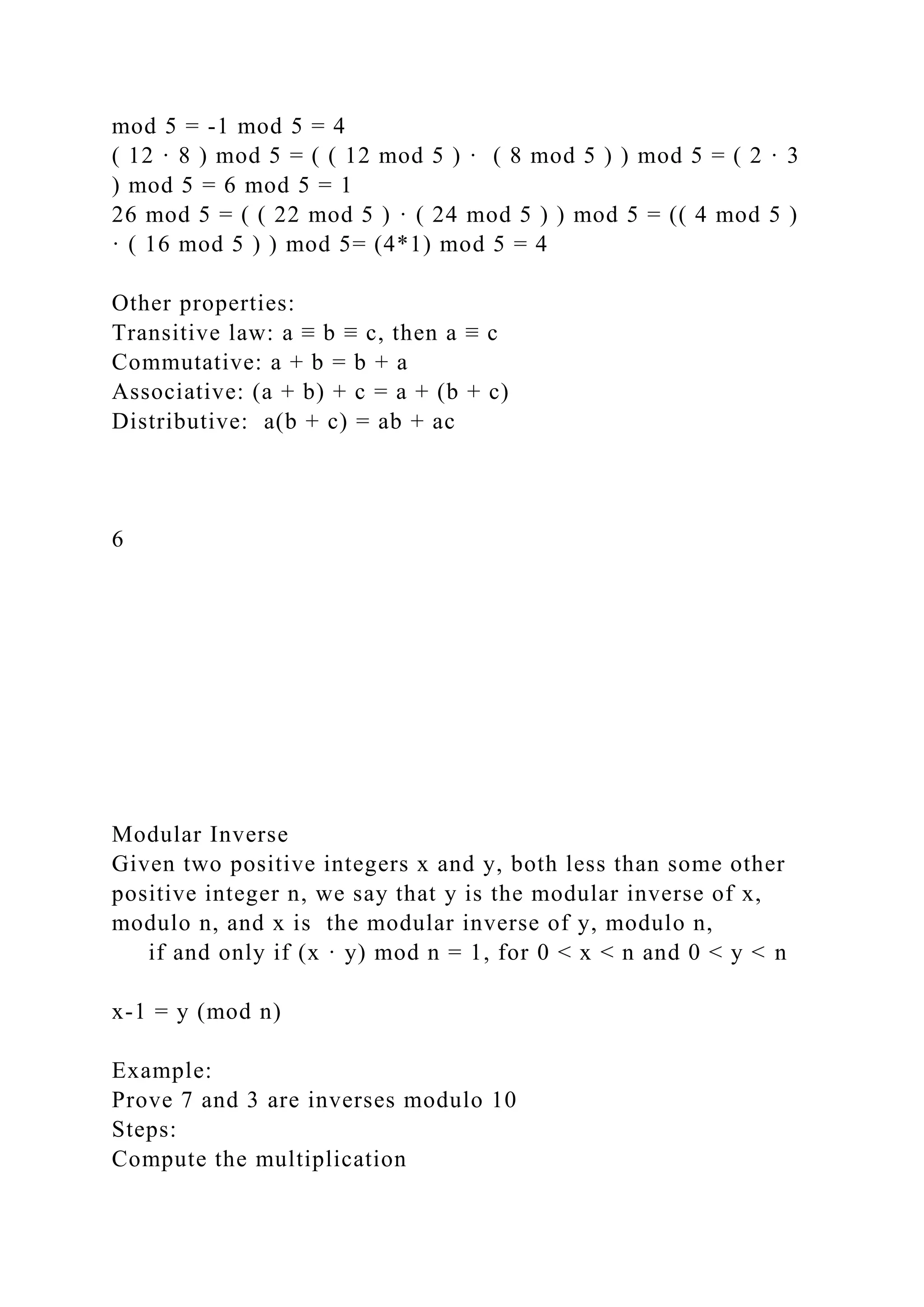
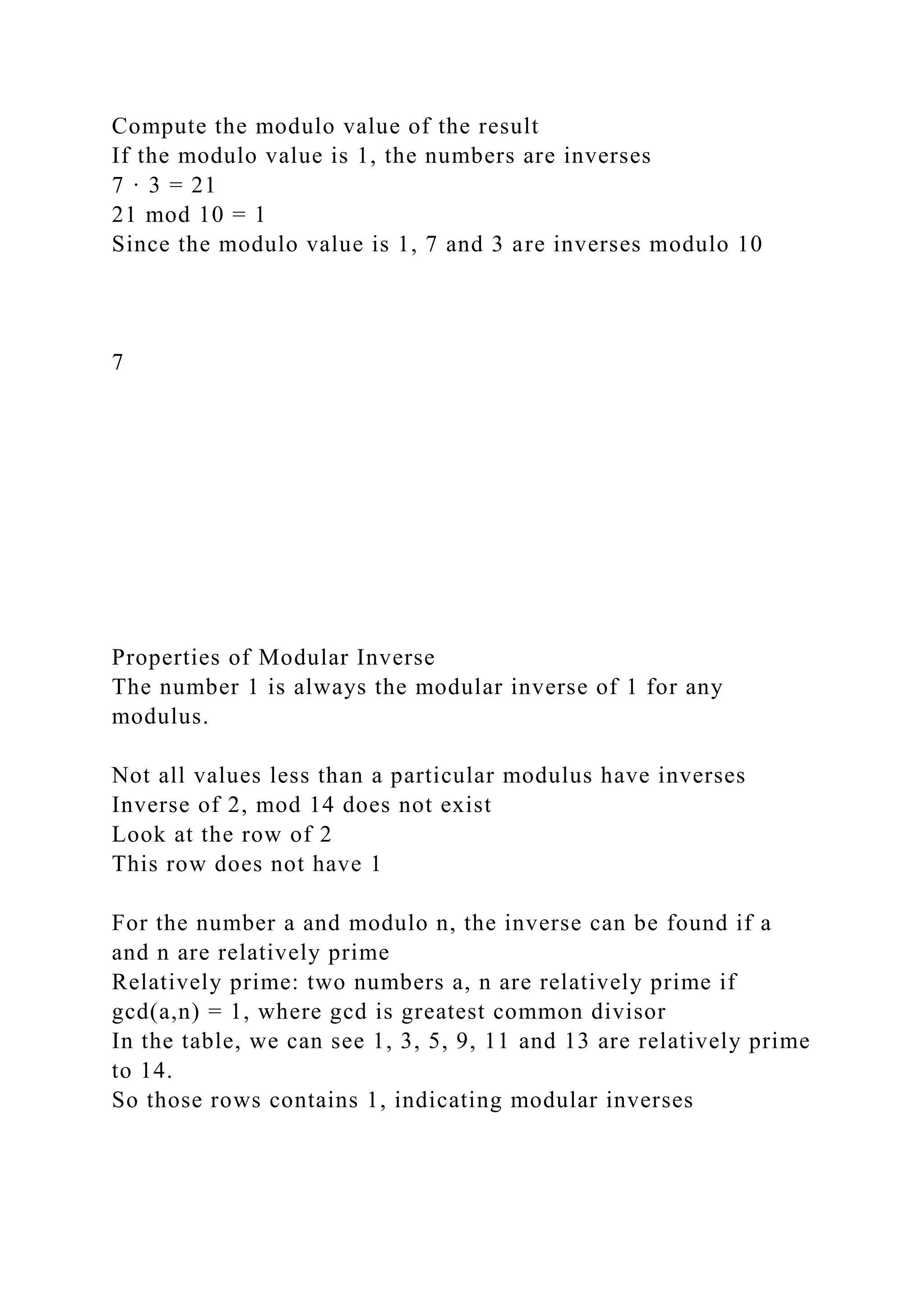
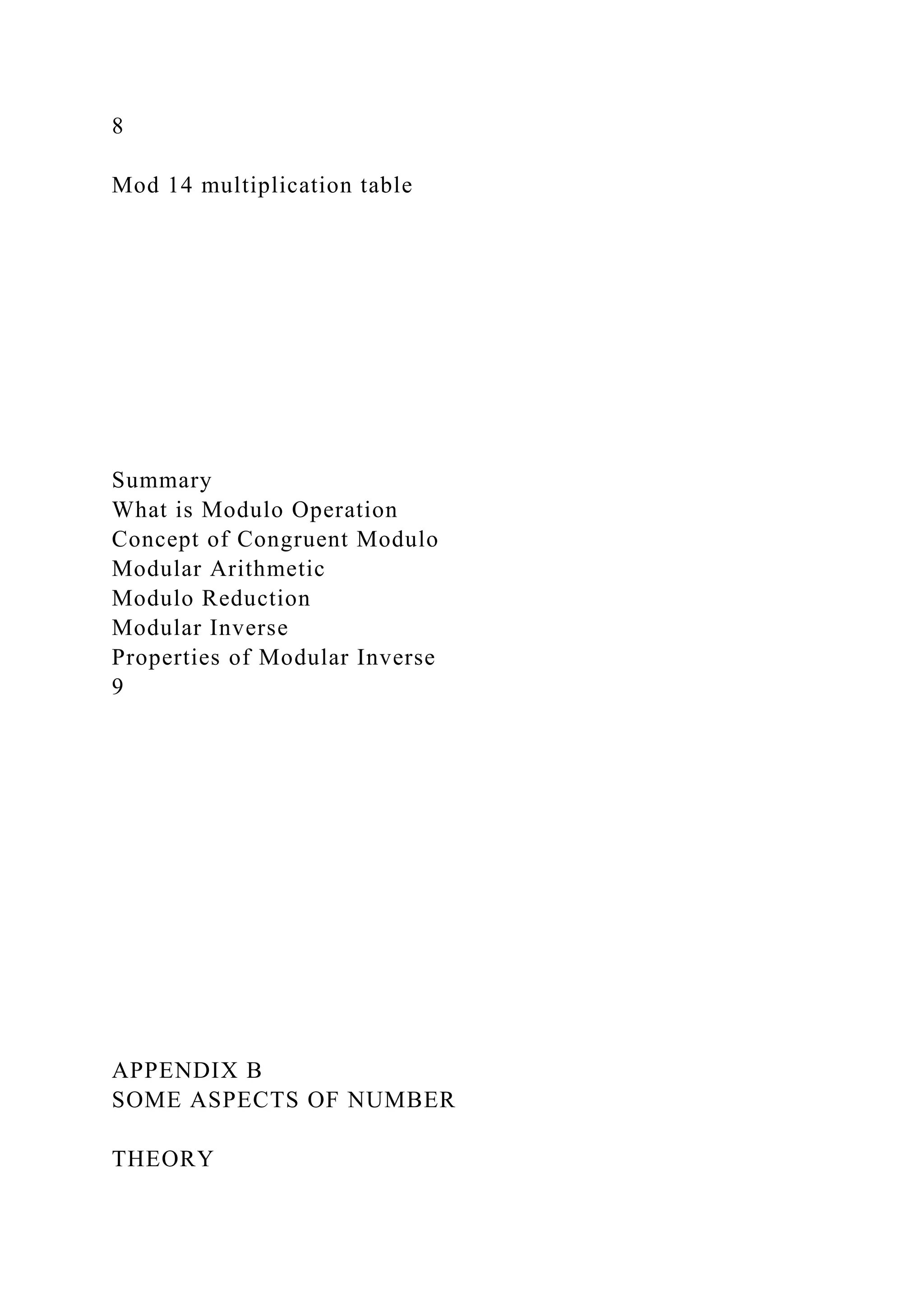
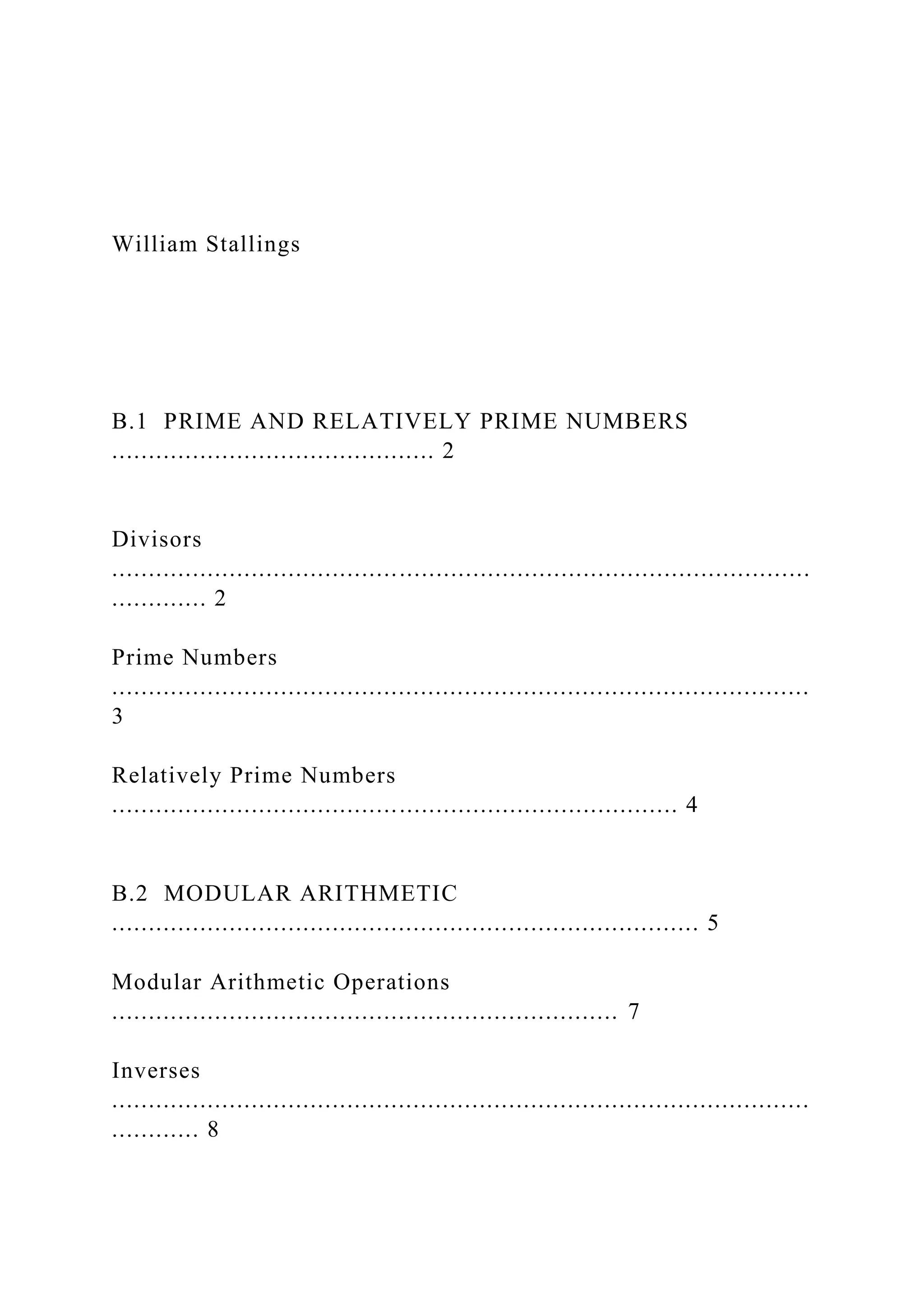
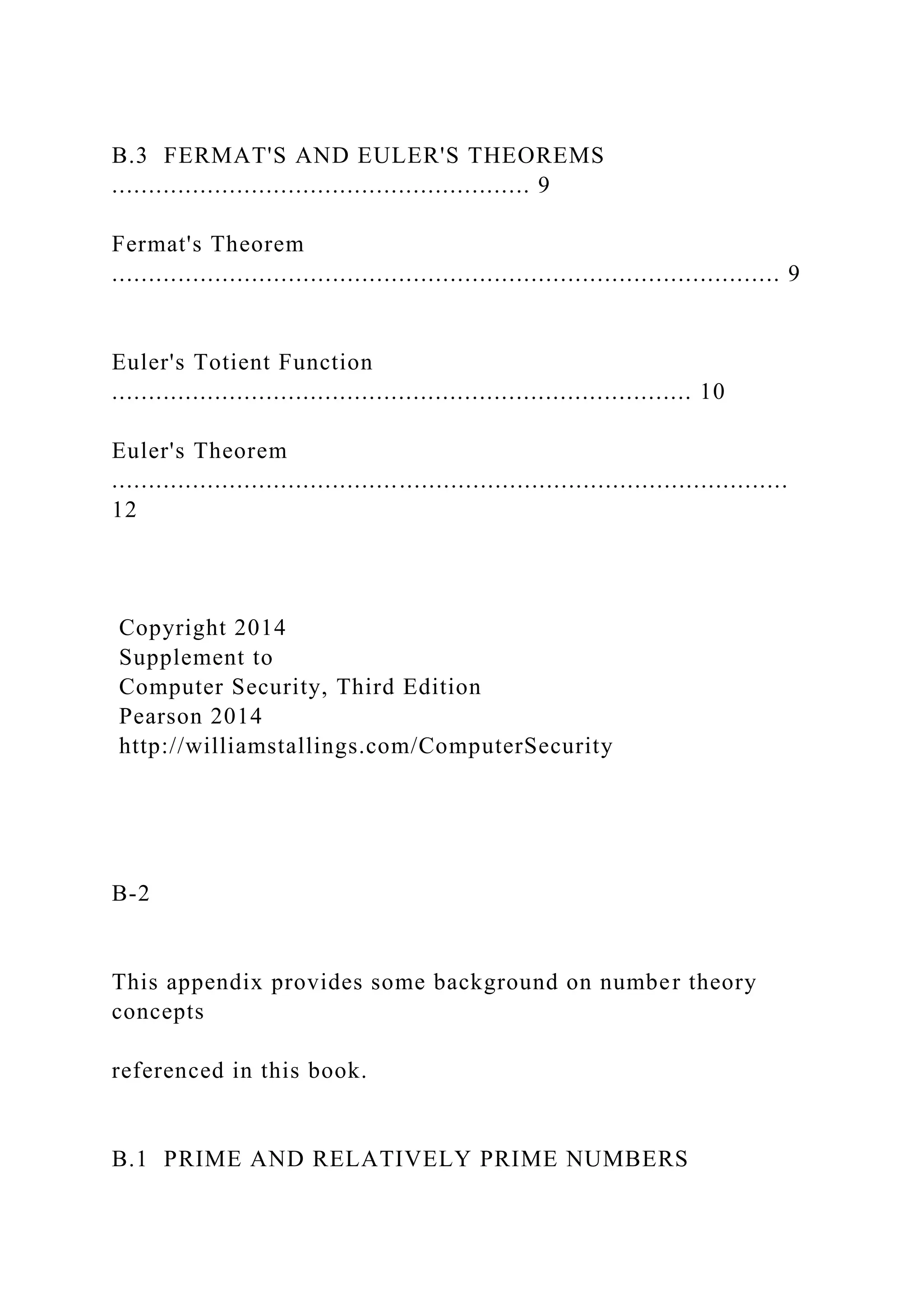
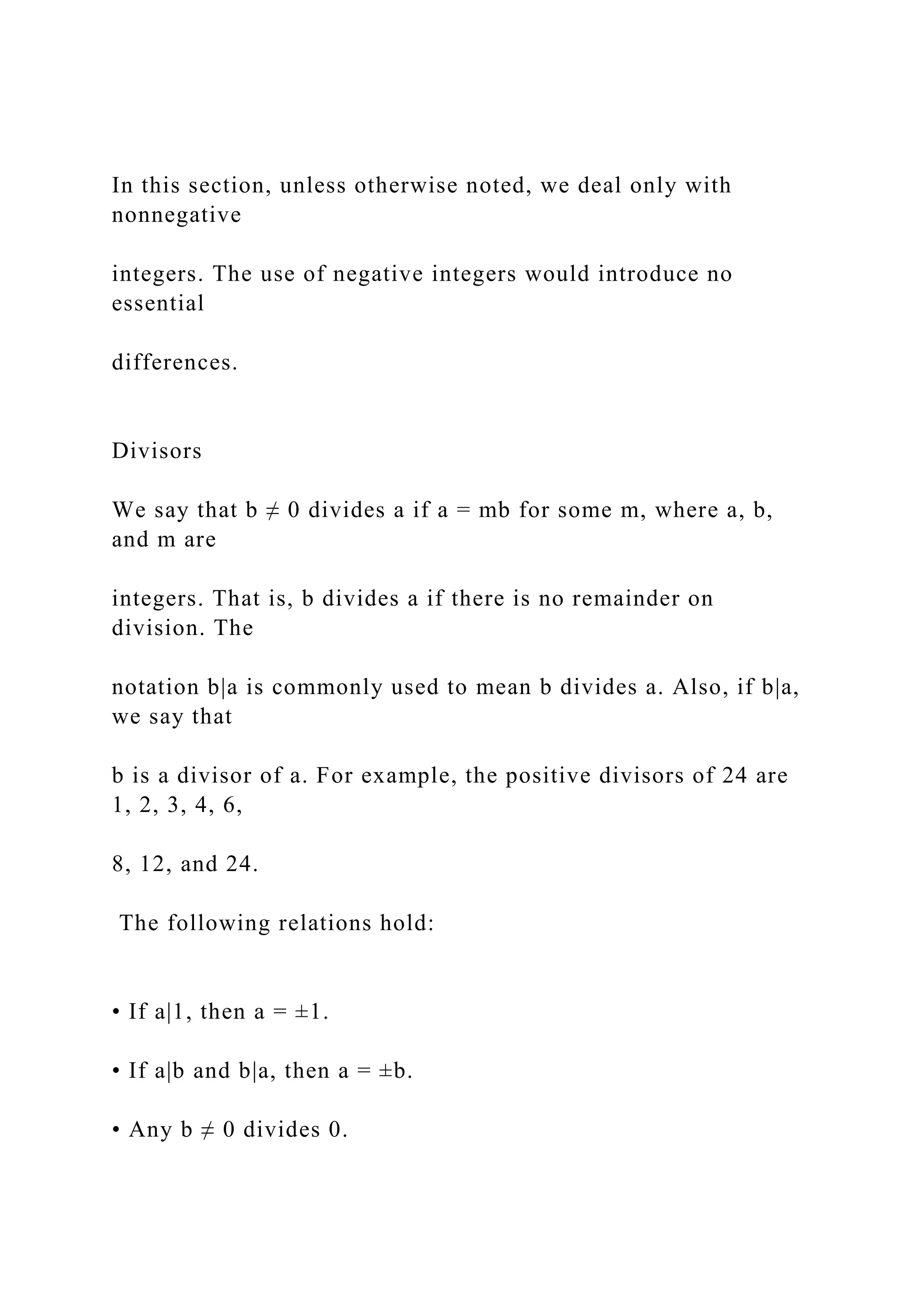
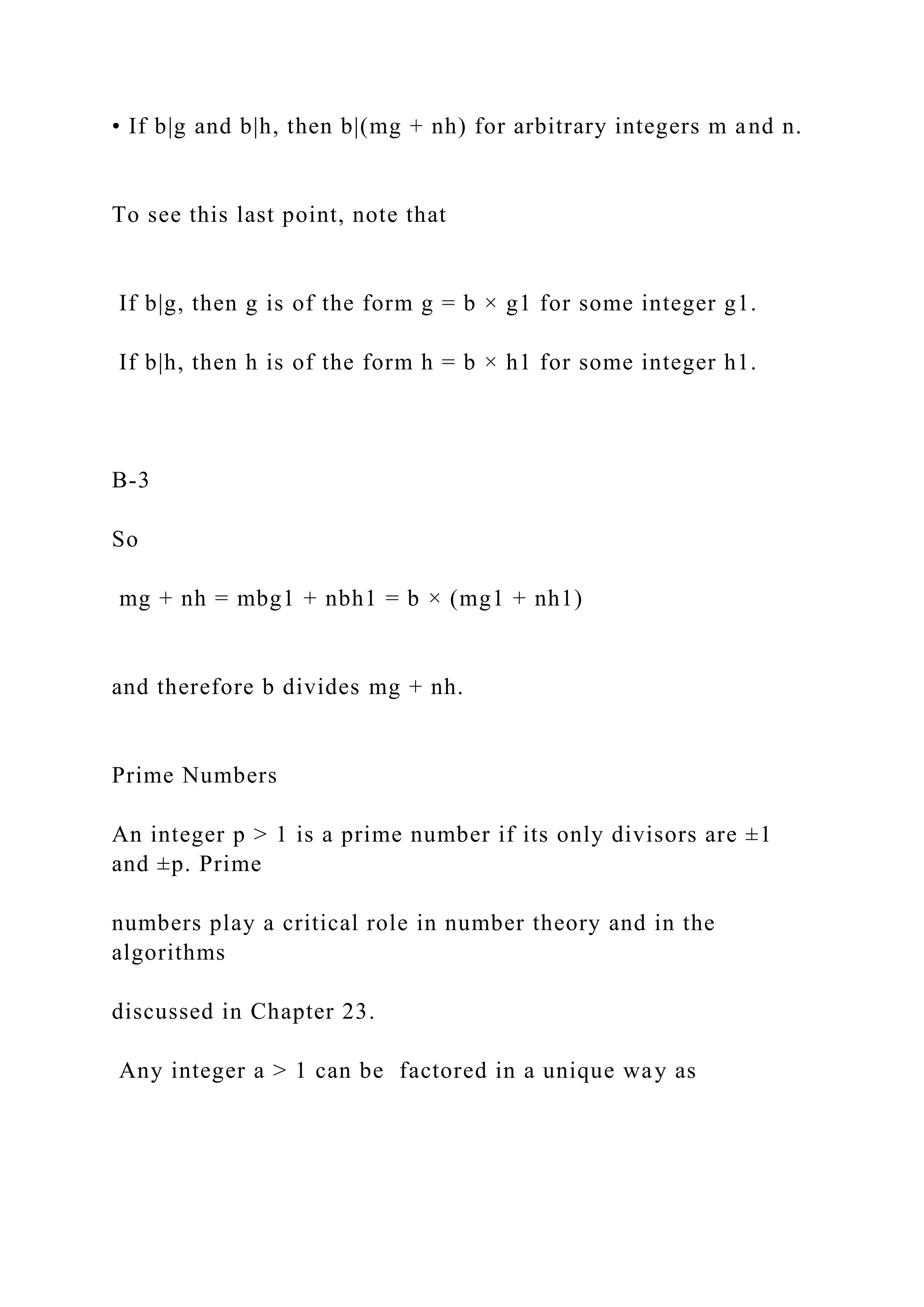

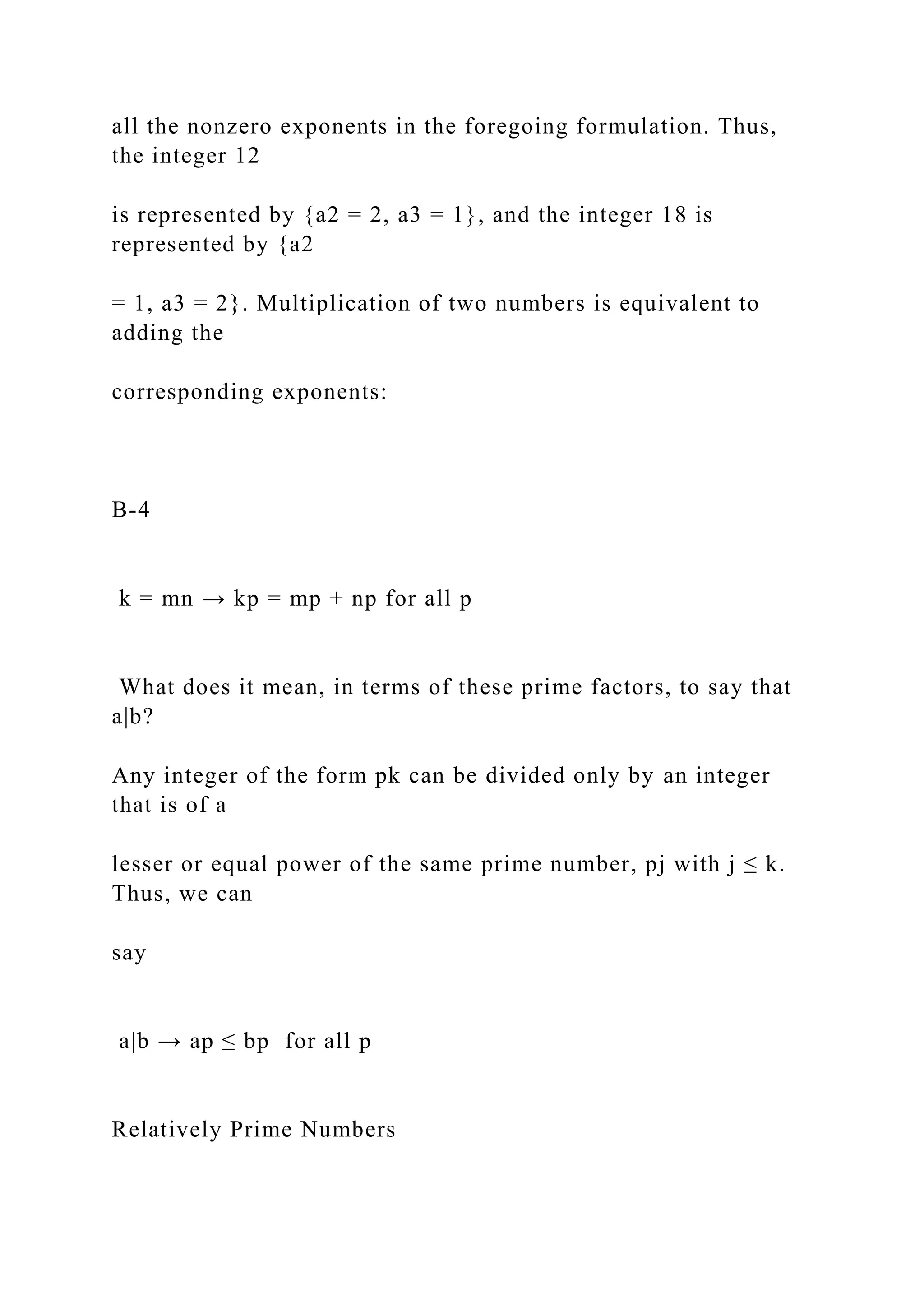
![We will use the notation gcd(a, b) to mean the greatest common
divisor
of a and b. The positive integer c is said to be the greatest
common divisor
of a and b if
1. c is a divisor of a and of b;
2. any divisor of a and b is a divisor of c.
An equivalent definition is the following:
gcd(a, b) = max[k, such that k|a and k|b]
Because we require that the greatest common divisor be
positive, gcd(a,
b) = gcd(a, –b) = gcd(–a, b) = gcd(–a, –b). In general, gcd(a, b)
= gcd( | a
|, | b | ). For example, gcd(60, 24) = gcd(60, –24) = 12. Also,
because all
nonzero integers divide 0, we have gcd(a, 0) = | a |.
B-5
It is easy to determine the greatest common divisor of two](https://image.slidesharecdn.com/securityconceptsdr-221108015128-ae719b02/75/Security-ConceptsDr-Y-ChuCIS3360-Security-in-Computing-docx-39-2048.jpg)
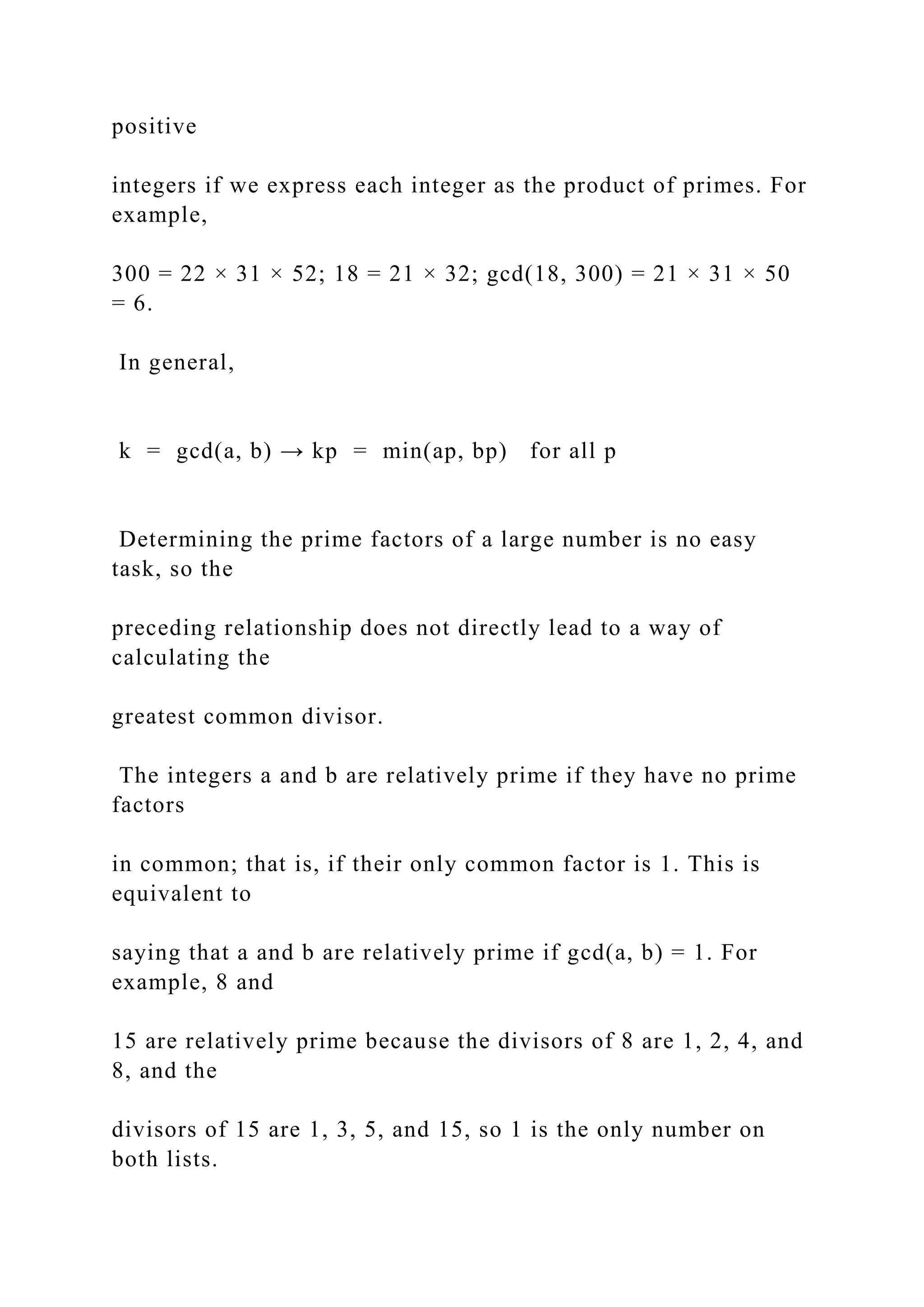
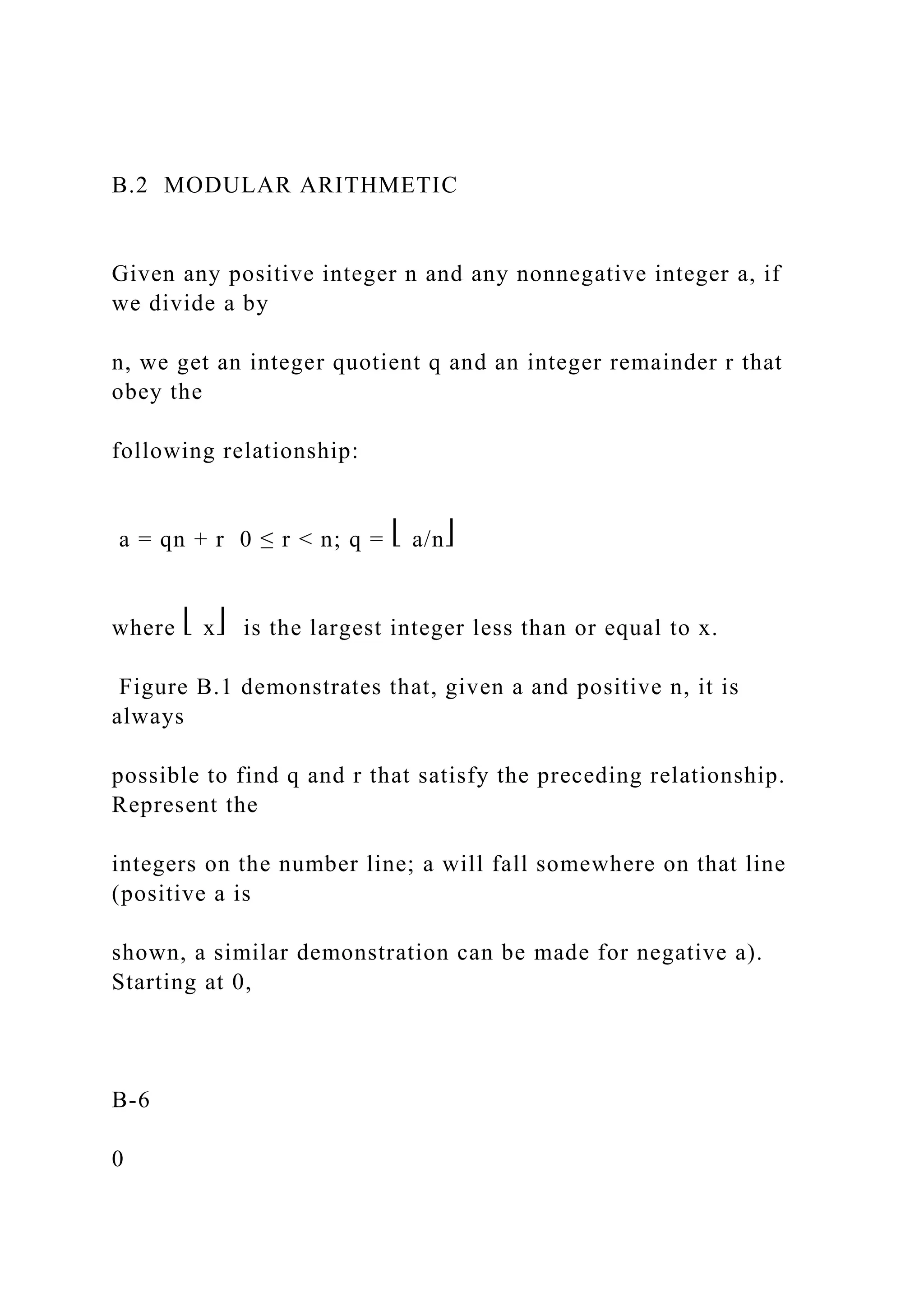
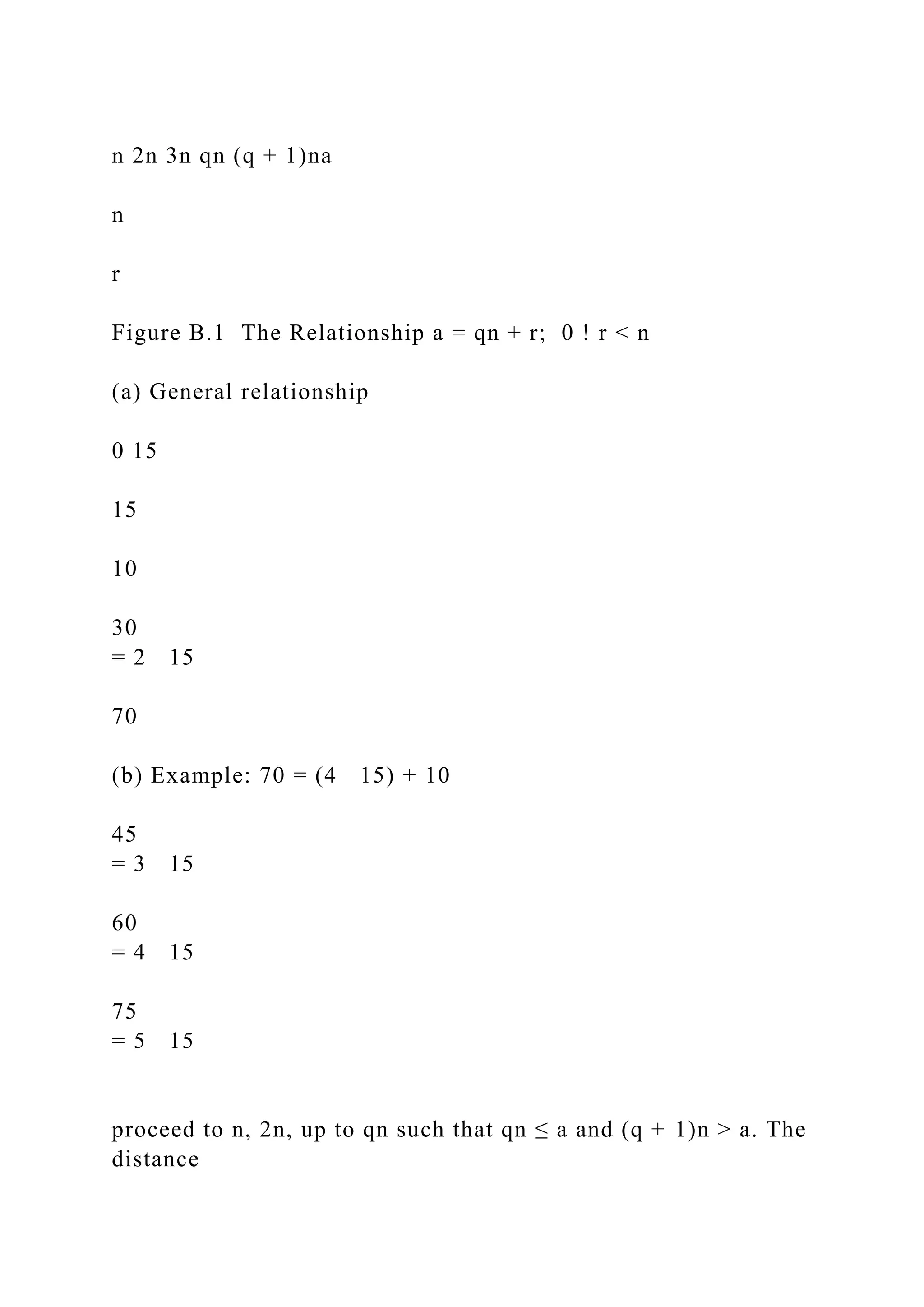
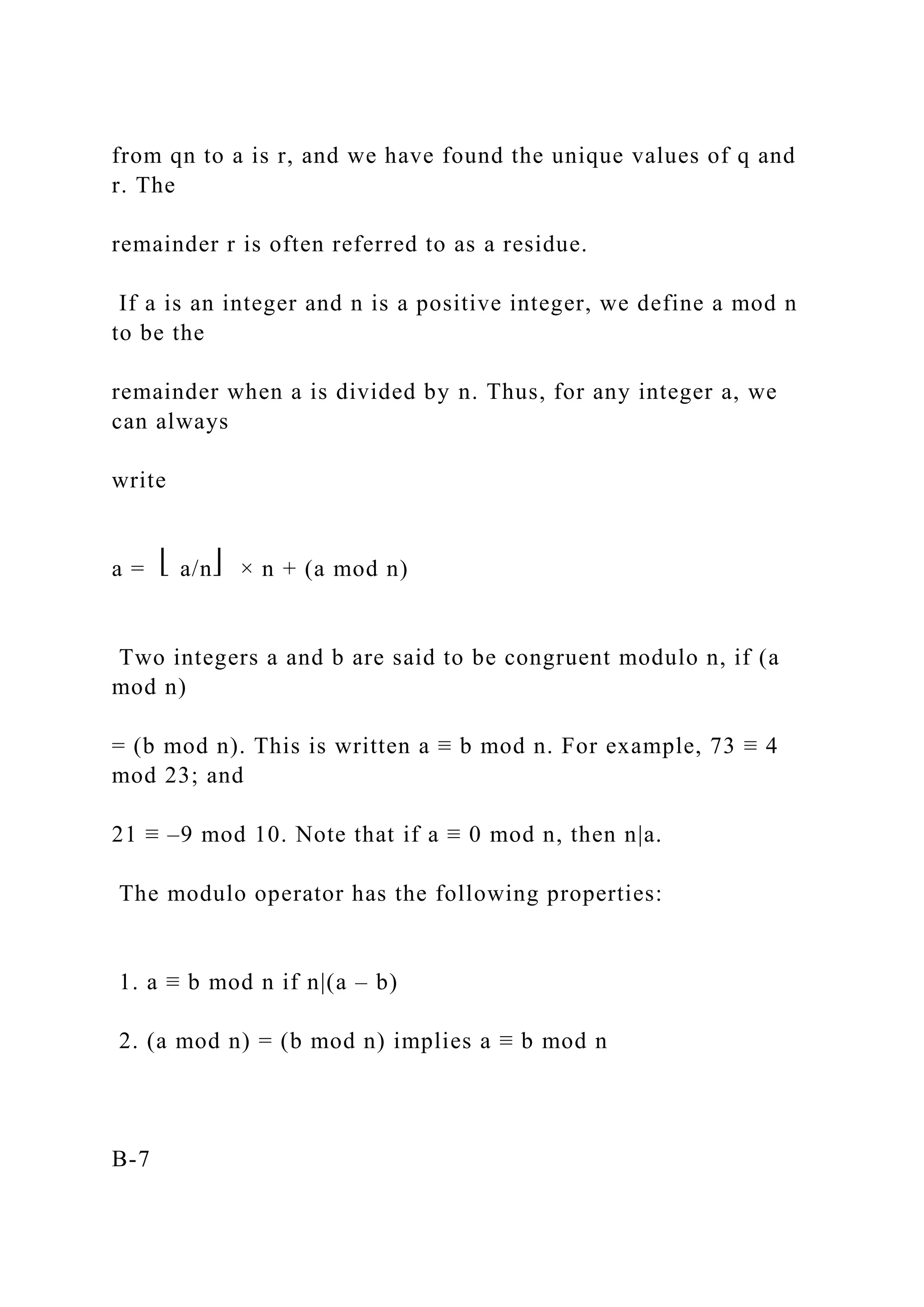
![3. a ≡ b mod n implies b ≡ a mod n
4. a ≡ b mod n and b ≡ c mod n imply a ≡ c mod n
To demonstrate the first point, if n|(a – b), then (a – b) = kn for
some
k. So we can write a = b + kn. Therefore, (a mod n) =
(remainder when b +
kn is divided by n) = (remainder when b is divided by n) = (b
mod n). The
remaining points are as easily proved.
Modular Arithmetic Operations
The (mod n) operator maps all integers into the set of integers
{0, 1, . . . (n
– 1)}. This suggests the question, Can we perform arithmetic
operations
within the confines of this set? It turns out that we can; the
technique is
known as modular arithmetic.
Modular arithmetic exhibits the following properties:
1. [(a mod n) + (b mod n)] mod n = (a + b) mod n](https://image.slidesharecdn.com/securityconceptsdr-221108015128-ae719b02/75/Security-ConceptsDr-Y-ChuCIS3360-Security-in-Computing-docx-44-2048.jpg)
![2. [(a mod n) – (b mod n)] mod n = (a – b) mod n
3. [(a mod n) × (b mod n)] mod n = (a × b) mod n
We demonstrate the first property. Define (a mod n) = ra and (b
mod n)
= rb. Then we can write a = ra + jn for some integer j and b = rb
+ kn for
some integer k. Then
(a + b) mod n = (ra + jn + rb + kn) mod n
= (ra + rb + (k + j)n) mod n
= (ra + rb) mod n
= [(a mod n) + (b mod n)] mod n
B-8
The remaining properties are as easily proved.
Inverses
As in ordinary arithmetic, we can write the following:](https://image.slidesharecdn.com/securityconceptsdr-221108015128-ae719b02/75/Security-ConceptsDr-Y-ChuCIS3360-Security-in-Computing-docx-45-2048.jpg)
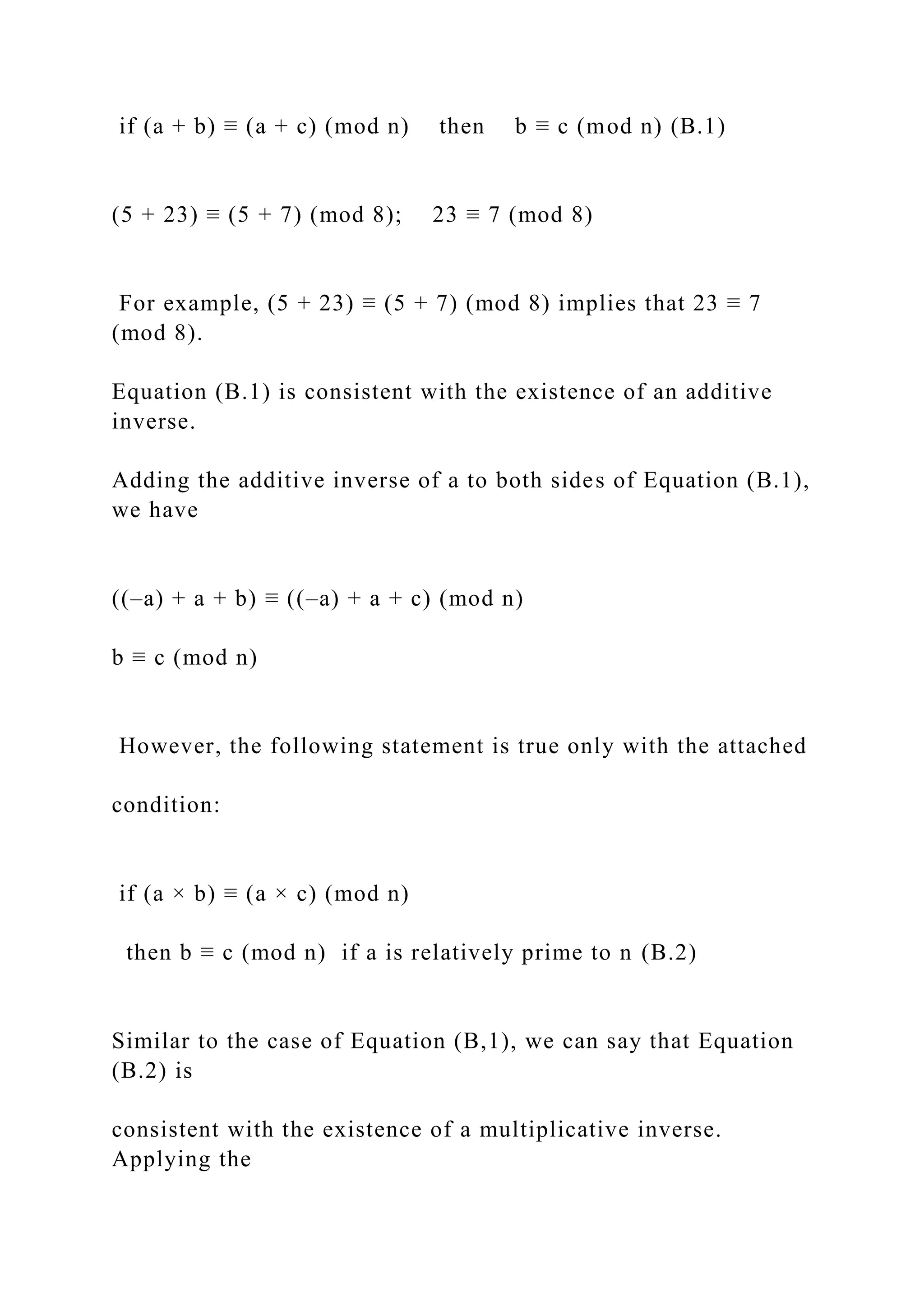
![multiplicative inverse of a to both sides of Equation (B.2), we
have
((a–1)ab) ≡ ((a–1)ac) (mod n)
b ≡ c (mod n)
B-9
The proof that we must add the condition in Equation (B.2) is
beyond the
scope of this book but is explored in [STAL11b].
B.3 FERMAT'S AND EULER'S THEOREMS
Two theorems that play important roles in public-key
cryptography are
Fermat's theorem and Euler's theorem.
Fermat's Theorem1
Fermat's theorem states the following: If p is prime and a is a
positive
integer not divisible by p, then](https://image.slidesharecdn.com/securityconceptsdr-221108015128-ae719b02/75/Security-ConceptsDr-Y-ChuCIS3360-Security-in-Computing-docx-47-2048.jpg)
![ap–1 ≡ 1 (mod p) (B.3)
Proof: Consider the set of positive integers less than p: {1, 2,
…, p – 1} and
multiply each element by a, modulo p, to get the set X = {a mod
p, 2a mod
p, . . . (p – 1)a mod p}. None of the elements of X is equal to
zero because
p does not divide a. Furthermore, no two of the integers in X are
equal. To
see this, assume that ja ≡ ka (mod p), where 1 ≤ j < k ≤ p – 1.
Because a is
relatively prime to p, we can eliminate a from both sides of the
equation
[see Equation (B.2)] resulting in j ≡ k (mod p). This last
equality is
impossible because j and k are both positive integers less than
p. Therefore,
we know that the (p – 1) elements of X are all positive integers,
with no two
elements equal. We can conclude the X consists of the set of
integers {1, 2,
…, p – 1} in some order. Multiplying the numbers in both sets
and taking the](https://image.slidesharecdn.com/securityconceptsdr-221108015128-ae719b02/75/Security-ConceptsDr-Y-ChuCIS3360-Security-in-Computing-docx-48-2048.jpg)
![result mod p yields
1 This is sometimes referred to as Fermat's little theorem.
B-10
a × 2a × . . . × (p – 1)a ≡ [(1× 2 × …× (p – 1)] (mod p)
ap–1(p – 1)! ≡ (p – 1)! (mod p)
We can cancel the (p – 1)! term because it is relatively prime to
p [see
Equation (B.2)]. This yields Equation (B.3).
a = 7, p = 19
72 = 49 ≡ 11 (mod 19)
74 ≡ 121 ≡ 7 (mod 19)
78 ≡ 49 ≡ 11 (mod 19)
716 ≡ 121 ≡ 7 (mod 19)
ap–1 = 718 = 716 × 72 ≡ 7 × 11 ≡ 1 (mod 19)
An alternative form of Fermat's theorem is also useful: If p is
prime and
a is a positive integer, then
ap ≡ a (mod p) (B.4)](https://image.slidesharecdn.com/securityconceptsdr-221108015128-ae719b02/75/Security-ConceptsDr-Y-ChuCIS3360-Security-in-Computing-docx-49-2048.jpg)
![Note that the first form of the theorem [Equation (B.3)] requires
that a be
relatively prime to p, but this form does not.
p = 5, a = 3 ap = 35 = 243 ≡ 3 (mod 5) = a (mod p)
p = 5, a = 10 ap = 105 = 100000 ≡ 10 (mod 5) ≡ 0 (mod 5) = a
(mod p)
Euler's Totient Function
Before presenting Euler's theorem, we need to introduce an
important
quantity in number theory, referred to as Euler's totient function
and written
φ(n), defined as the number of positive integers less than n and
relatively
prime to n.
B-11
Determine φ(37) and φ(35).
Because 37 is prime, all of the positive integers from 1 through
36 are
relatively prime to 37. Thus φ(37) = 36.
To determine φ(35), we list all of the positive integers less than](https://image.slidesharecdn.com/securityconceptsdr-221108015128-ae719b02/75/Security-ConceptsDr-Y-ChuCIS3360-Security-in-Computing-docx-50-2048.jpg)
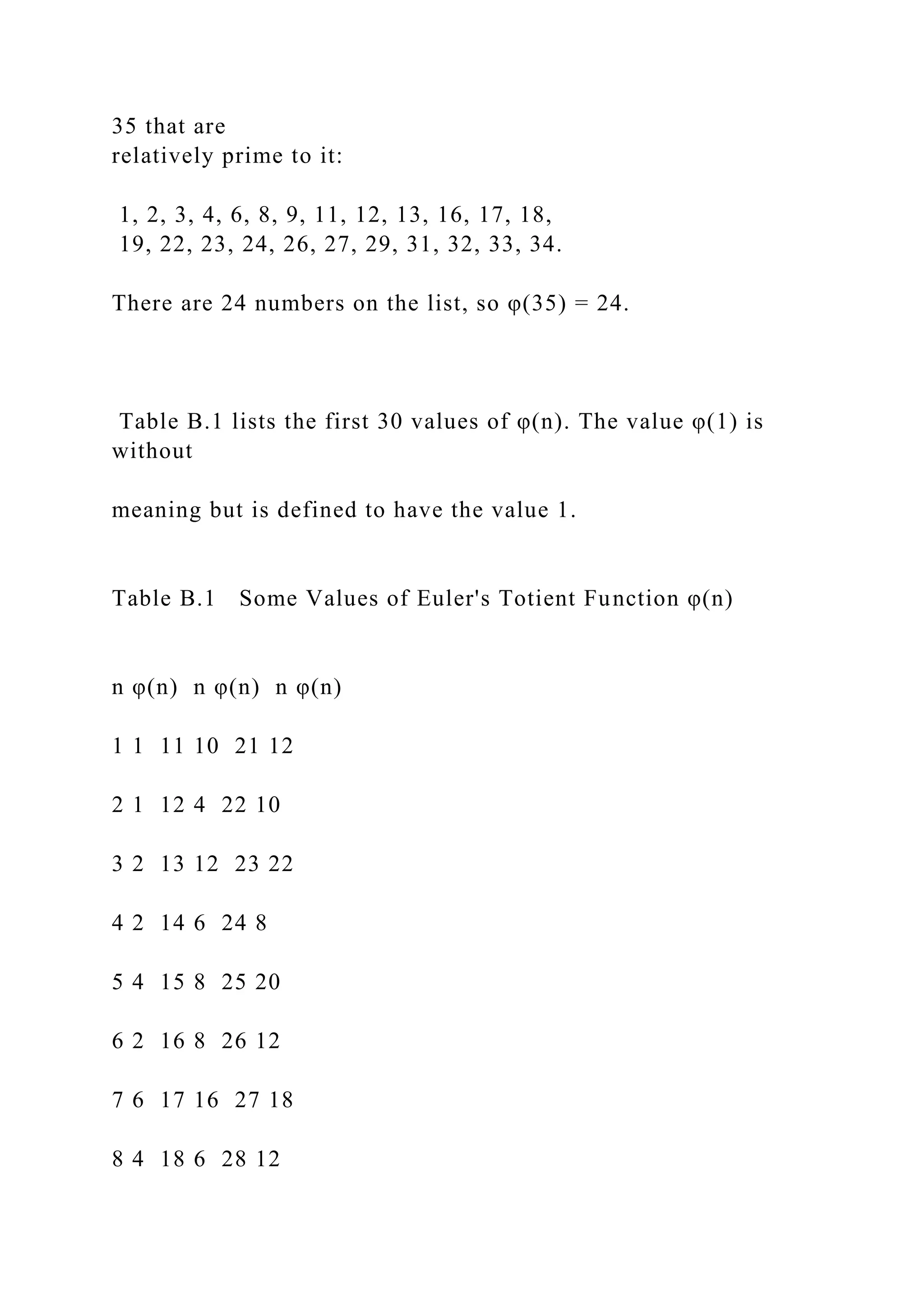

![φ(n) = (pq – 1) – [(q – 1) + (p – 1)]
= pq – (p + q) +1
= (p – 1) × (q – 1)
= φ(p) × φ(q)
φ(21) = φ(3) × φ(7) = (3 – 1) × (7 – 1) = 2 × 6 = 12
where the 12 integers are {1, 2, 4, 5, 8, 10, 11, 13, 16, 17, 19,
20}
Euler's Theorem
Euler's theorem states that for every a and n that are relatively
prime,
aφ(n) ≡ 1 (mod n) (B.5)
a = 3; n = 10; φ(10) = 4 aφ(n) = 34 = 81 ≡ 1 (mod 10) = 1
(mod n)
a = 2; n = 11; φ(11) = 10 aφ(n) = 210 = 1024 ≡ 1 (mod 11) = 1
(mod n)
B-13
Proof: Equation (B.5) is true if n is prime, because in that case
φ(n) = (n –](https://image.slidesharecdn.com/securityconceptsdr-221108015128-ae719b02/75/Security-ConceptsDr-Y-ChuCIS3360-Security-in-Computing-docx-53-2048.jpg)
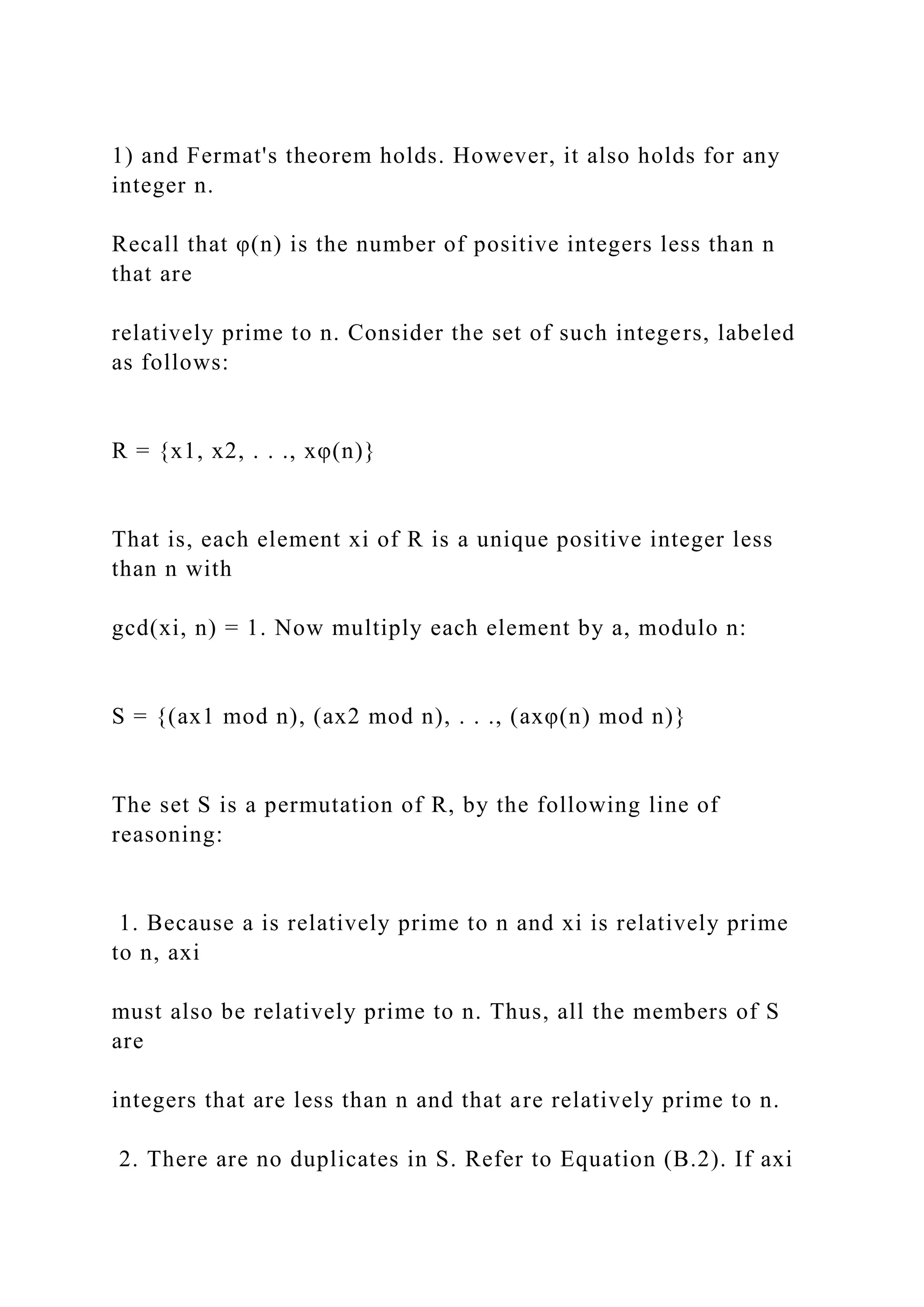
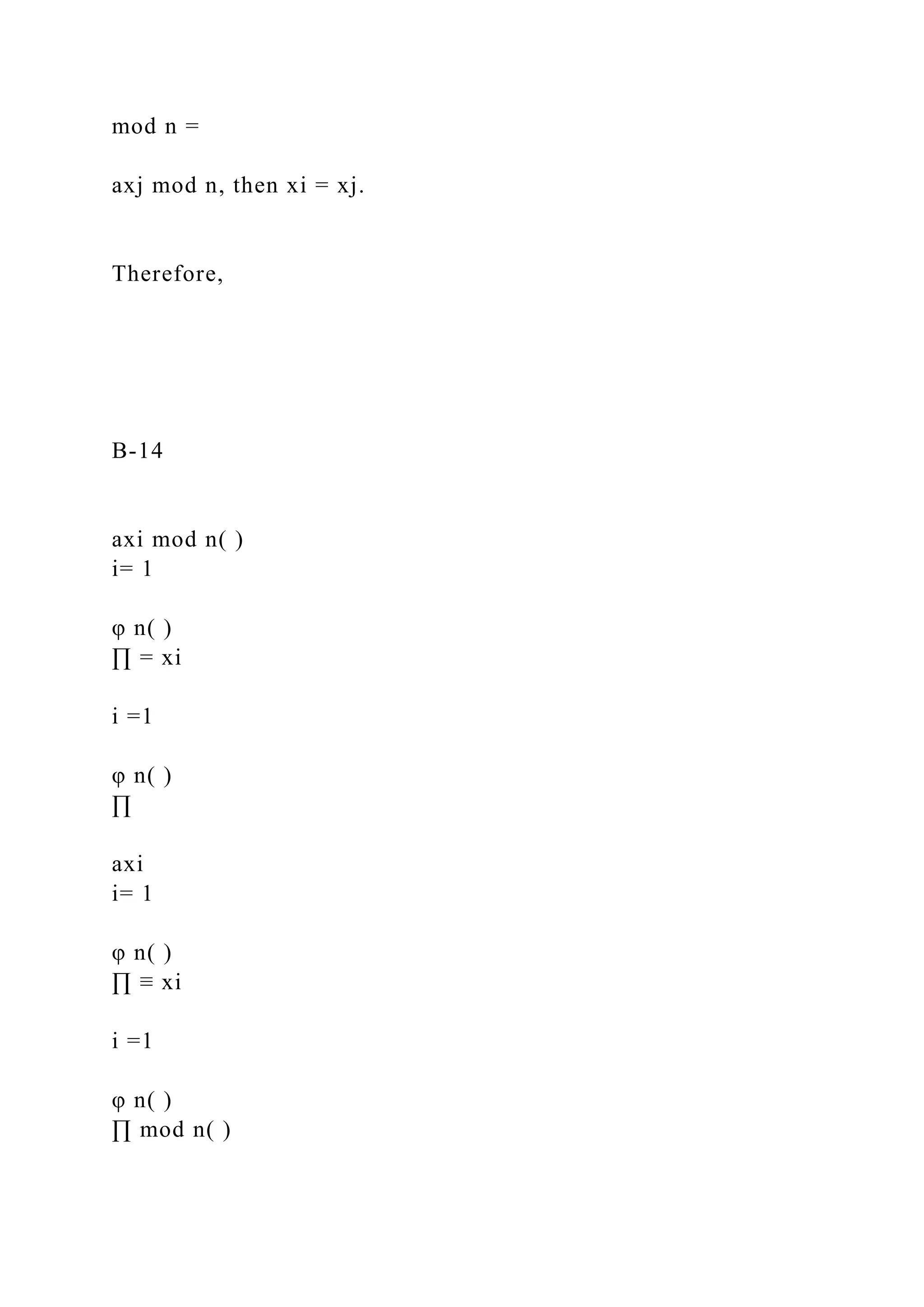
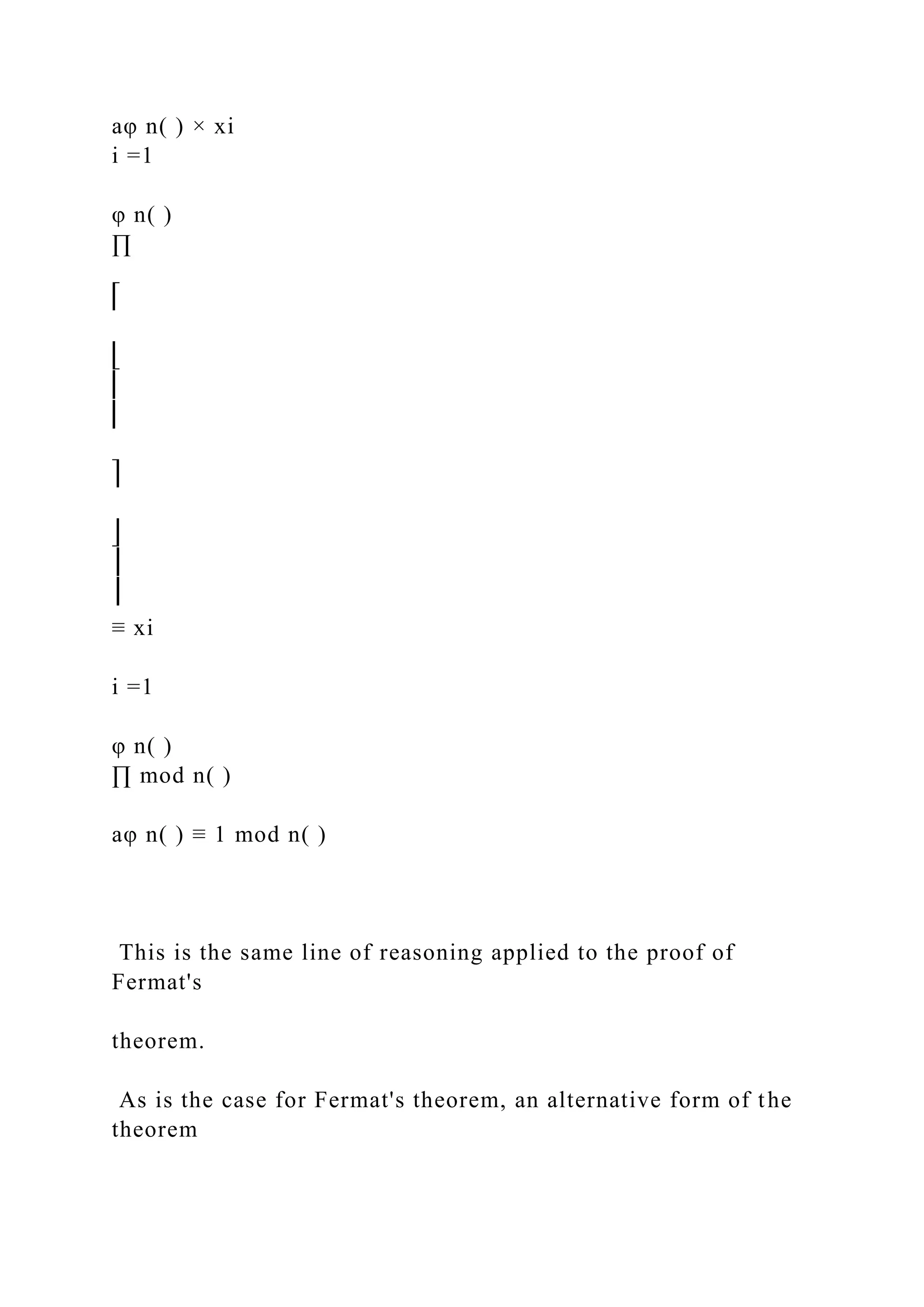
![is also useful:
aφ(n)+1 ≡ a (mod n) (B.6)
Again, similar to the case with Fermat's theorem, the first form
of Euler's
theorem [Equation (B.6)] requires that a be relatively prime to
n, but this
form does not.
Eustis Basics
Dr. Y. Chu
CIS3360: Security in Computing
0R02
Spring 2018](https://image.slidesharecdn.com/securityconceptsdr-221108015128-ae719b02/75/Security-ConceptsDr-Y-ChuCIS3360-Security-in-Computing-docx-57-2048.jpg)
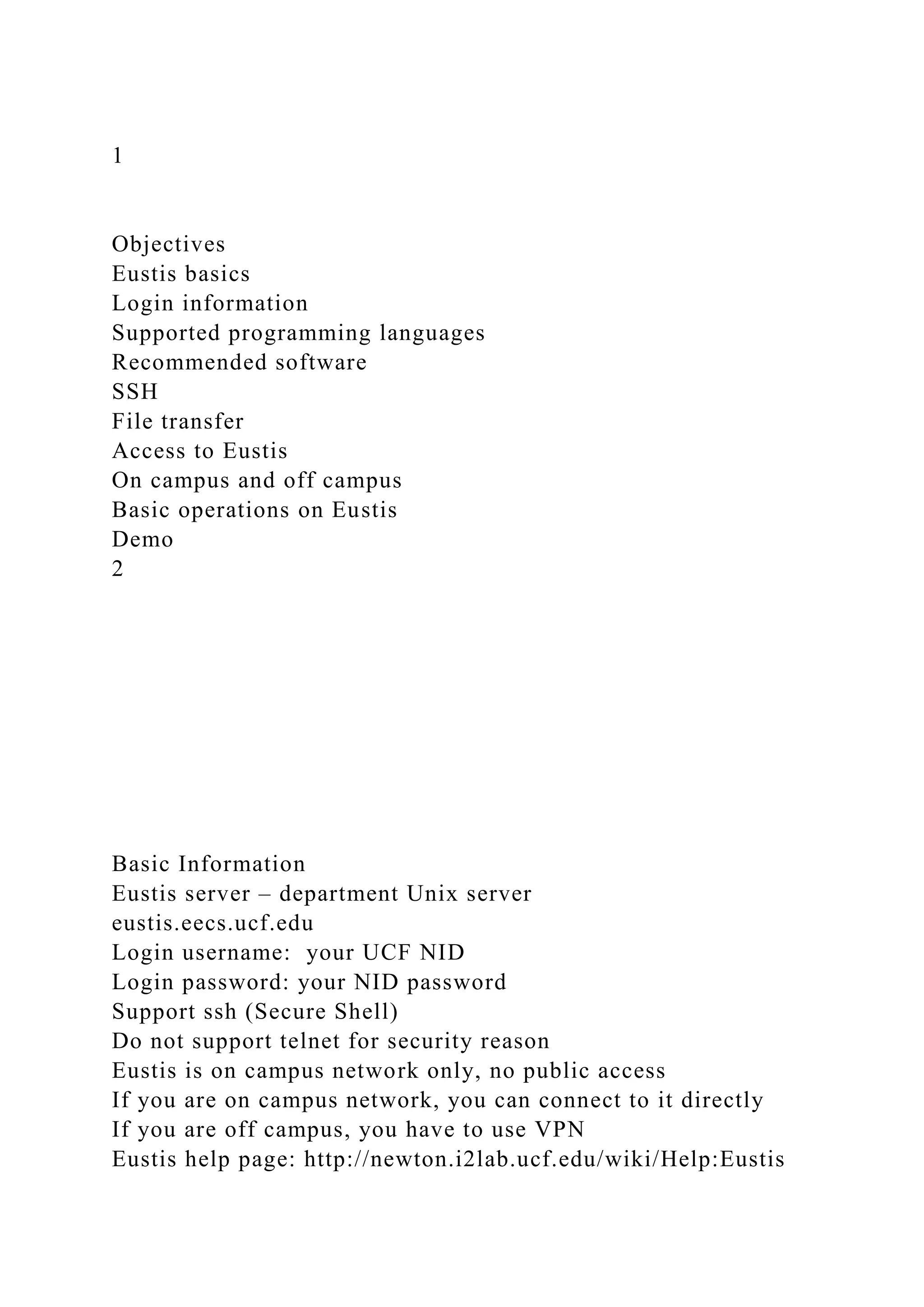
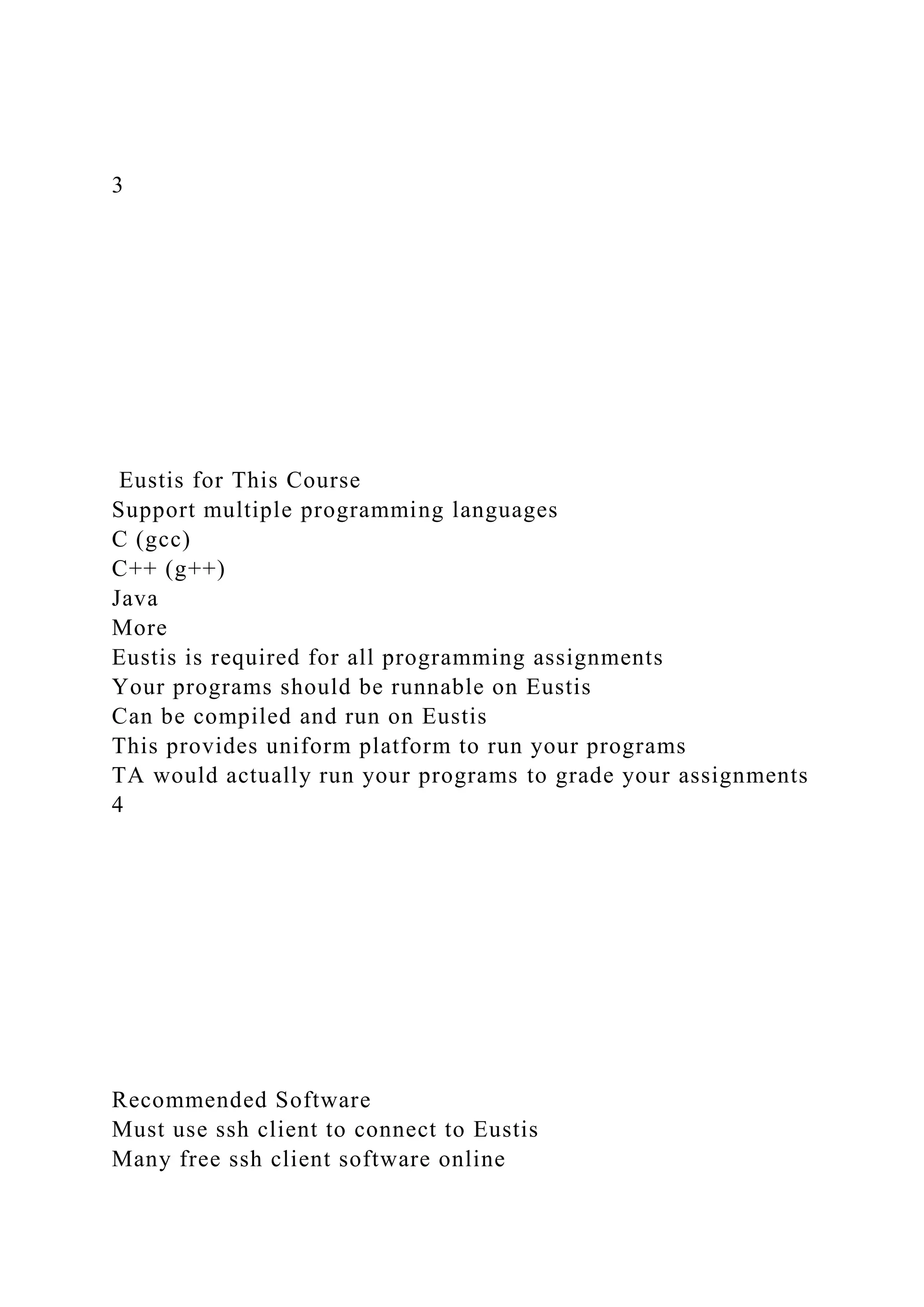
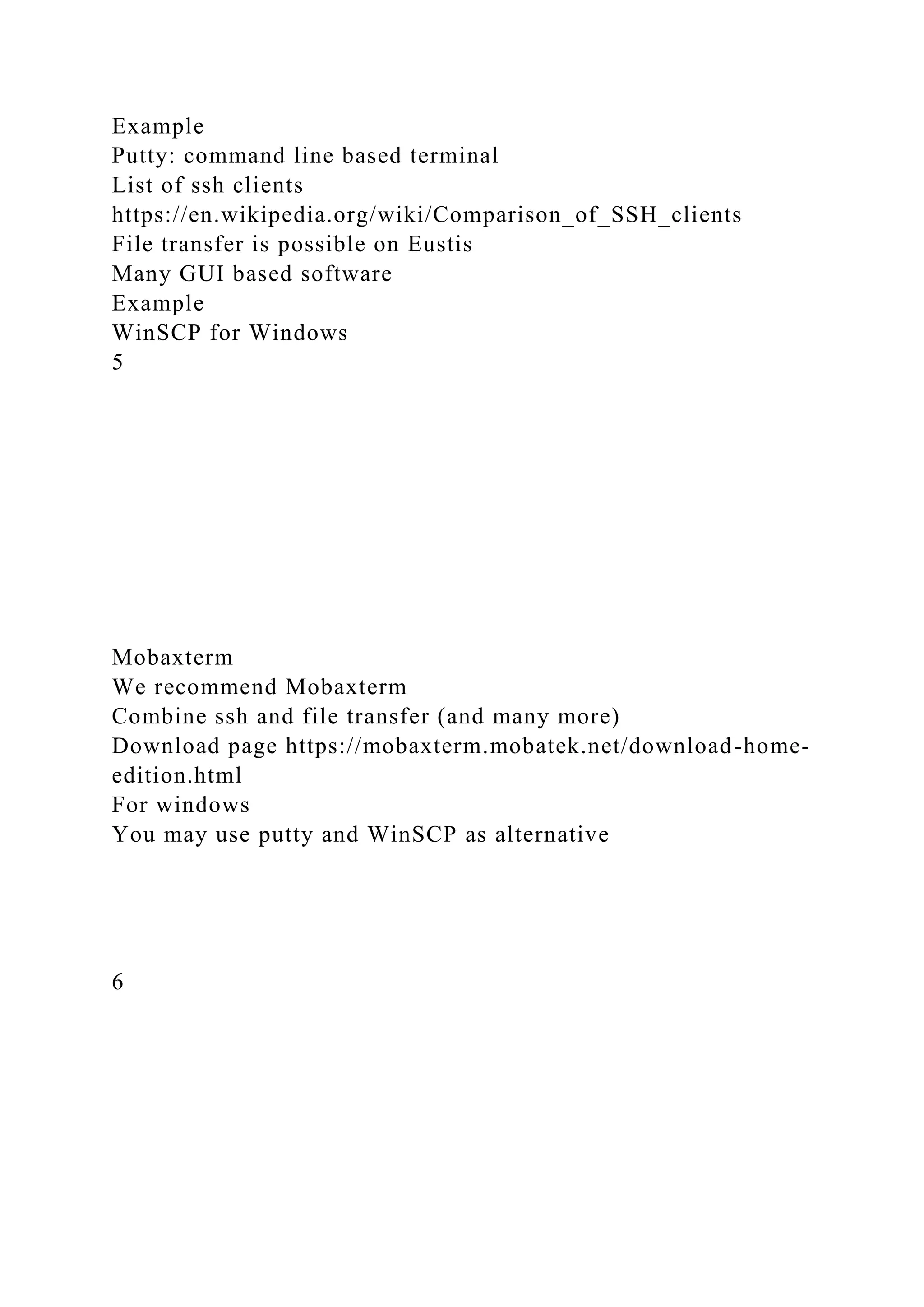

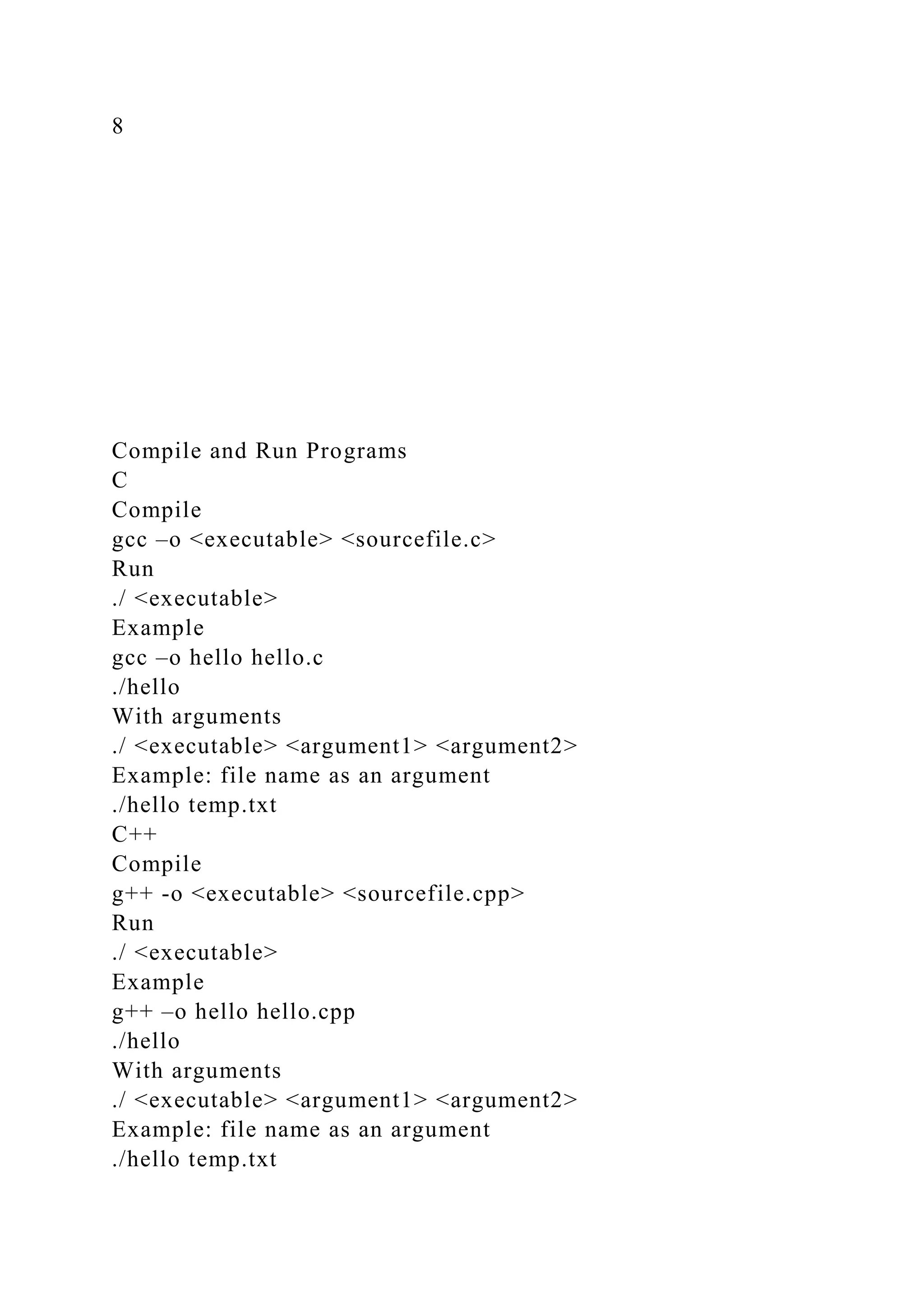
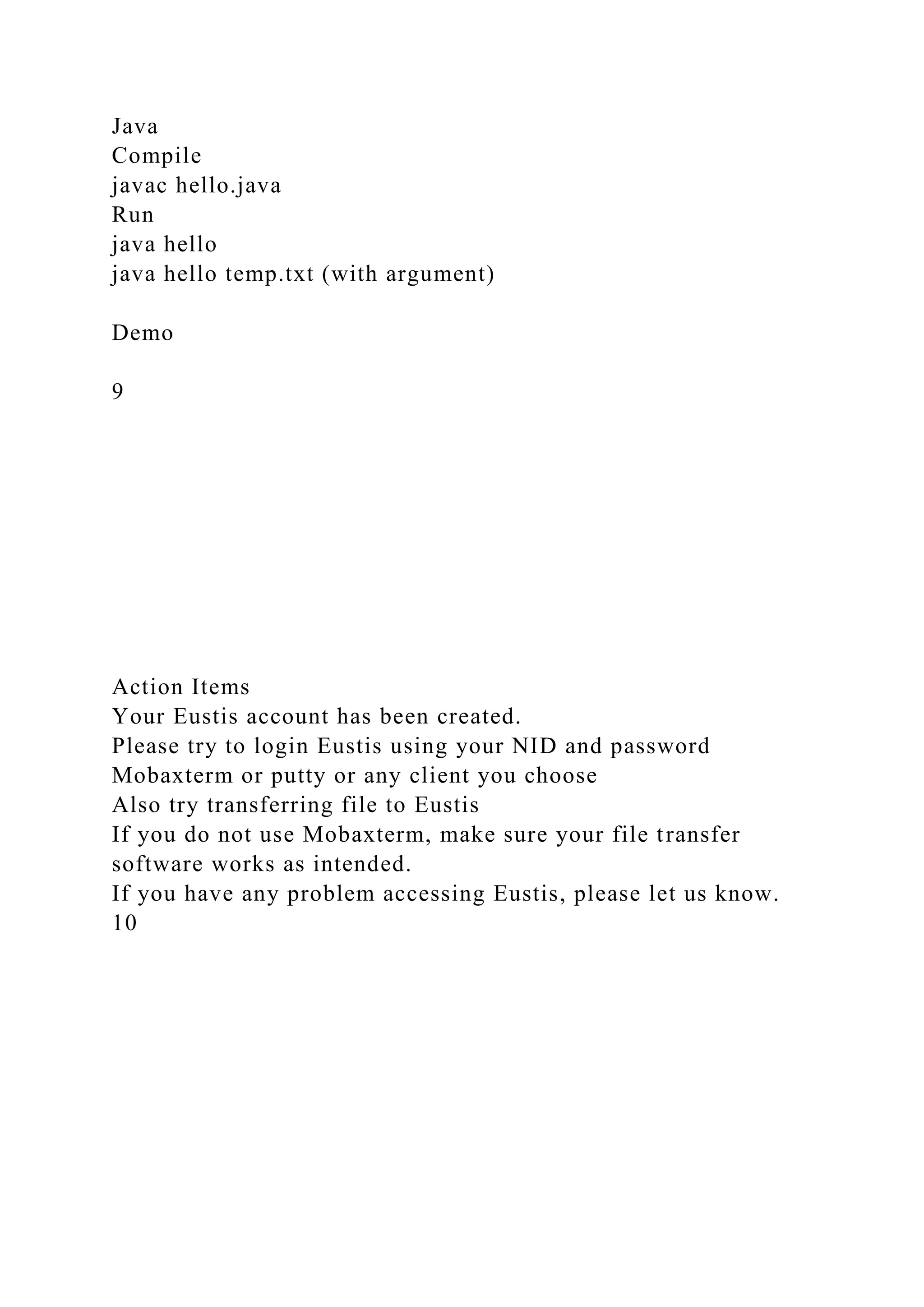
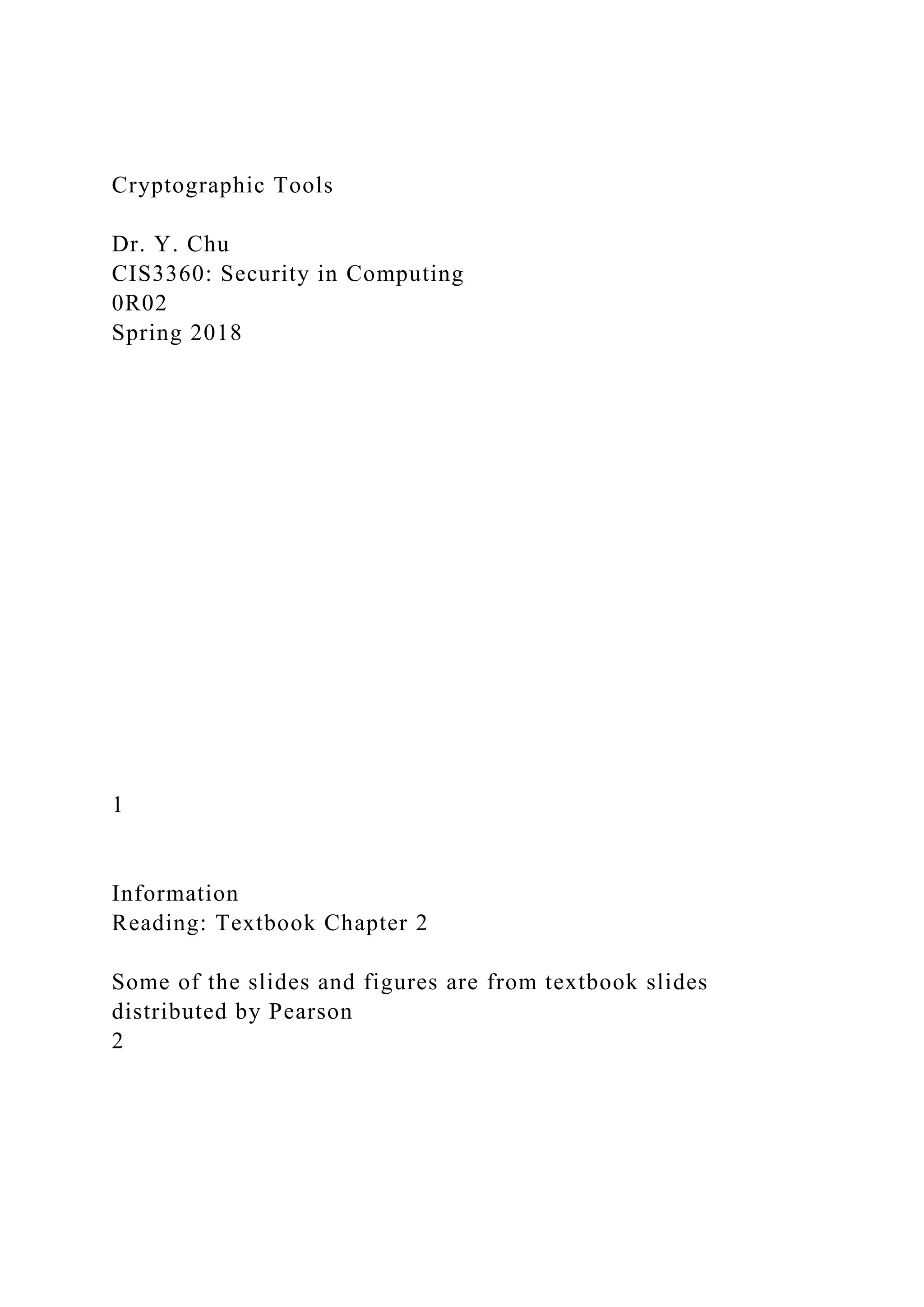
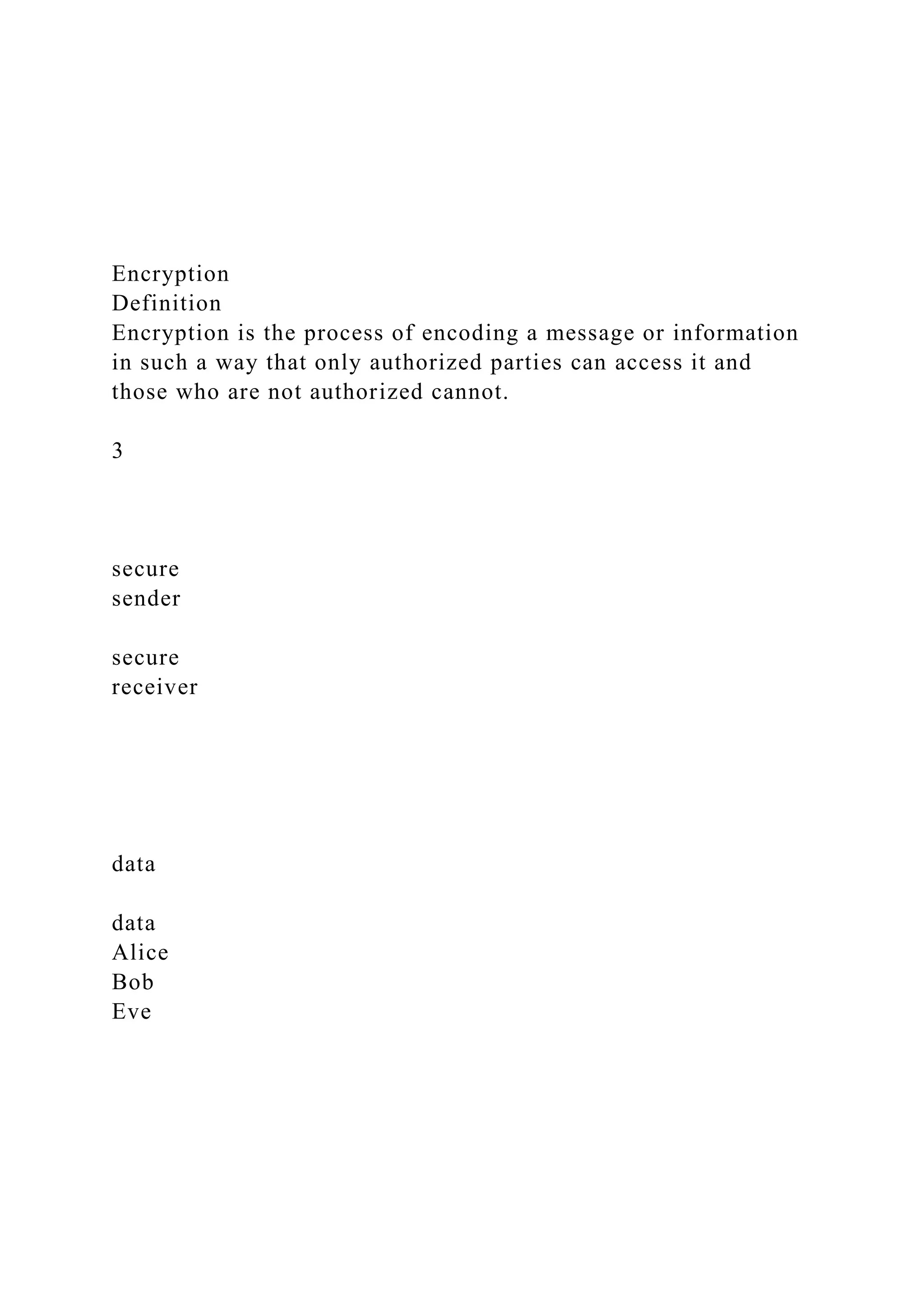
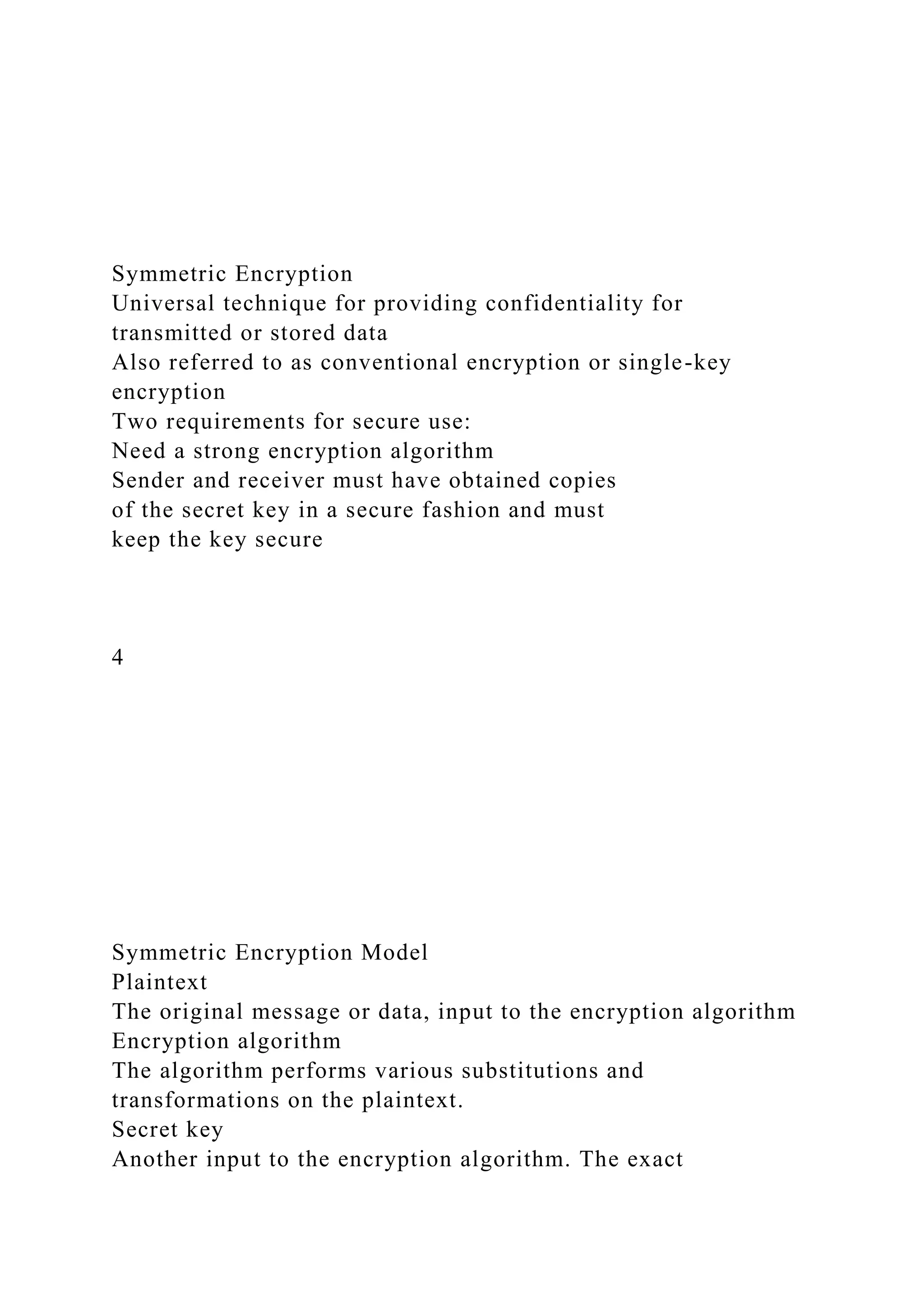
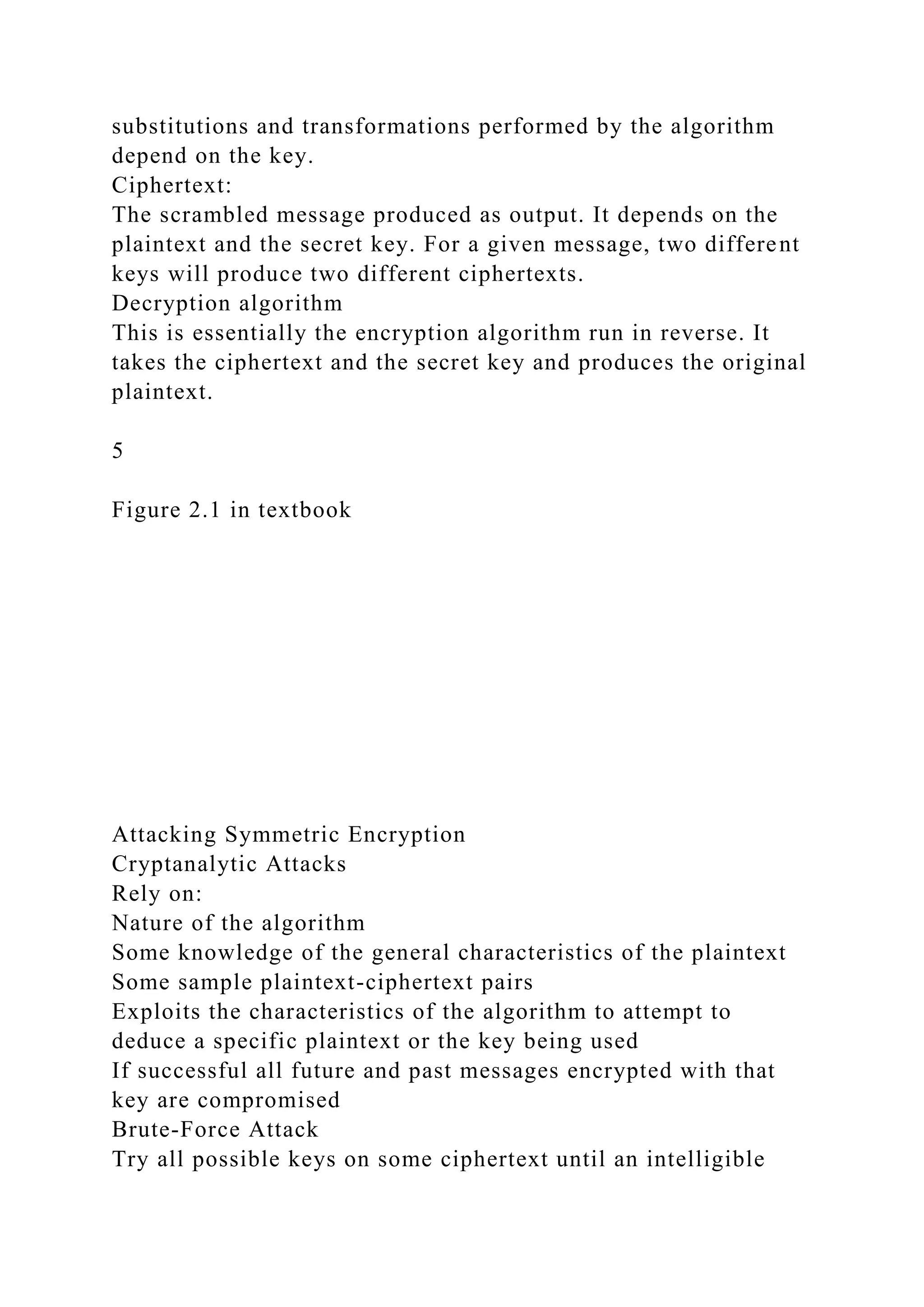
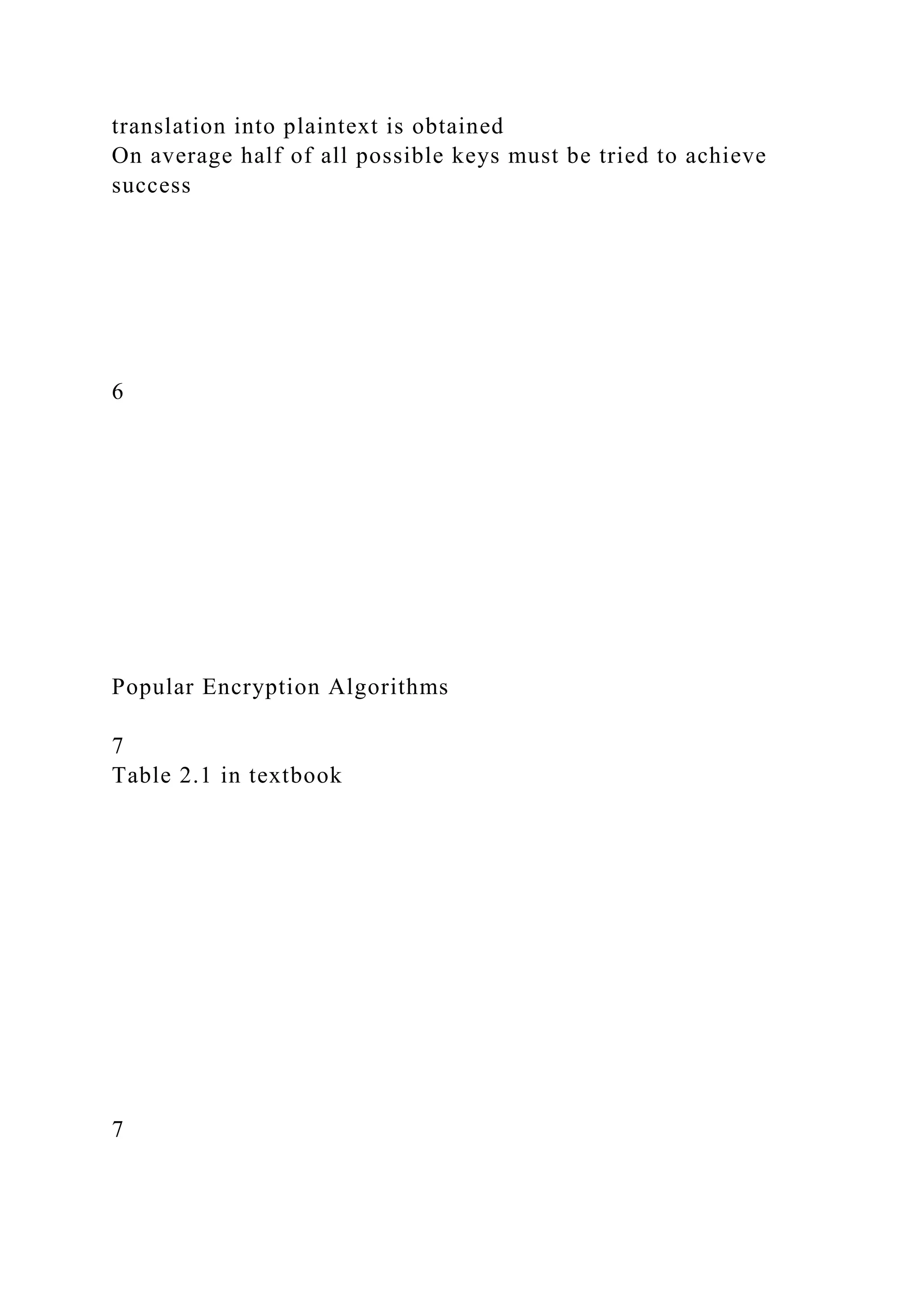
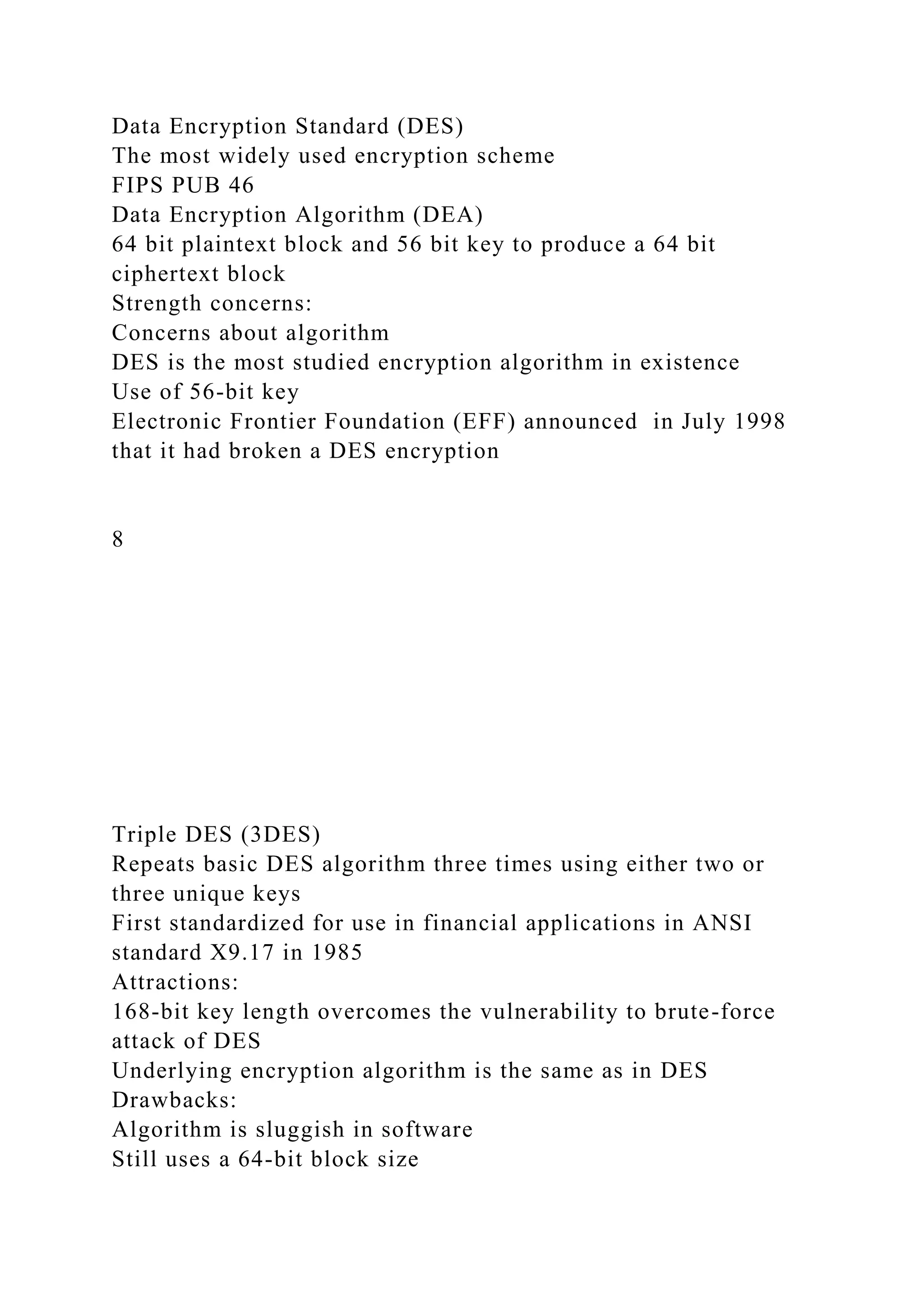
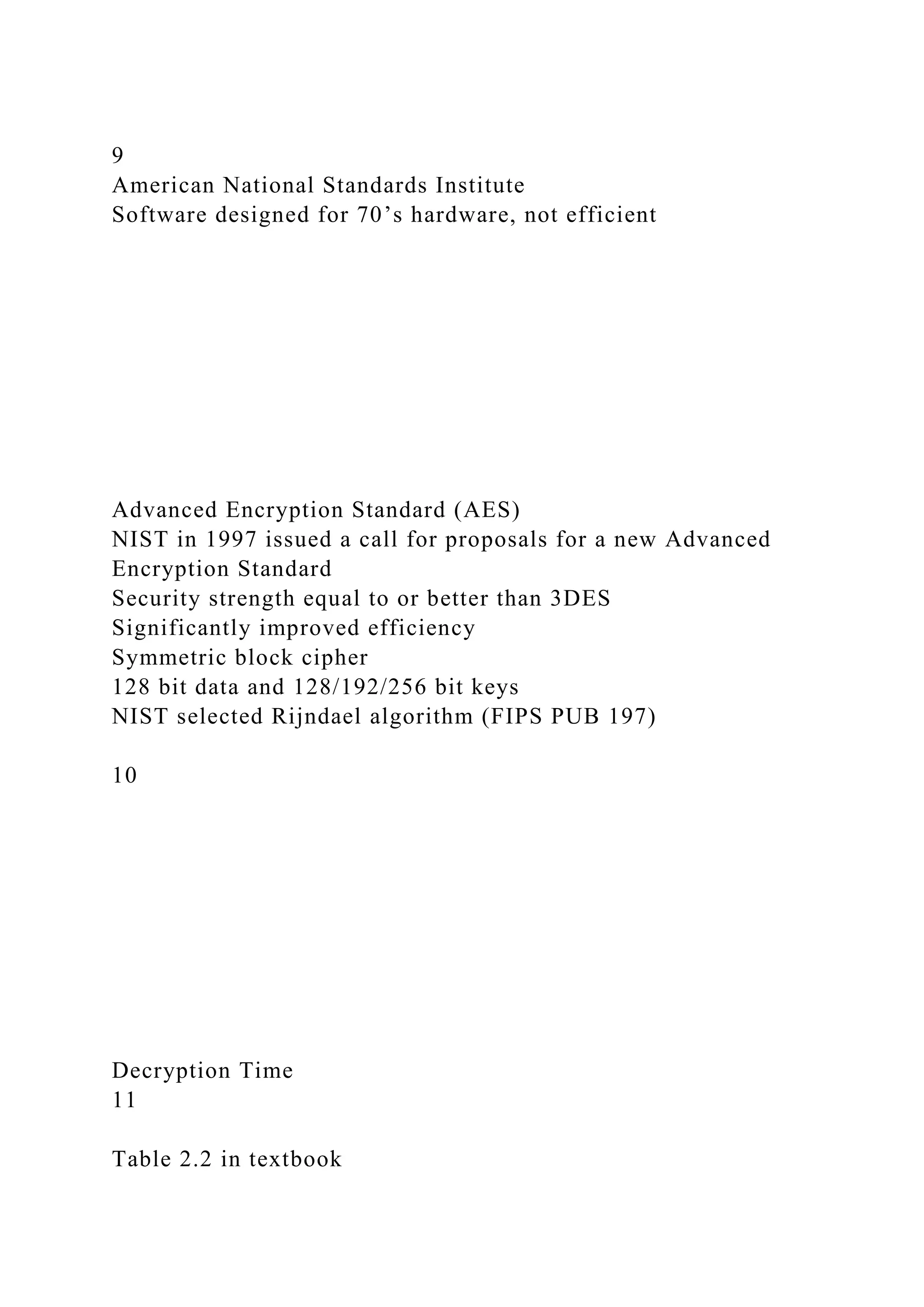
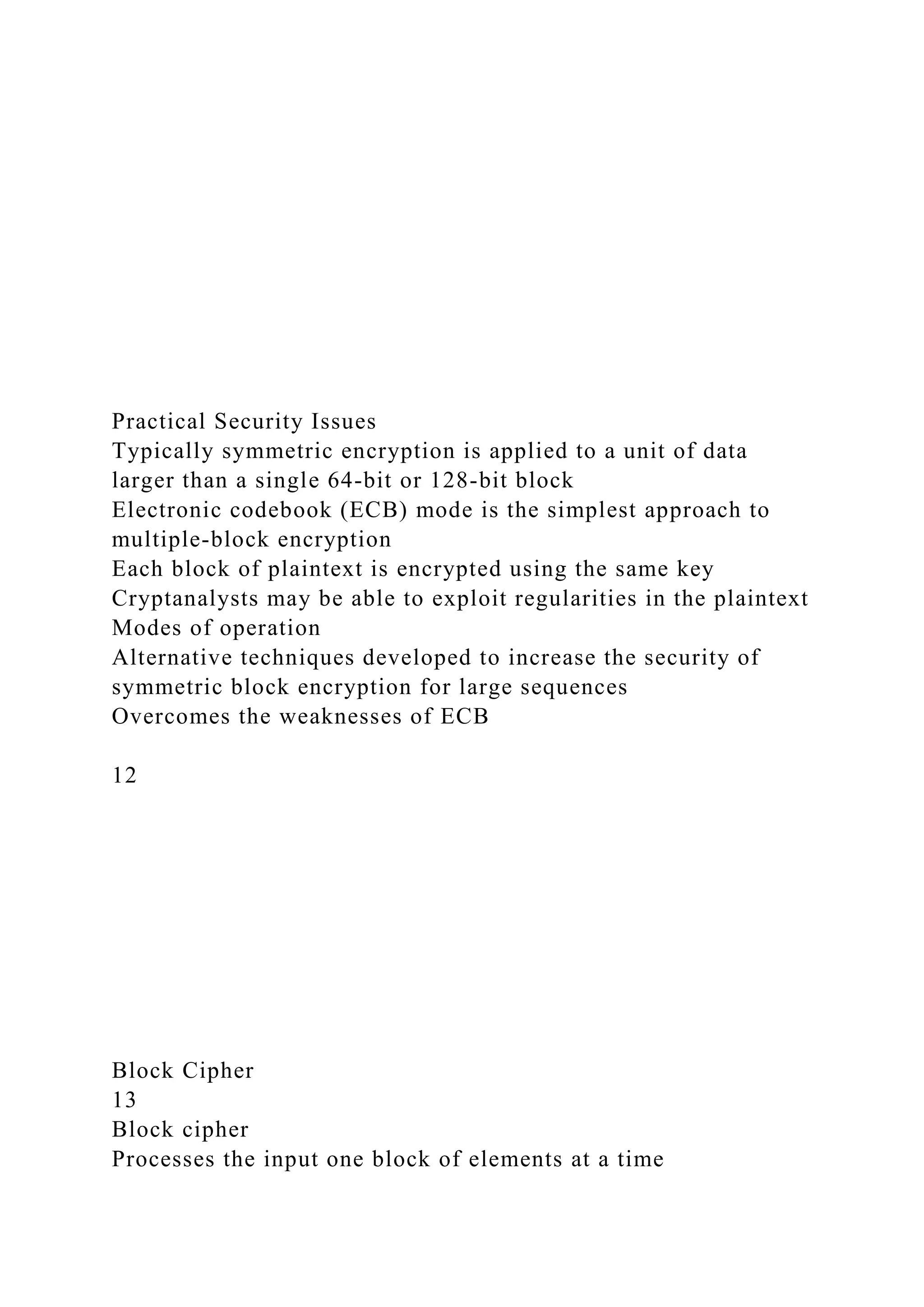



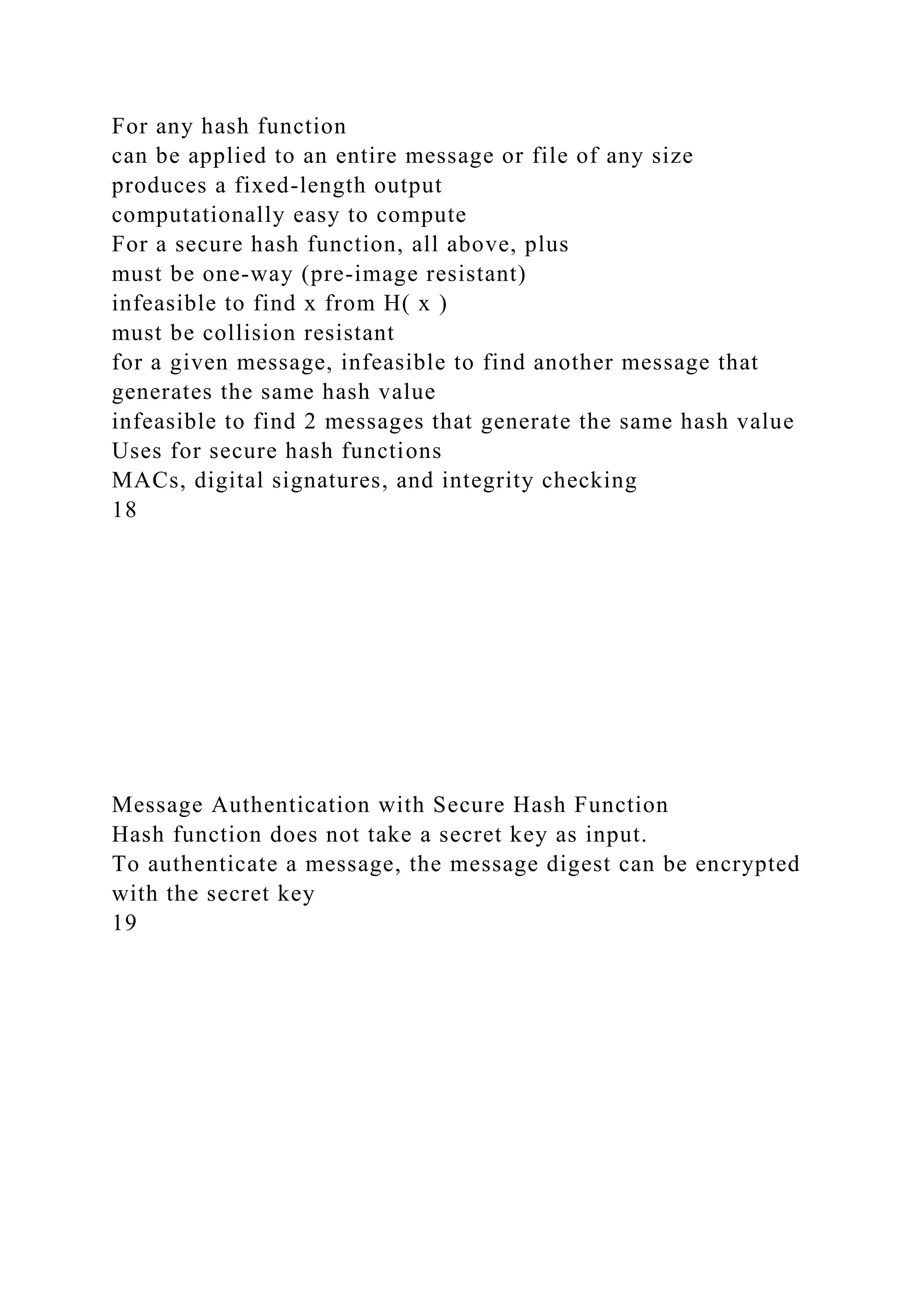
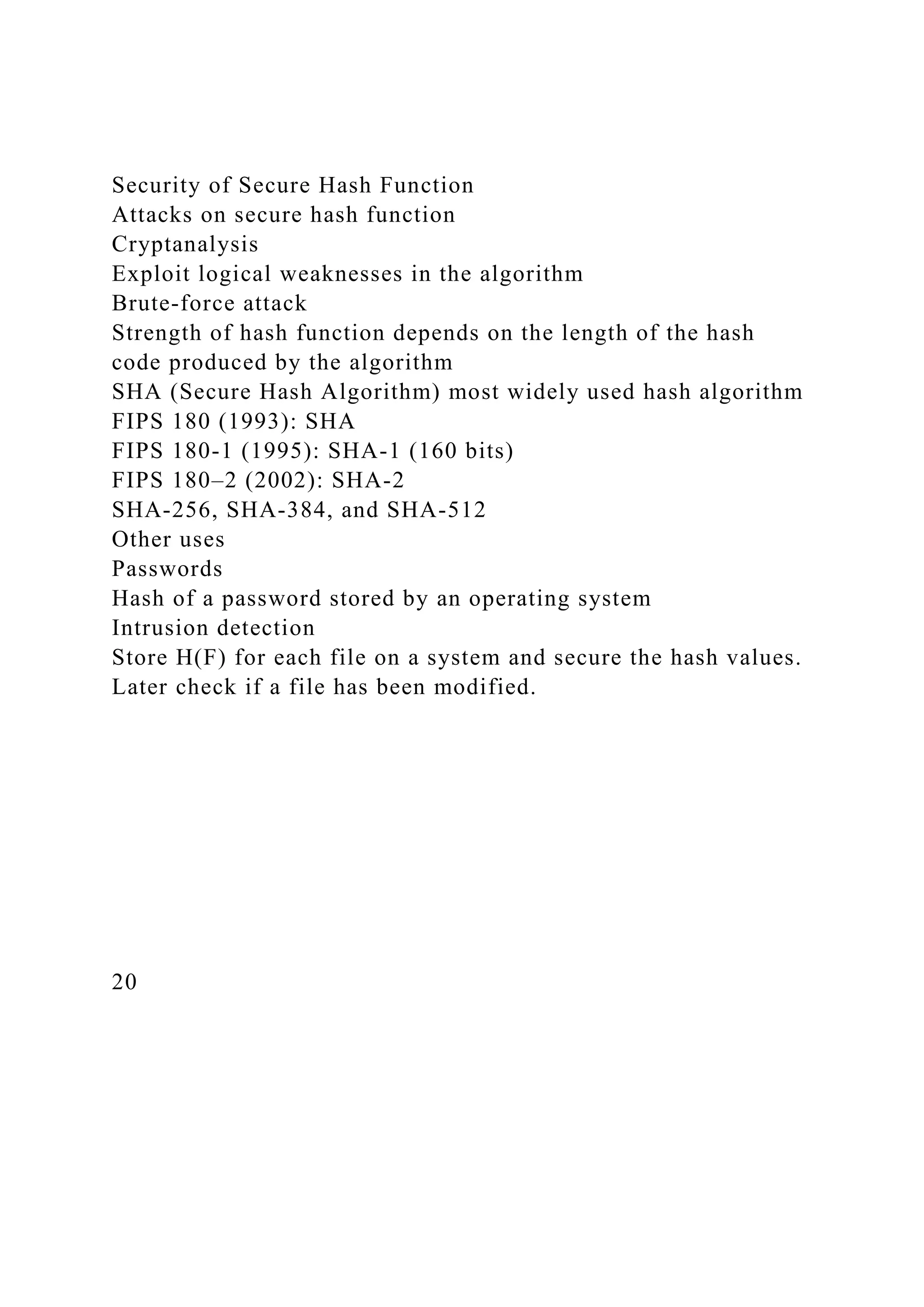
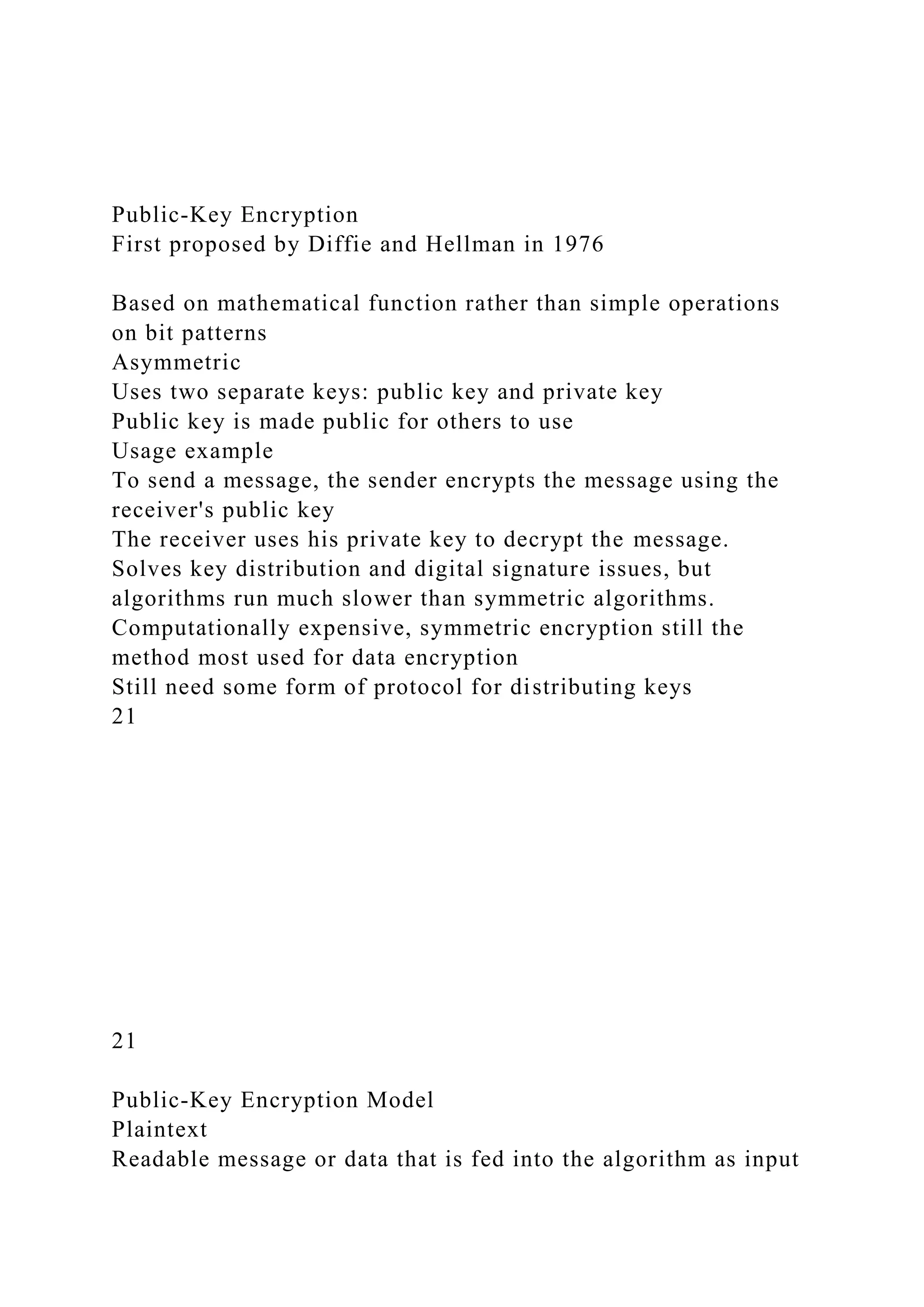
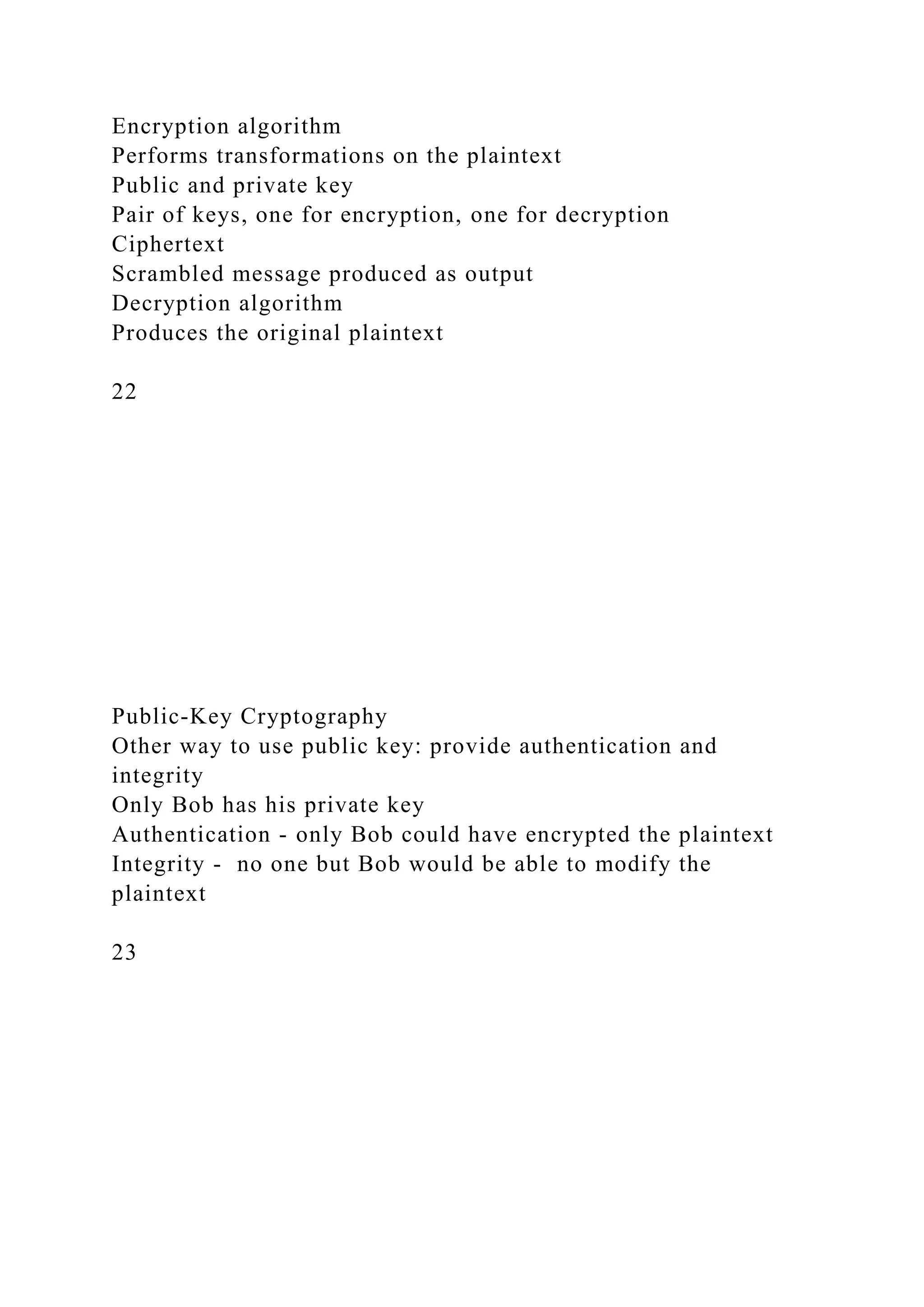
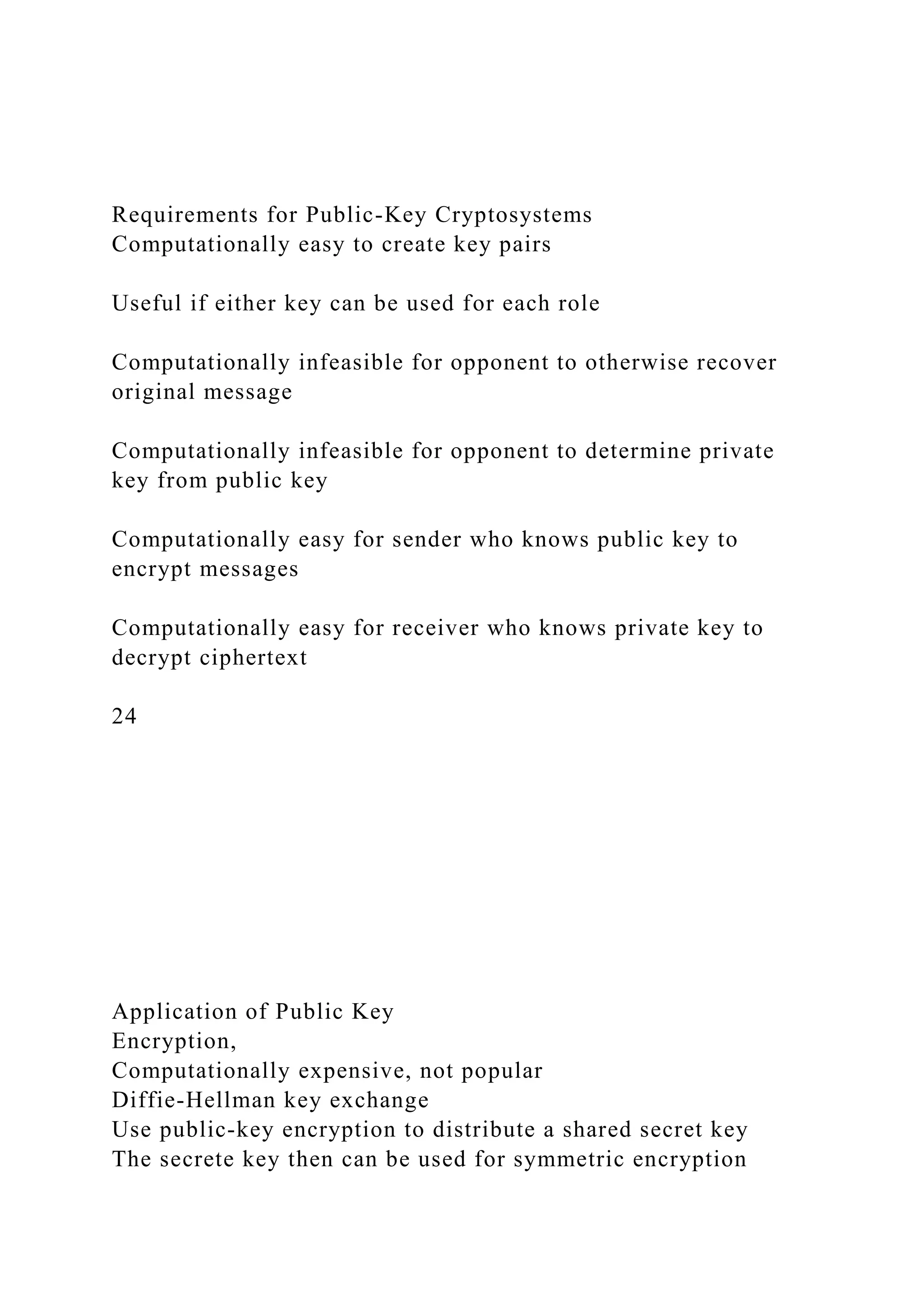
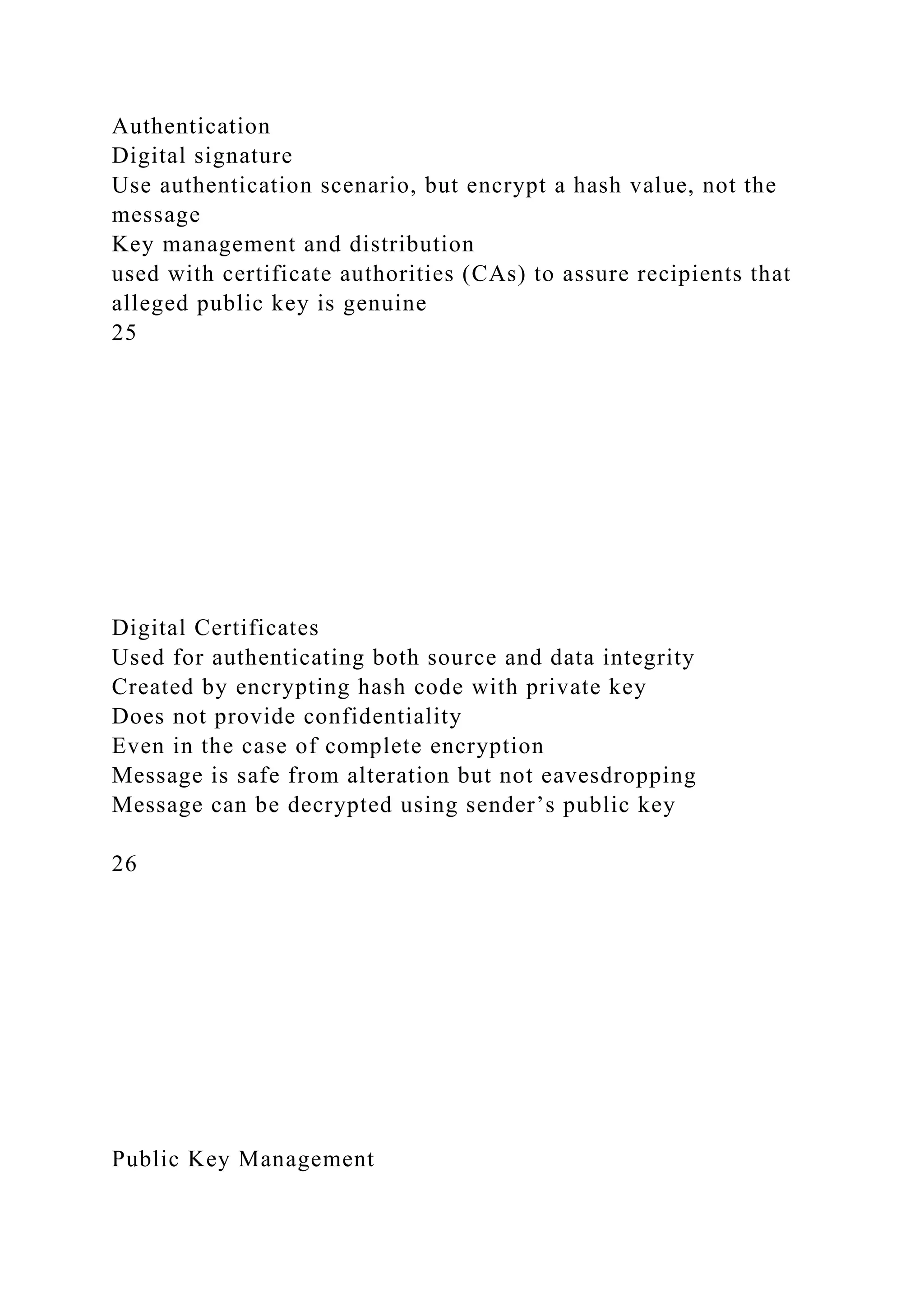



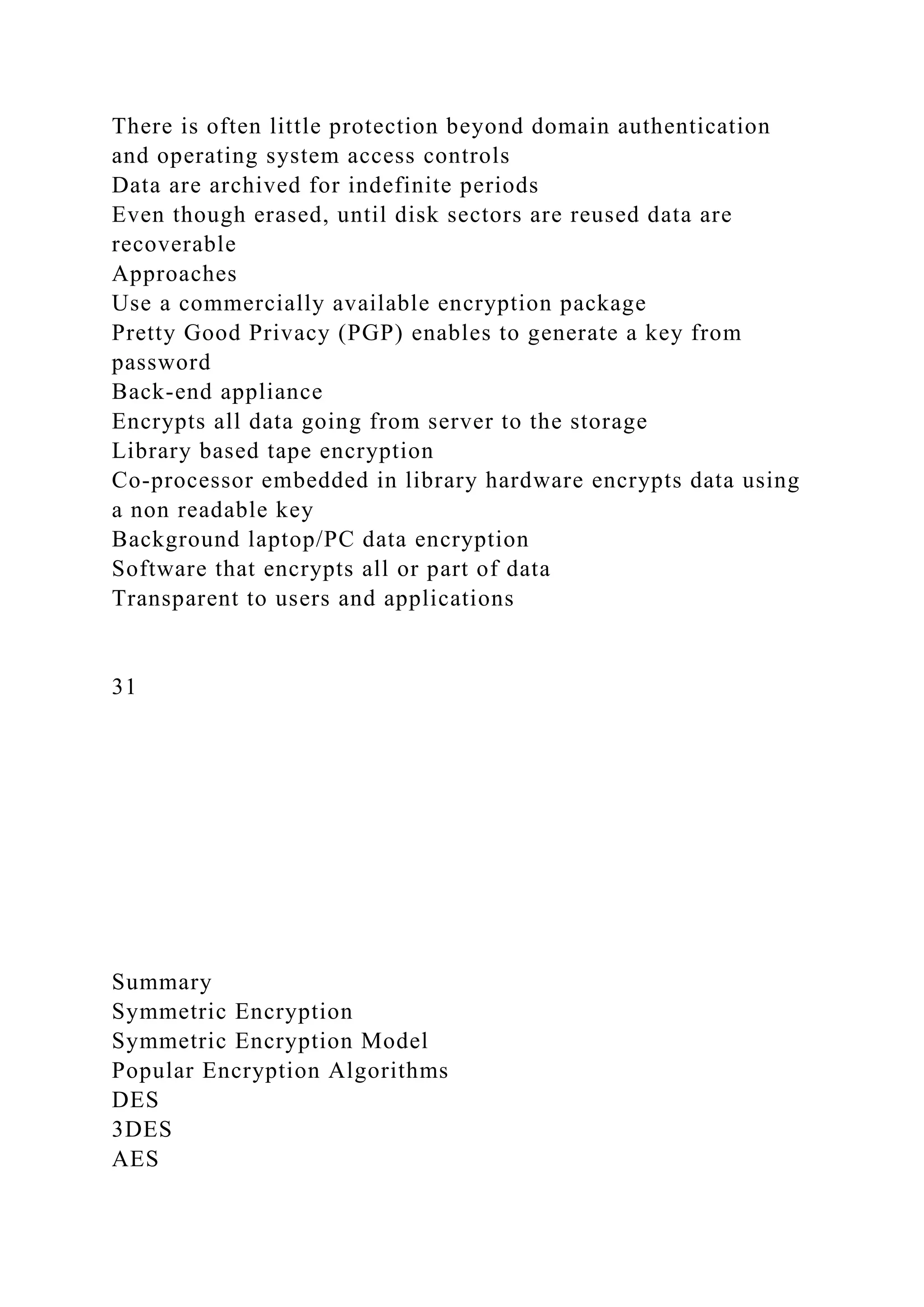
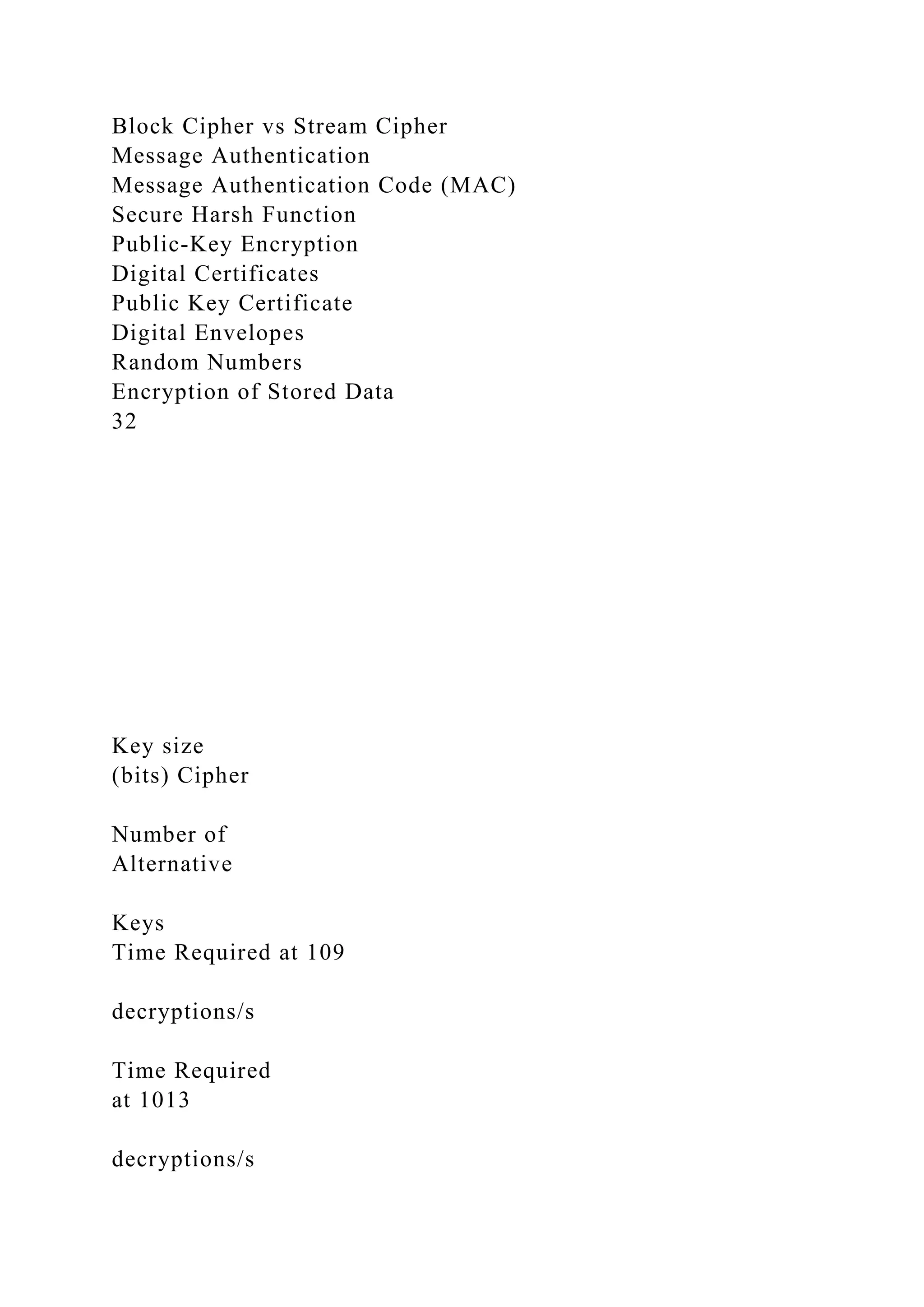

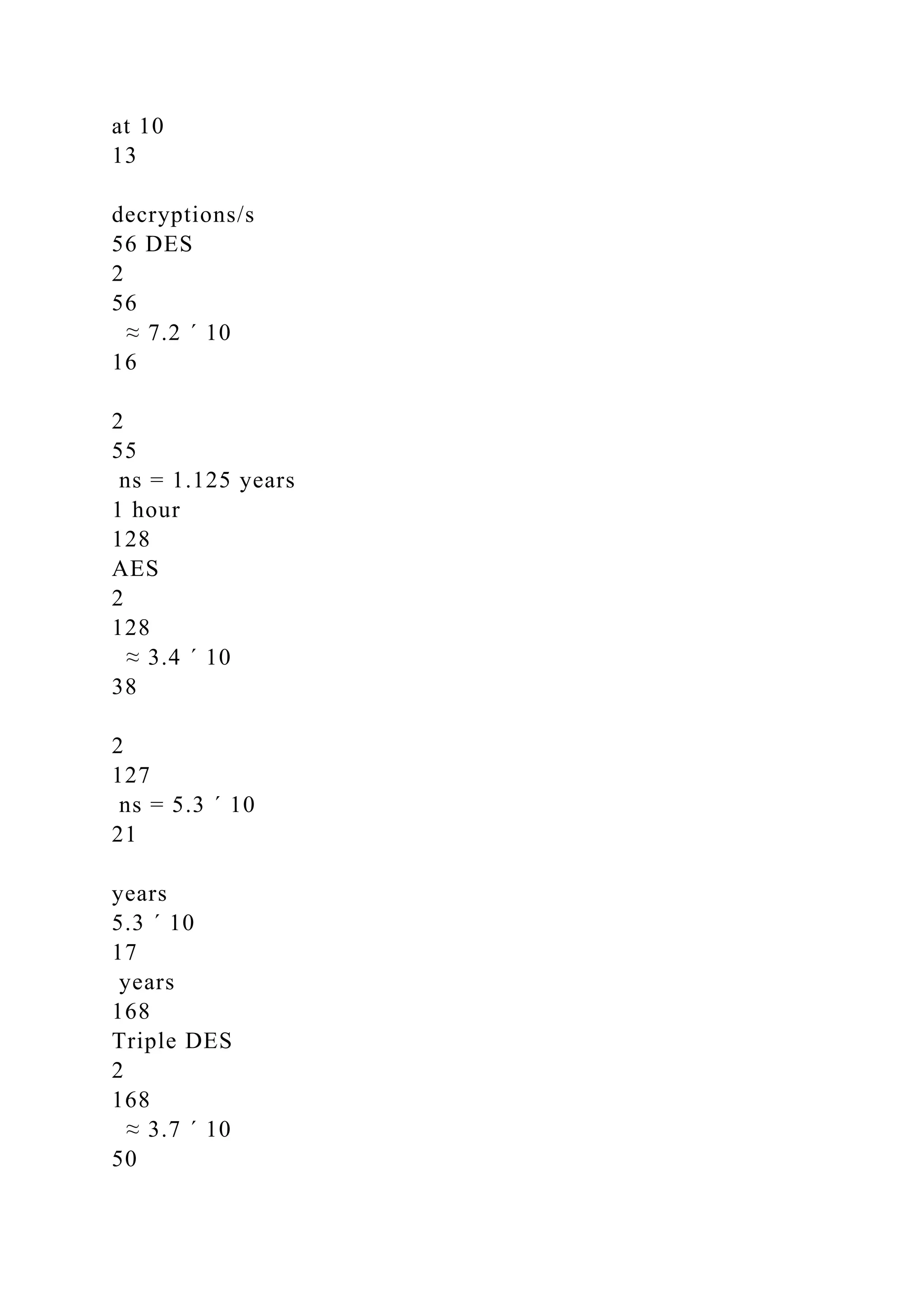
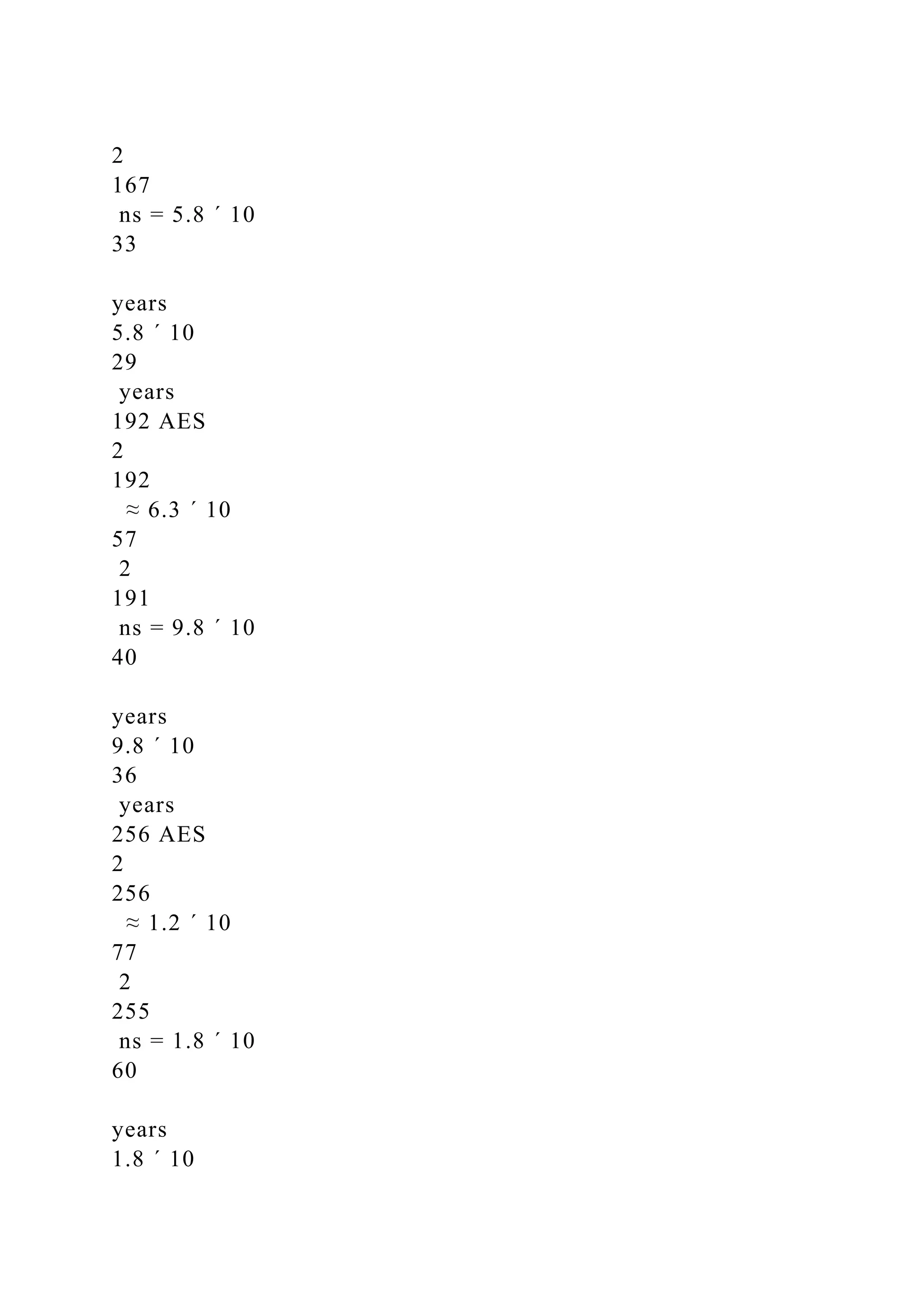
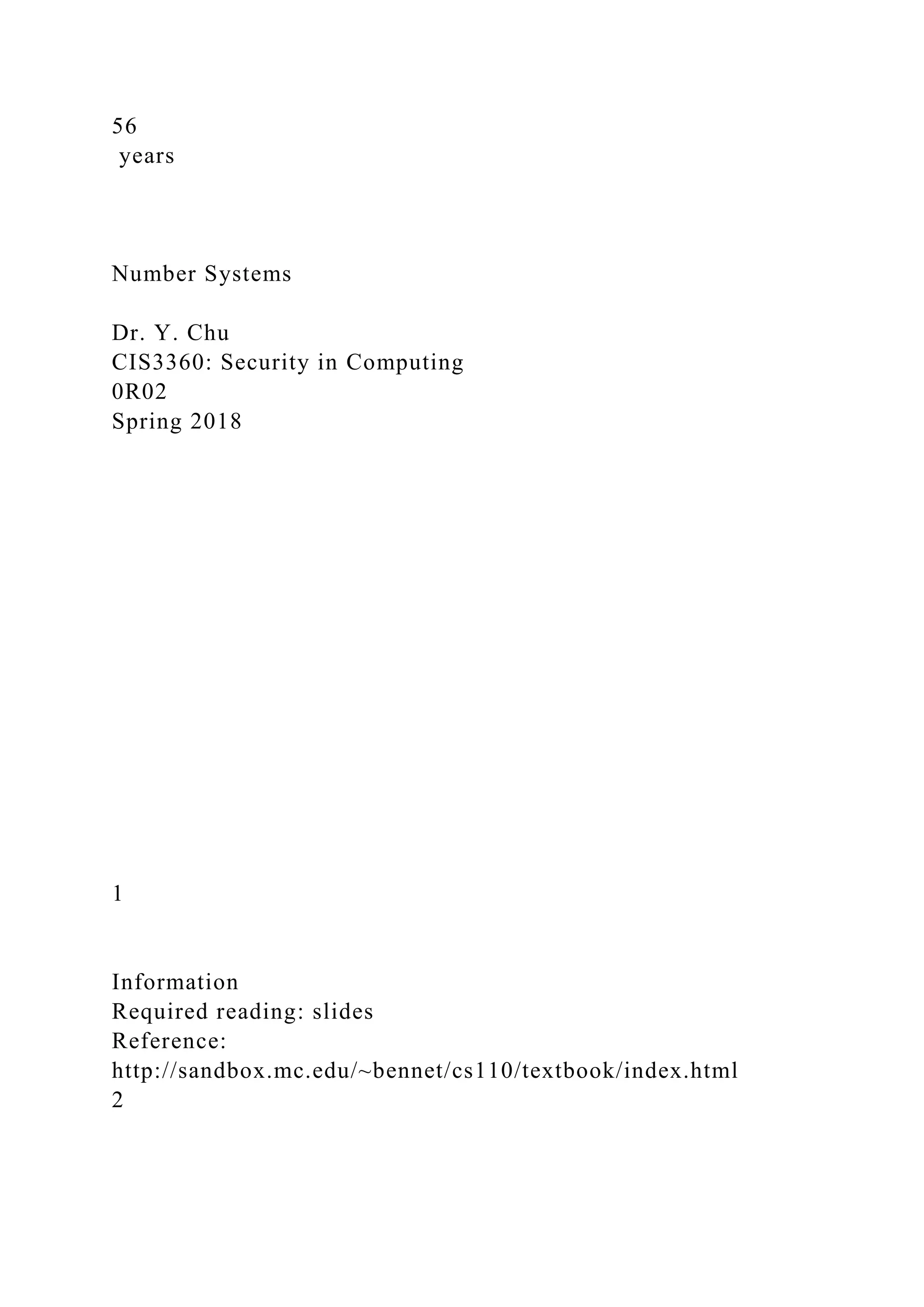

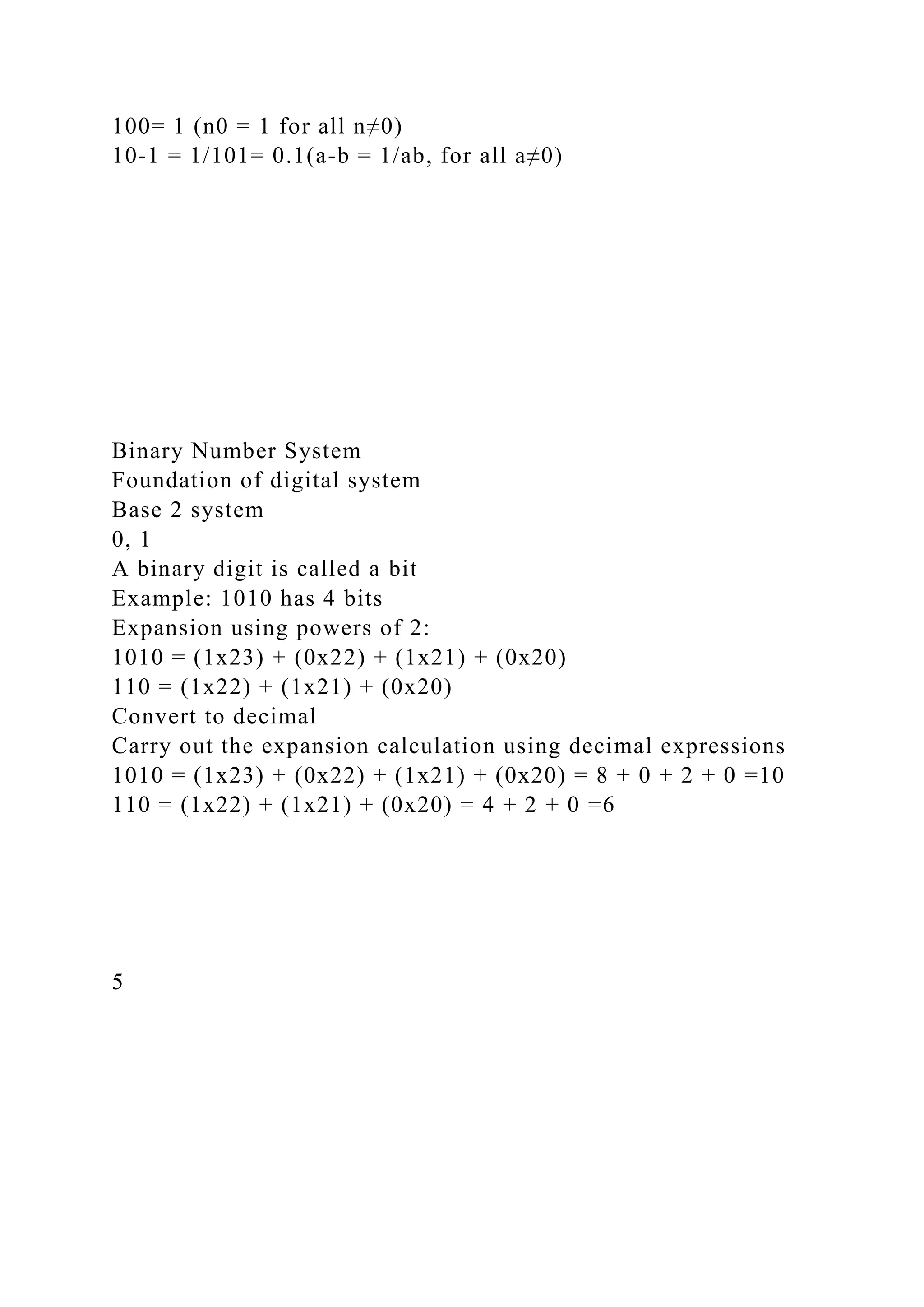
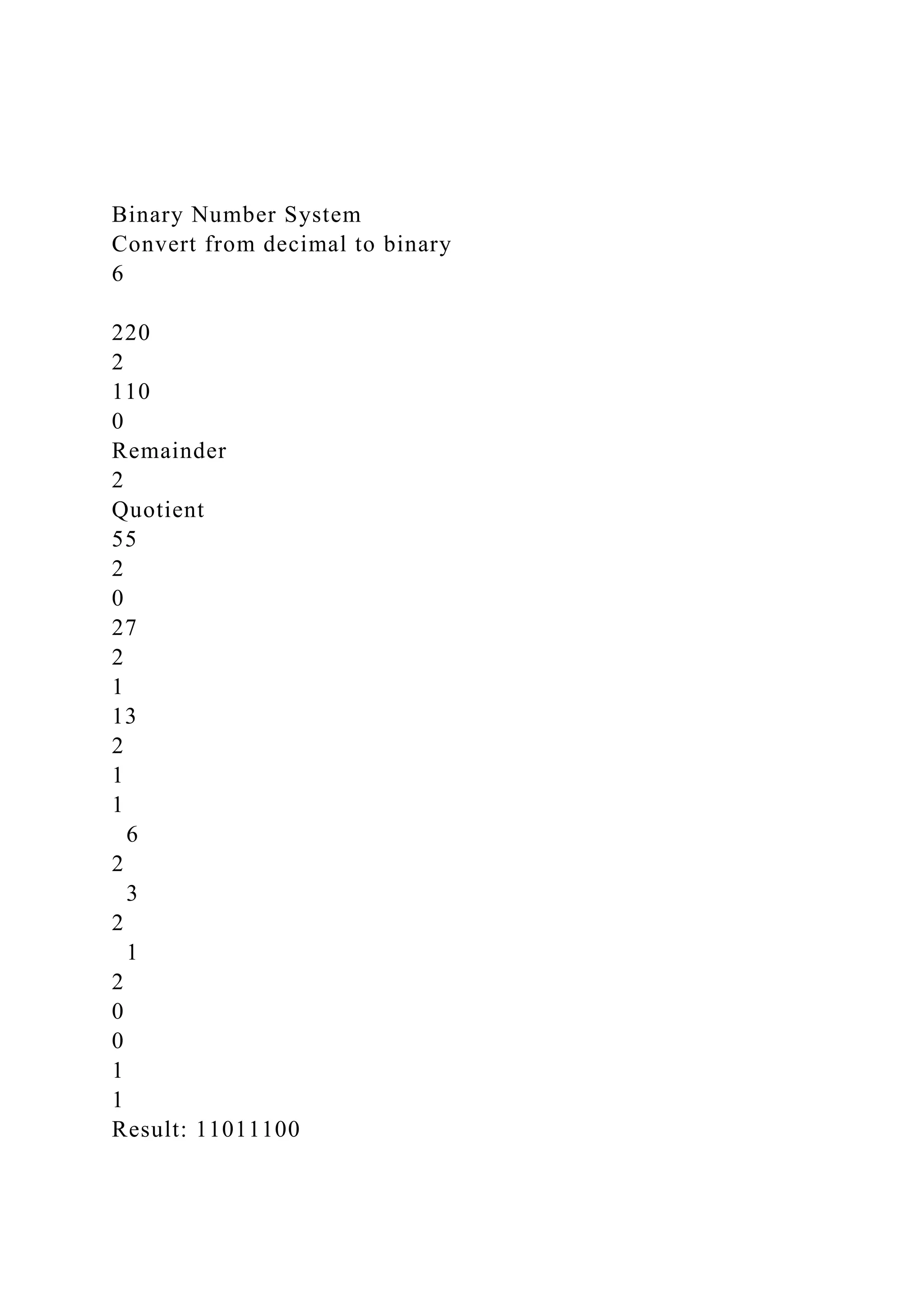
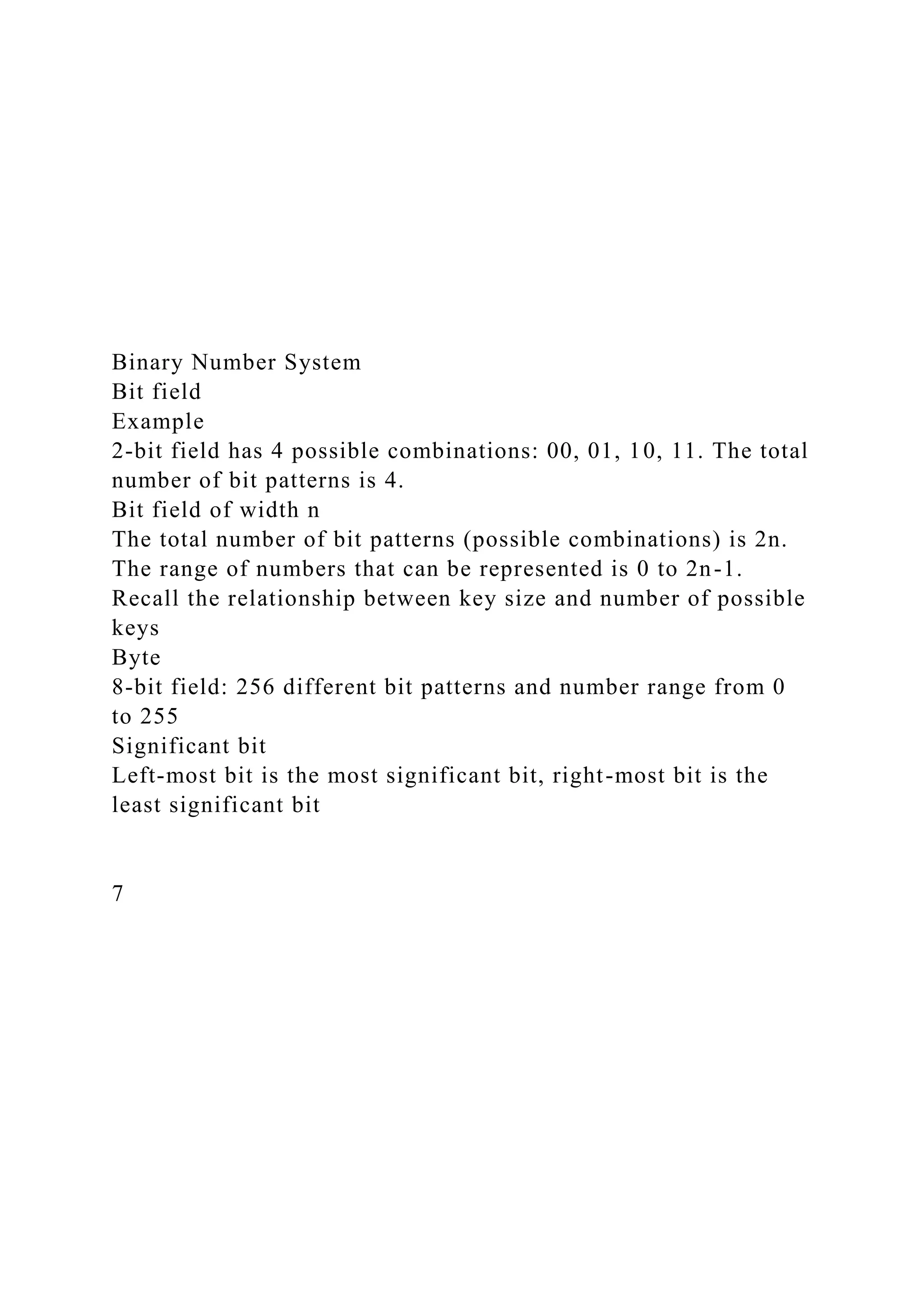
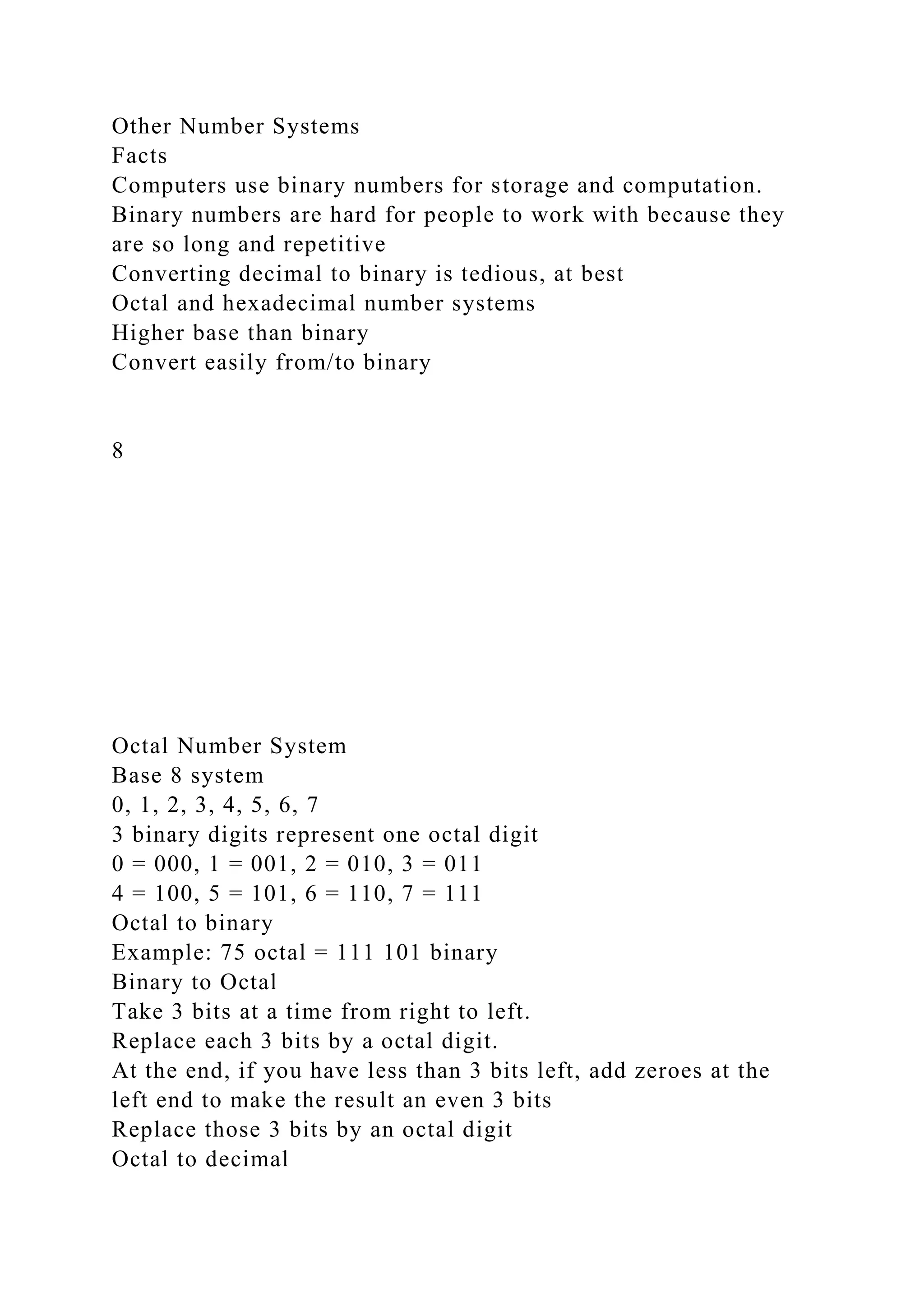

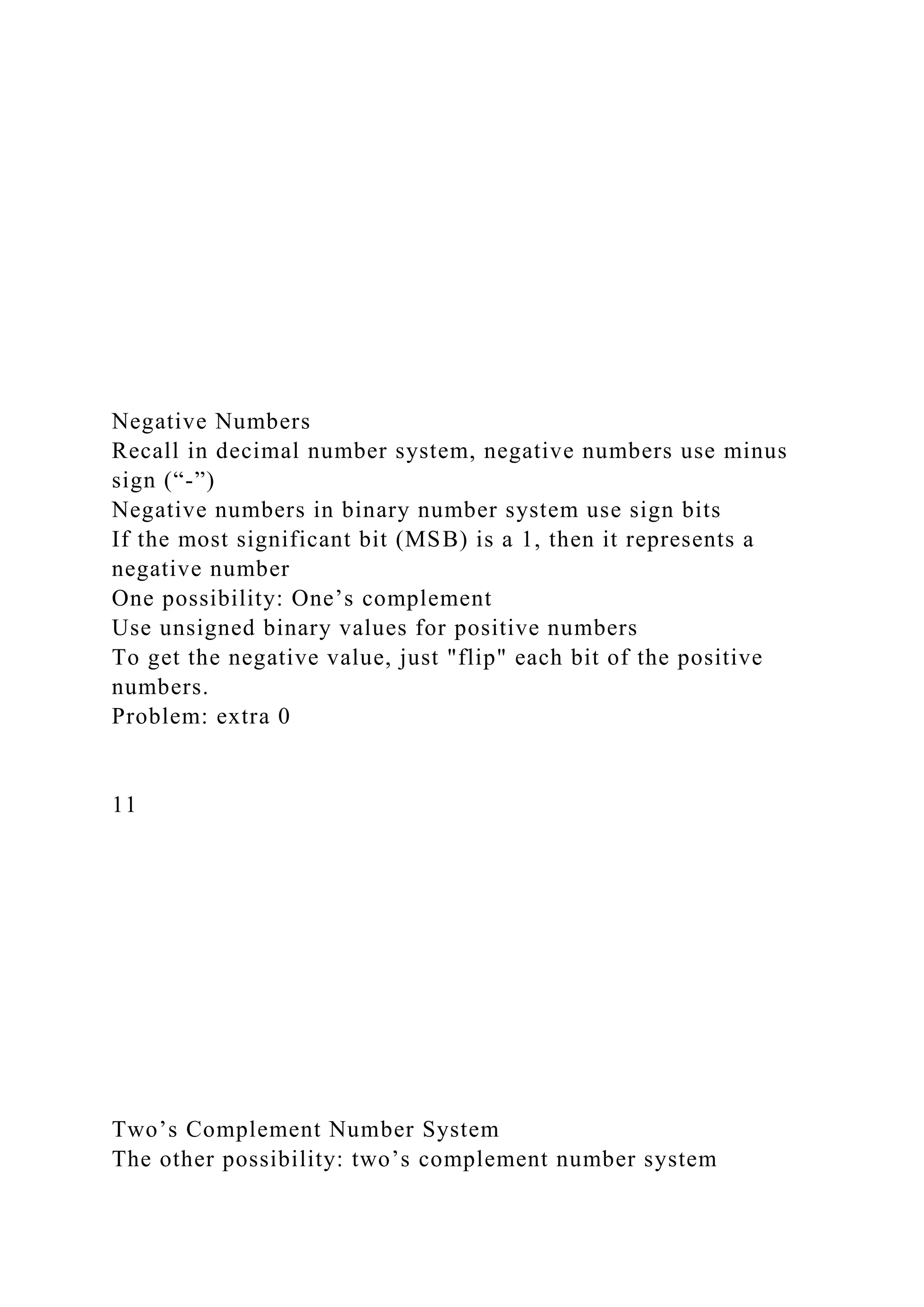
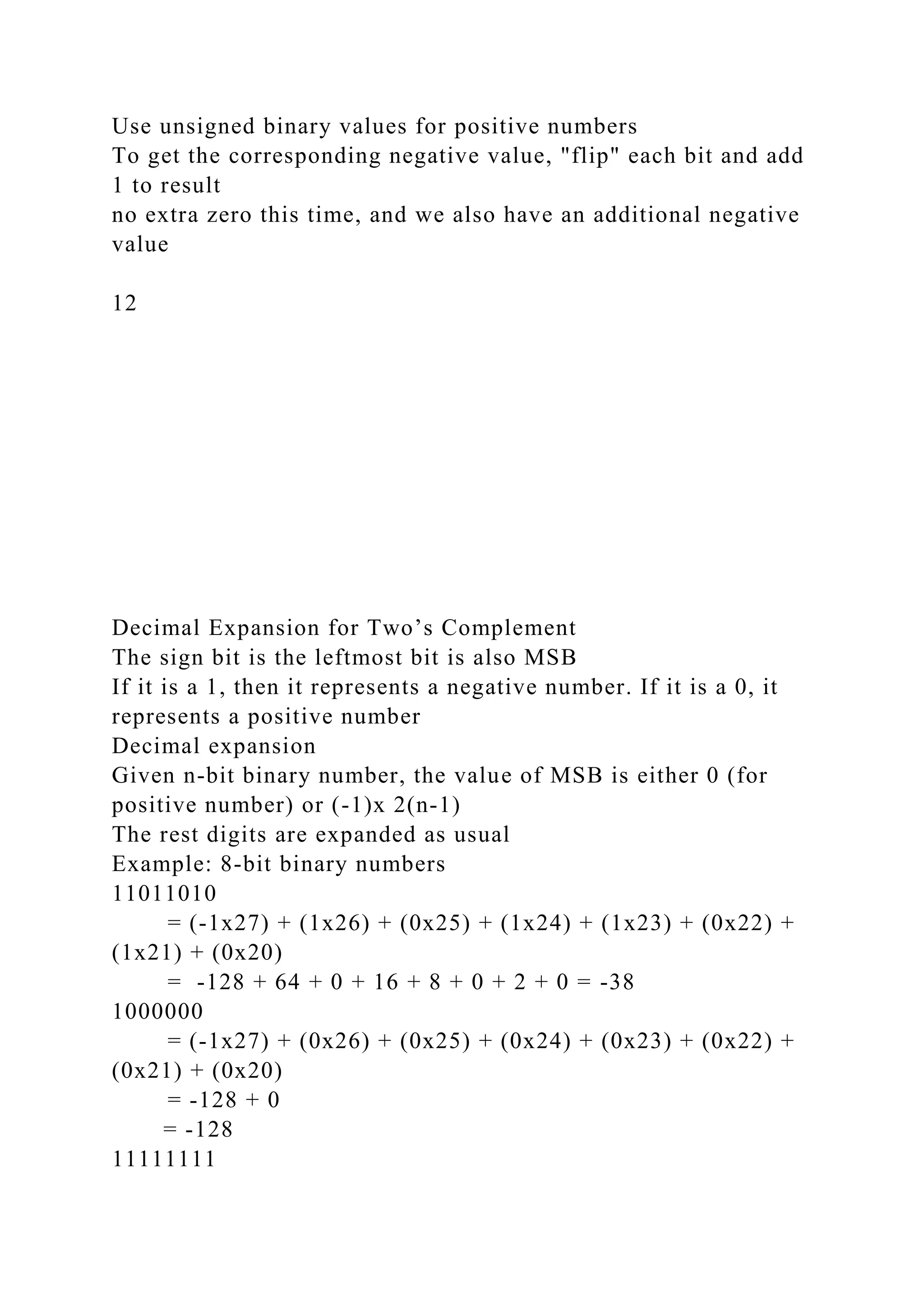
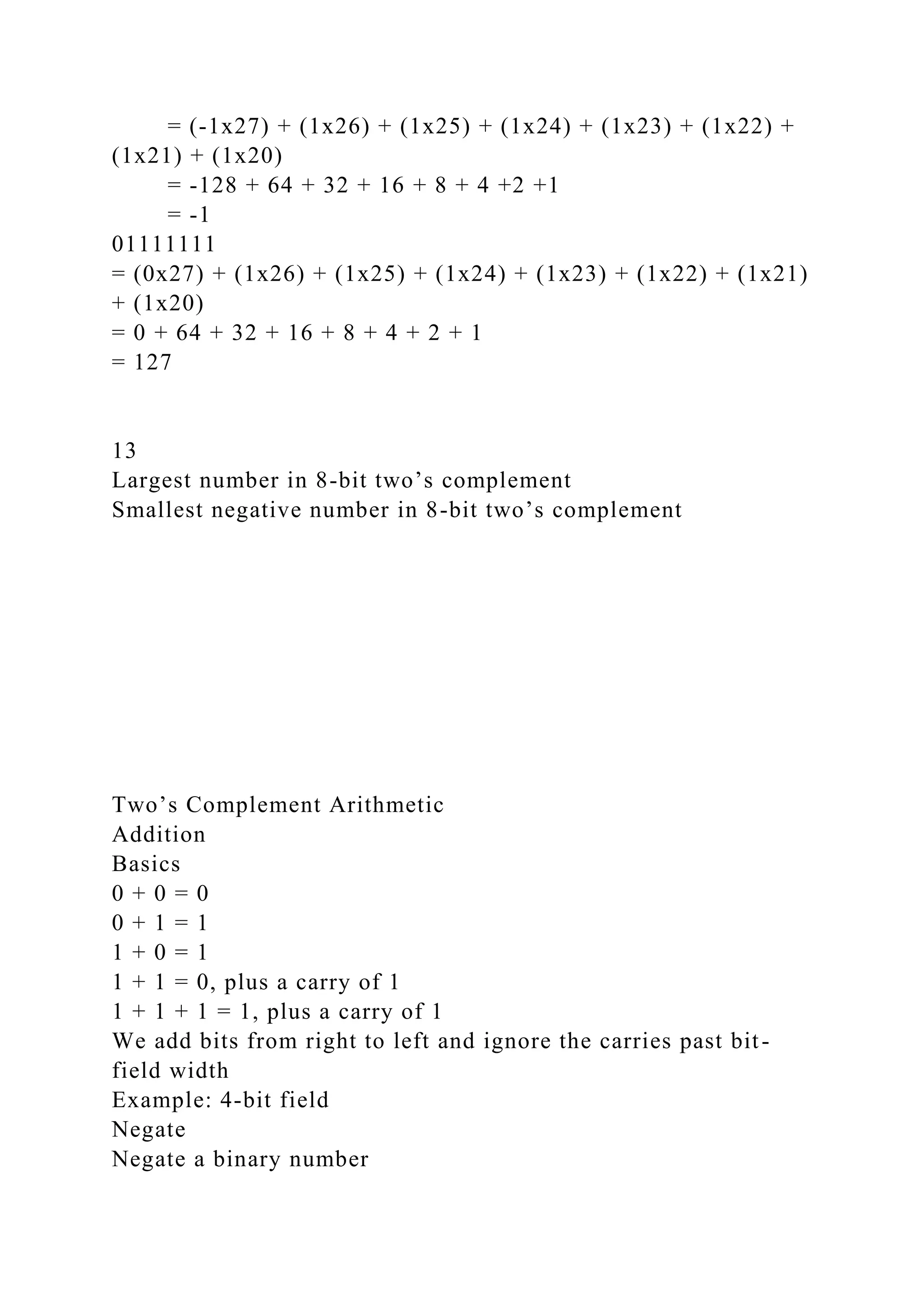
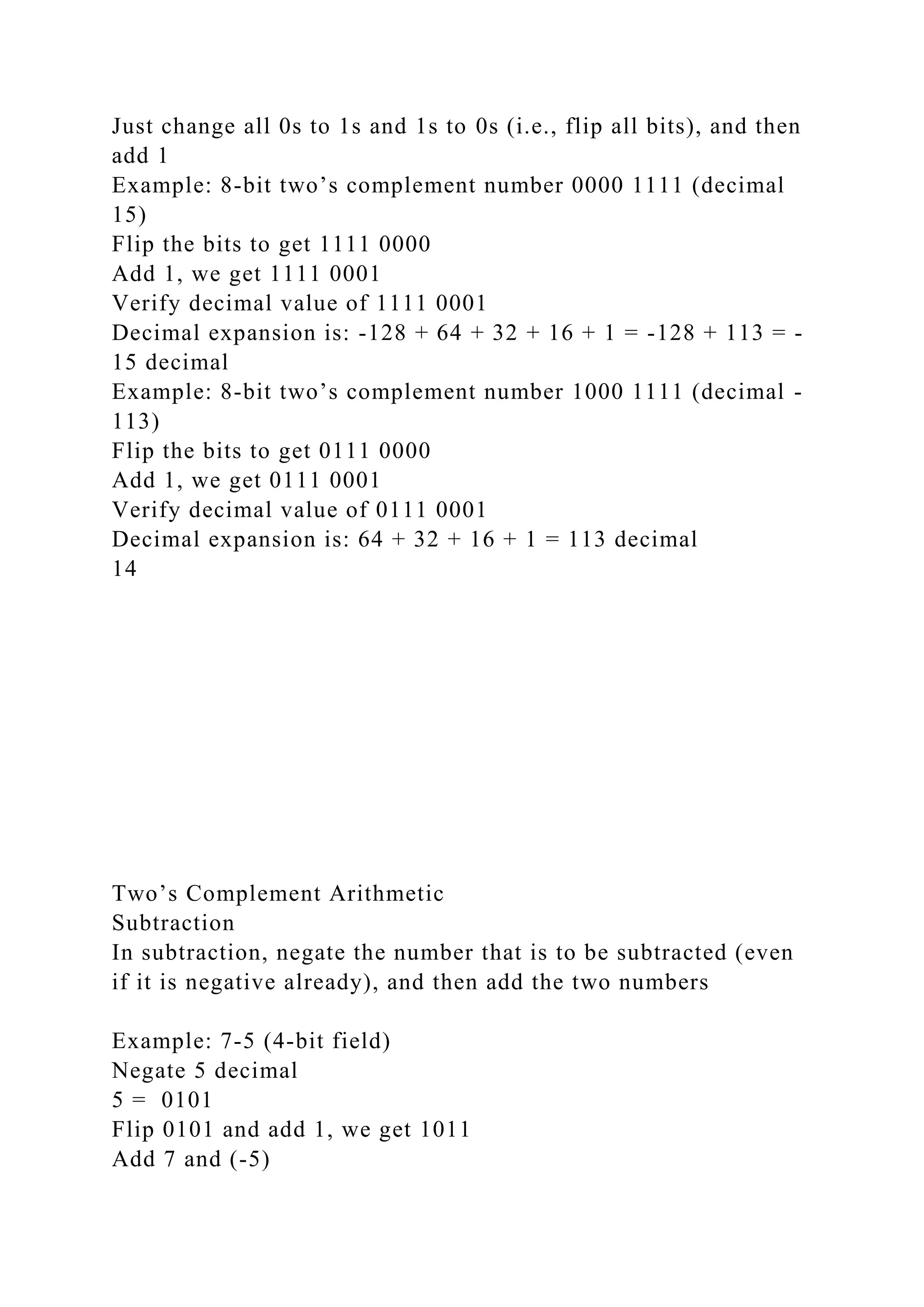
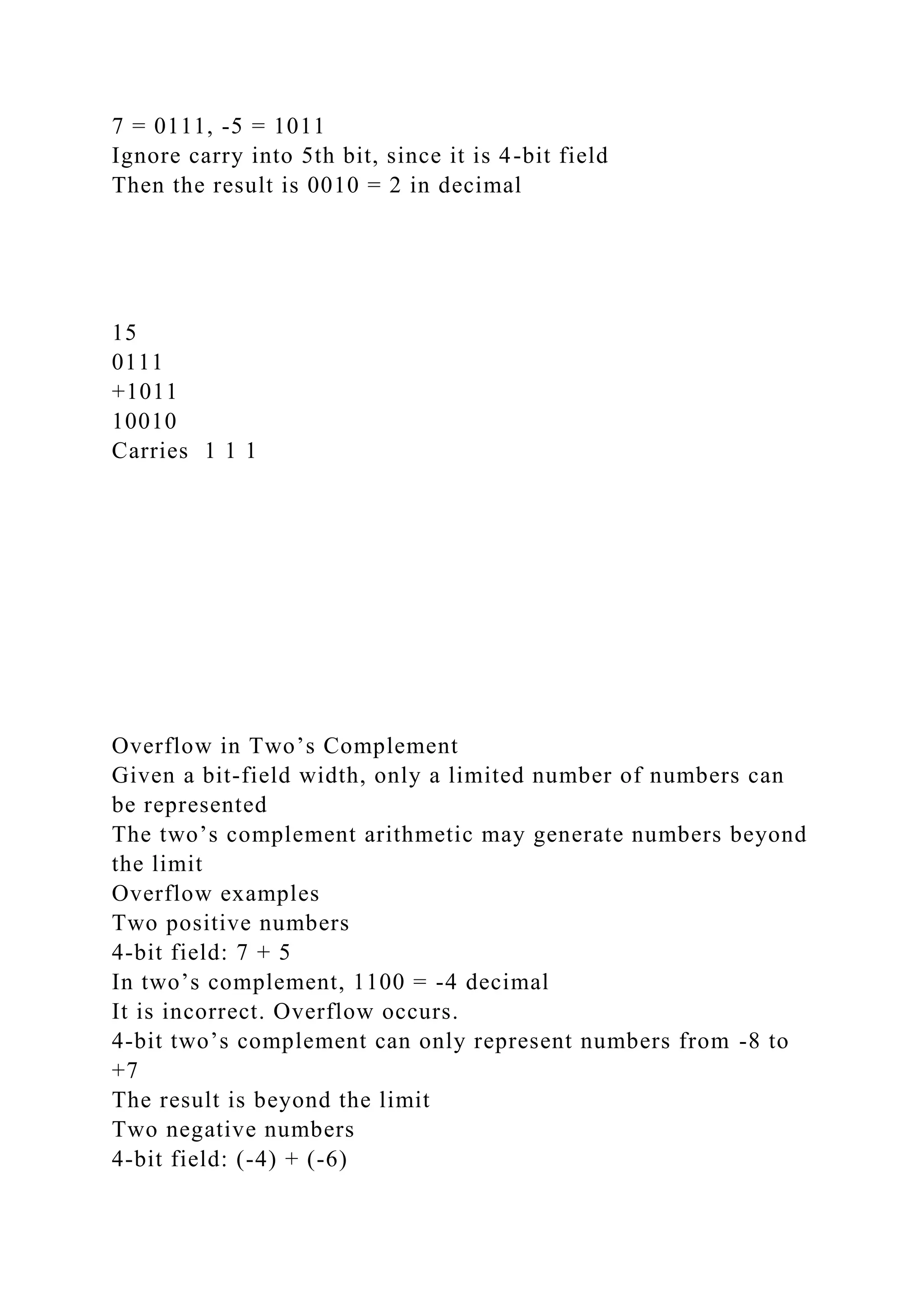
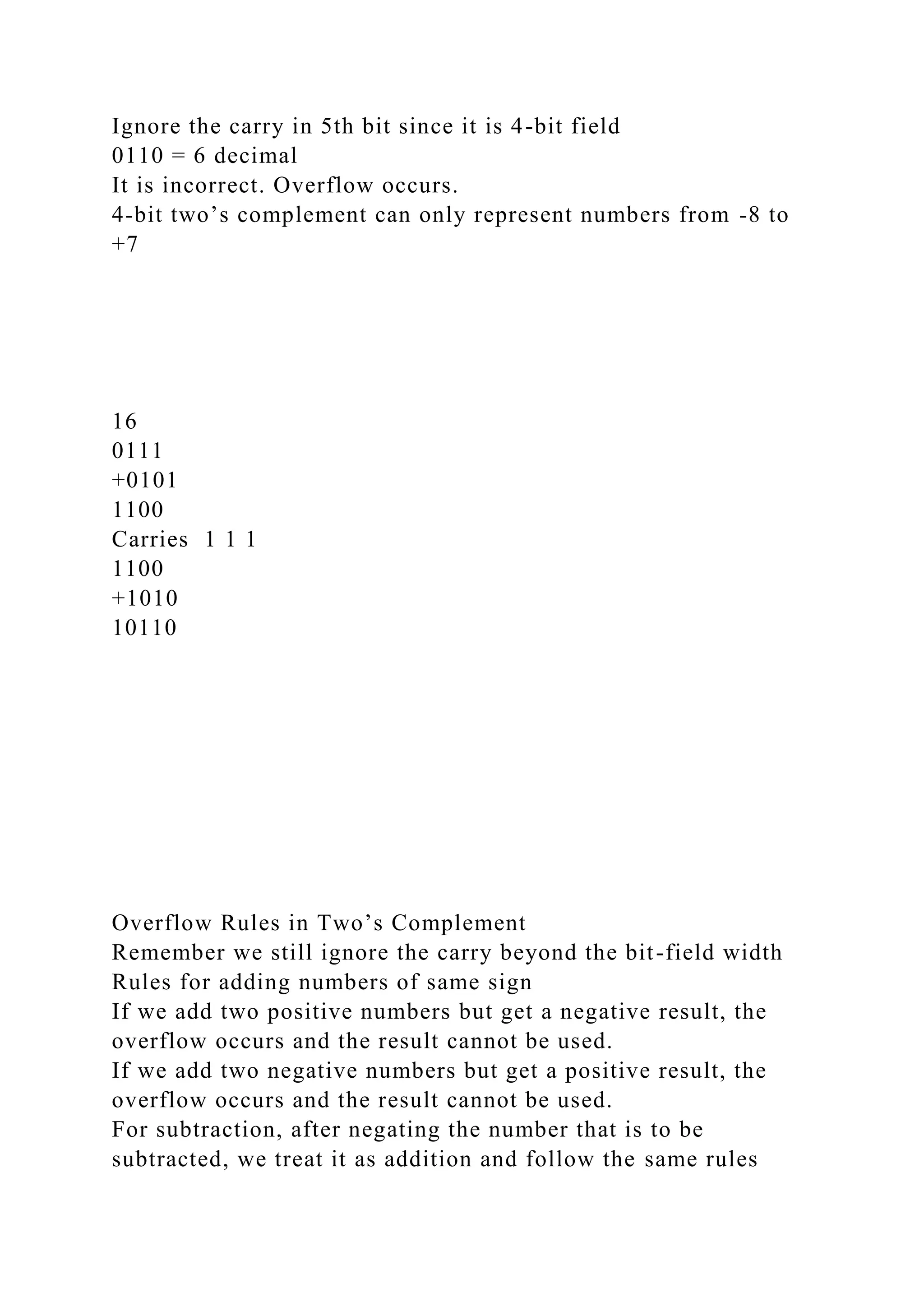
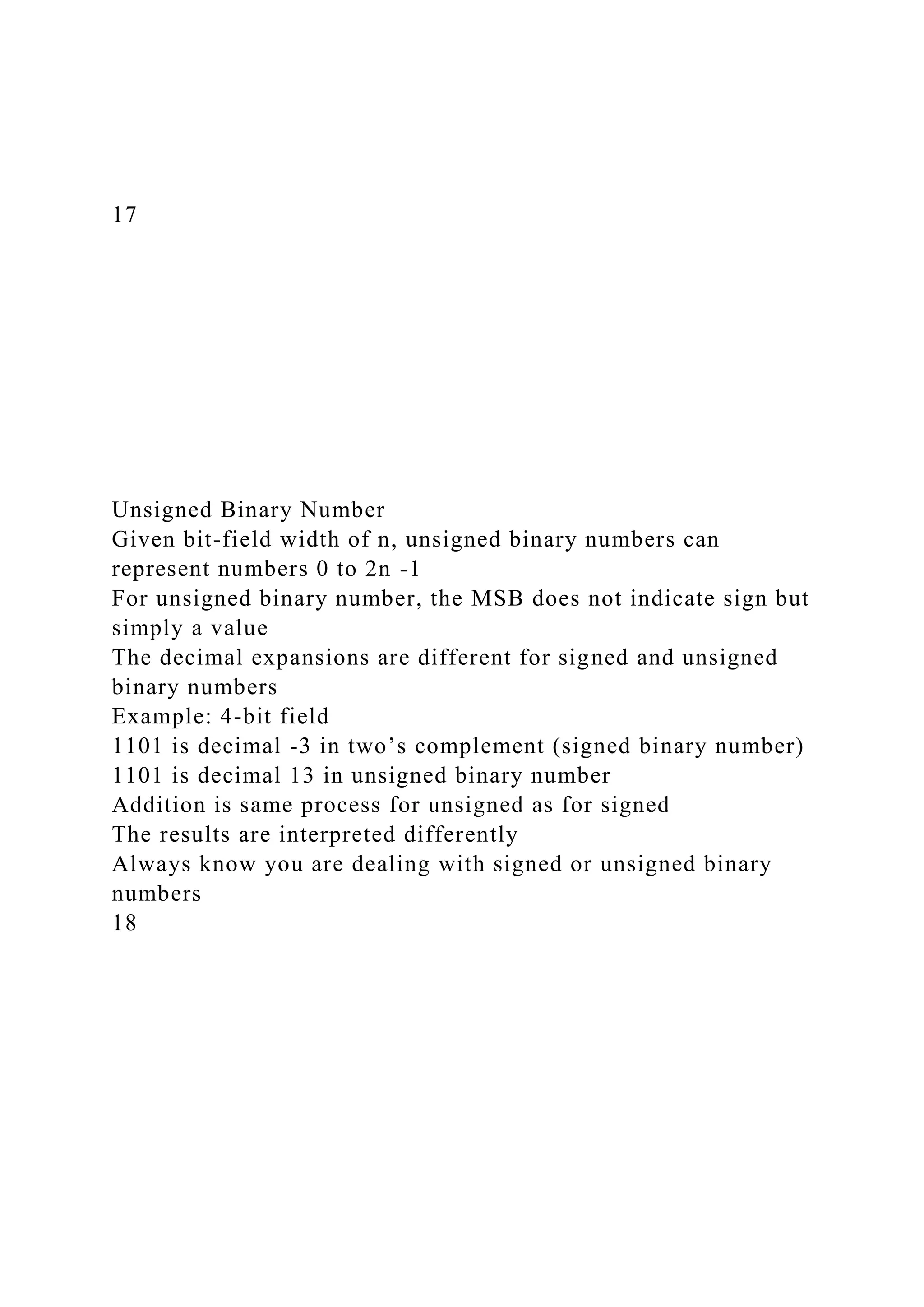
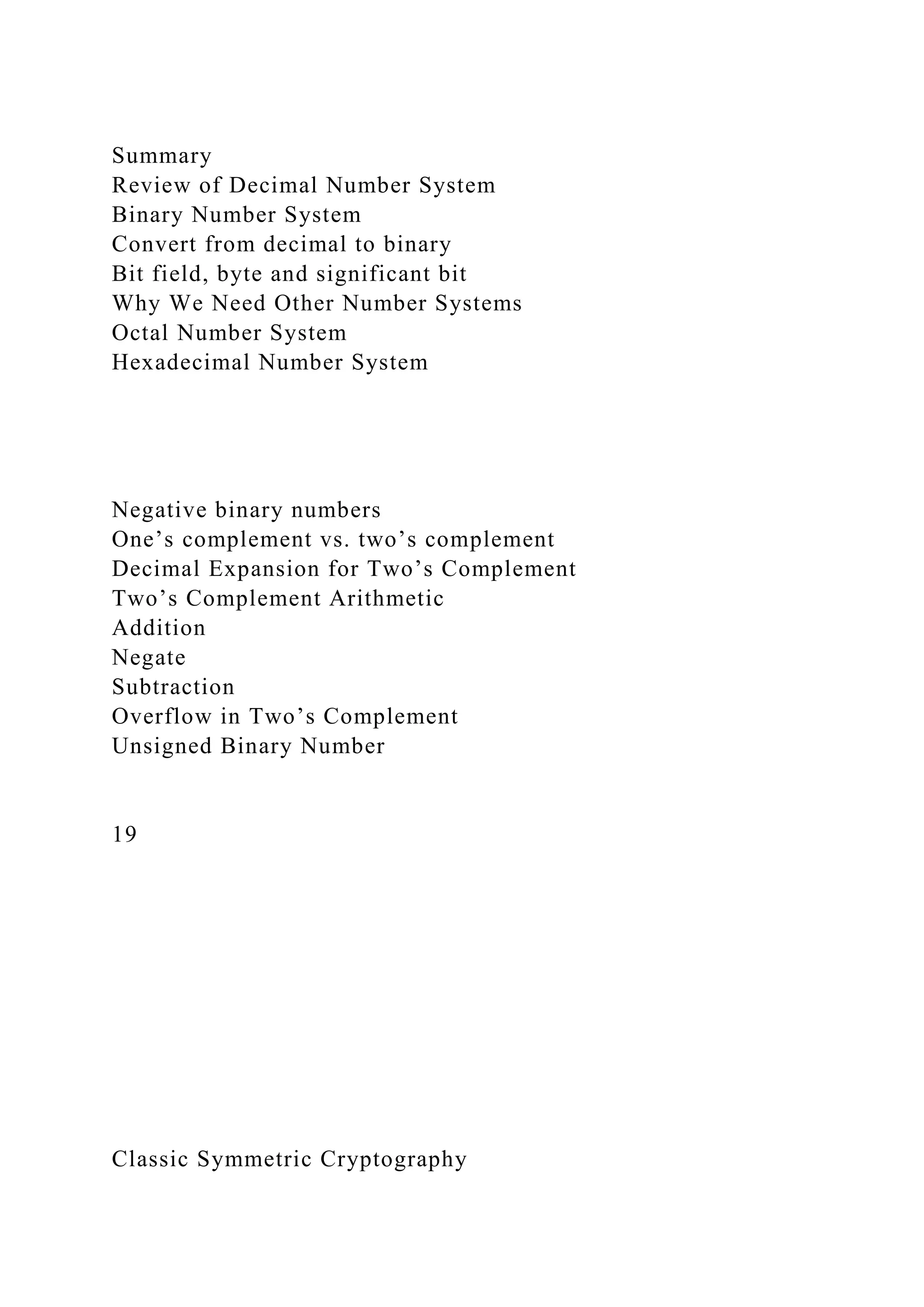

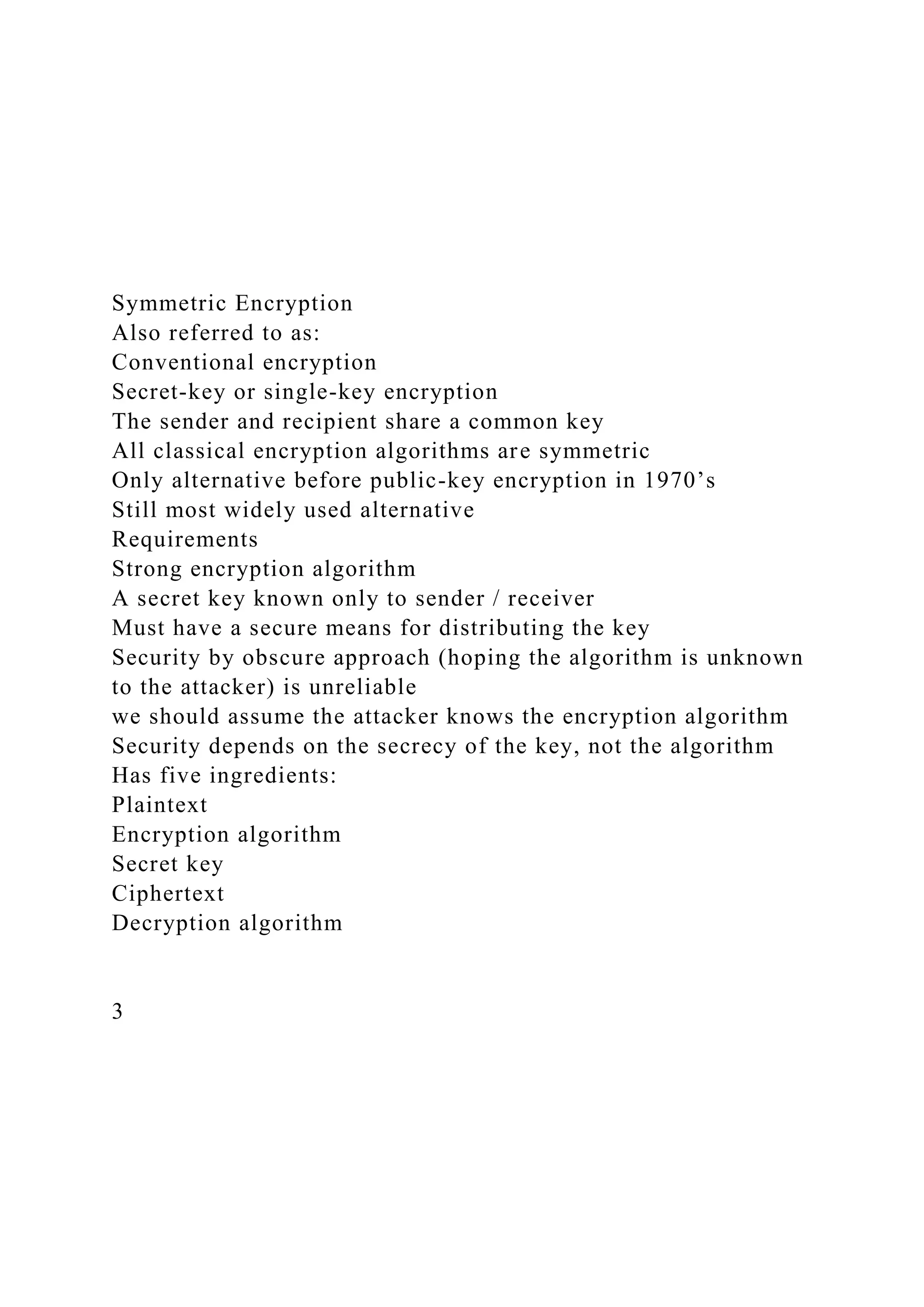
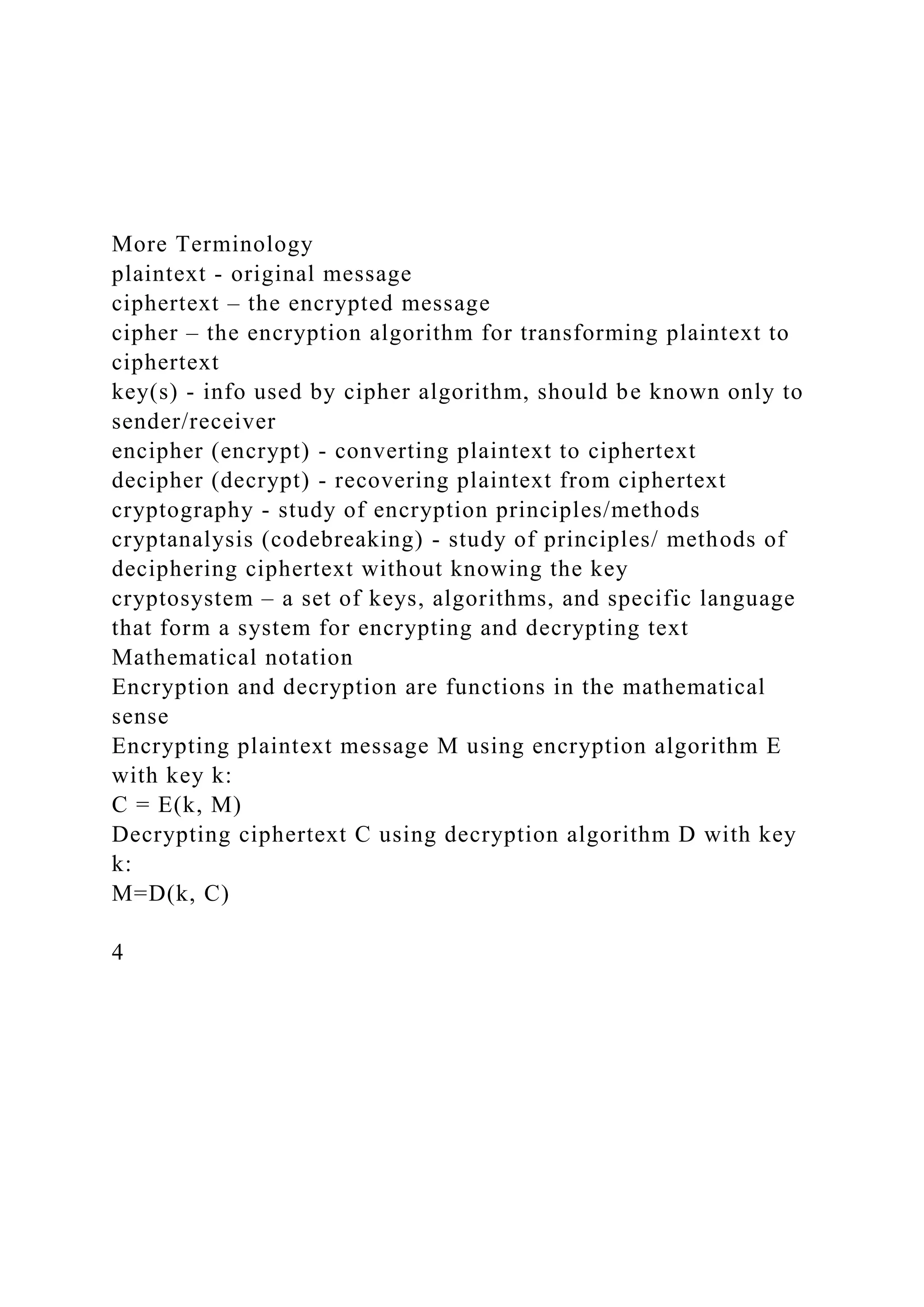
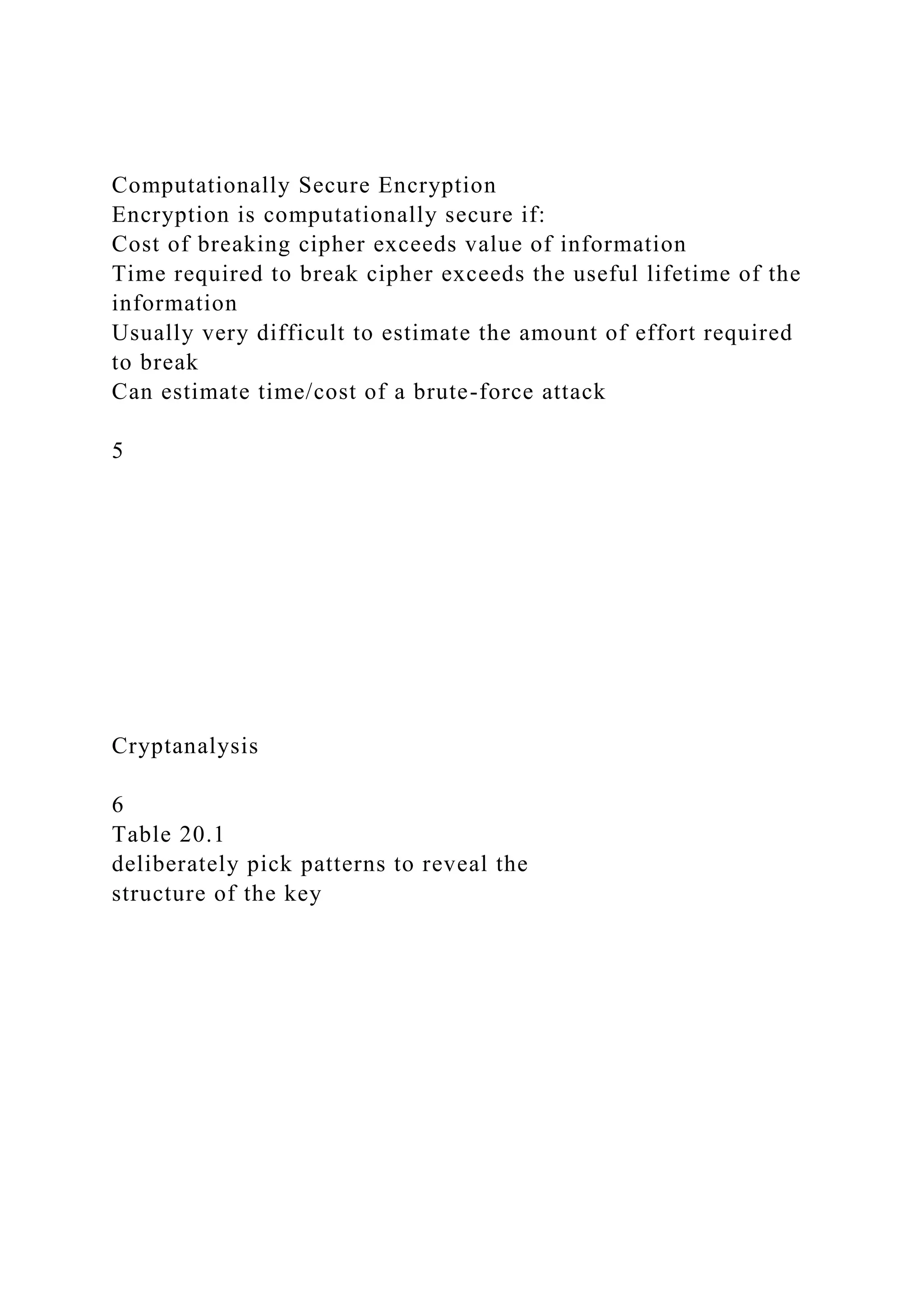
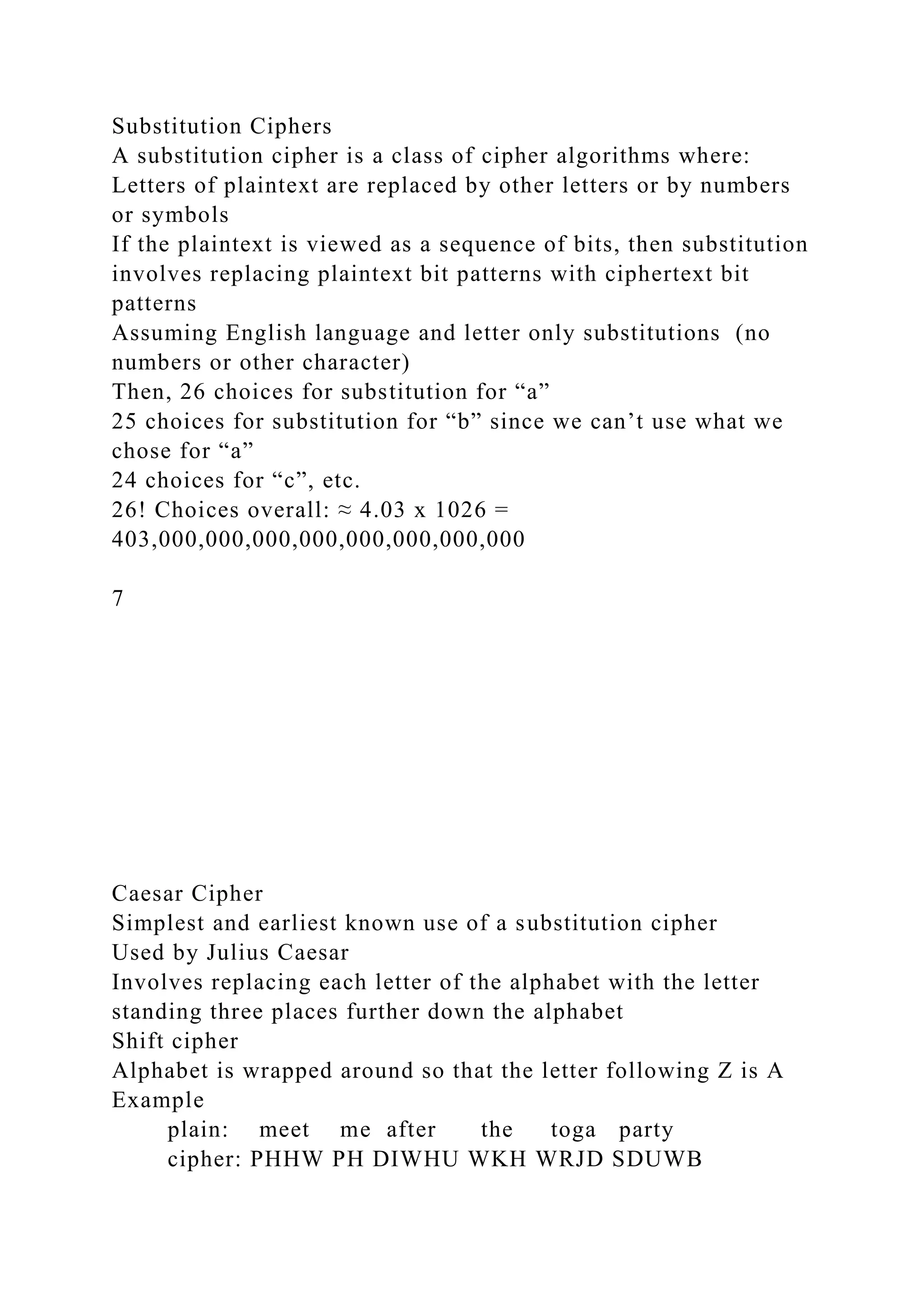

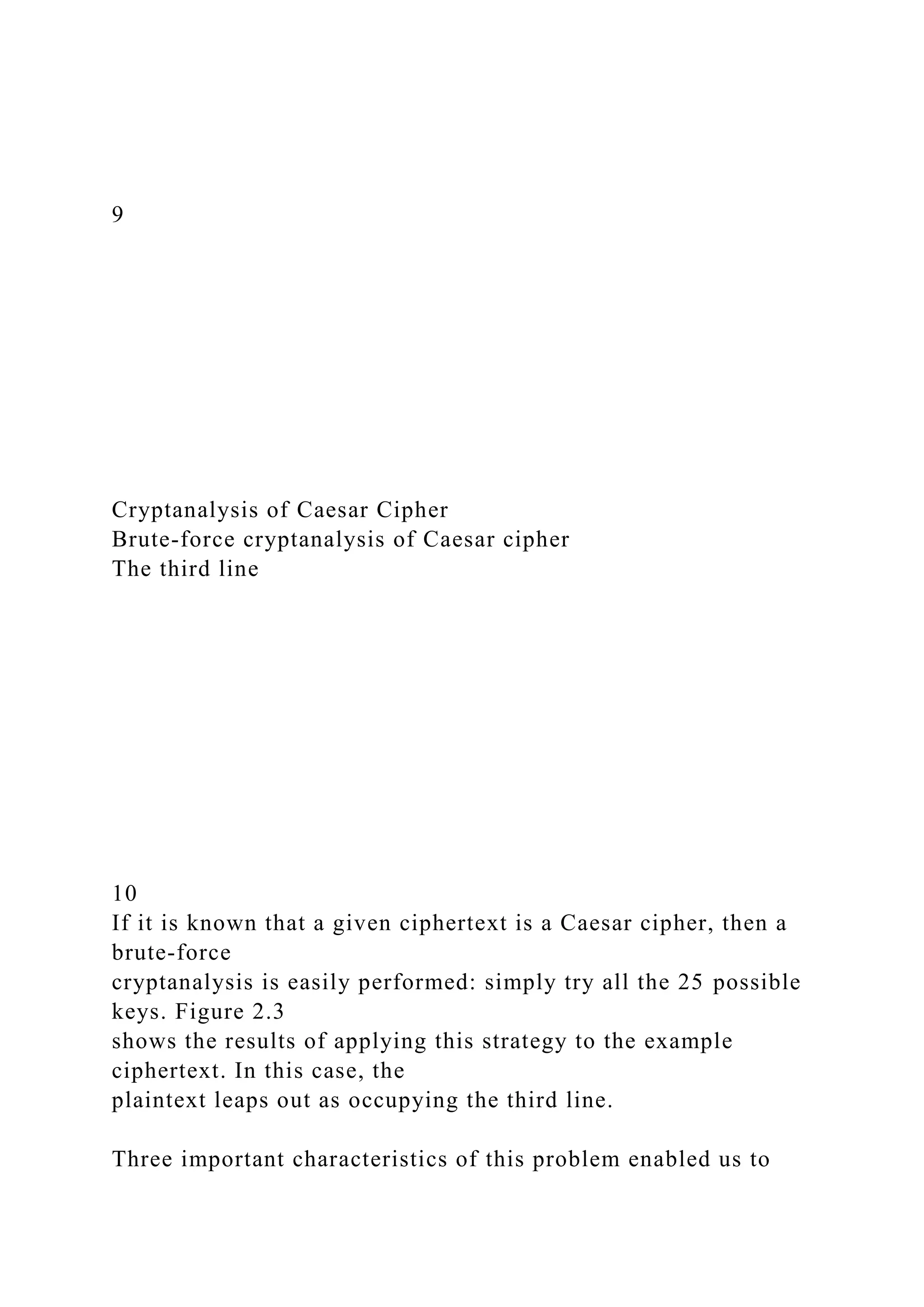
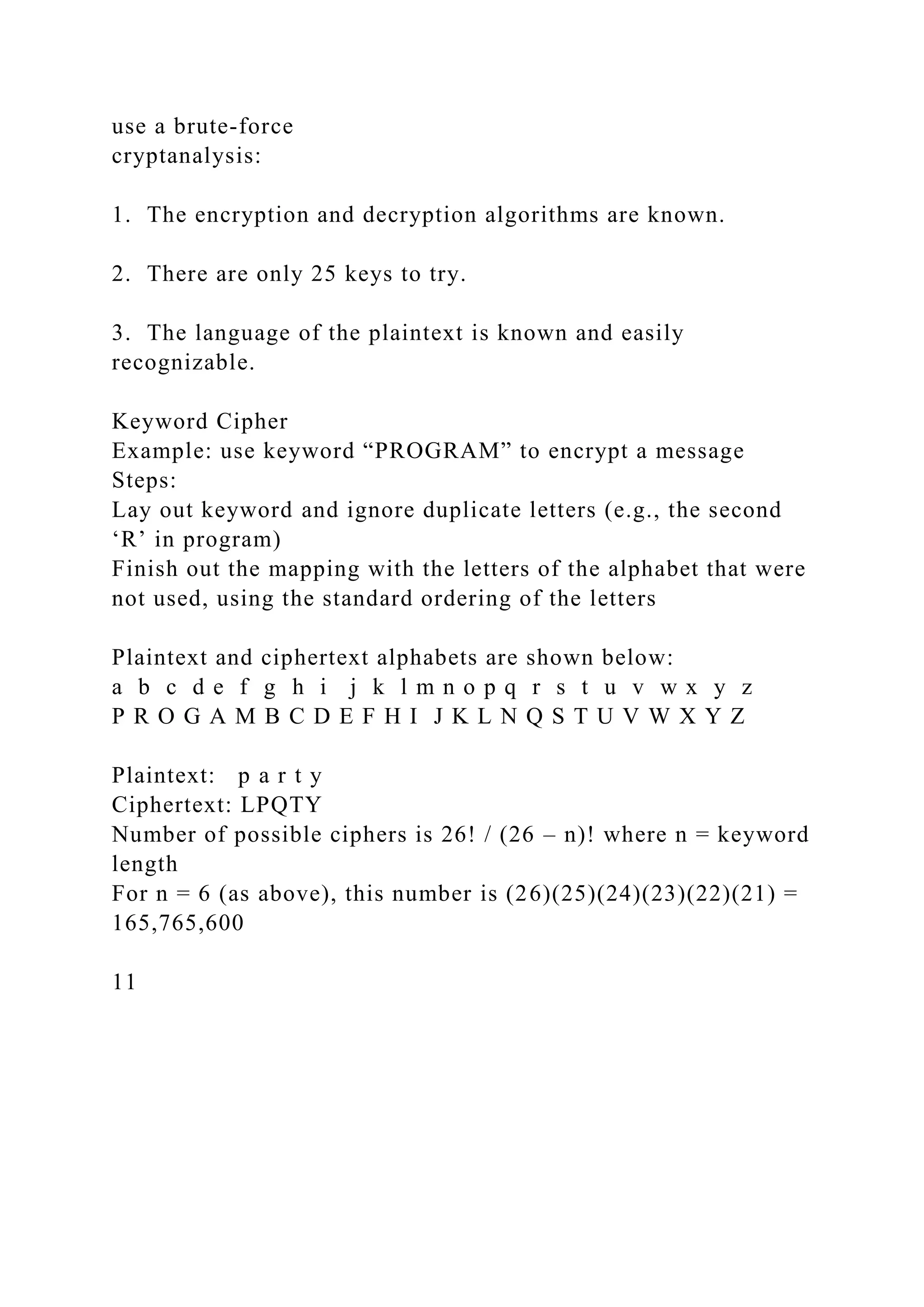
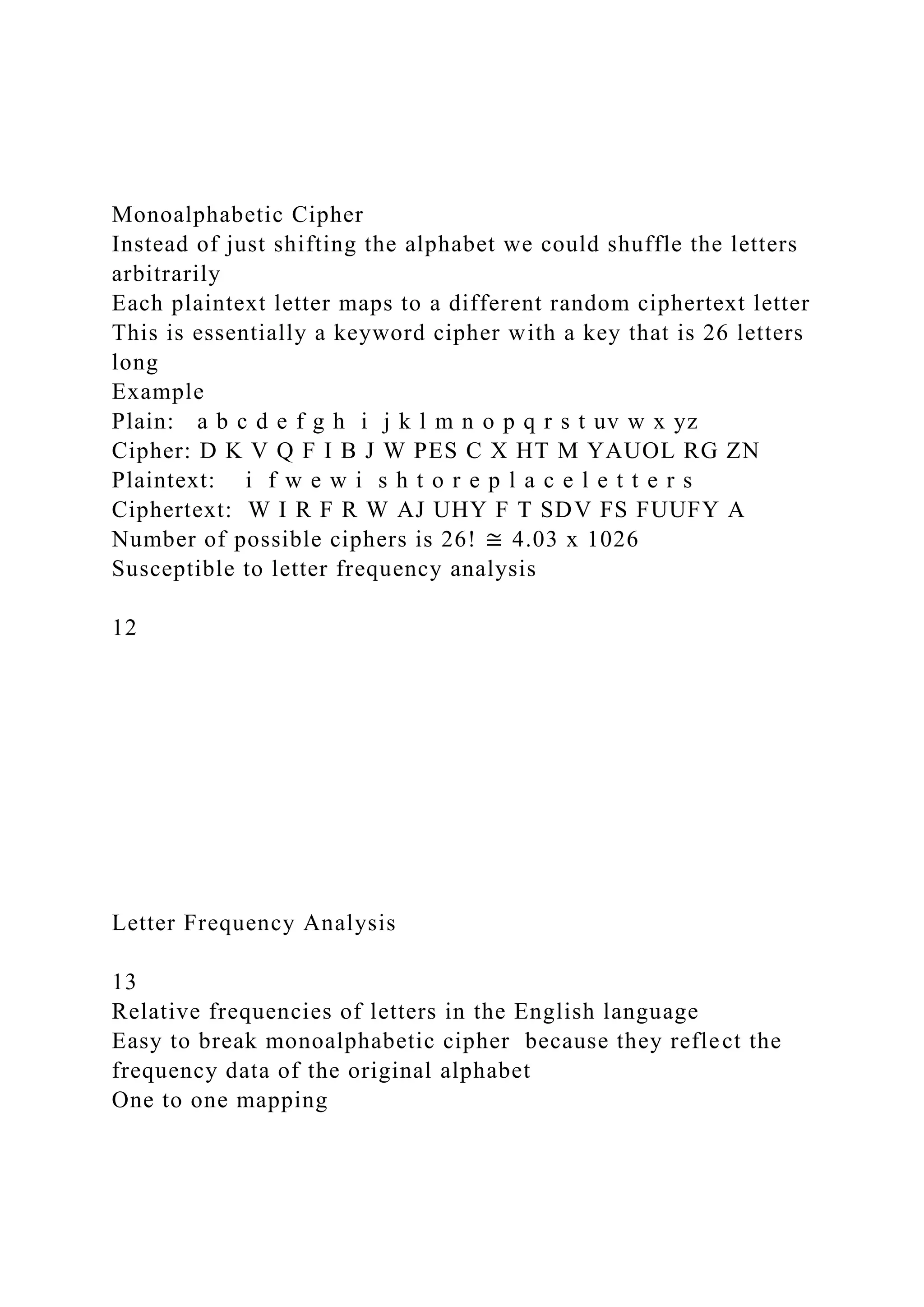

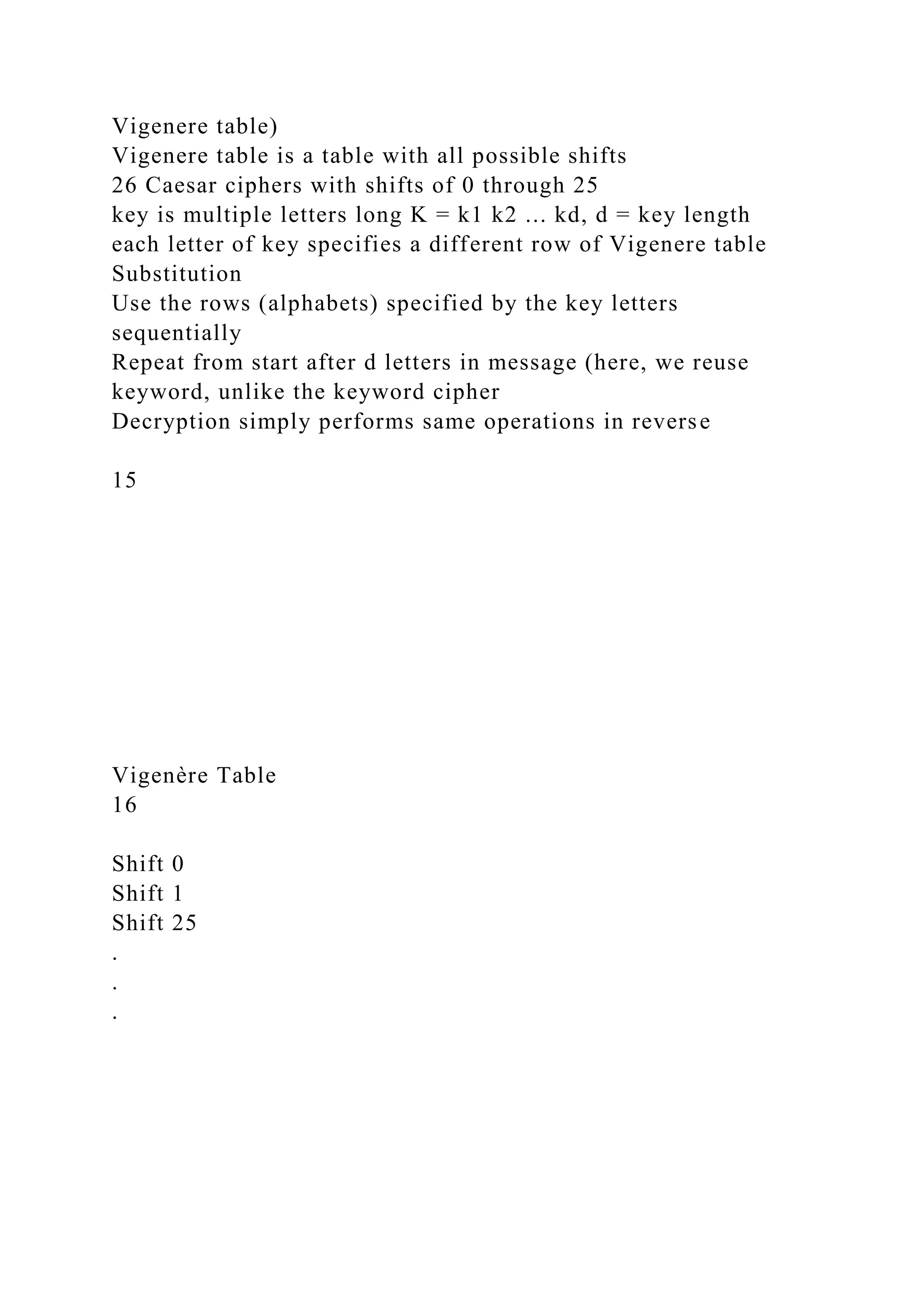

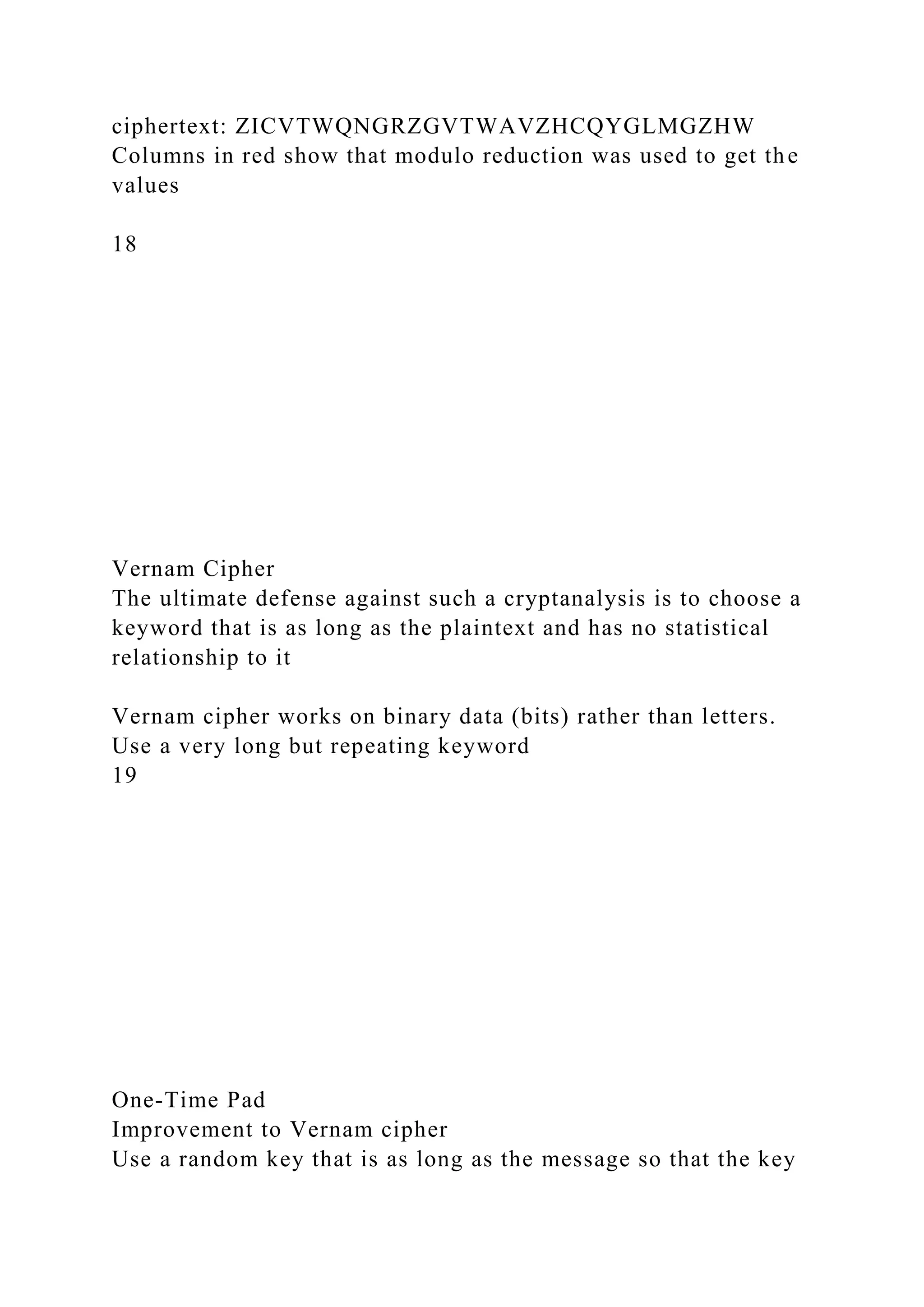
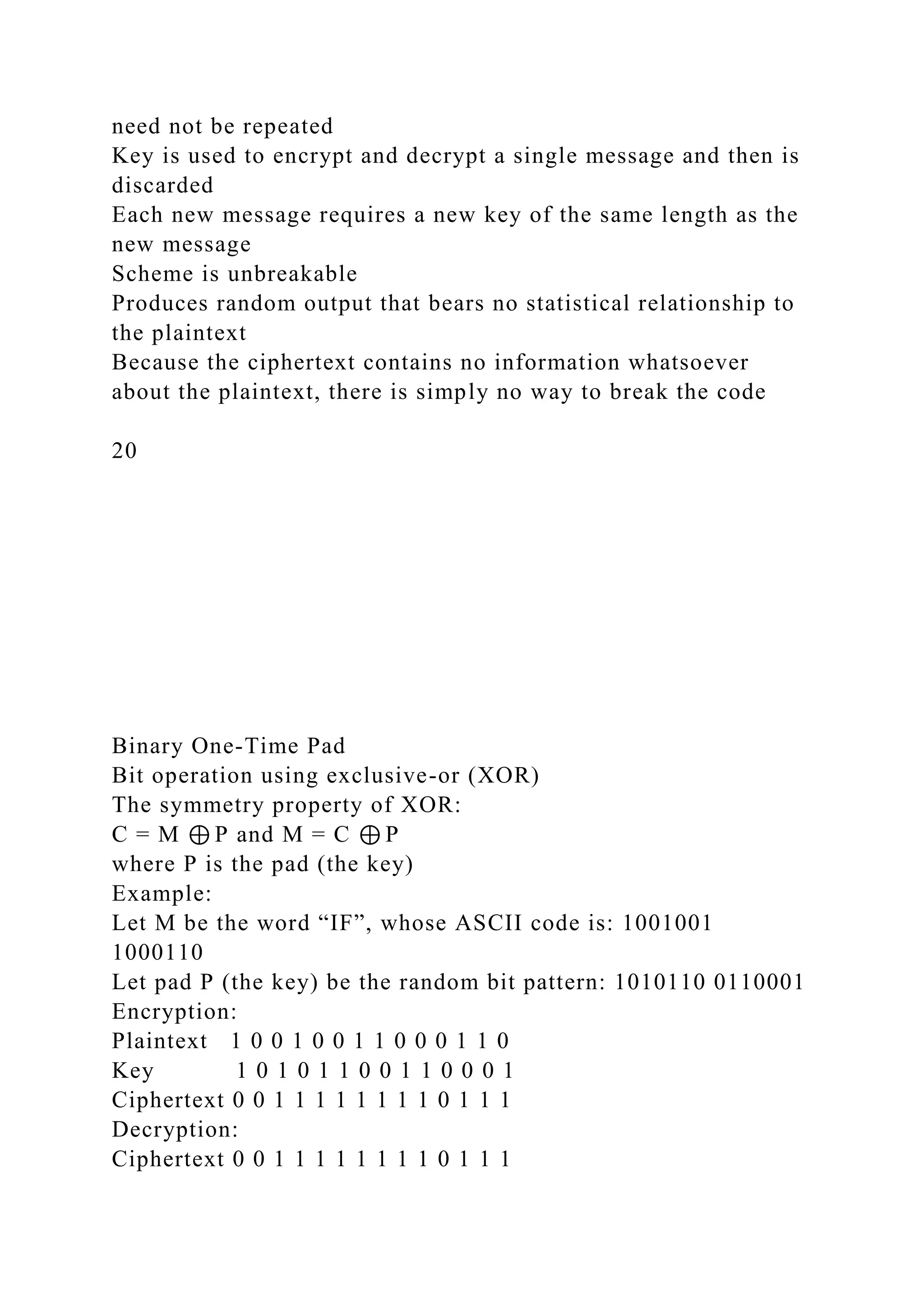

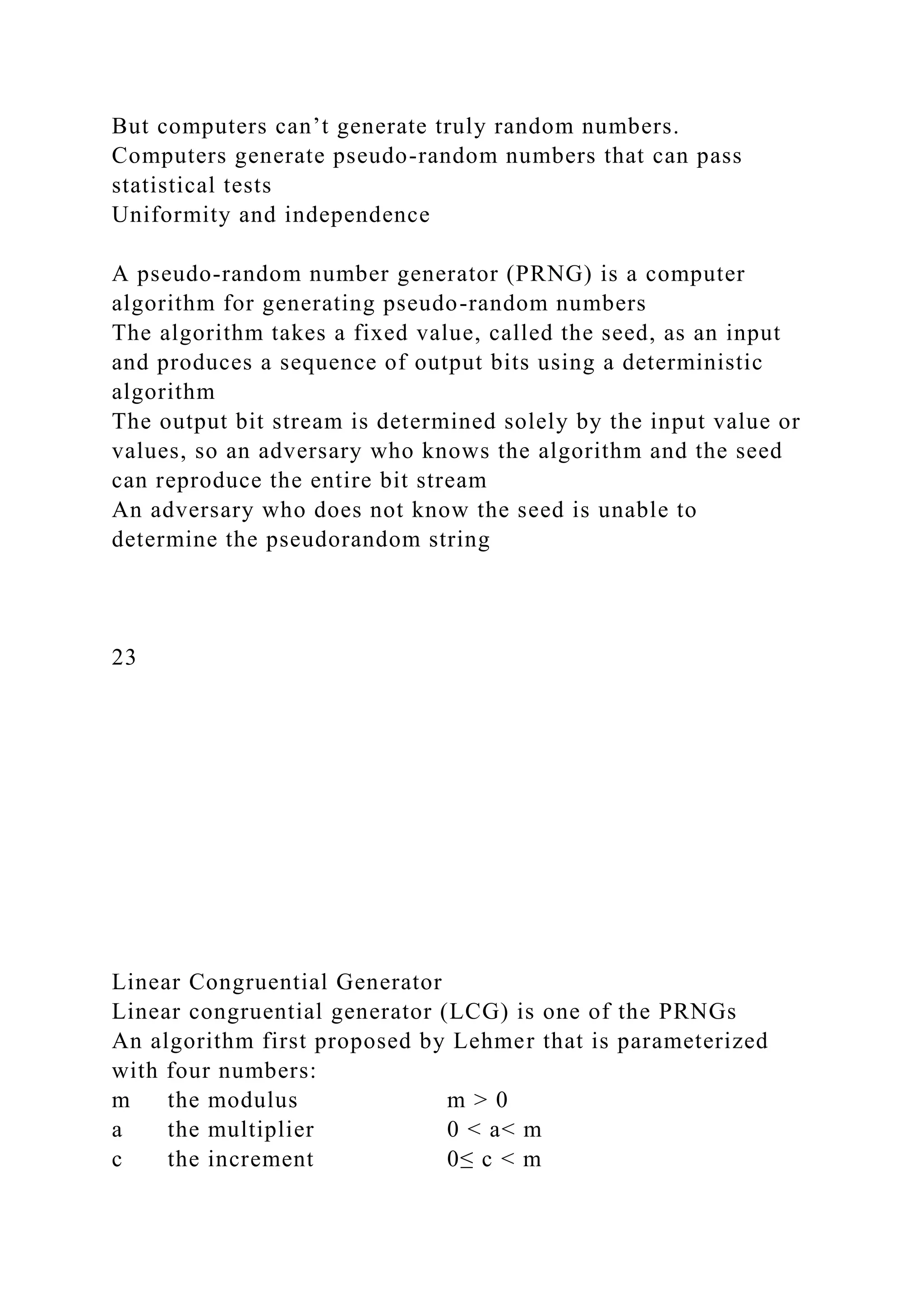
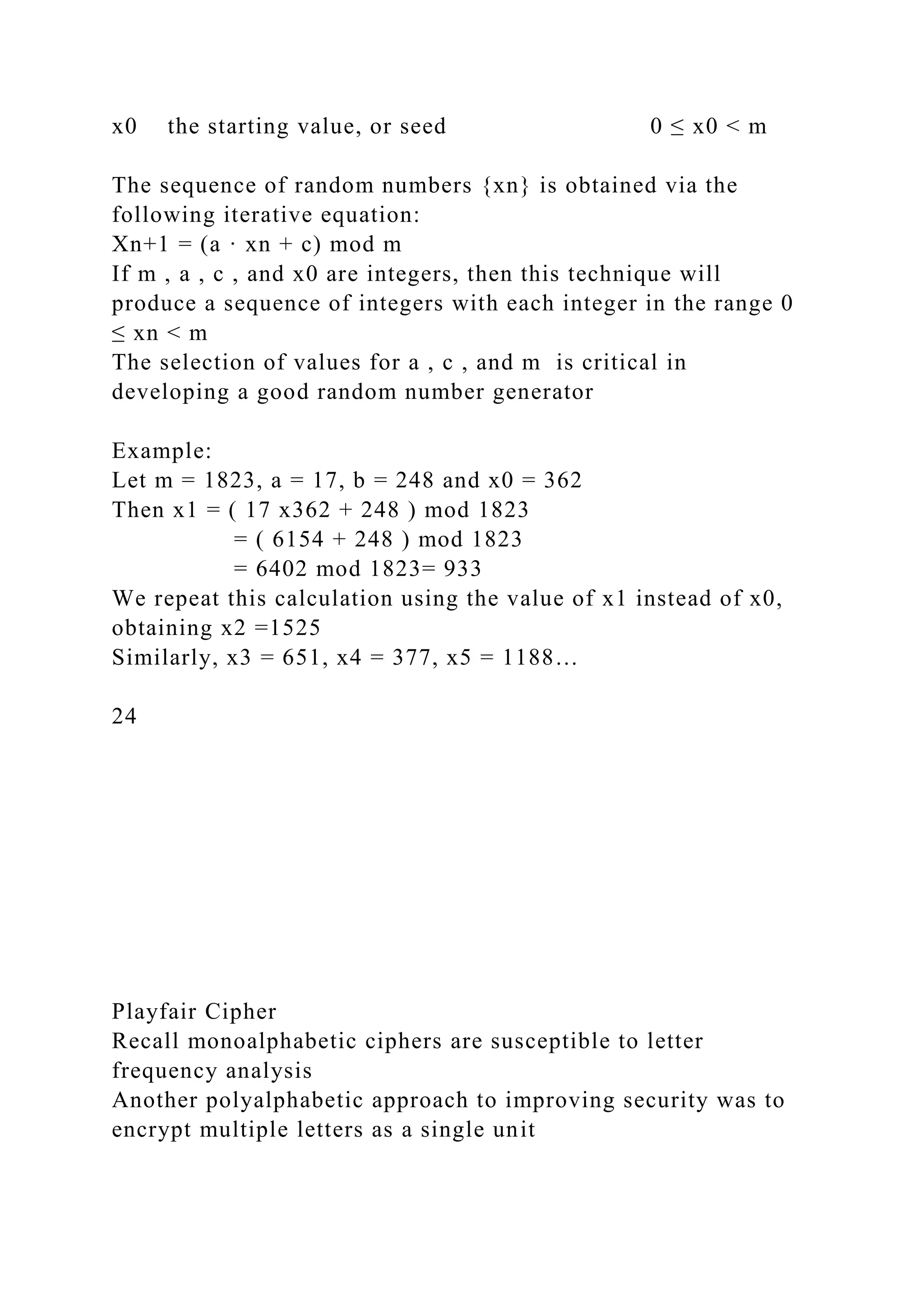
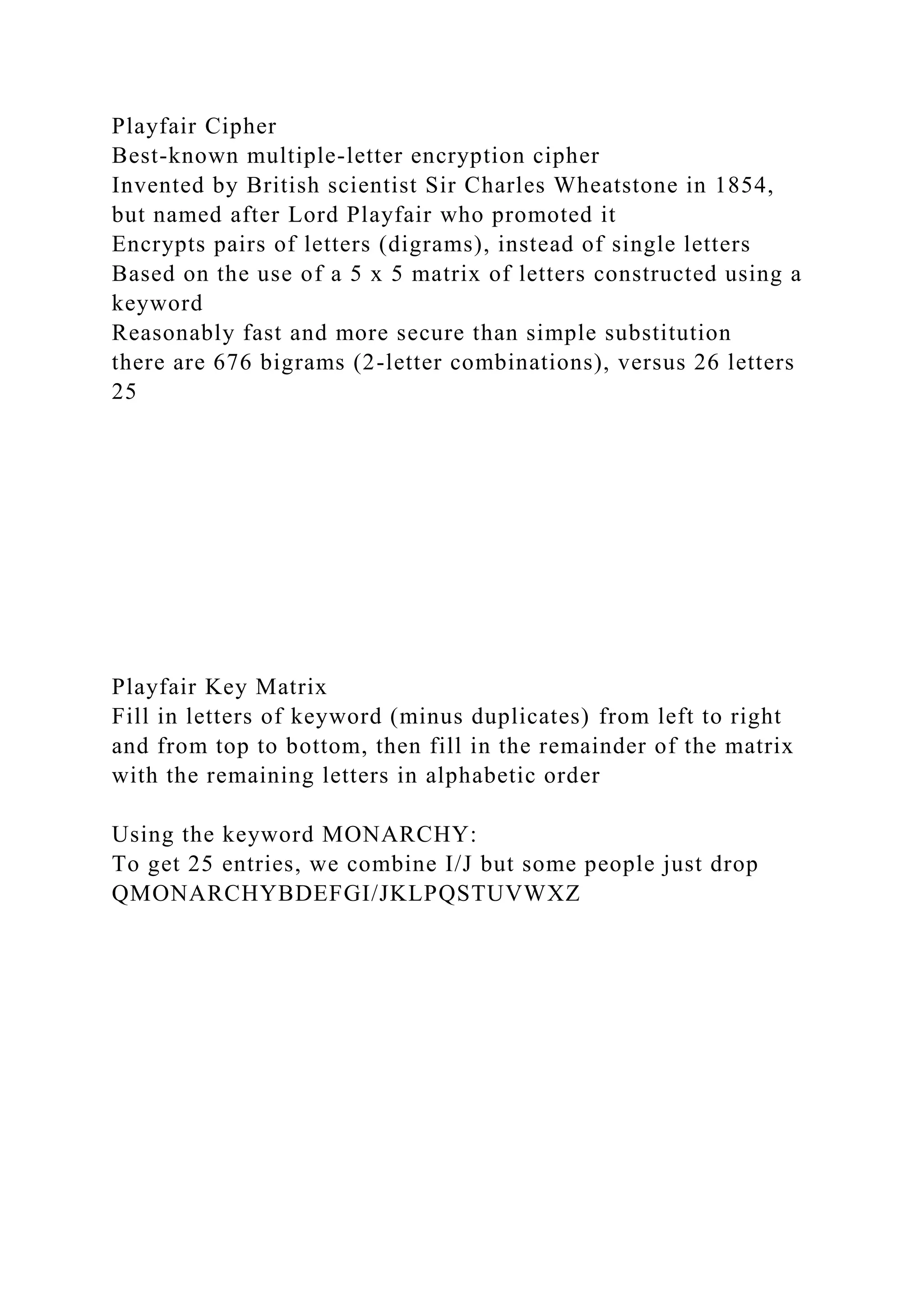
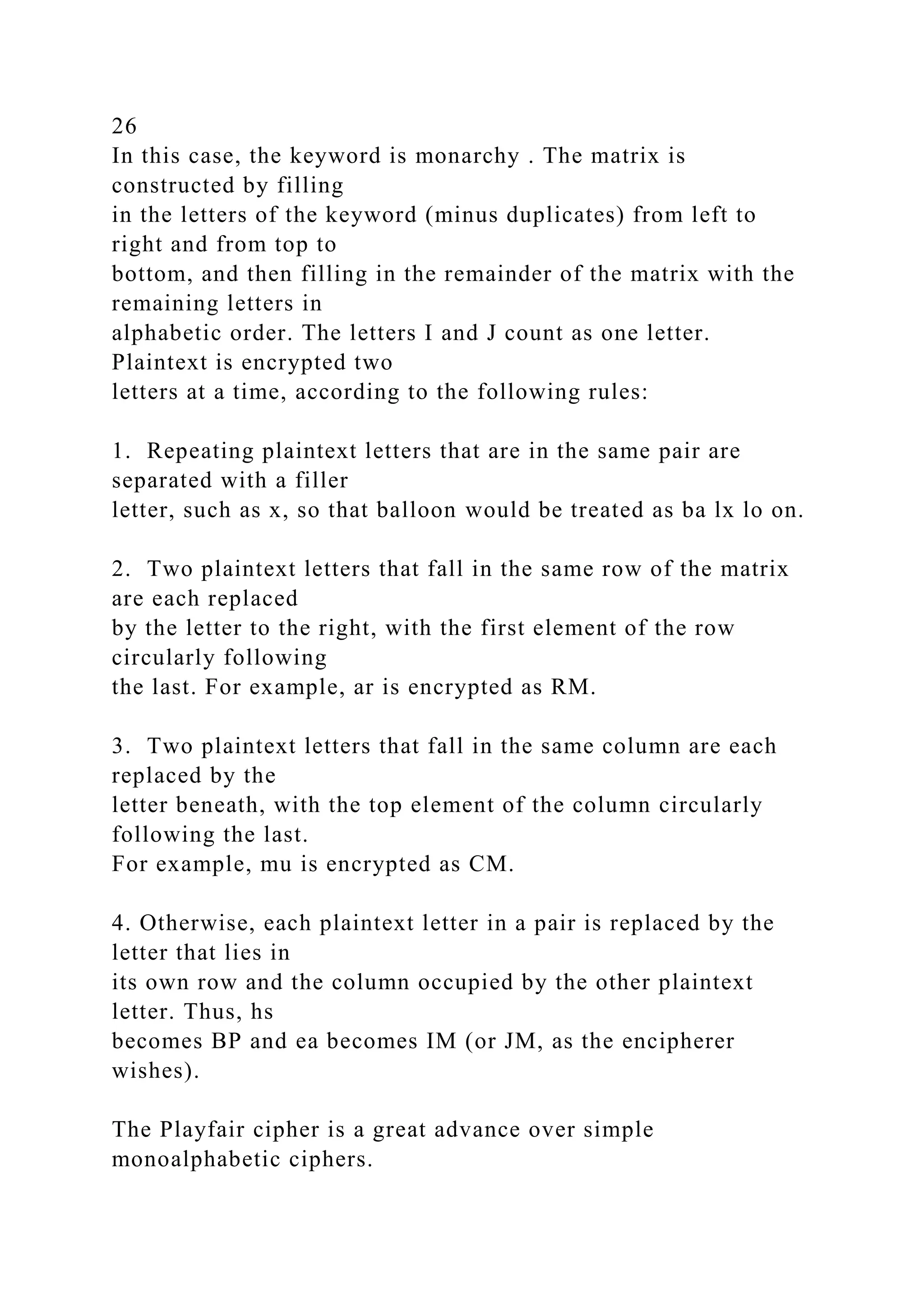
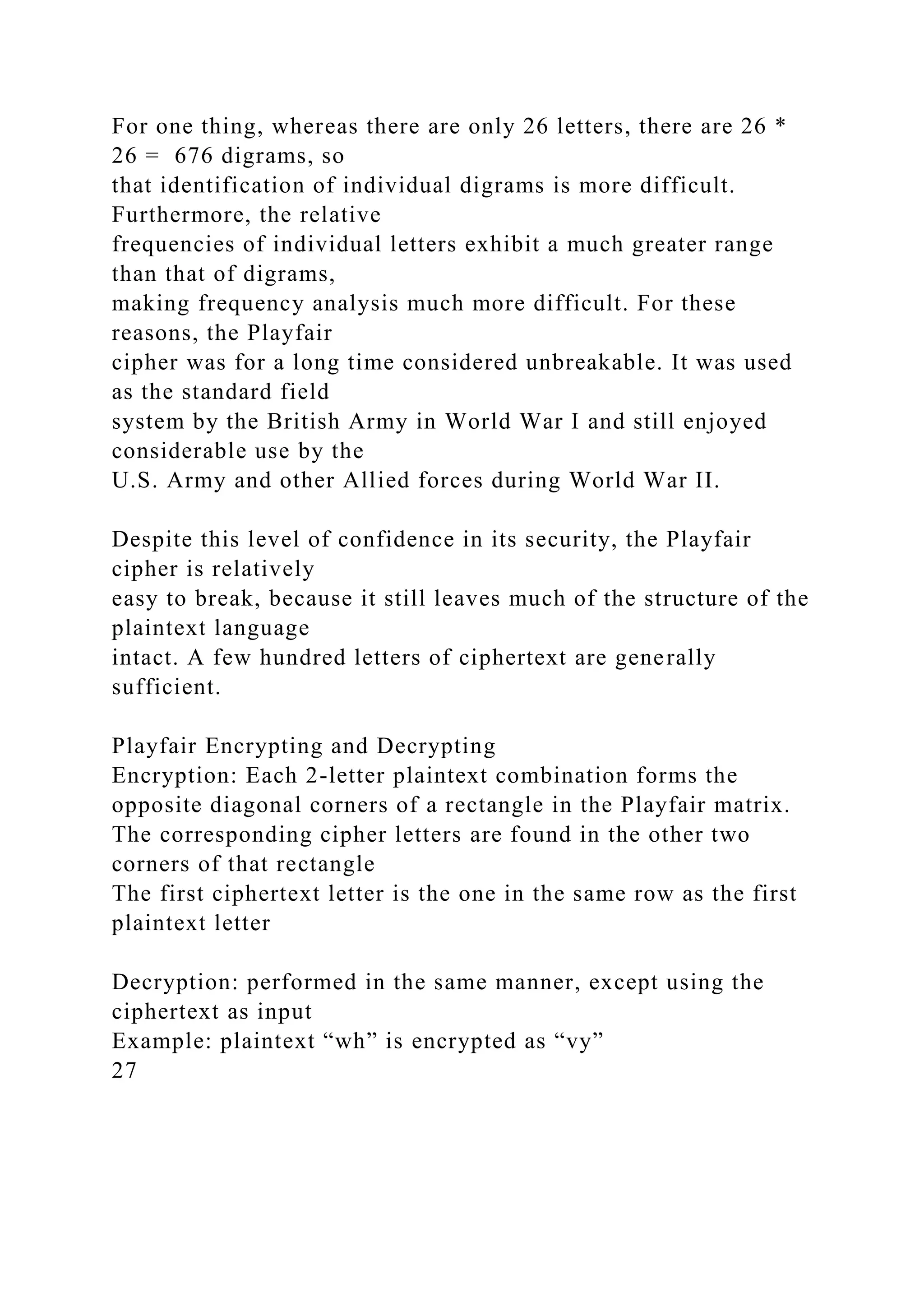
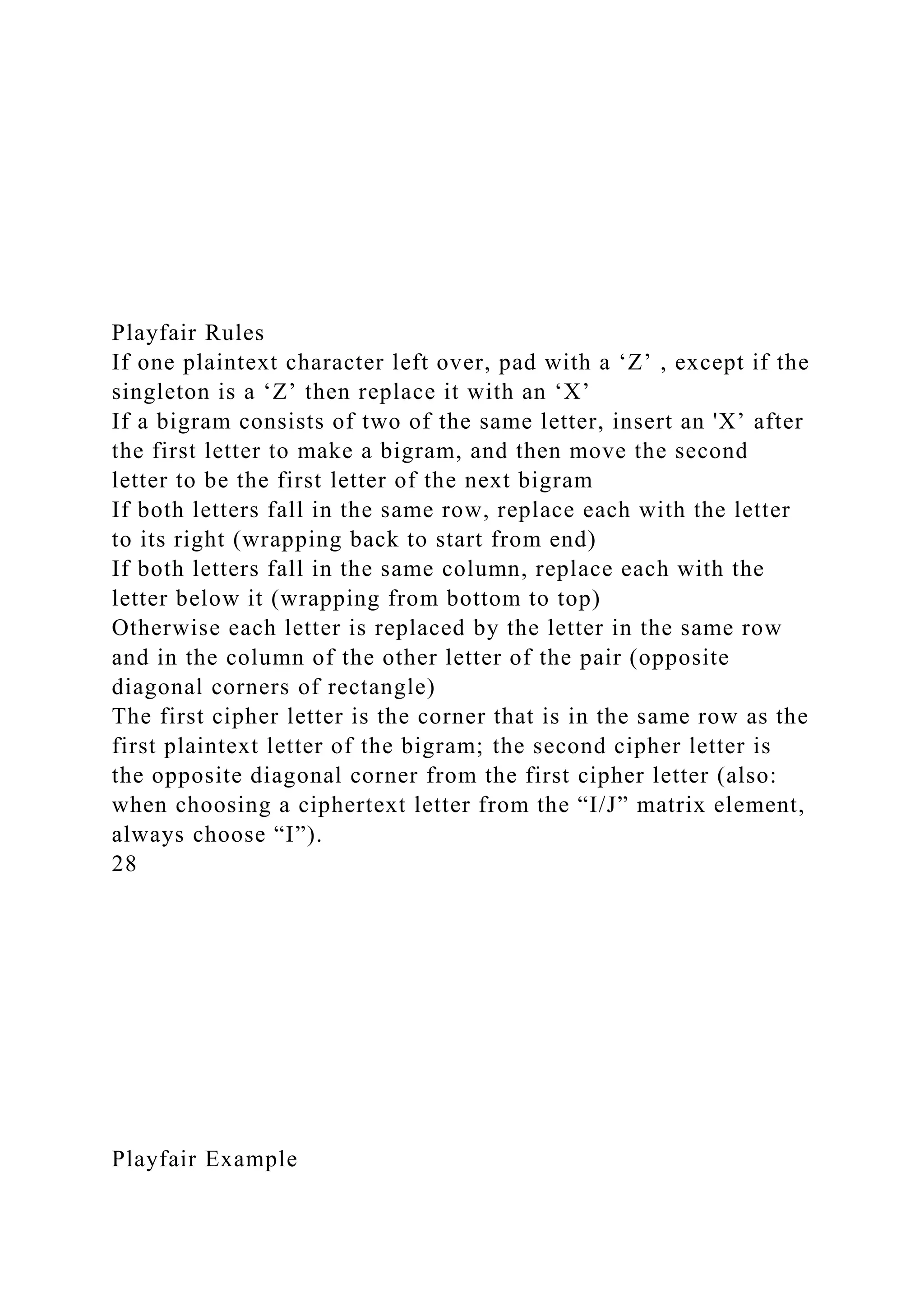
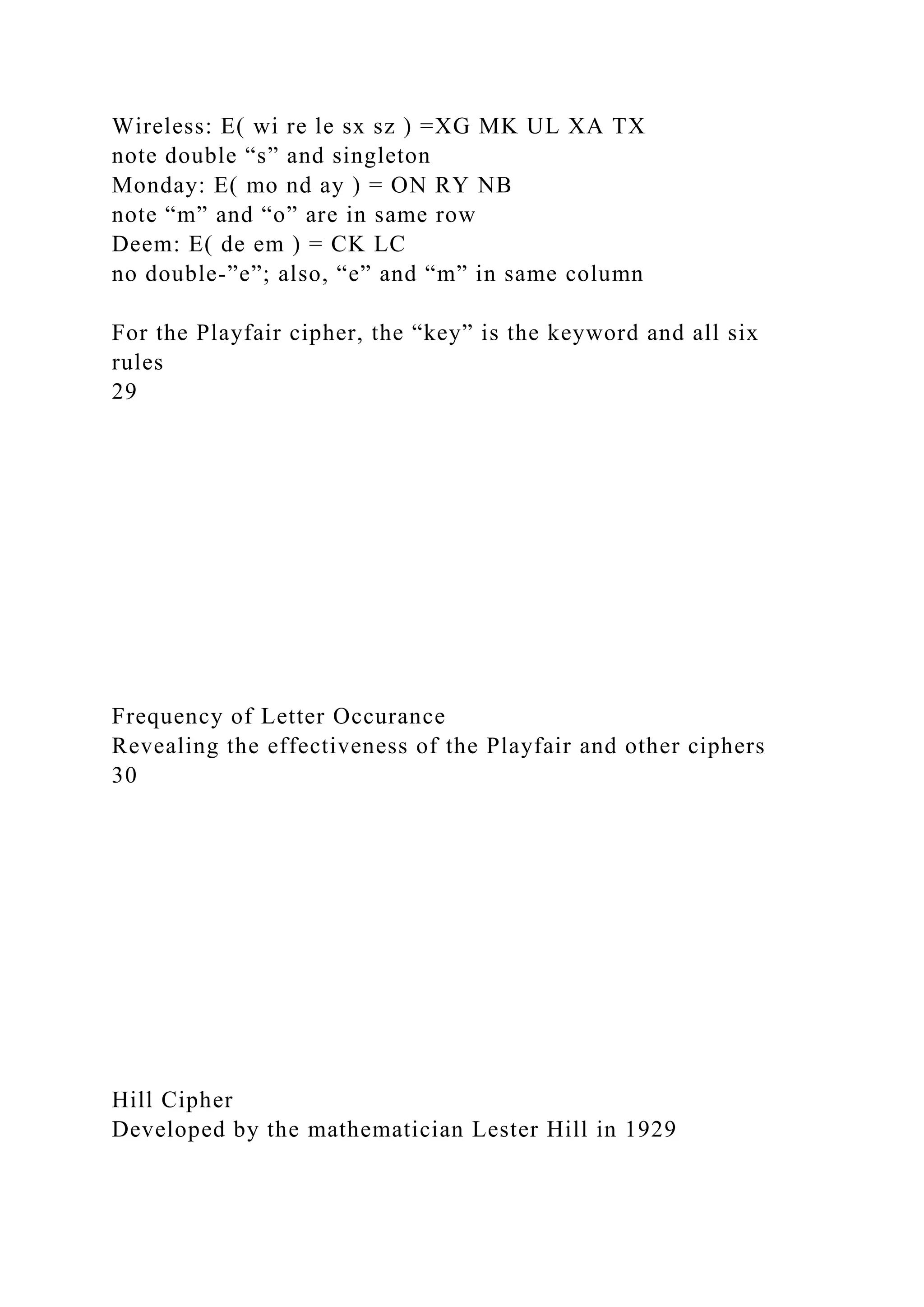
![Strength is that it hides single-letter frequencies
Features
Uses linear algebra (matrix multiplication)
Letters are encoded as numbers modulo 26
Blocks of letters are interpreted as vectors
Key is a random matrix of same dimension as vectors
Strong against a ciphertext-only attack but easily broken with a
known plaintext attack
31
Vector and Matrix
A vector is an ordered set of numbers
Example: [ 3, 27, 16 ]
Can be represented horizontally or vertically
The dot product of two vectors (same length) is simply the sum
of the products of each component
Example: [ 1, 5, 4 ] · [ 4, 2, 6 ] = (1)(4) + (5)(2) + (4)(6) = 4 +
10 + 24 = 38
A matrix is a rectangular arrangement of numerical values
a vector is a special case of matrix with at least one of whose
dimensions is 1
we can consider each row or column as a vector
We enclose matrices with square brackets
Examples:](https://image.slidesharecdn.com/securityconceptsdr-221108015128-ae719b02/75/Security-ConceptsDr-Y-ChuCIS3360-Security-in-Computing-docx-126-2048.jpg)
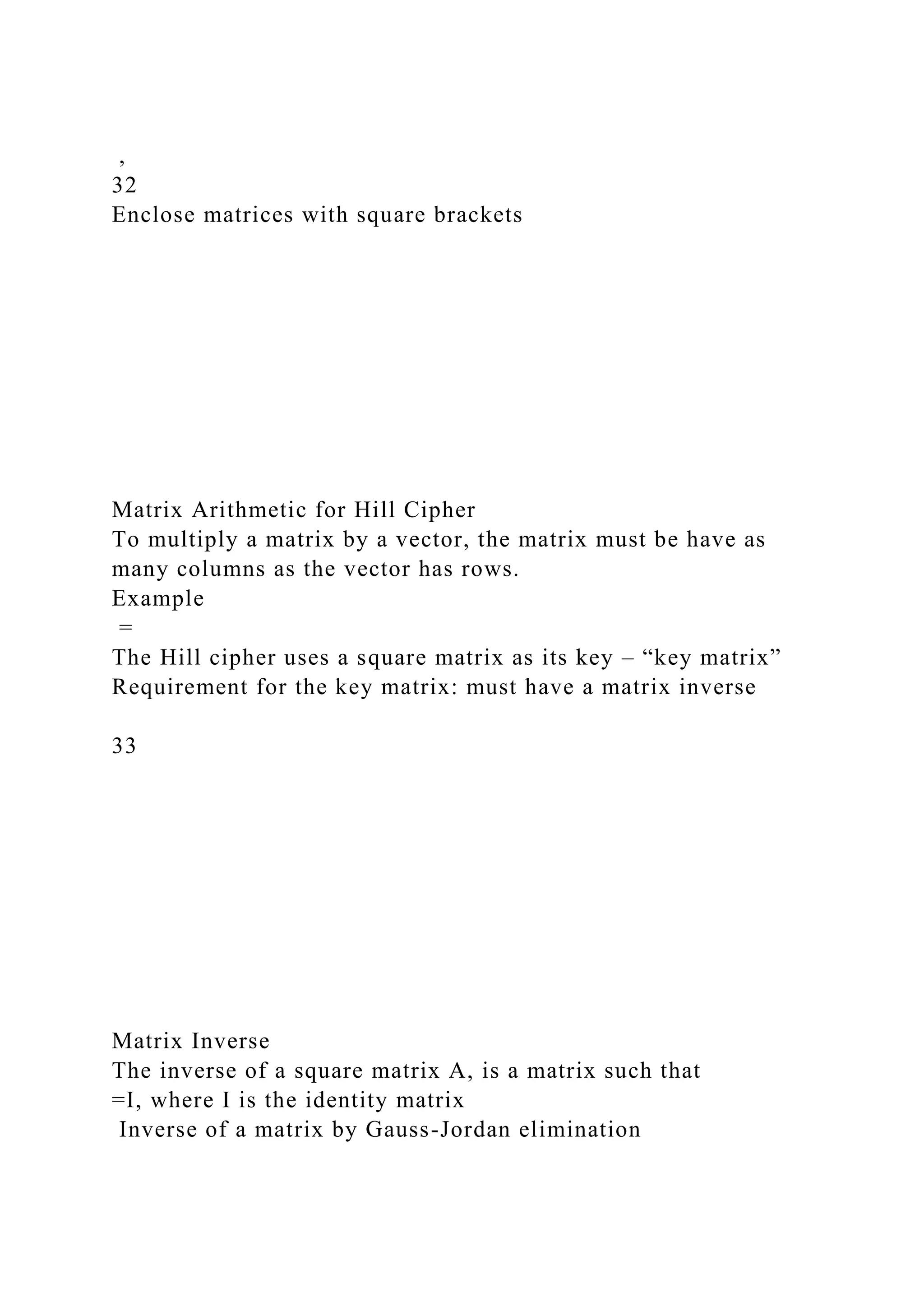
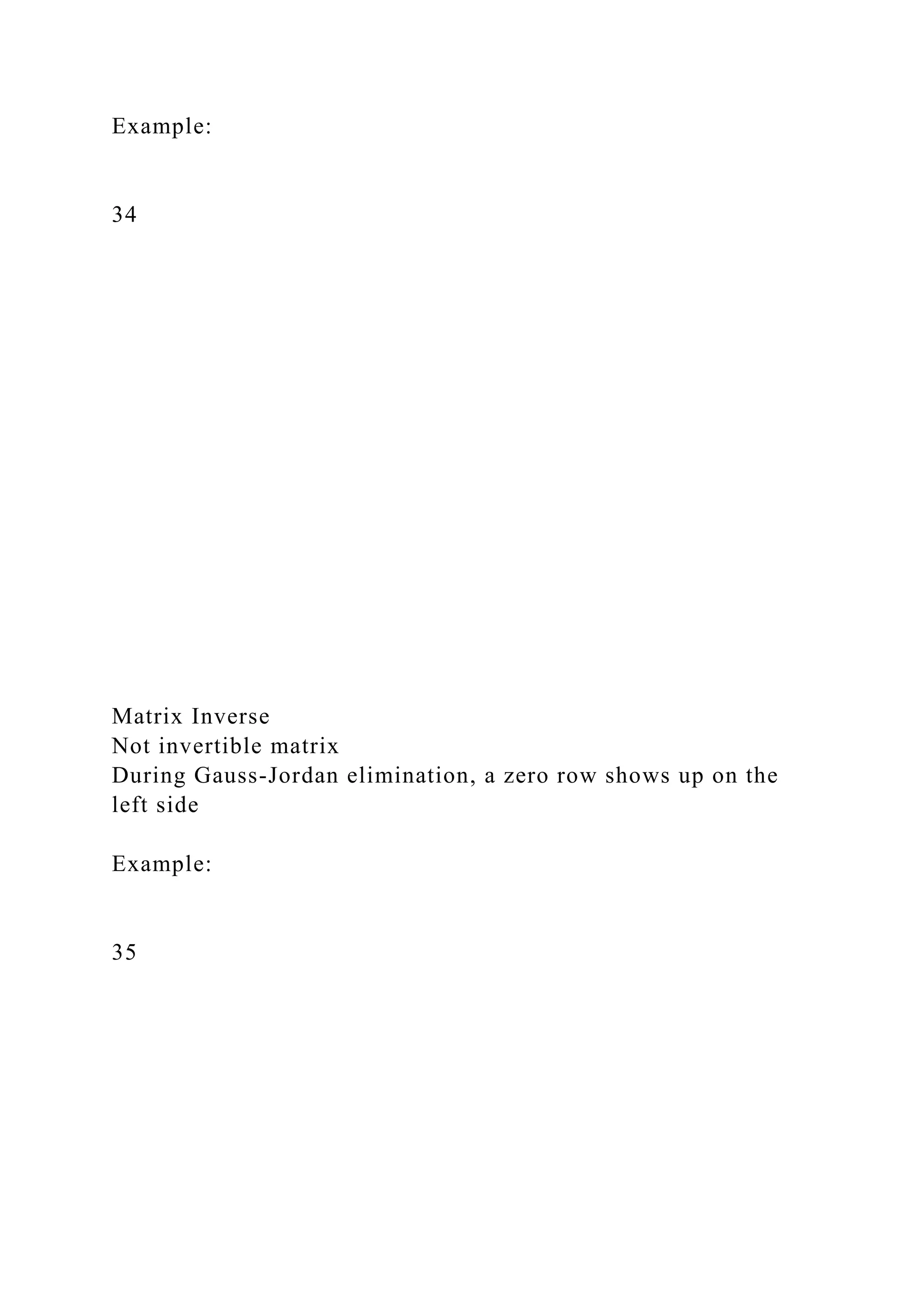
![Hill Cipher Encryption
The key matrix must have a matrix inverse so we can decrypt
what we encrypt
The key matrix , for any vector
To encrypt
To decrypt
Padding
Use the letter “x” to pad the last block if needed
Modular arithmetic
Matrix arithmetic modulo 26
36
Hill Cipher Example
M=“next”= [13, 4, 23, 19]
Since the matrix is 3x3, this time we split the message into
blocks of length 3 and encrypt each block separately.
Since the second block is just the letter “t” we must pad it to
make a full block; so,let’s just use “x” as the pad character.](https://image.slidesharecdn.com/securityconceptsdr-221108015128-ae719b02/75/Security-ConceptsDr-Y-ChuCIS3360-Security-in-Computing-docx-129-2048.jpg)
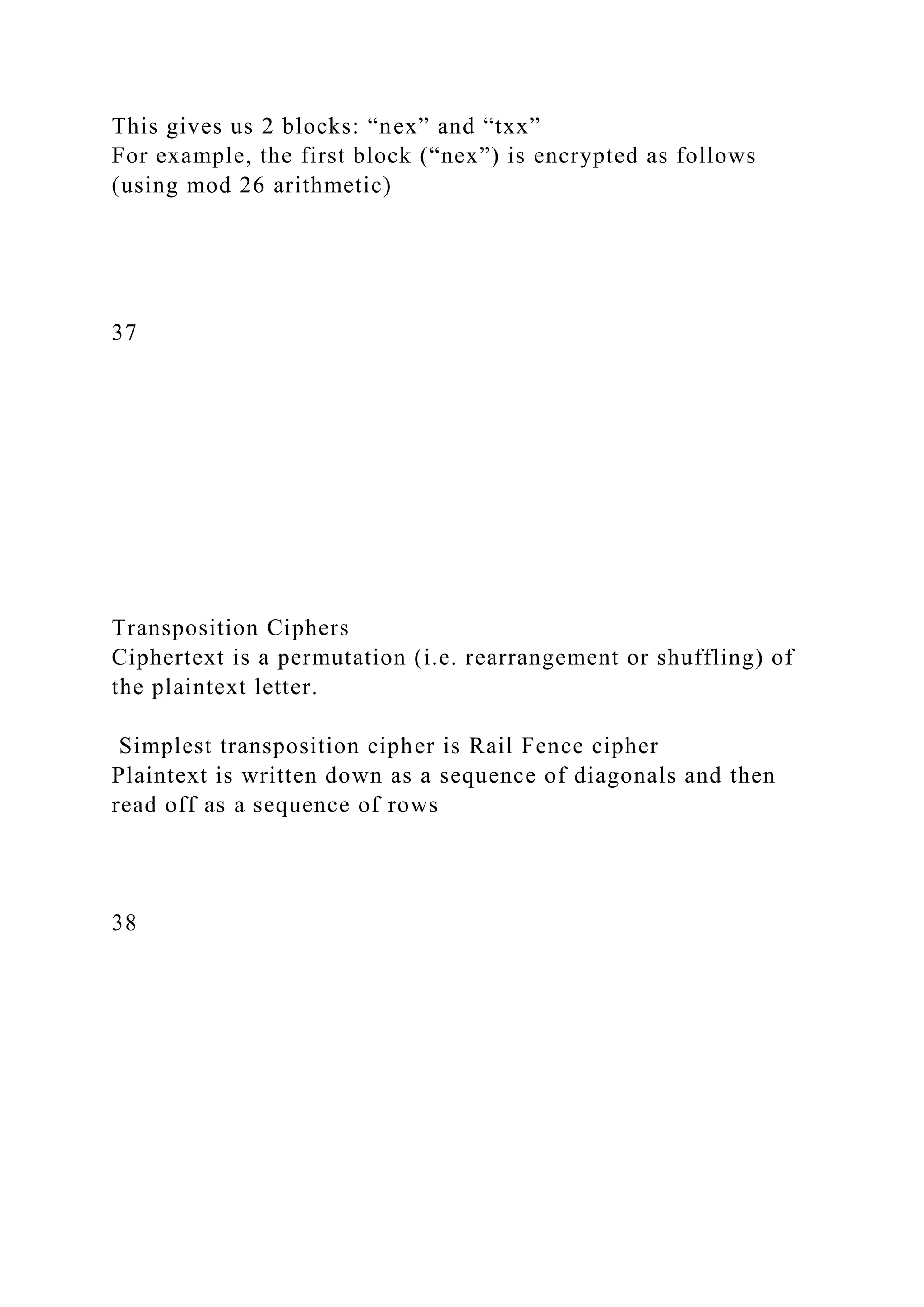
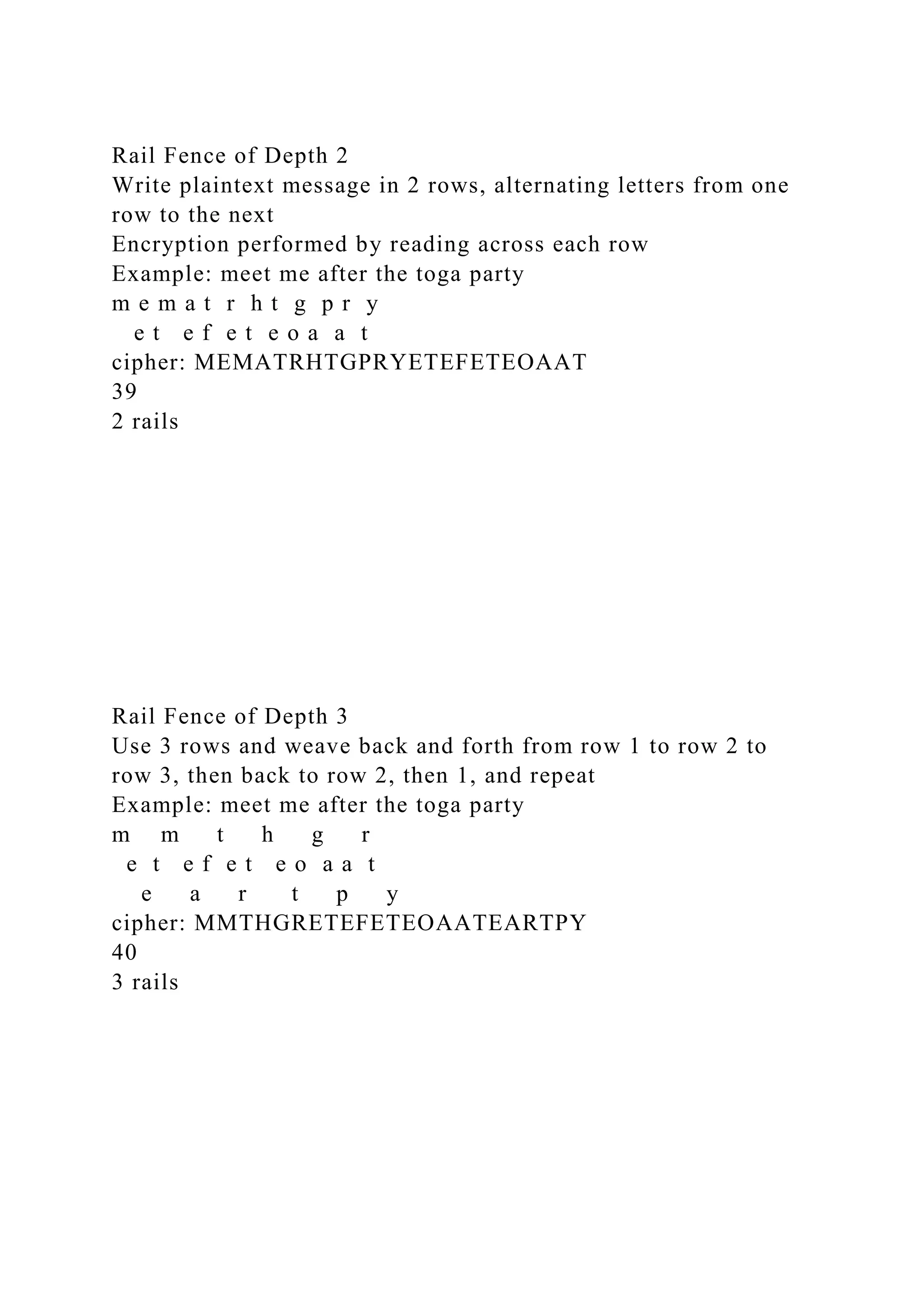

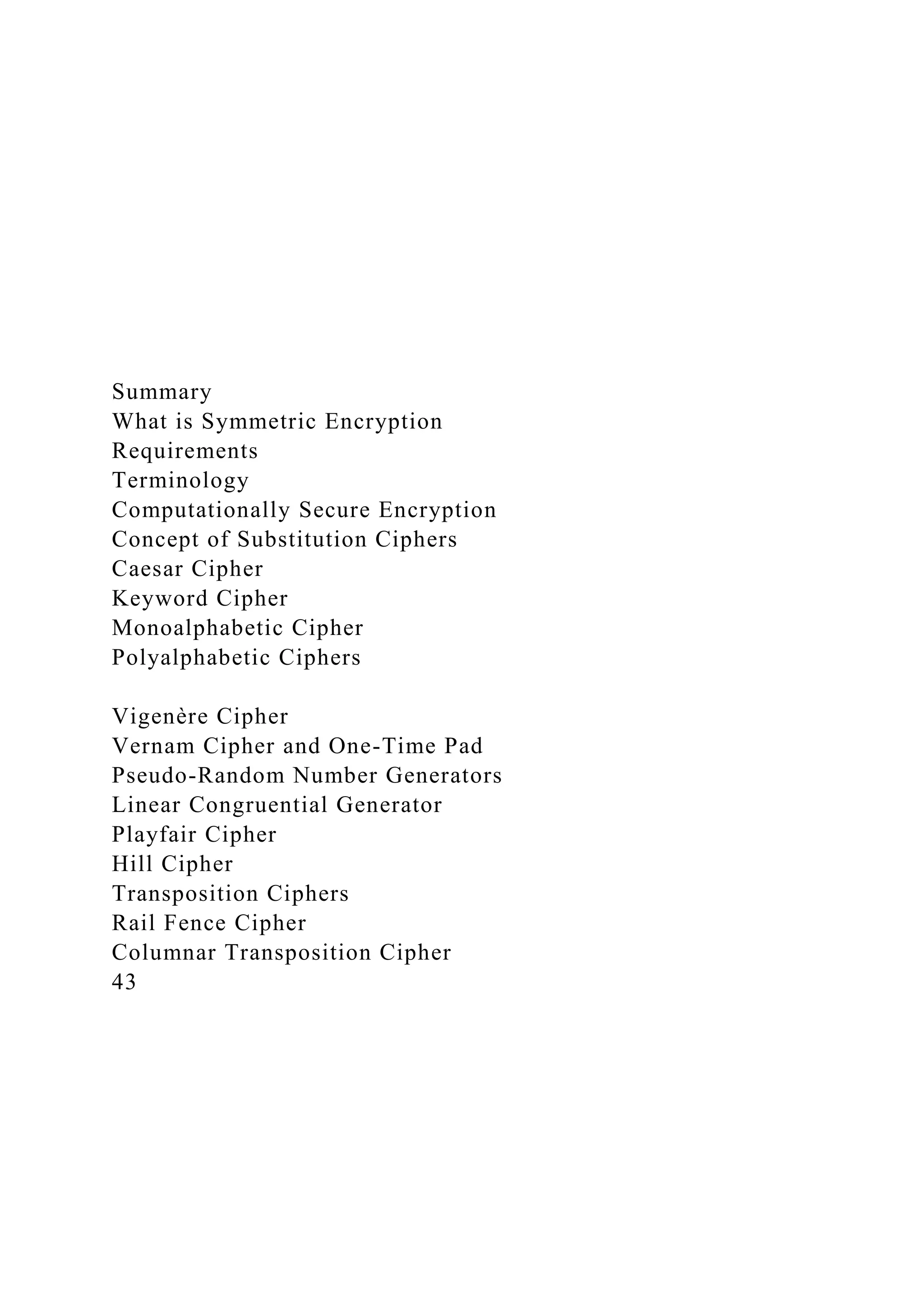
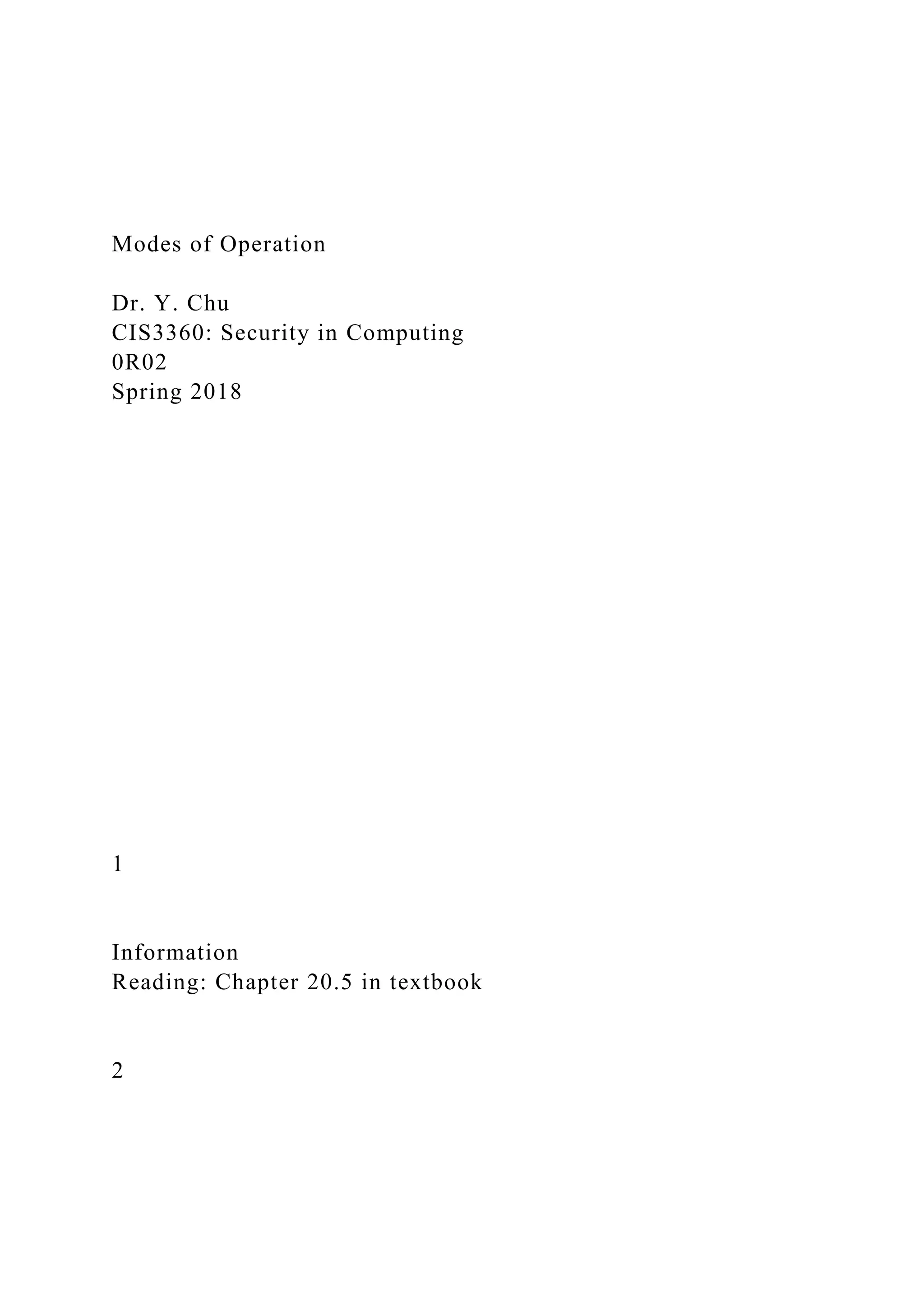
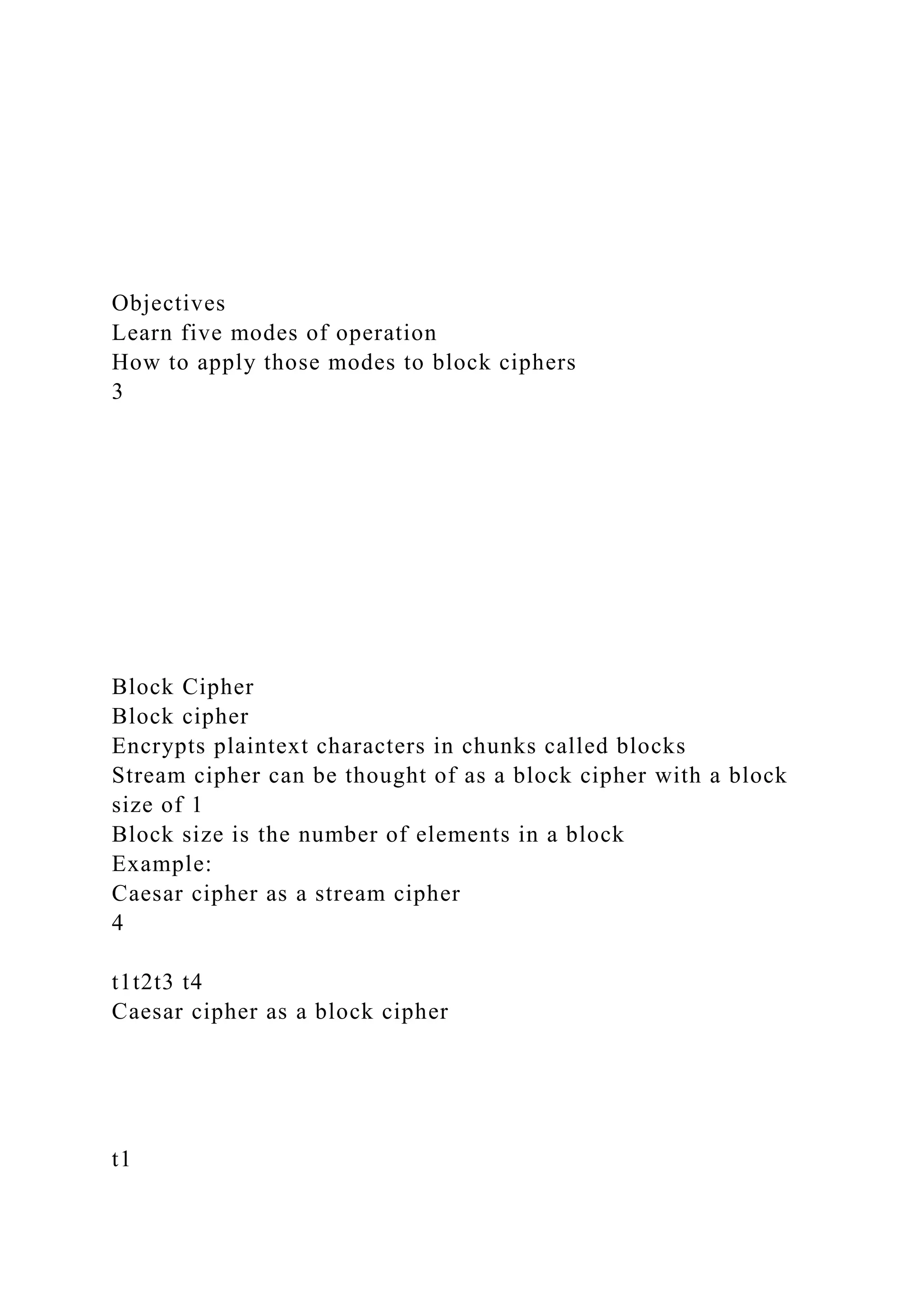
![t2
time
time
…
…
Blocks and Padding
A typical message is longer than 1 block
Message is split into blocks of the required size
If the last block is shorter than the block size, we must pad it to
make a complete block
Padding can be done in many different ways
Example
Use counts of the pad size
[ b1 b2 b3 5 5 5 5 5]
Here, we have 3 data bytes, plus 5 bytes of padding
We have been using X
Example: PETERPAN, with block size 5: PETER PANXX
We use it for Caesar, Vigenere, and Hill ciphers, but not for
Playfair which has its own rules
5](https://image.slidesharecdn.com/securityconceptsdr-221108015128-ae719b02/75/Security-ConceptsDr-Y-ChuCIS3360-Security-in-Computing-docx-136-2048.jpg)
